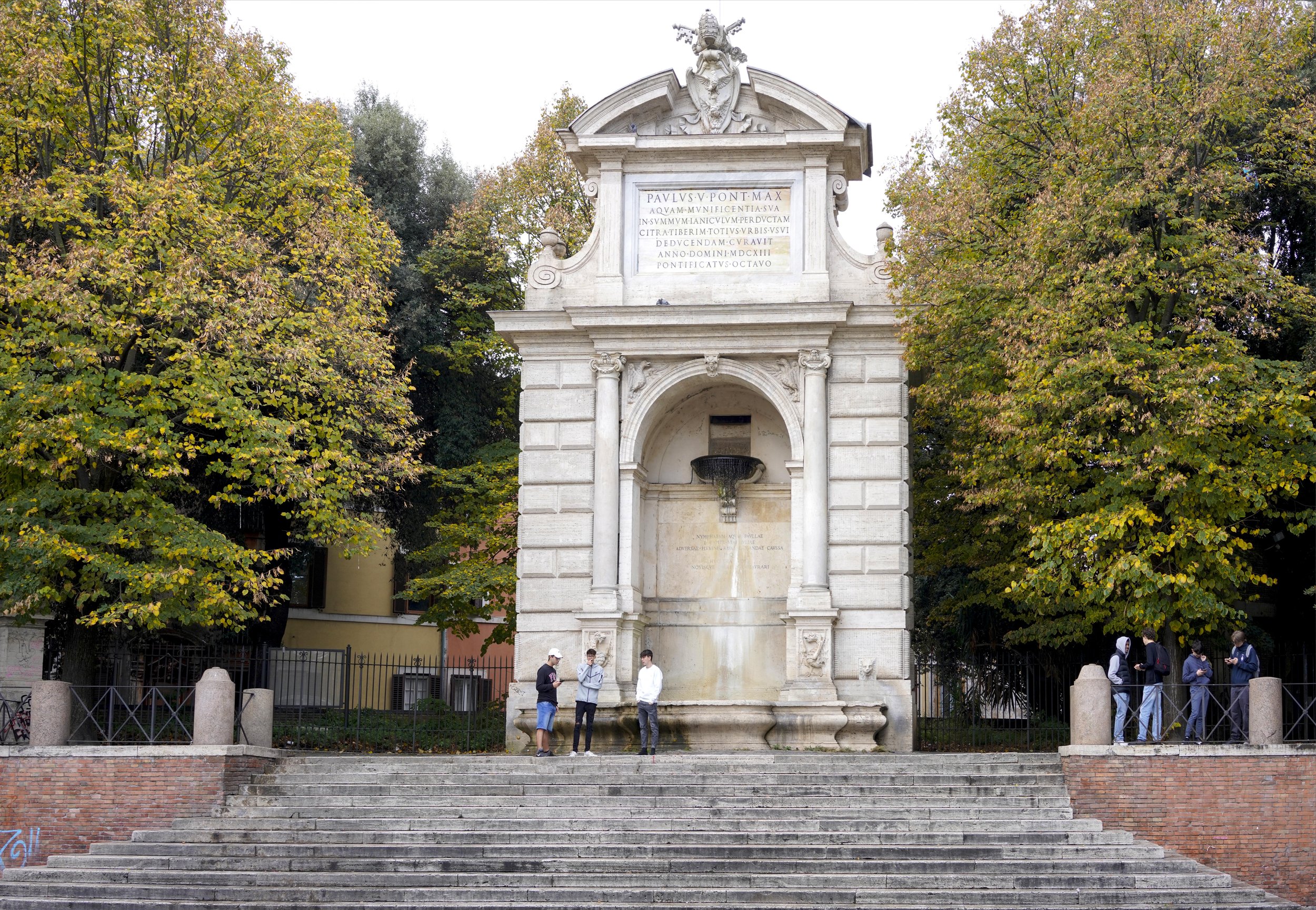
N.B. The best way to view these photos is to set your device so that you can scroll the pictures up and down rather than sideways. When scrolling up and down all information concerning the photos is shown below the picture. Unfortunately, moving the photos side to side will result sometimes in the photo being covered with information. Enjoy!

Pope Paul V (1550 – 1621), born Camillo Borghese, was known for being stern and unyielding, defending the privileges of the Church. In 1616 Pope Paul met with Galileo Galilei after Galileo had been warned not to hold or defend the heliocentric ideas of Copernicus (i.e., the Earth and planets revolve around the Sun at the center of the universe). In March 1616, Paul banned all books and letters advocating the Copernican system, as being "… altogether contrary to Holy Scripture.”

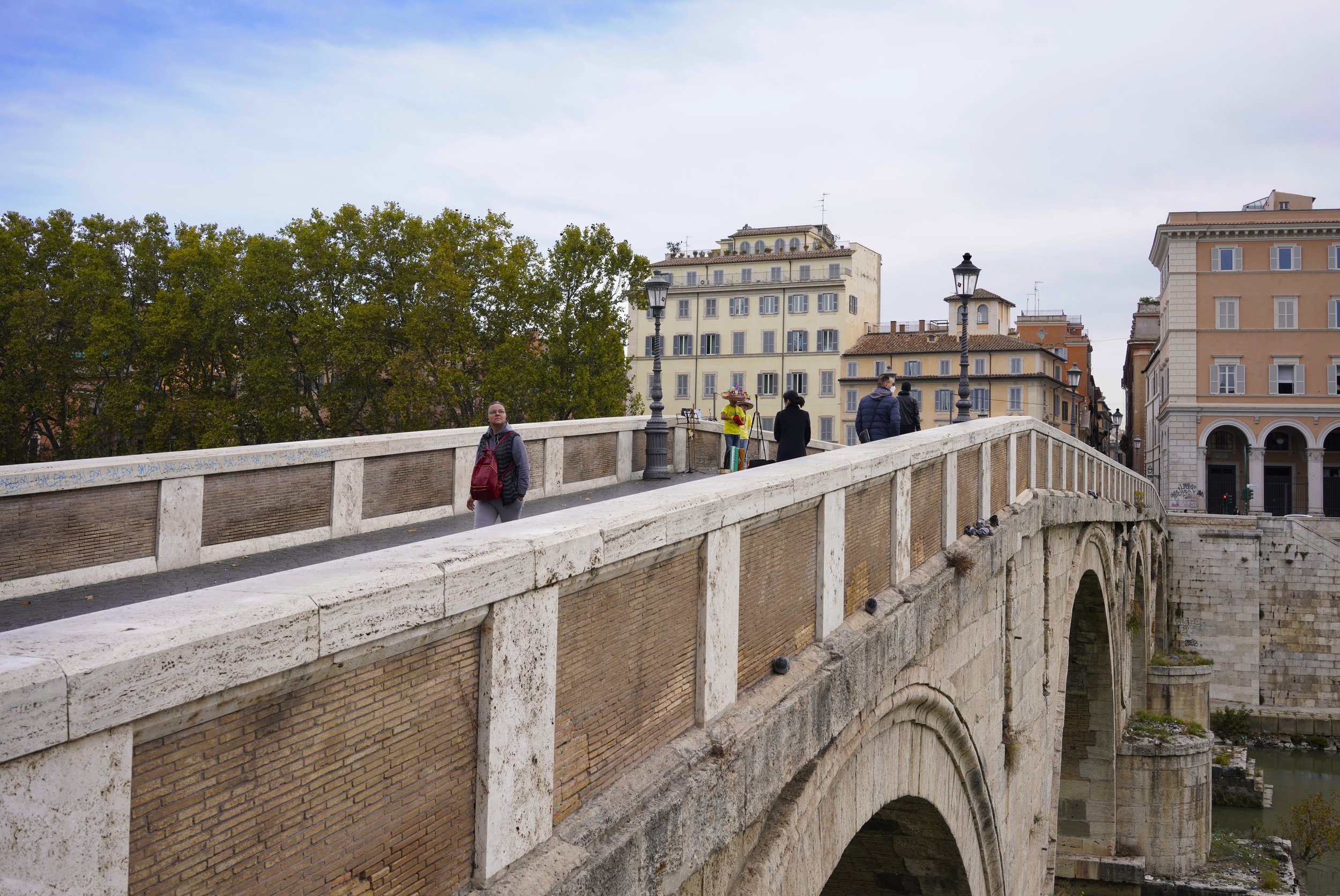
The Ponte Sisto connects the lively and popular Campo de' Fiori area of Rome (reached through via dei Pettinari) and via Giulia with Piazza Trilussa in Trastevere across the river, where many young Romans and tourists gather for an aperitivo and dinner each night. The Ponte Sisto replaced an ancient bridge, the Pons Aurelius, which was located in the same place.
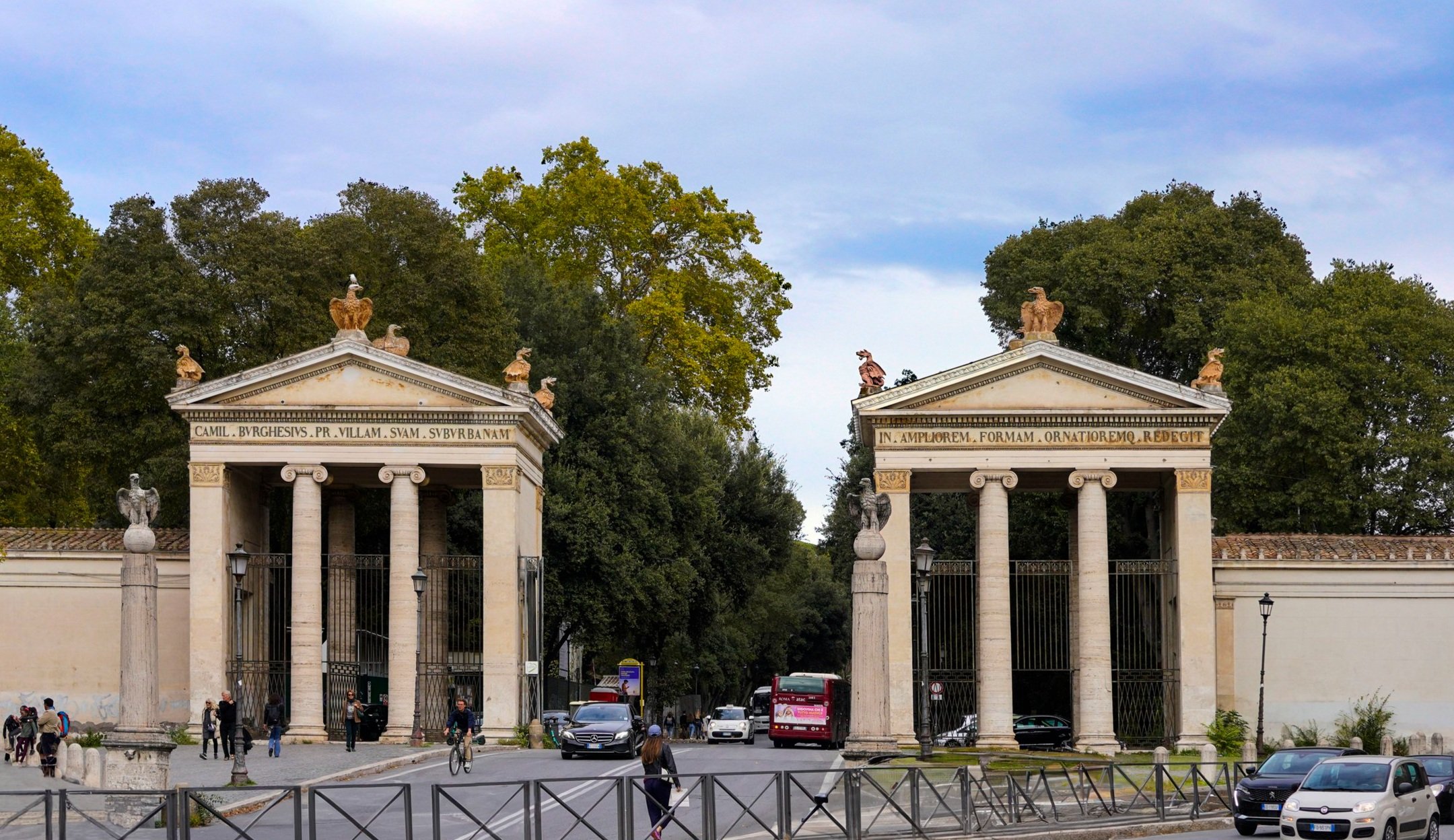
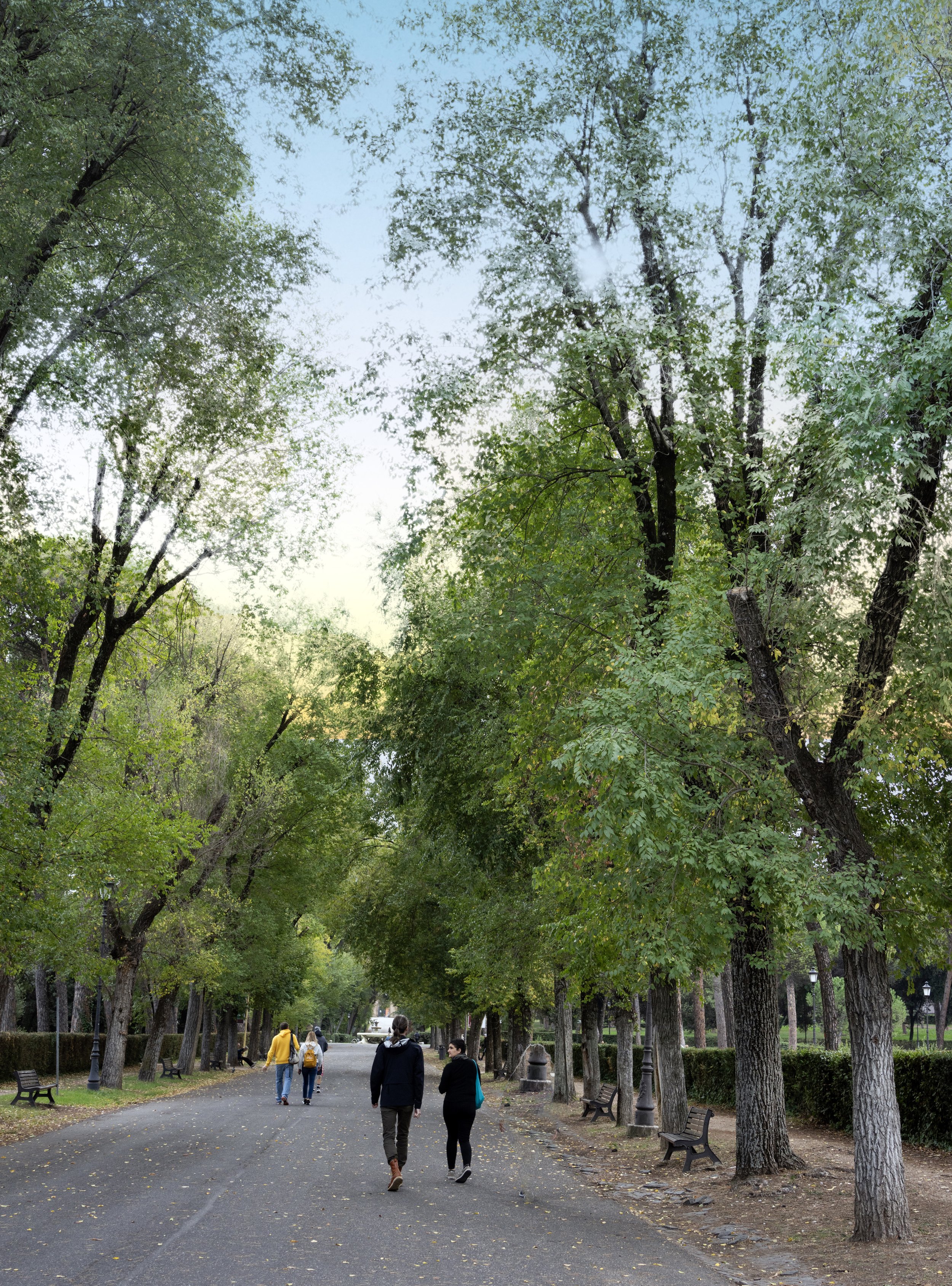
In 1605, Cardinal Scipione Borghese, nephew of Pope Paul V and patron of Bernini, began turning this former vineyard into the most extensive gardens built in Rome since Antiquity. The vineyard's site is identified with the gardens of Lucullus, the most famous in the late Roman republic.
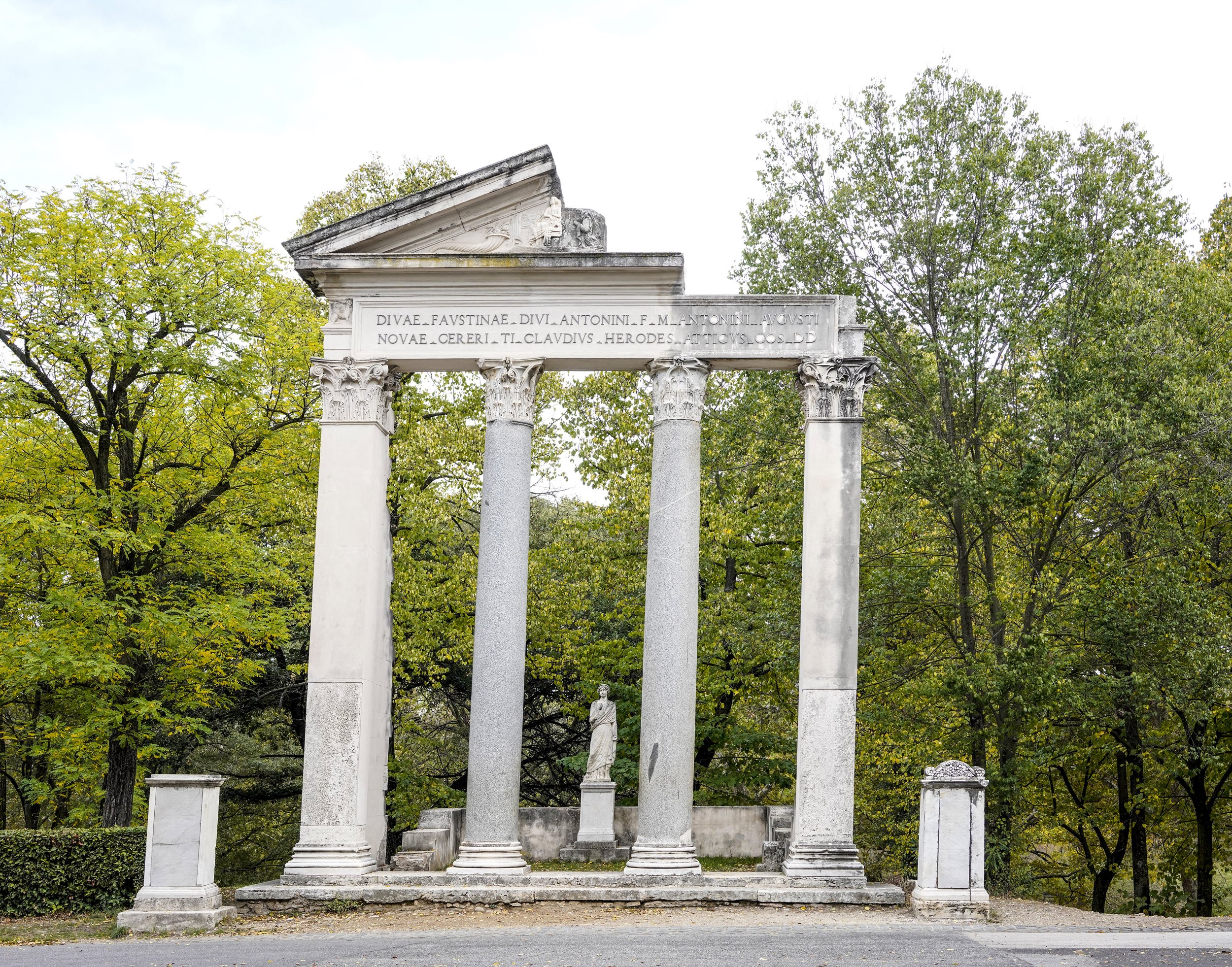
The Temple of Antoninus and Faustina was built as part of the renewal initiated by Marcantonio Borghese. The structure is composed of fragments of ancient architecture from the Roman Forum, combined with modern parts to imitate a ruin. The ancient statue of Faustina stands behind the facade. Antoninus and Faustina were exemplars of conjugal harmony, to whom newlyweds were directed to pray that they might live up to their example.
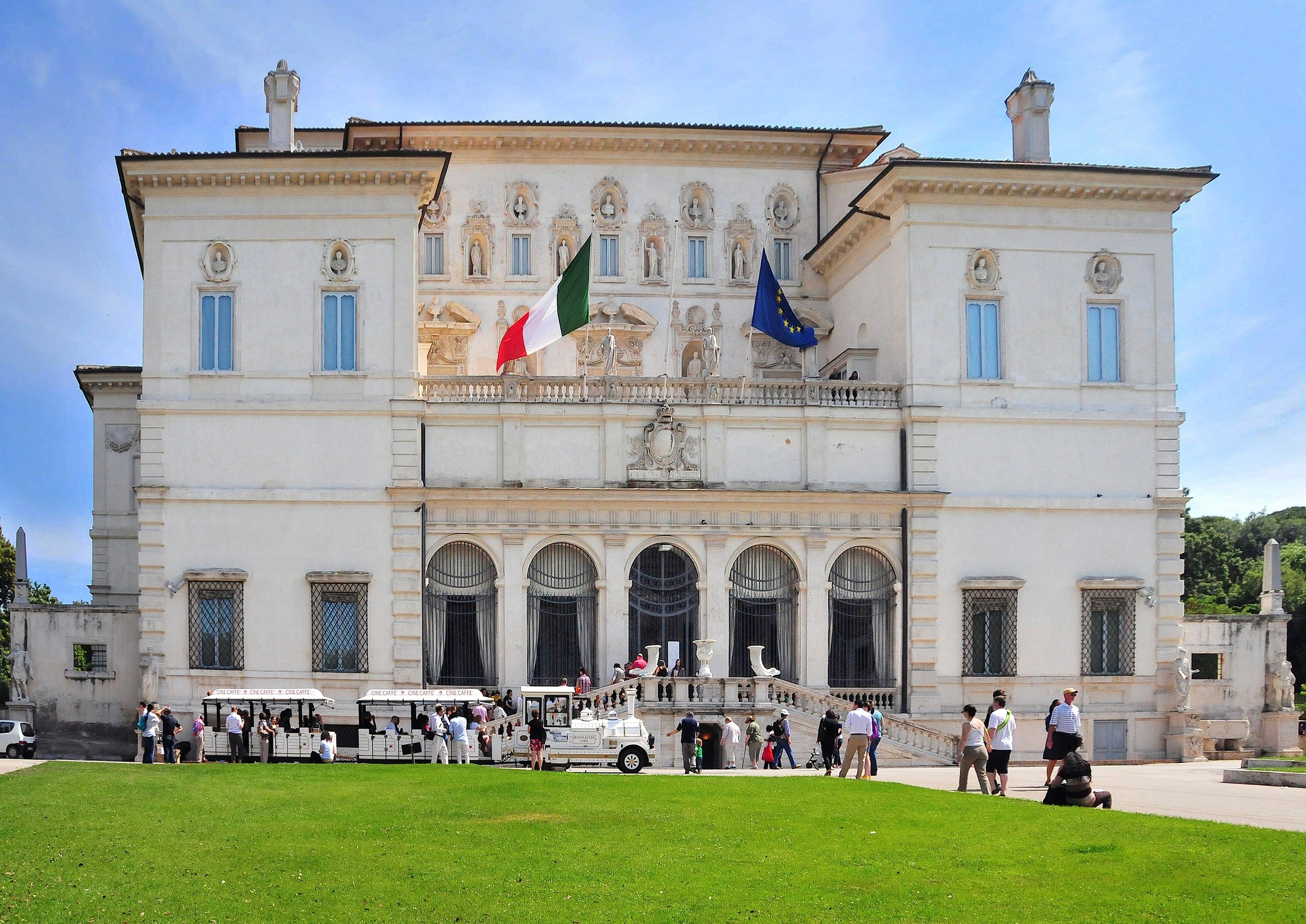
The Galleria Borghese houses a considerable part of the Borghese collection of paintings, sculpture and antiquities, begun by Cardinal Scipione Borghese, the nephew of Pope Paul V (reign 1605–1621). Scipione commissioned sculptures that would come to define the Baroque movement. His splendid gardens were entered through a gate flanked by term figures carved by Pietro and Gianlorenzo Bernini.
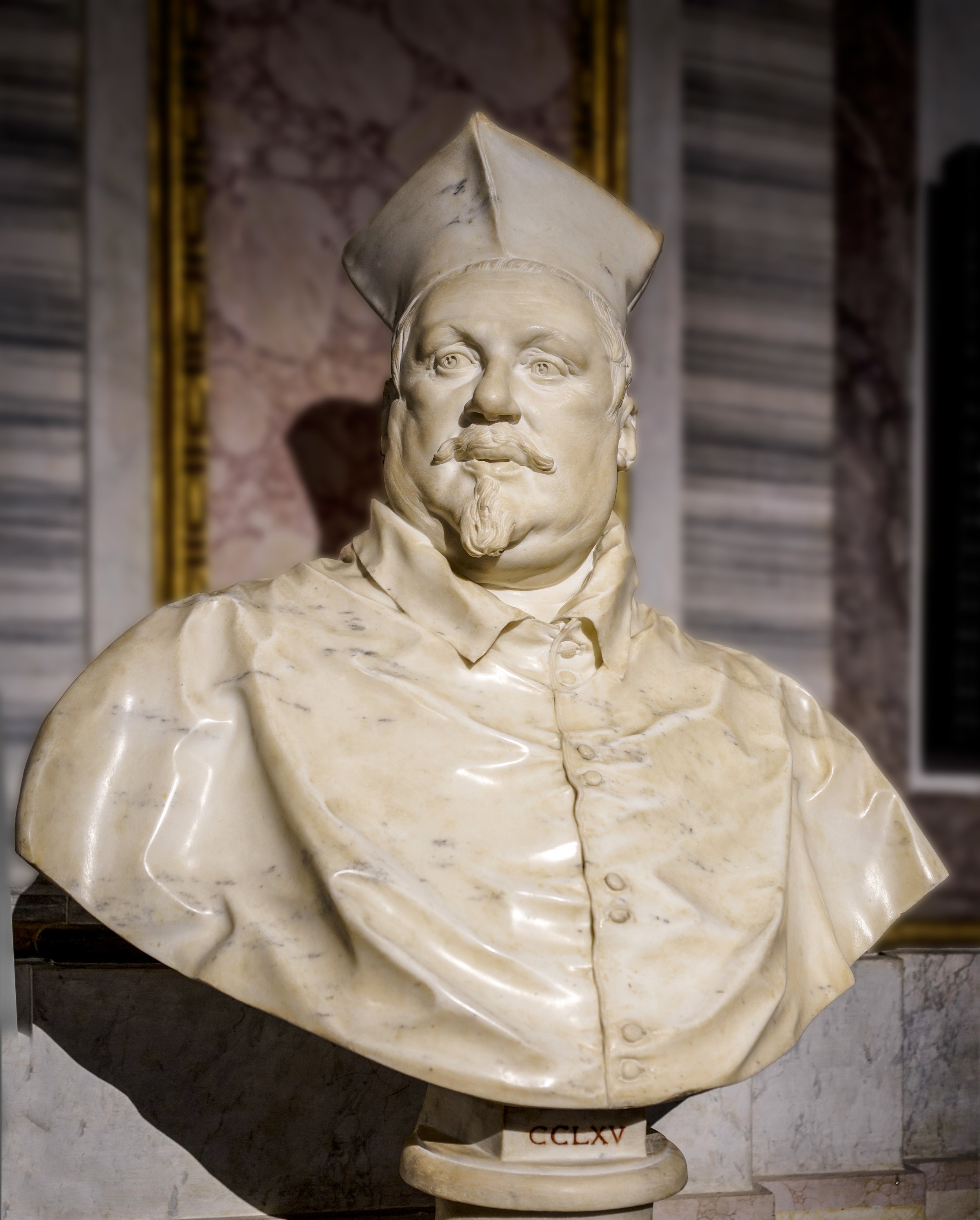
In this first of two busts commissioned by the Cardinal Borghese, Bernini shows the Cardinal as he looks to his right and opens his lips as if to begin speaking. Rather than a static figure in which the sitter's essence is captured by abstracting his character, Bernini has captured a specific gesture to create a likeness that is psychological as well external. The sense of movement is further emphasized by the dramatic creases and folds line his robe, suggesting the movement of his body.
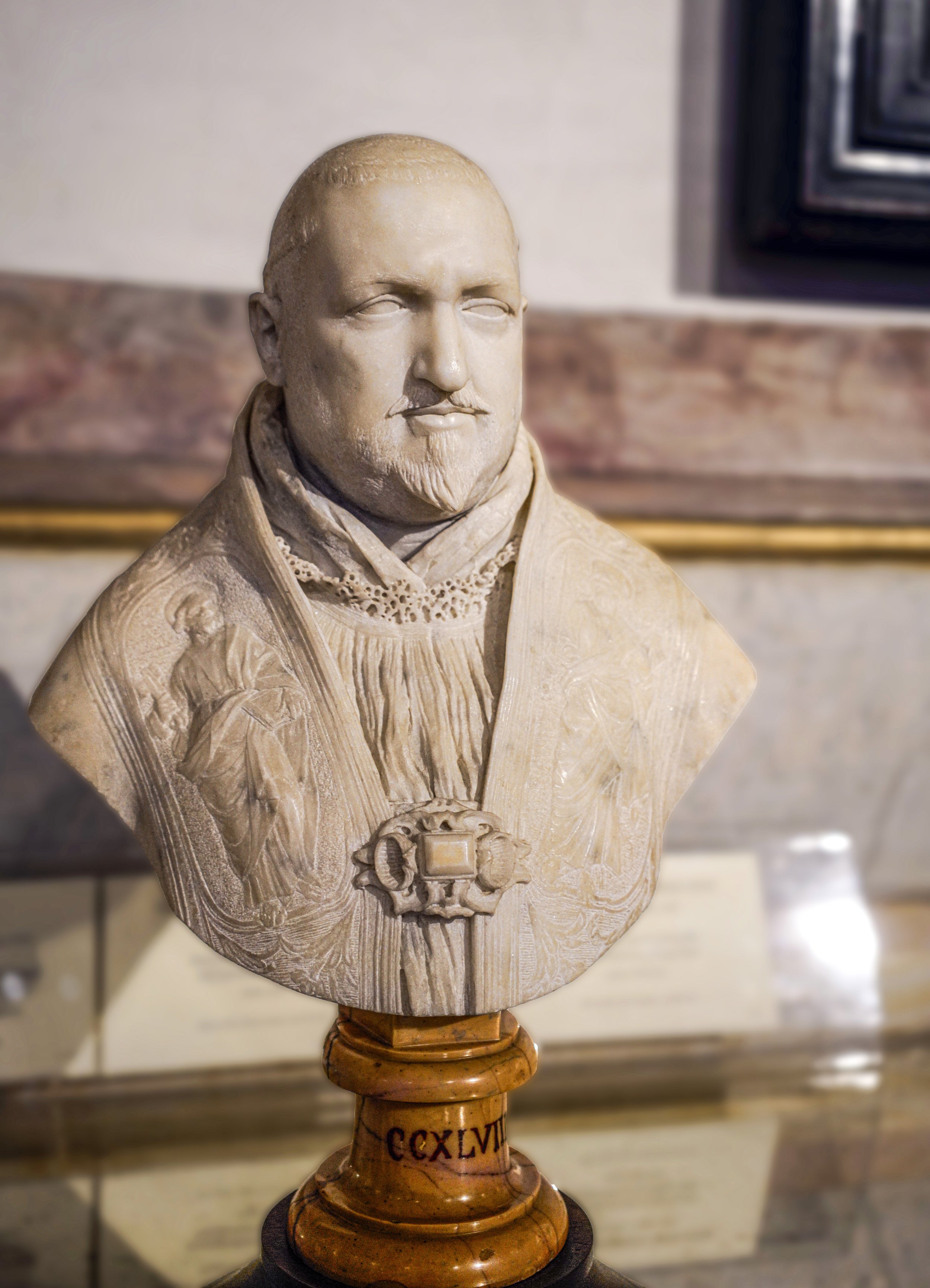
Bernini was just 23 years old when he received one of his first commissions to make a full-sized bust of Pope Paul V, the recently deceased uncle of his most important patron, Cardinal Scipione Borghese. Bernini depicts the pope almost bareheaded, his hair styled in the "tonsure of St. Peter," a practice that signified the renunciation of worldly fashion. Pope Paul V gazes at the viewer with a natural expression, his face individualized by the slight turn of his head, the delicate contours of his forehead and the tiny wrinkles carved around his eyes.
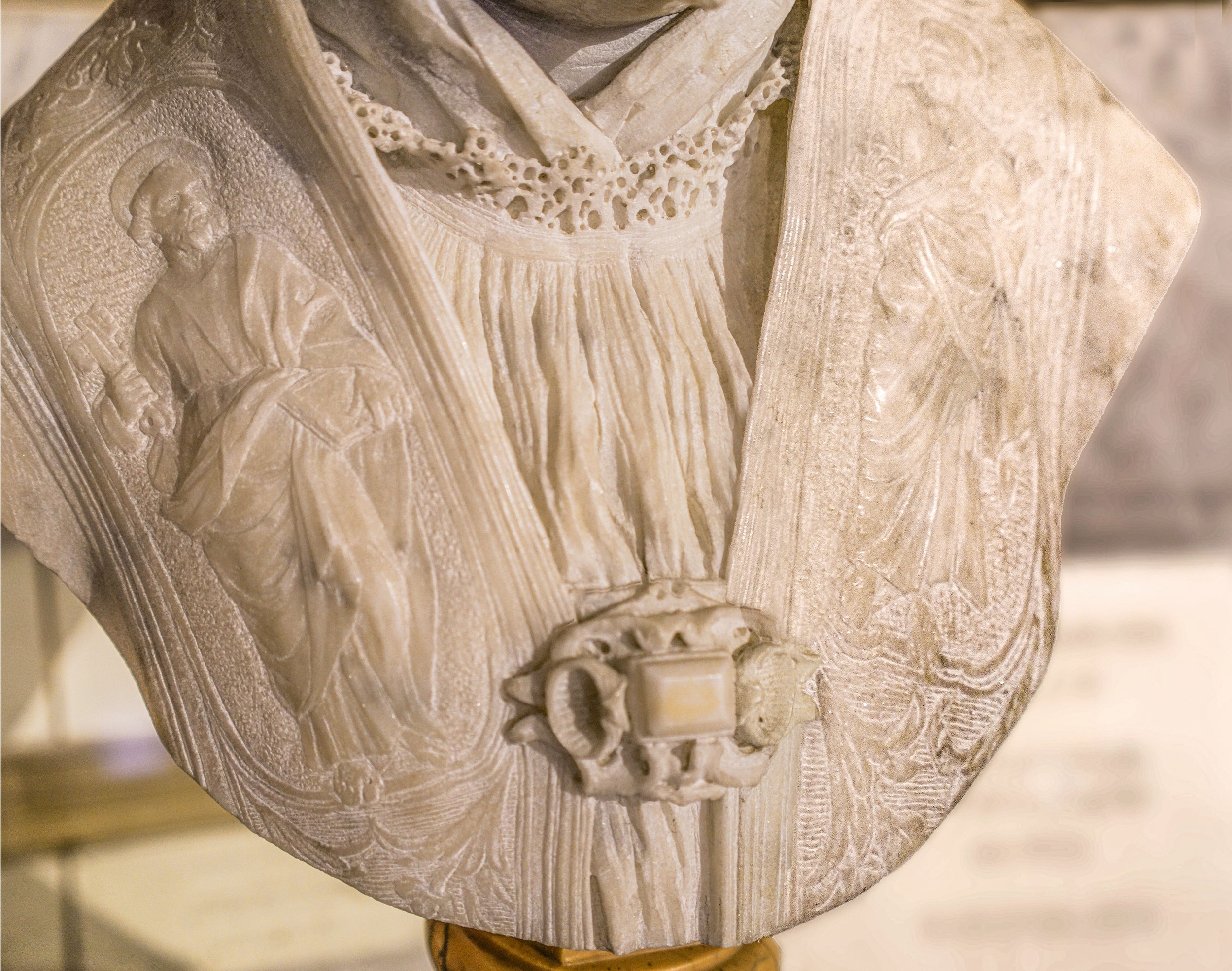
The thick cope covering Pope Paul’s shoulders is richly decorated with embroidery of the patron saints of Rome, the Apostles Peter (holding his keys and a book [left]) and Paul (holding the sword of his martyrdom and a book [right]). Bernini manages to imply movement by the twisted lace on the collar and the curving of some of the strands flowing downward from the lace collar.
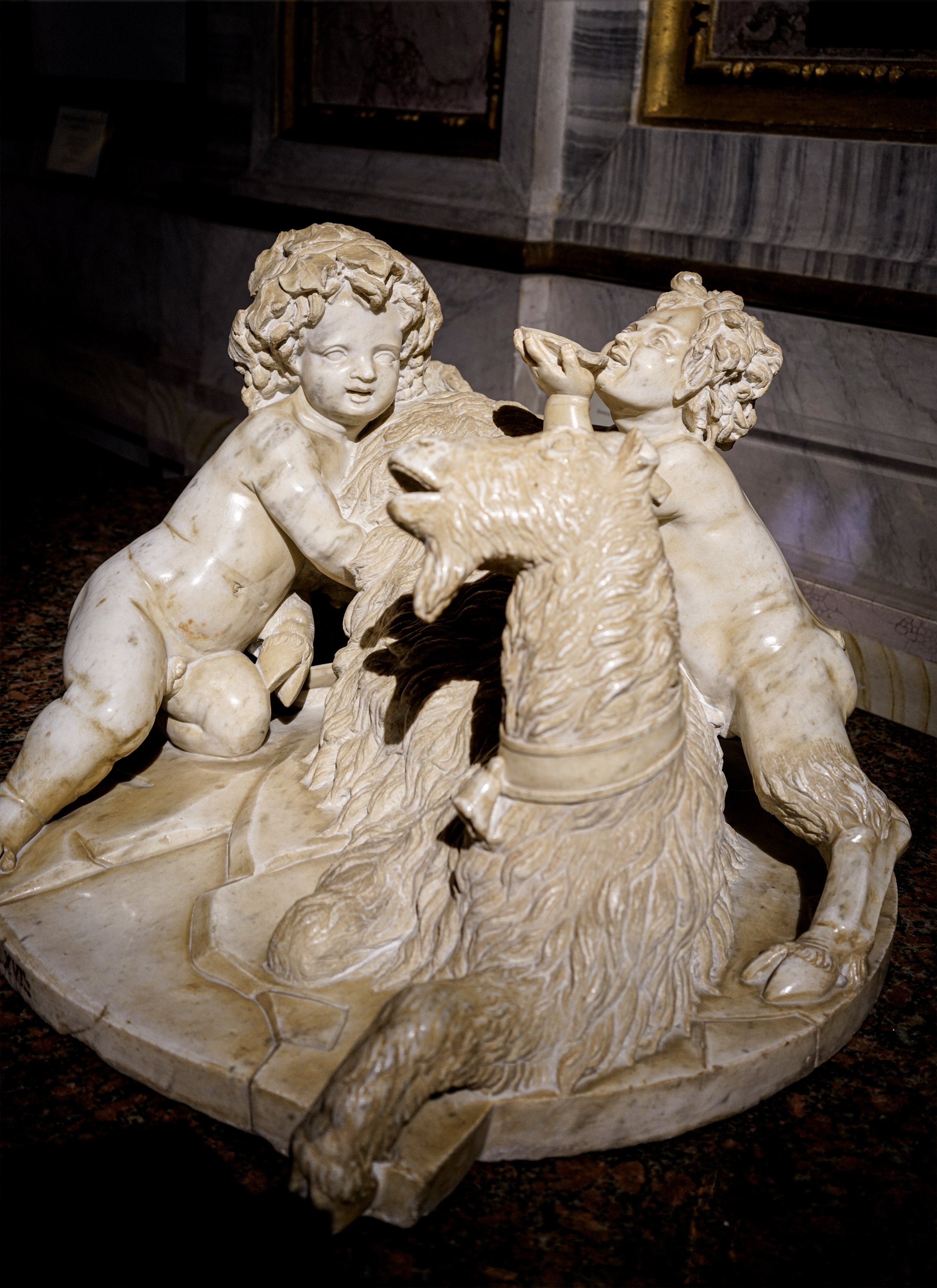
The story of the goat Amalthea tells how Zeus’ (Jupiter’s) father, Kronos, swallowed up all his newly born children, fearing losing his power. His wife Rhea suffered greatly from this, and when the next child was born, she slipped a stone wrapped in diapers and Kronos swallowed the stone, not suspecting anything. Meanwhile, Rhea hid Zeus on the island of Crete in the cave of Mount Ida. The goat Amalthea saved the life of the future supreme god. She hung on a tree baby Zeus in a cradle so that he could not be found on the ground, in the sky, or in the sea if Kronos was looking for him.
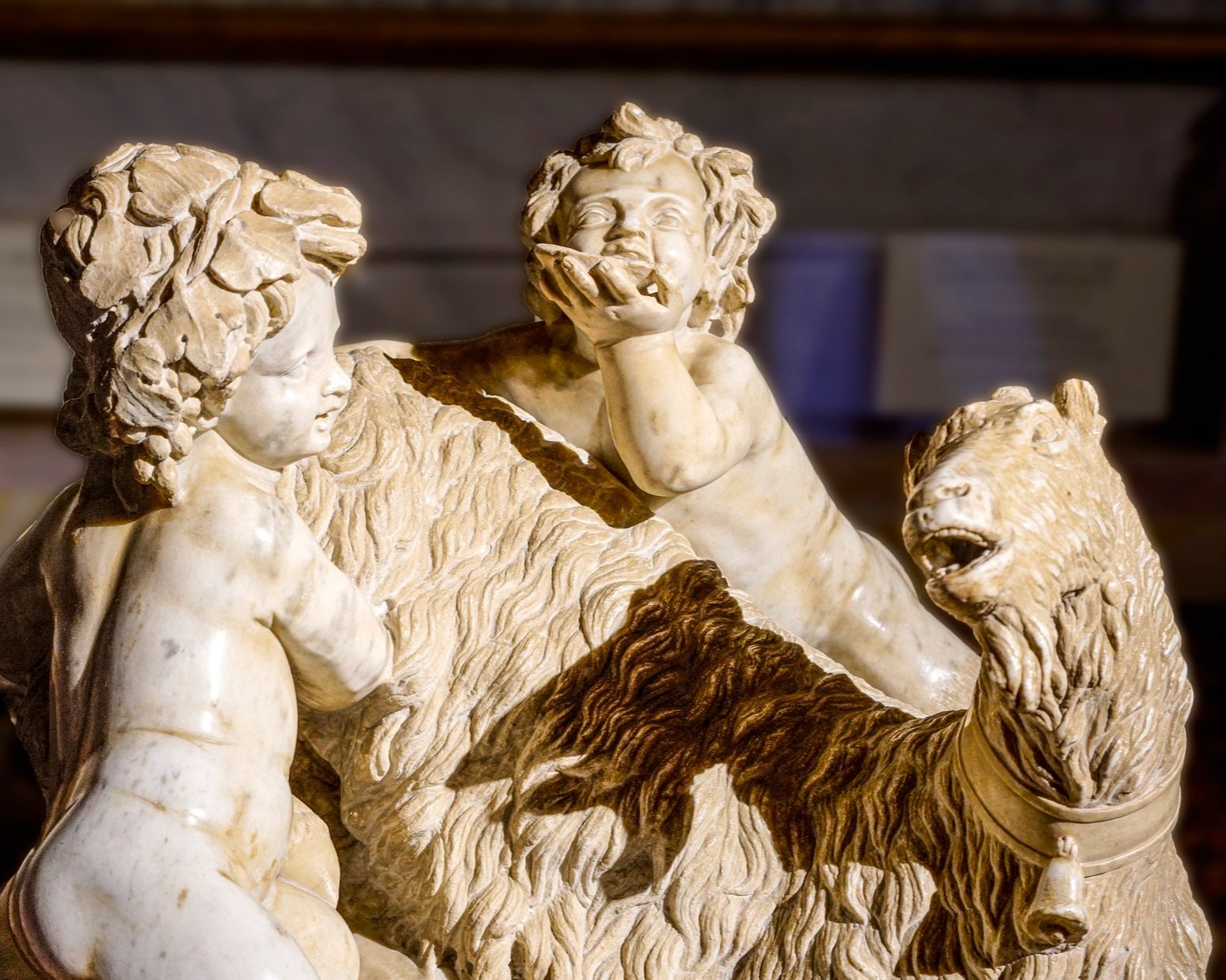
The Goat Amalthea with the Infant Jupiter and a Faun is the earliest known work by the Italian artist Gian Lorenzo Bernini. The goat of Amalthea is a divine goat that fed the baby Zeus (Jupiter) with its milk. Its name is translated from ancient Greek and means “gentle goddess.” Bernini includes the faun drinking the milk of Amalthea.
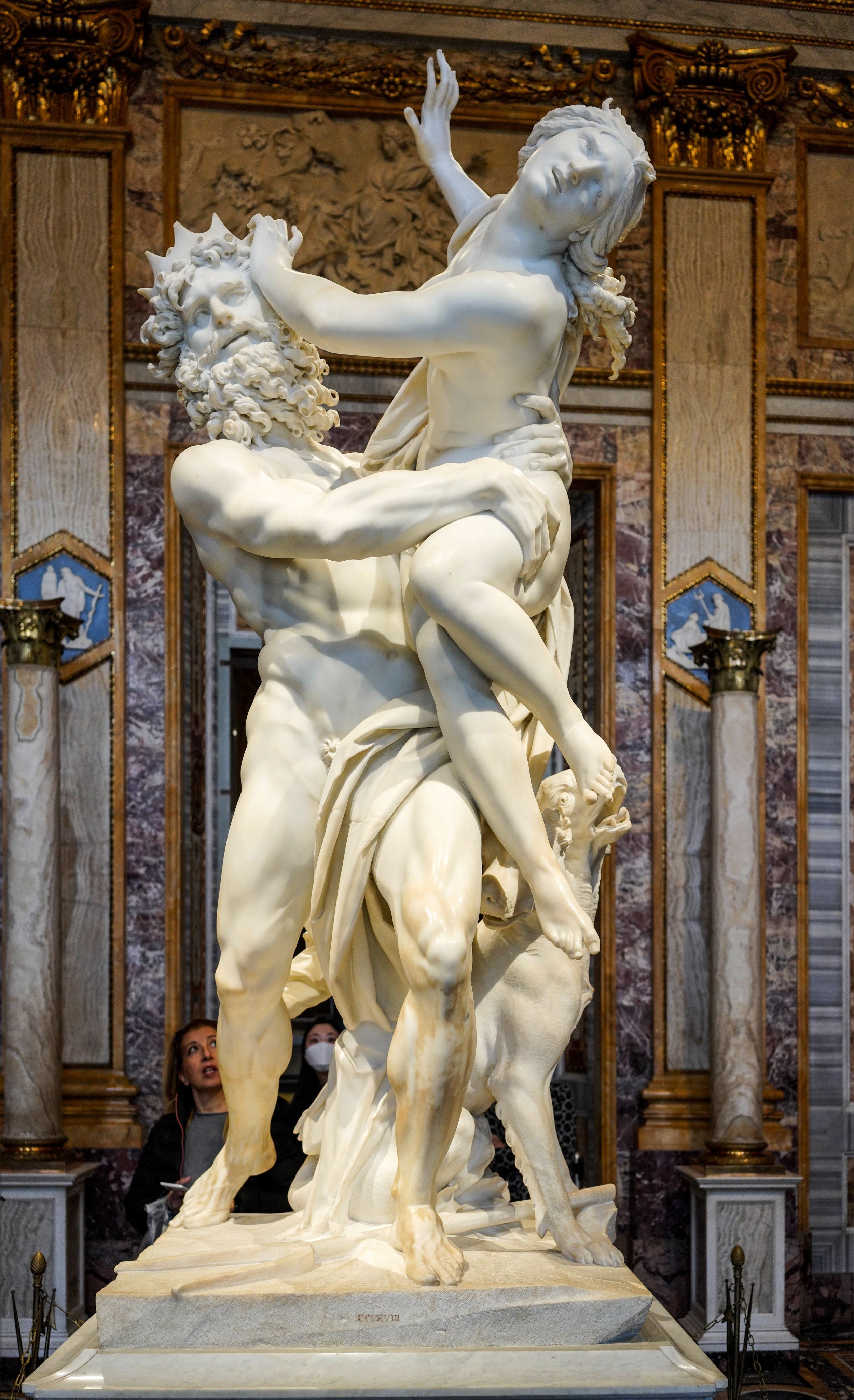
The Baroque marble group, commissioned by Cardinal Scipione Borghese and finished by Bernini when he was just 23 years old, depicts the abduction of Proserpina, who is seized and taken to the underworld by the god Pluto. It features Pluto holding Proserpina aloft, and the three-headed dog, Cerberus (the hound of Hades that guards the gates of the Underworld to prevent the dead from leaving), to symbolize the border into the underworld.

Bernini's statue depicts the climactic moment of the story, when Pluto grabs Proserpina, as can be seen by the imprint of Pluto’s fingers into Proserpina’s thigh and rib area, who struggles against him, with her left arm pushing against his head, as he carries her over the border of the underworld, symbolized by a marble Cerberus.
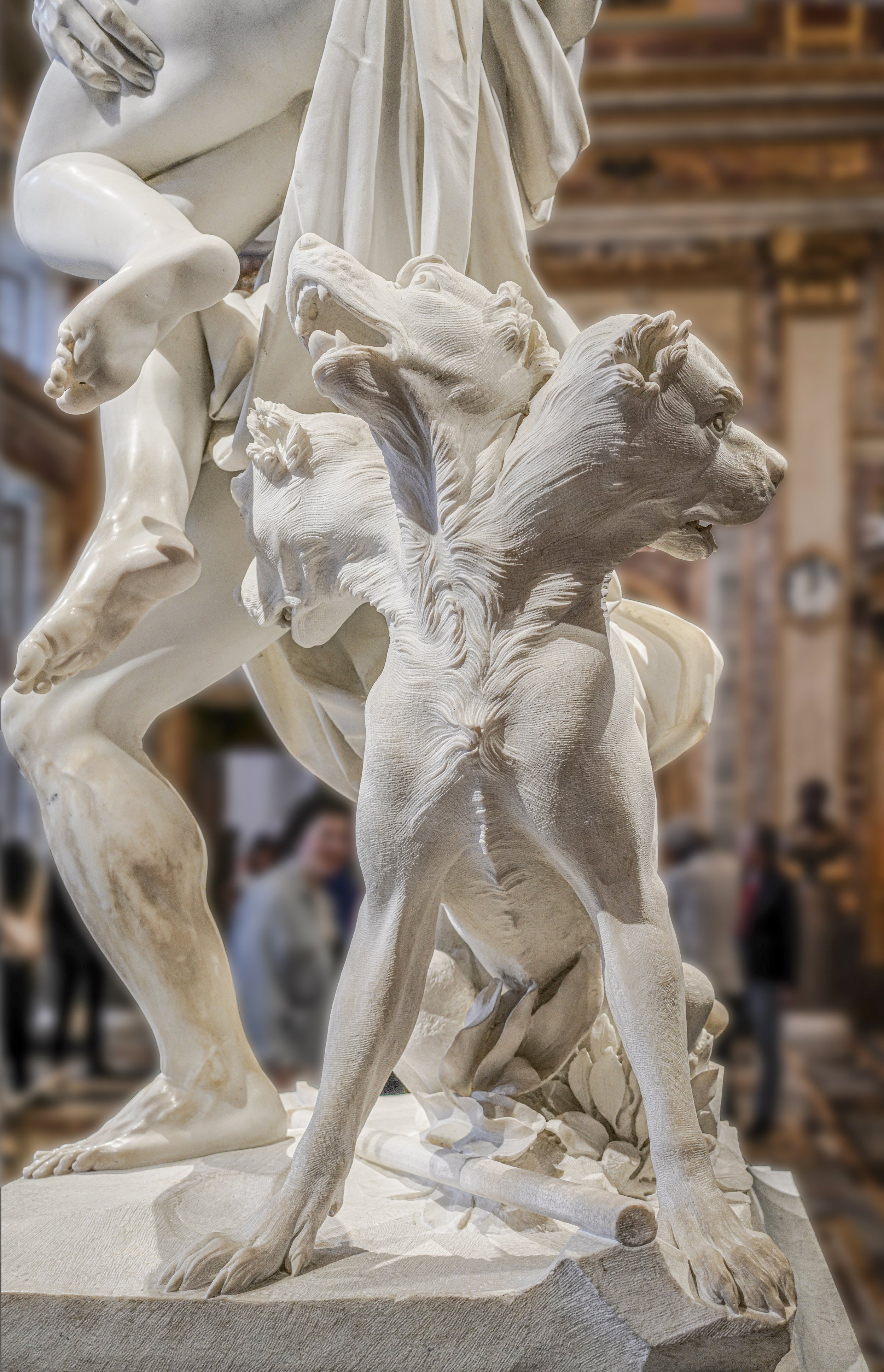
As early as Homer (c. 750 BCE) we learn that Heracles was sent by Eurystheus, the king of Tiryns, to bring back Cerberus from Hades the king of the underworld. According to Apollodorus, this was the 12th and final labor imposed on Heracles; and after Heracles captured Cerberus in the Underworld, he showed Cerberus to Eurystheus, as commanded, and then returned Cerberus to the Underworld.
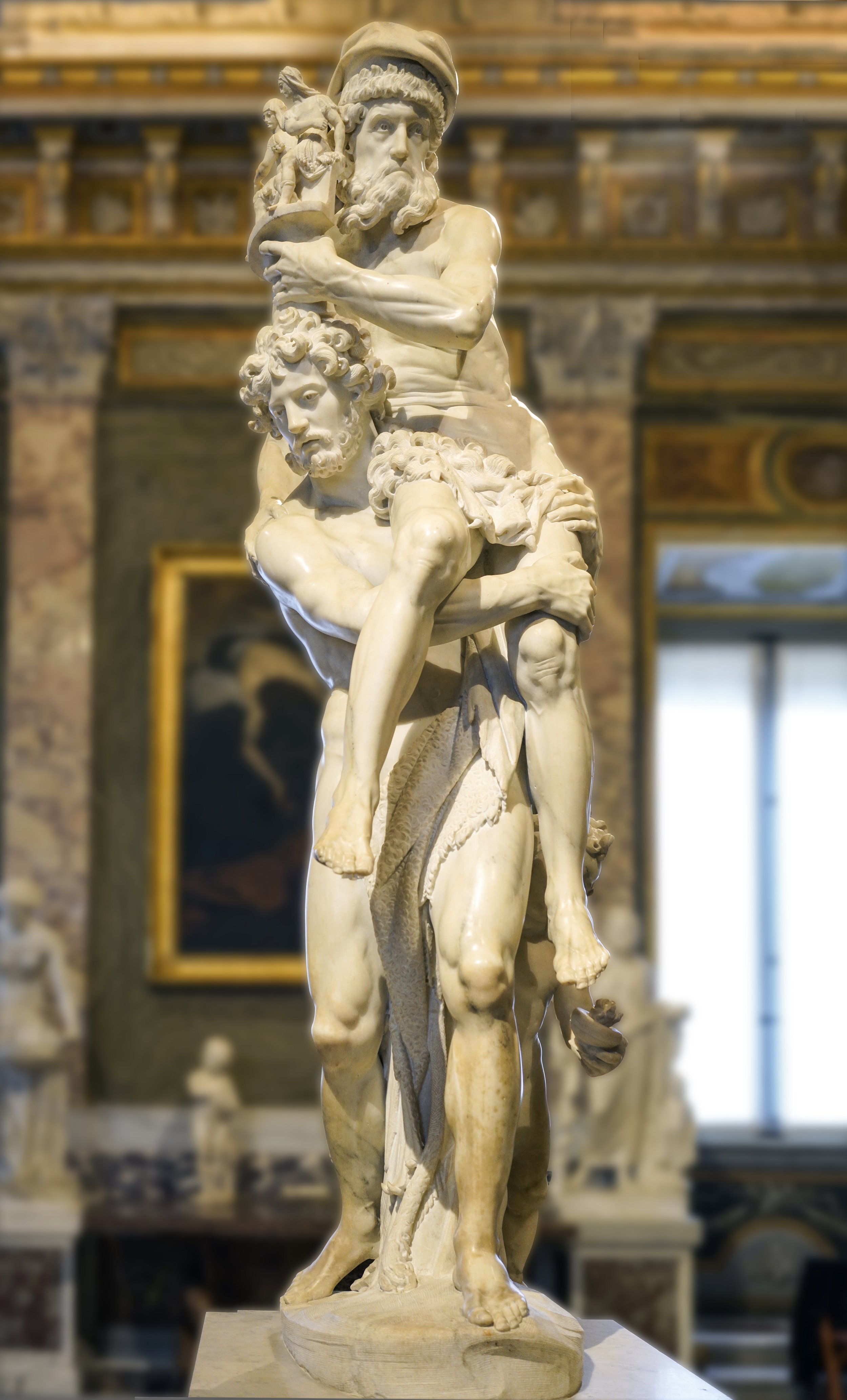
Bernini's inspiration for the work was the Aeneid, written by the Roman poet Virgil between 29 - 19 BCE, which tells the story of Aeneas, a Trojan who left his home city and eventually ended up in Italy, where he became a progenitor of the Roman people. The precise scene depicted is the moment when Aeneas carries his father, the elderly Anchises, and his son Ascanius from Troy, after it has been sacked by the Greek army.
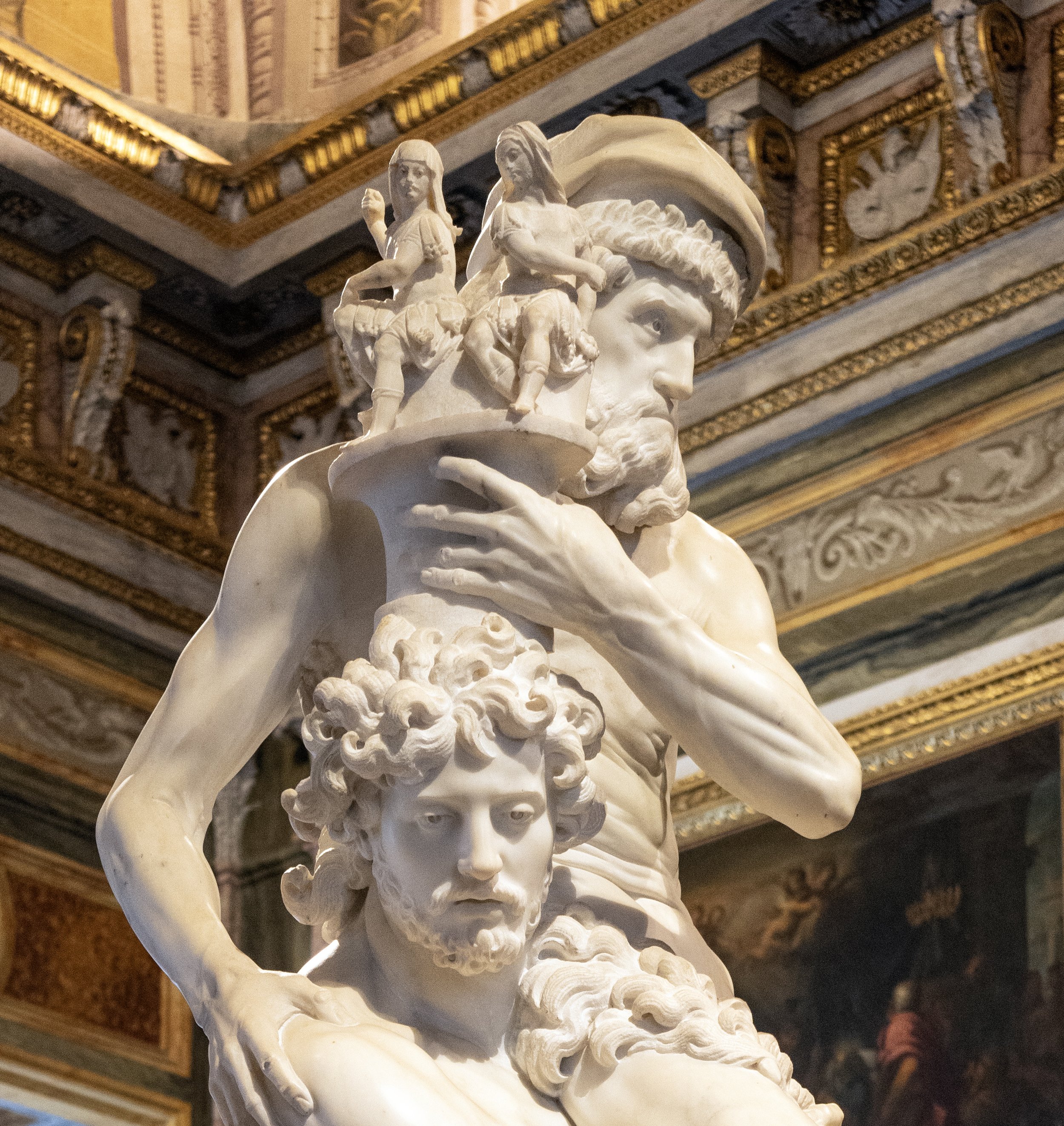
In his hand, Anchises carries a vessel with his ancestors' ashes, on the top of which are two tiny statues of Di Penates, Roman household gods.
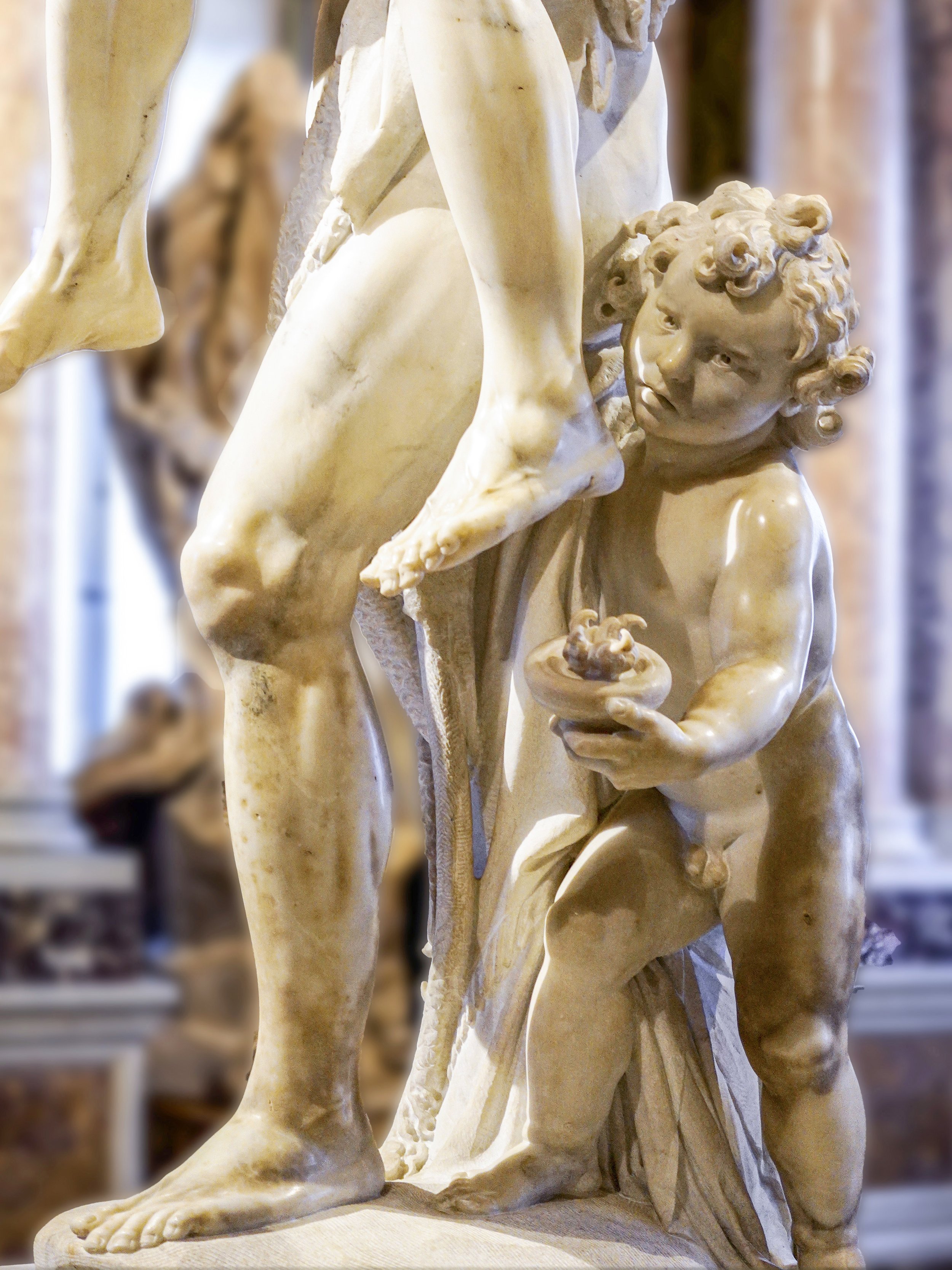
The detail of Aeneas, Anchises and Ascanius highlights Aeneas’ son, Ascanius, who carries the sacred fire of the hearth. In Ancient Greece, the living flame of Hestia was tended constantly and never allowed to die out, for it represented the energy of all life and to let the flame extinguish was to invite a cold and barren existence. When new “subdivisions” were developed, fire was carried from the town’s hearth to light the fire of the new community, assuring its prosperity.
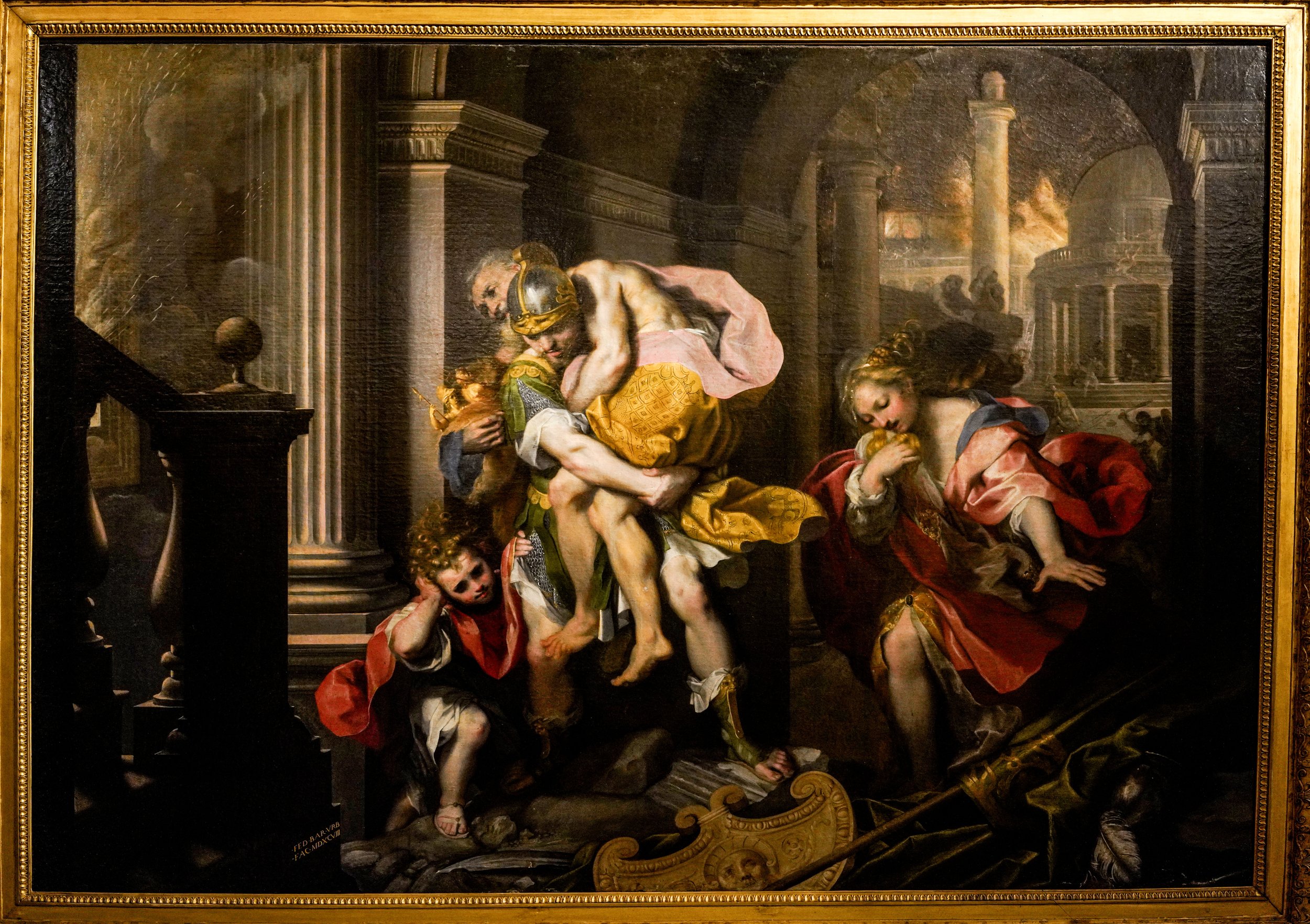
Aeneas fleeing from Troy by Barocci was given to Cardinal Scipione Borghese, as an affirmation of the spiritual purity of the Roman Cardinal. In the 16th and 17th centuries, the exchange of gifts was a standard practice among the nobility, which constantly sought a higher social status as a way of establishing mutual and long-standing relationship.
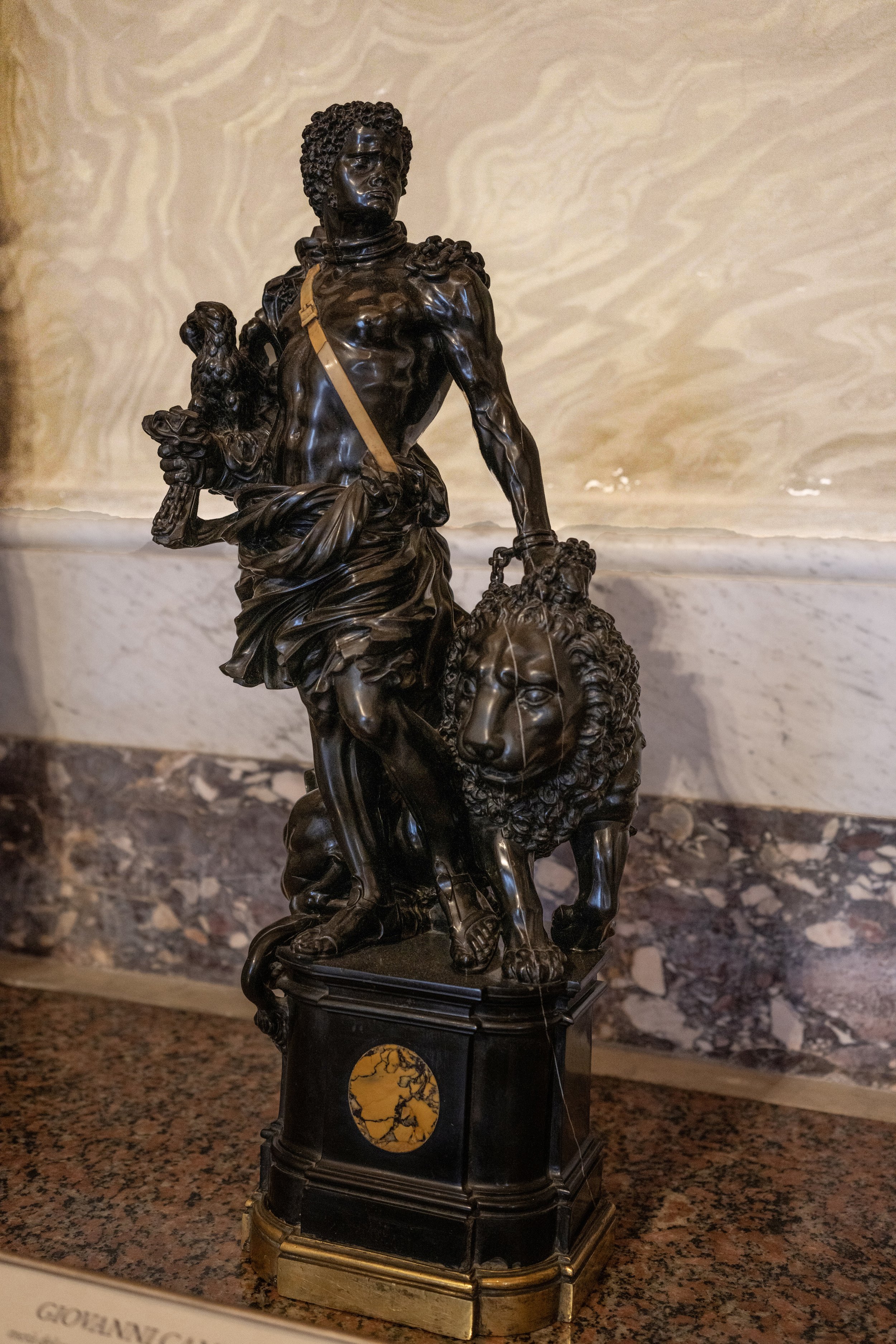
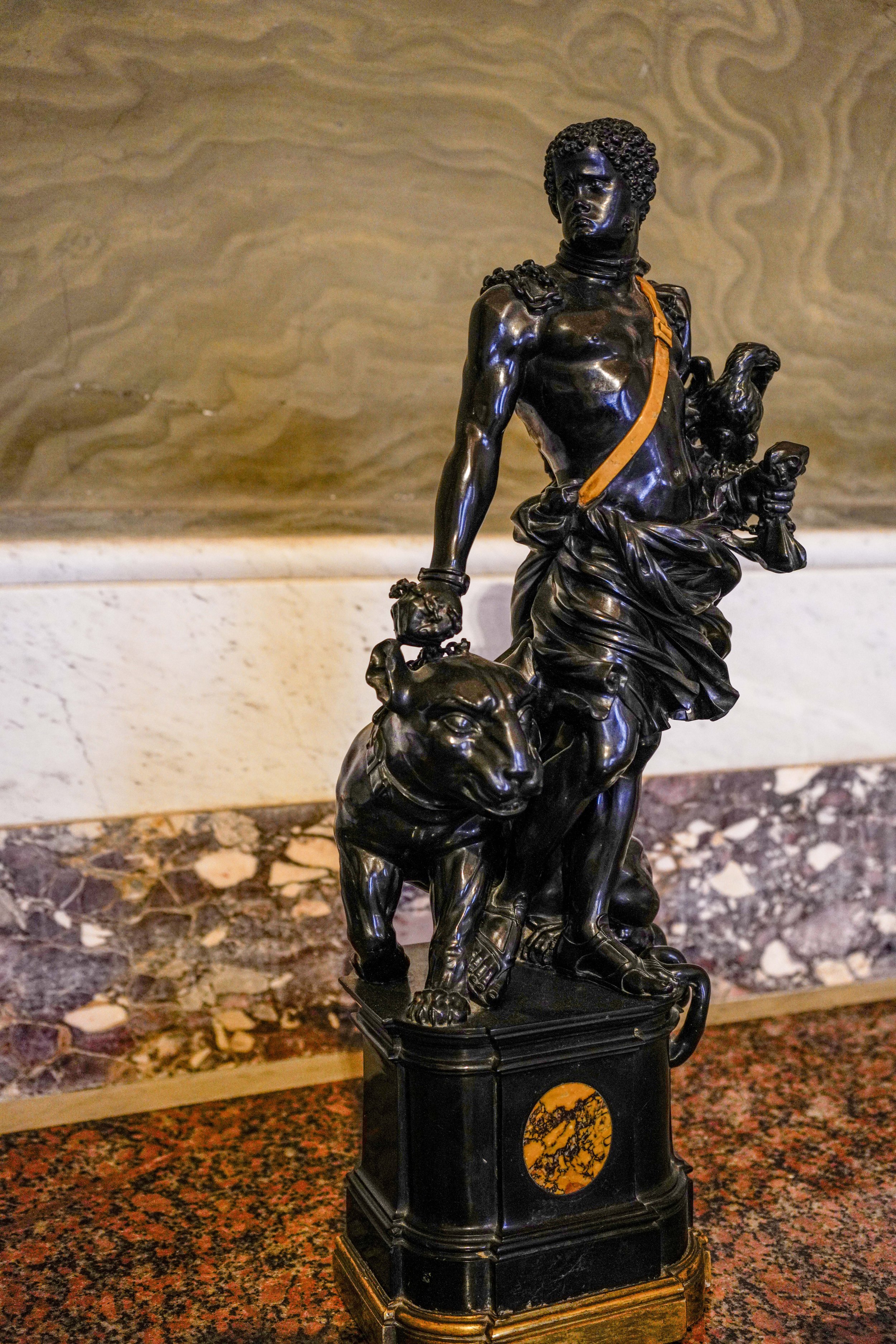
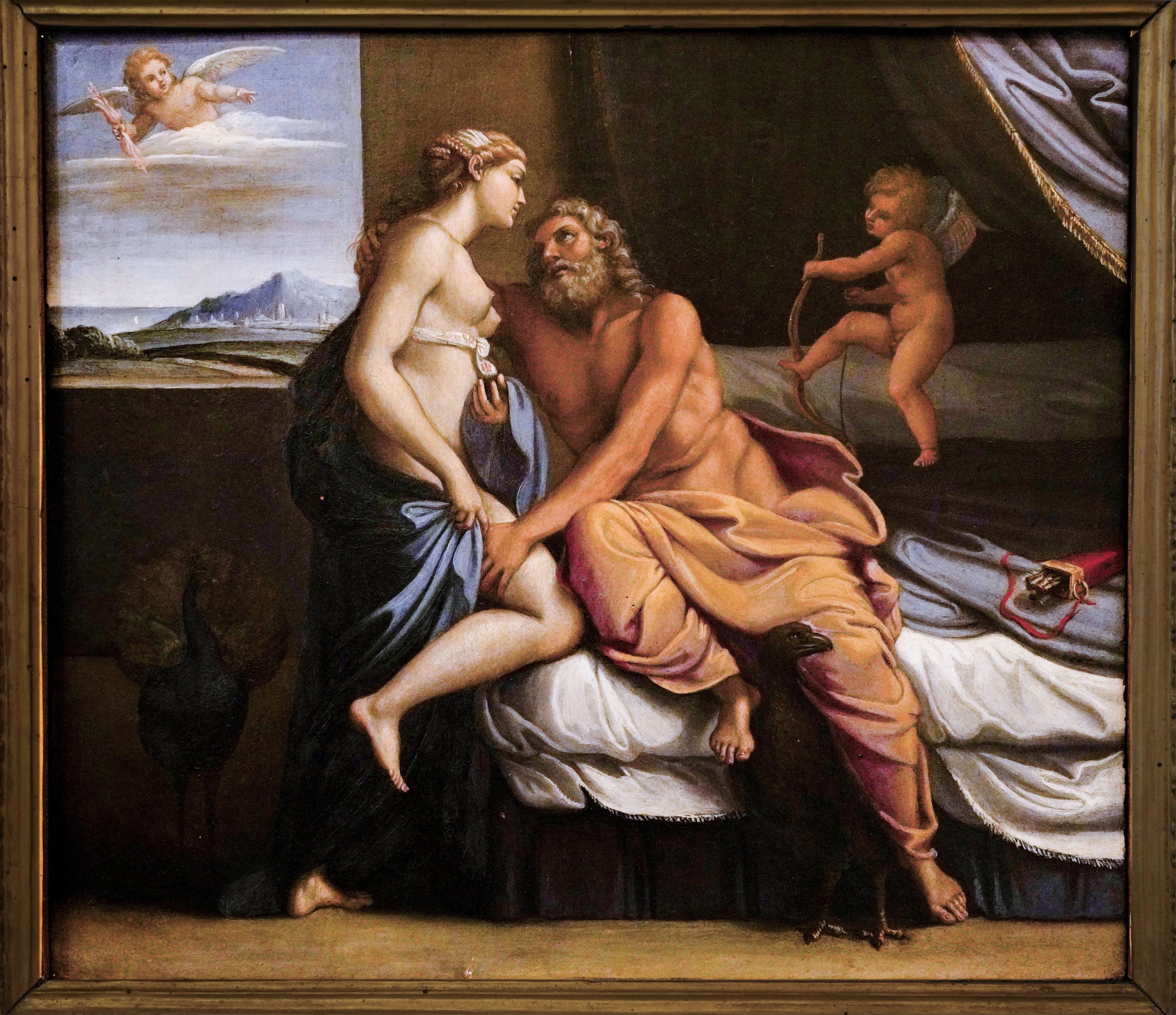
Of all the Roman gods and goddesses, Jupiter, god of natural phenomena and supremacy, was sovereign. Juno, in Roman religion, chief goddess and female counterpart of Jupiter, closely resembling the Greek Hera, with whom she was identified. Juno was connected with all aspects of the life of women, most particularly married life.
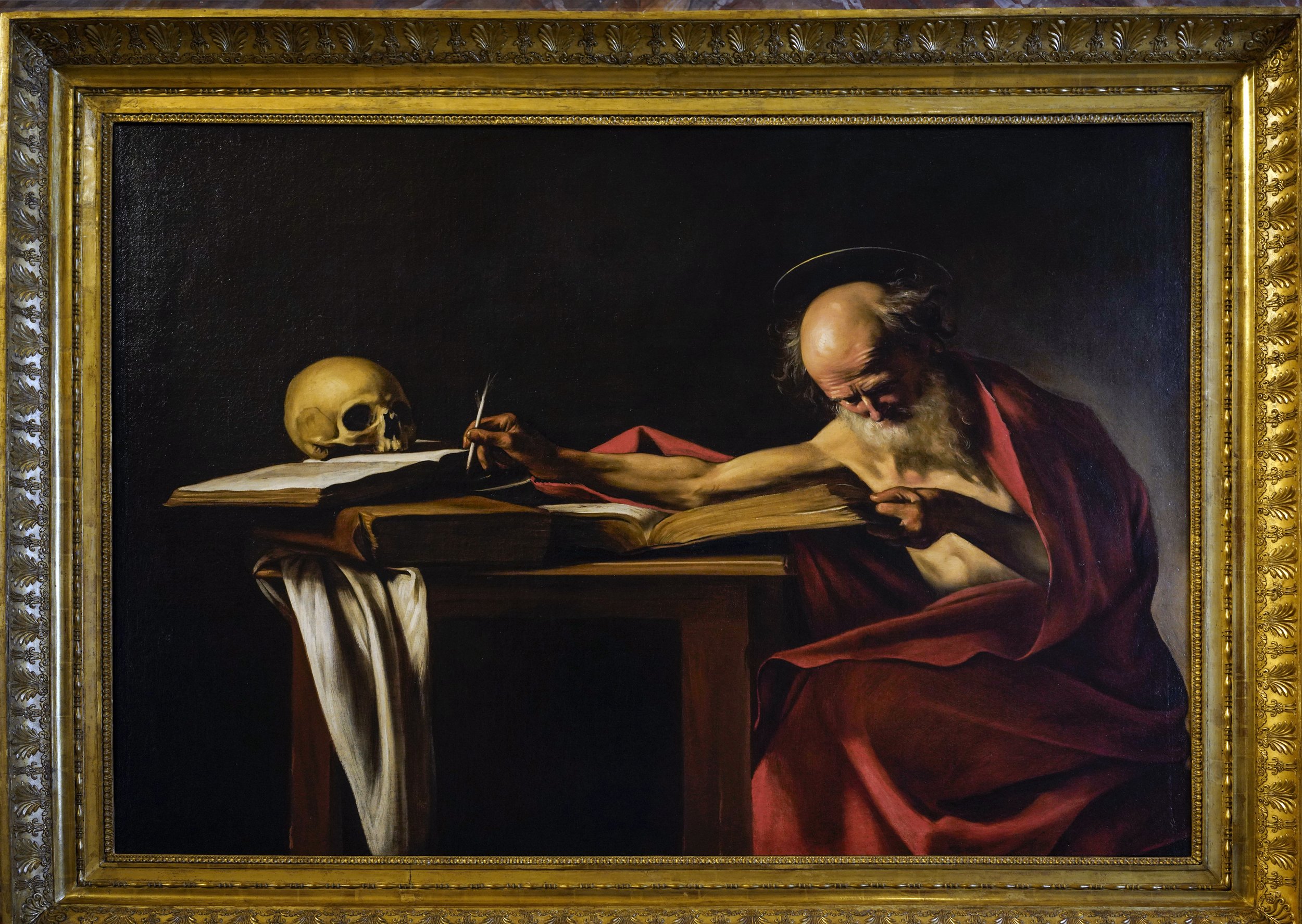
Caravaggio executed the artwork for Cardinal Scipione Borghese. Saint Jerome is not depicted as a penitent, as is often the case, but rather as a scholar. He is focused on reading and annotating the sacred passages and symbolically counters the futility of worldly goods. The harsh lighting underlines the muscles of his tired arms and the parallel between his bony head and skull. The images suggest, “a man is born to die, but the Word of God lives forever.”
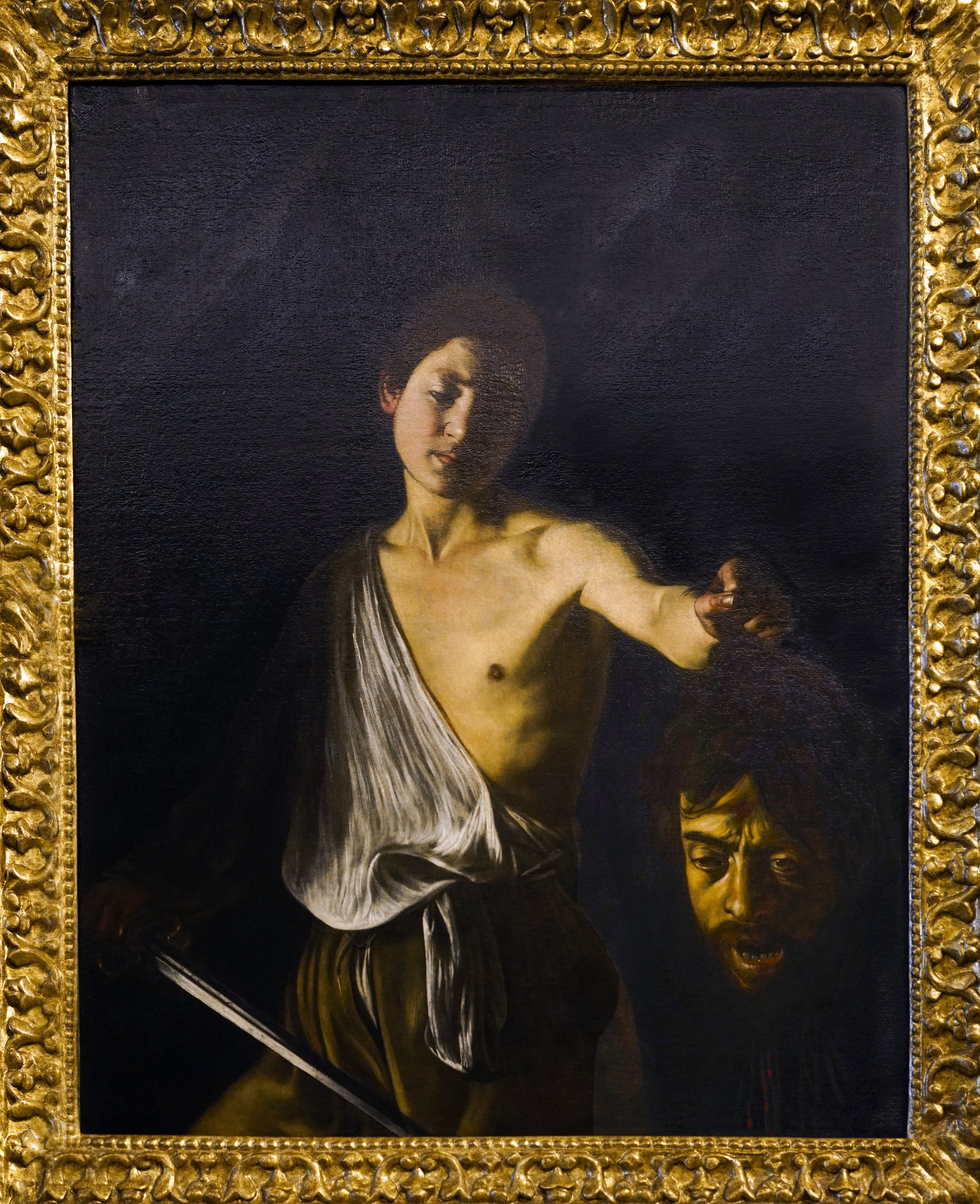
In David with the Head of Goliath, Caravaggio, another favorite of Cardinal Scipione Borghese, portrays a particular moment in the drama of David’s conquest by having Goliath’s head dangling from David’s hand with dripped out blood. However, David does not gesture triumphantly, e.g., as in the bronze sculptures of Donatello and Verrocchio, but rather seems sad, melancholy and moved as he observes the severed head of Goliath.
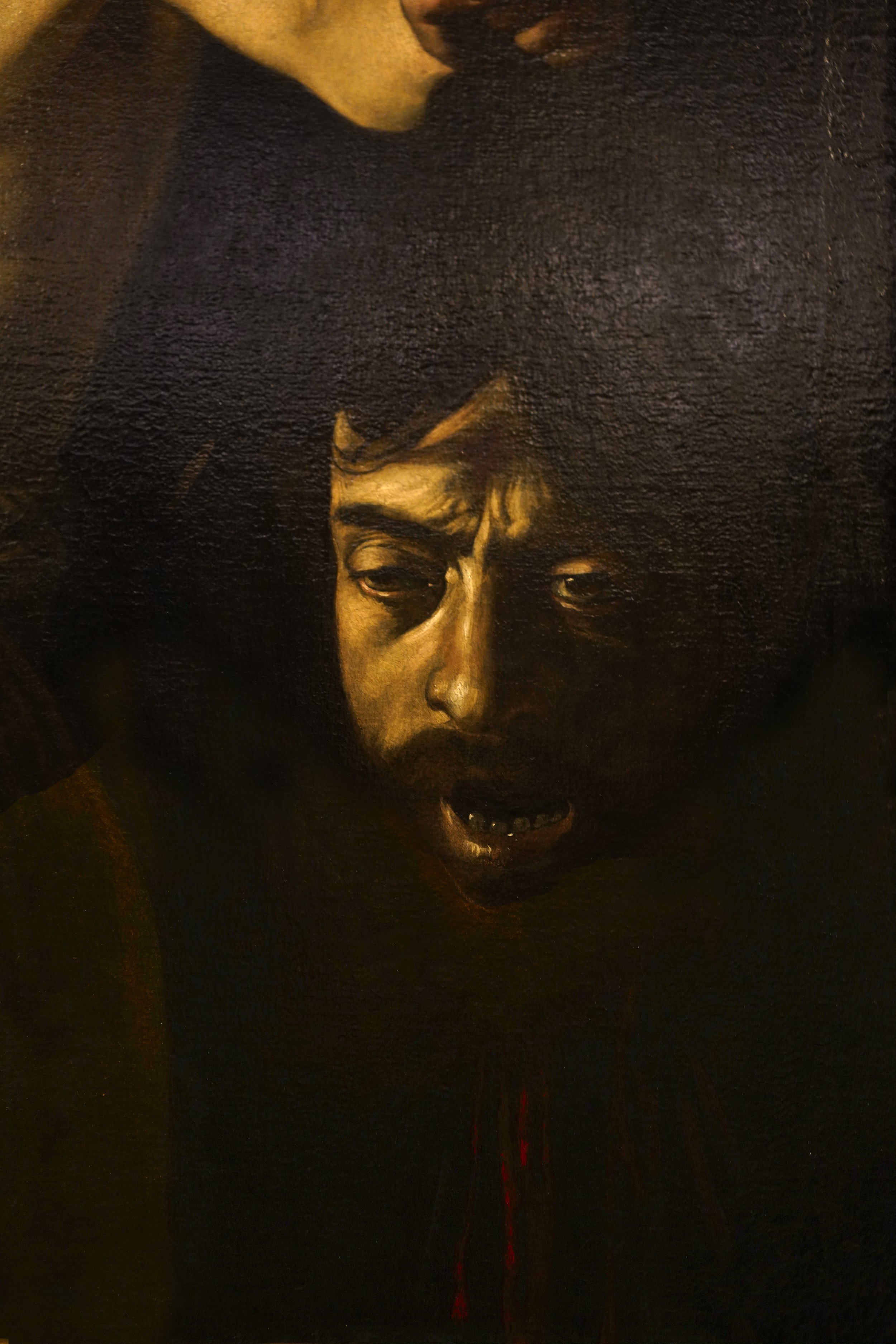
In David with the Head of Goliath, the face of Goliath represents Caravaggio’s self-portrait. The sword in David's hand is inscribed ‘H-AS OS,’ an abbreviation of the Latin phrase humilitas occidit superbiam ("humility kills pride"). Caravaggio sent the painting to Pope Paul V, seeking pardon for the murder he had committed. Also, the image of David could be a portrait of the painter as a young man. It has been suggested that the wild behavior of the young Caravaggio essentially had destroyed his life as a mature adult, and he reflects on his own condition in this painting of a religious subject.
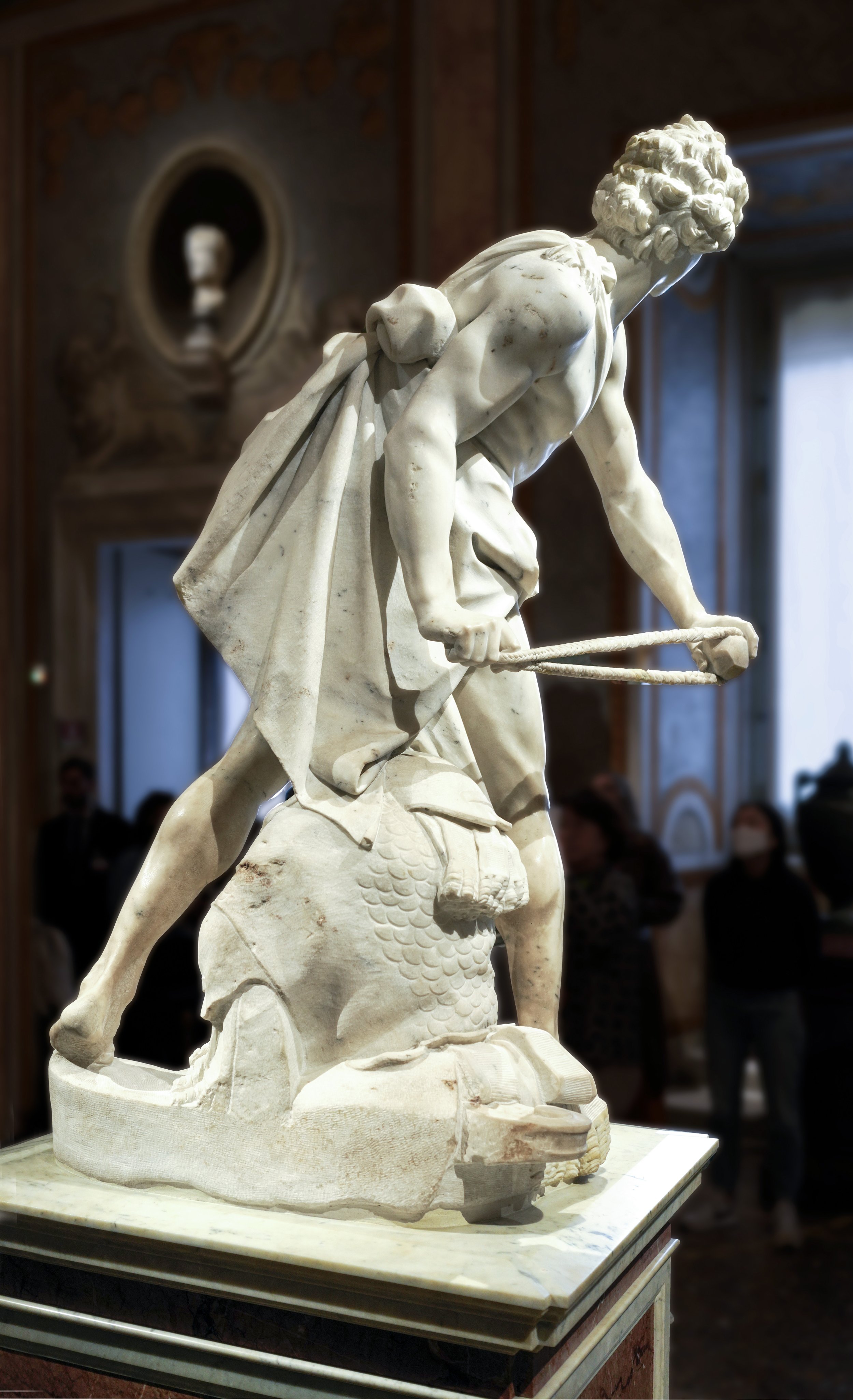
The Books of Samuel describe David as a young shepherd and harpist. Armies were often organized by private means; soldiers brought their own horse and armor and relied upon family and friends to provide them with food. David had been chosen to take supplies to his brothers in King Saul’s army. When David stepped forward accepting Goliath’s challenge, he chose five stones from a stream, aimed one of them at the forehead of Goliath, fell him to the ground, and using Goliath’s sword, cut off his head.
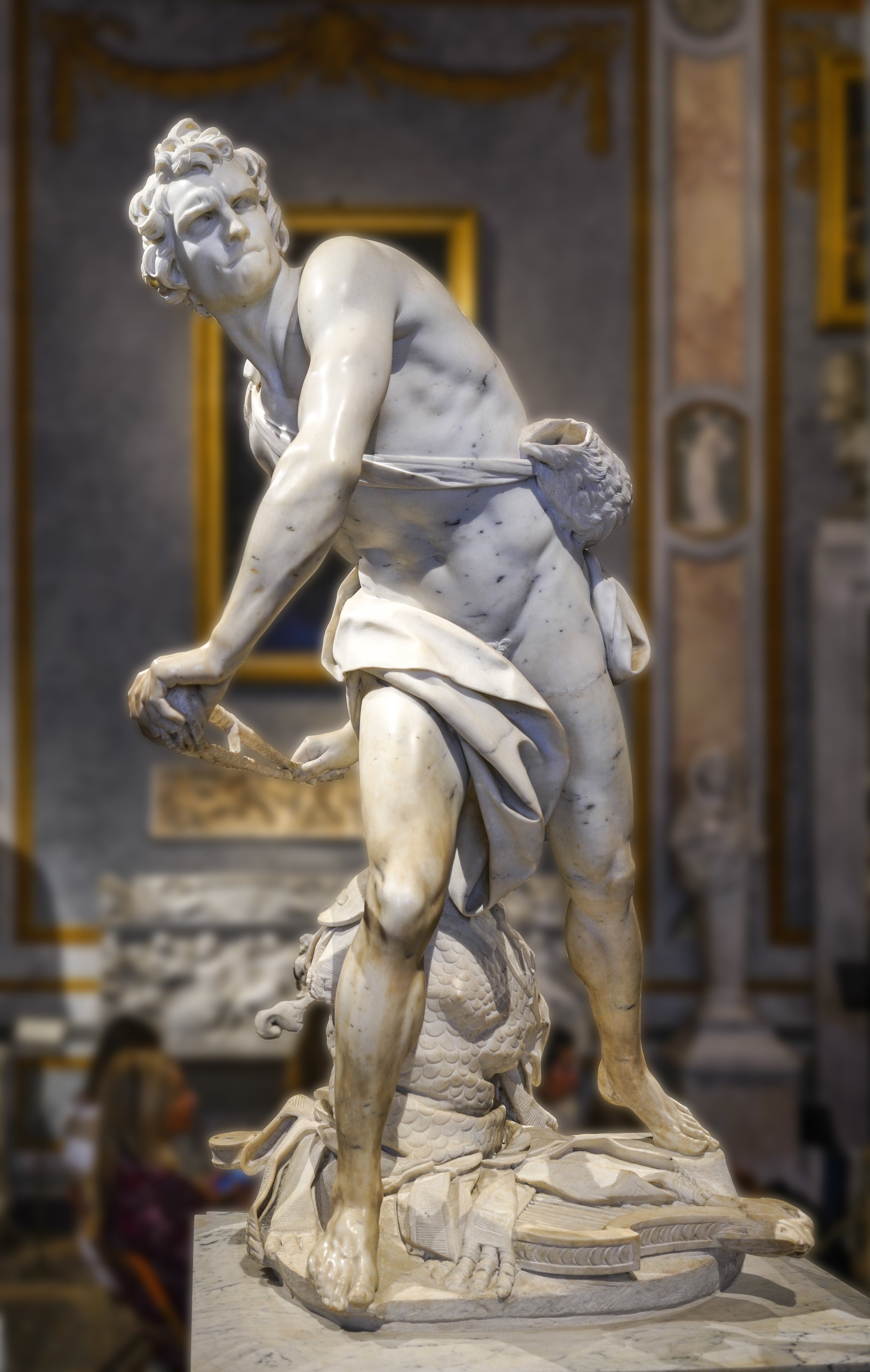
Bernini’s David captures the episode of the battle itself. David is shown in motion, in a twisted position with muscles engaged to emit exaggerated energy and drama. He has not yet defeated Goliath, but is in the midst of battle, he is about to sling the rock. David's clothing is typical of shepherd's attire. At his feet lies the armor of Israel's King, Saul, and David’s harp. Given to David for battle by Saul, the armor was shed, as David was unaccustomed to it. The harp, refers to David being described as a talented harpist.
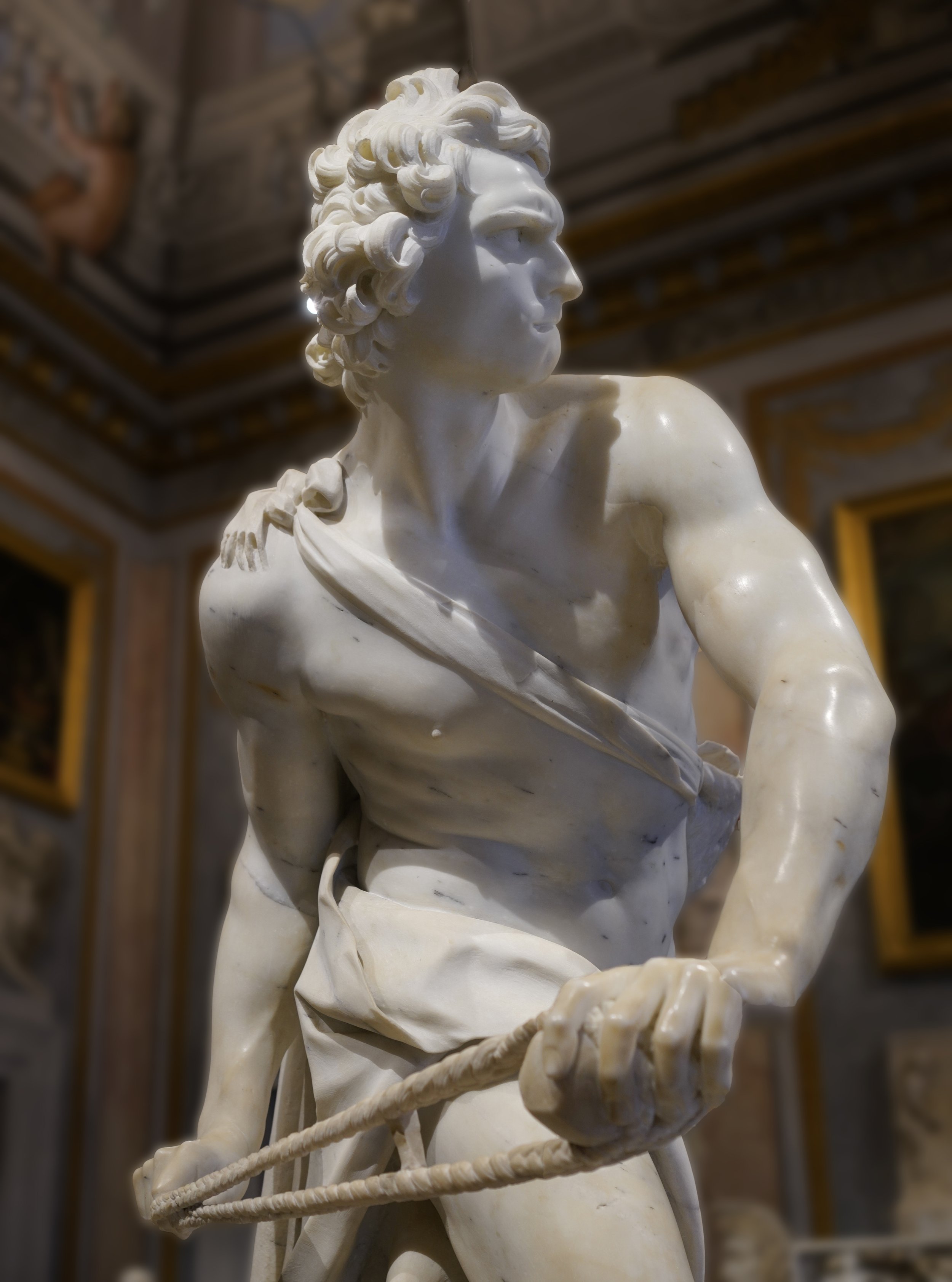
Bernini’s David is my favorite sculptural presentation of the David and Goliath story. Michelangelo was the first to portray David before the battle, showing him at the apex of his concentration, relaxed, but alert, resting on a classical pose known as contrapposto. Bernini presents us with David in the battle, looking at Goliath, and allows us to be there with David. As one scholar has commented, “What Shakespeare is to drama, Bernini may be to sculpture.”
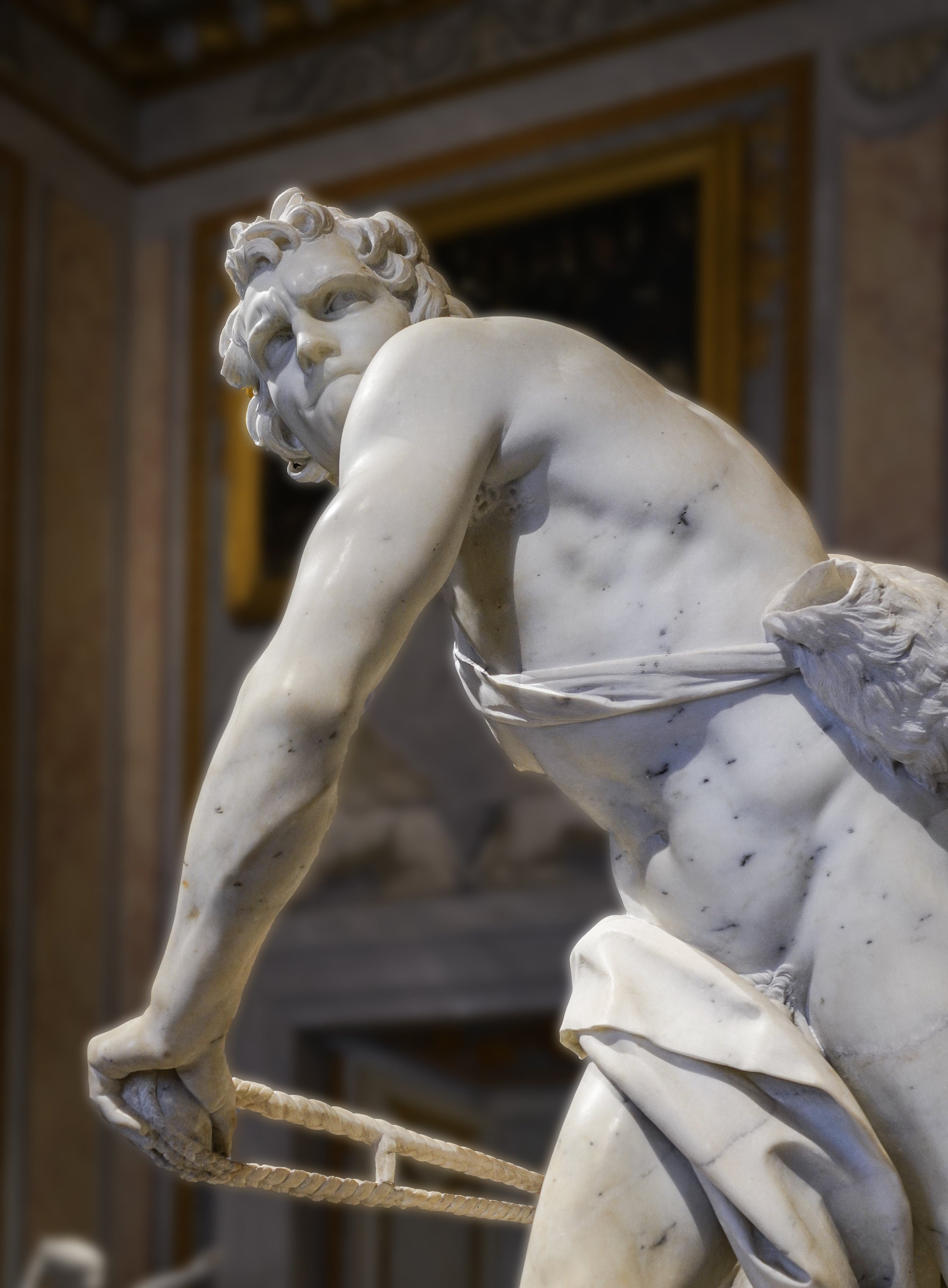
Other sculptural versions of David, e.g., by Donatello and Verrocchio, portray David after he had beheaded Goliath. Verocchio’s David is gracefully posed standing triumphantly over Goliath’s head. Donatello’s bronze David depicts a young nude posed with his foot on Goliath's severed head. In contrast Bernini’s David an intense energy is in the process of being unleashed.
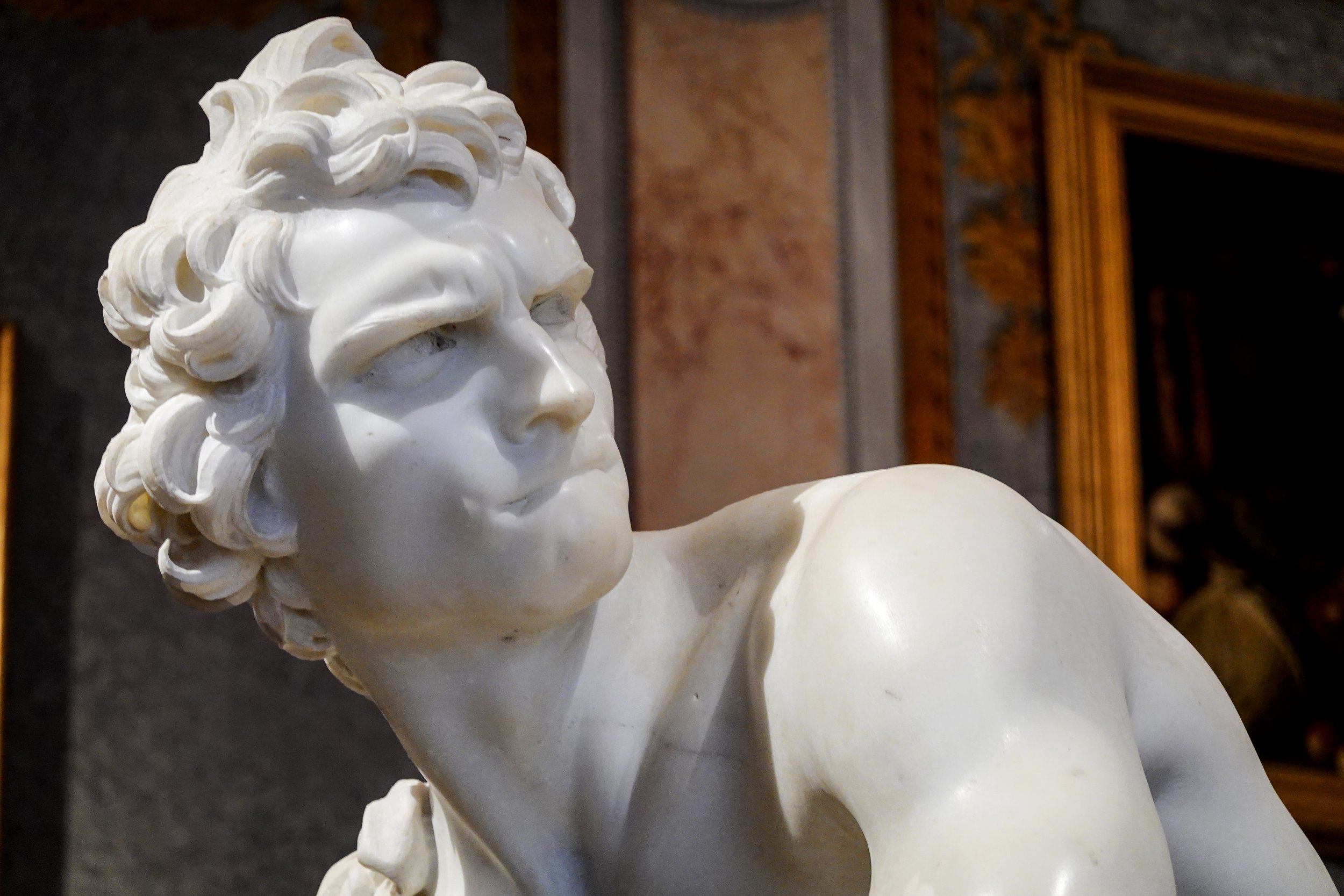
Bernini’s David expresses pure determination, and a lack of fear. David looks at the enemy with intensity. The young man is serious: his eyebrows frown, and his lips are bitten. He is engaged and in motion.

Here Rembrandt allows us to experience another part of David’s story. David has just beaten Goliath and the Philistines and is back in the palace of King Saul, who is afraid that David will take his position as king due to his enormous popularity. King Saul has a curtain in his left hand and a spear in his right hand. Rembrandt uses the curtain to to express two different emotions of Saul at once. The tears in his left eye because of the beautiful music and the anger and jealousy of David’s growing popularity in his other eye. Saul eventually throws the spear at David, twice missing him.

In Truth Unveiled by Time Bernini wanted to show Truth allegorically, as a naked young lady being unveiled by a Time figure above her. However, a figure of Time was never executed.
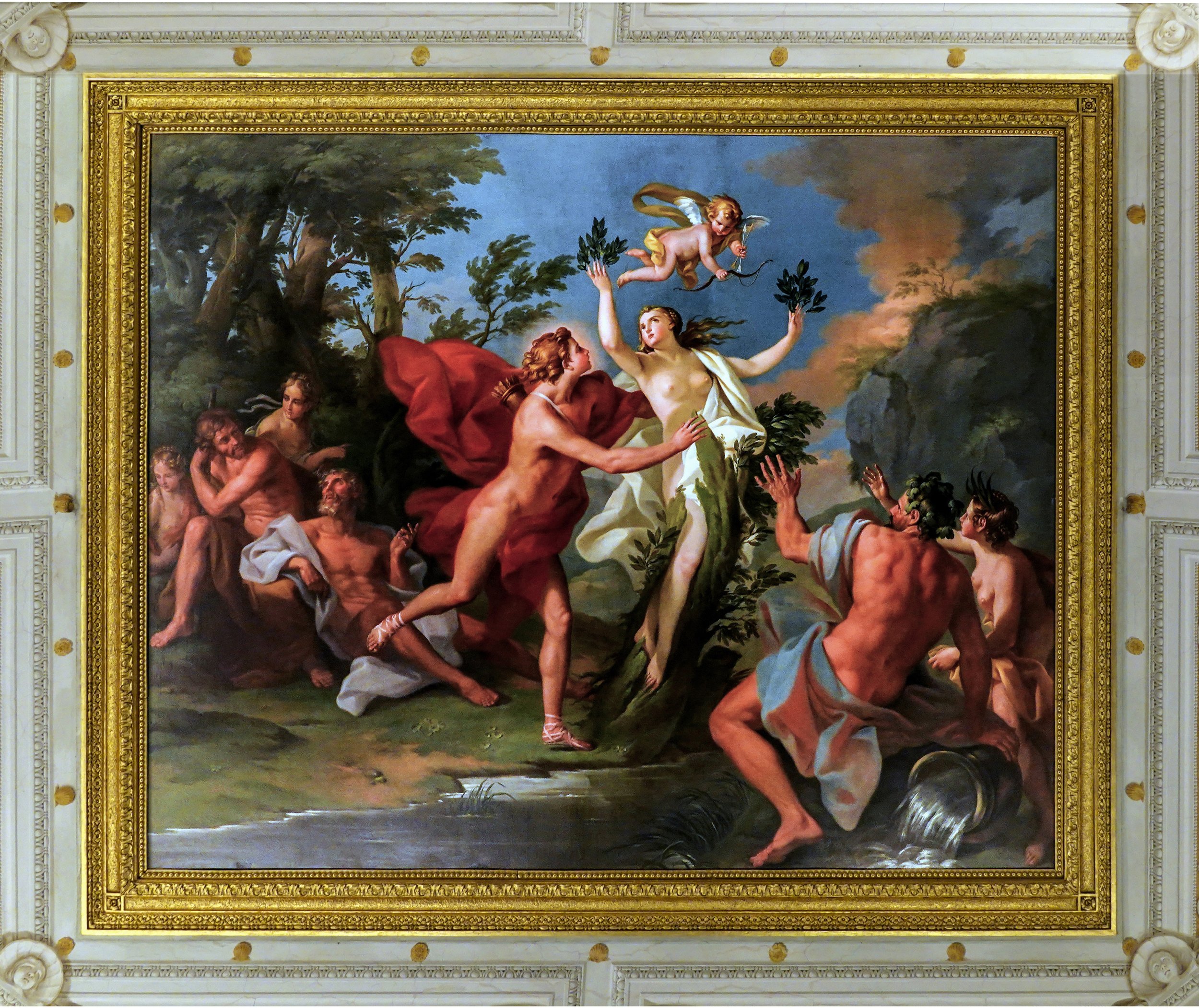
According to Greek Mythology Apollo had been mocking the God of Love, Eros (also known as Cupid). In retaliation, Eros fired two arrows: a gold arrow that struck Apollo and made him fall in love with Daphne, and a lead arrow that made Daphne doomed to repulsive love and denied the love of men. Apollo seeing the wood nymph Daphne falls madly in love with her. As she runs away terrified, she prays to her father Peneus: “Destroy the beauty that has injured me, or change the body that destroys my life.” Before her prayer ended, amongst other changes, her hair turned into moving leaves, her arms turned into swinging branches, and her legs, like clinging roots, were attached to the ground
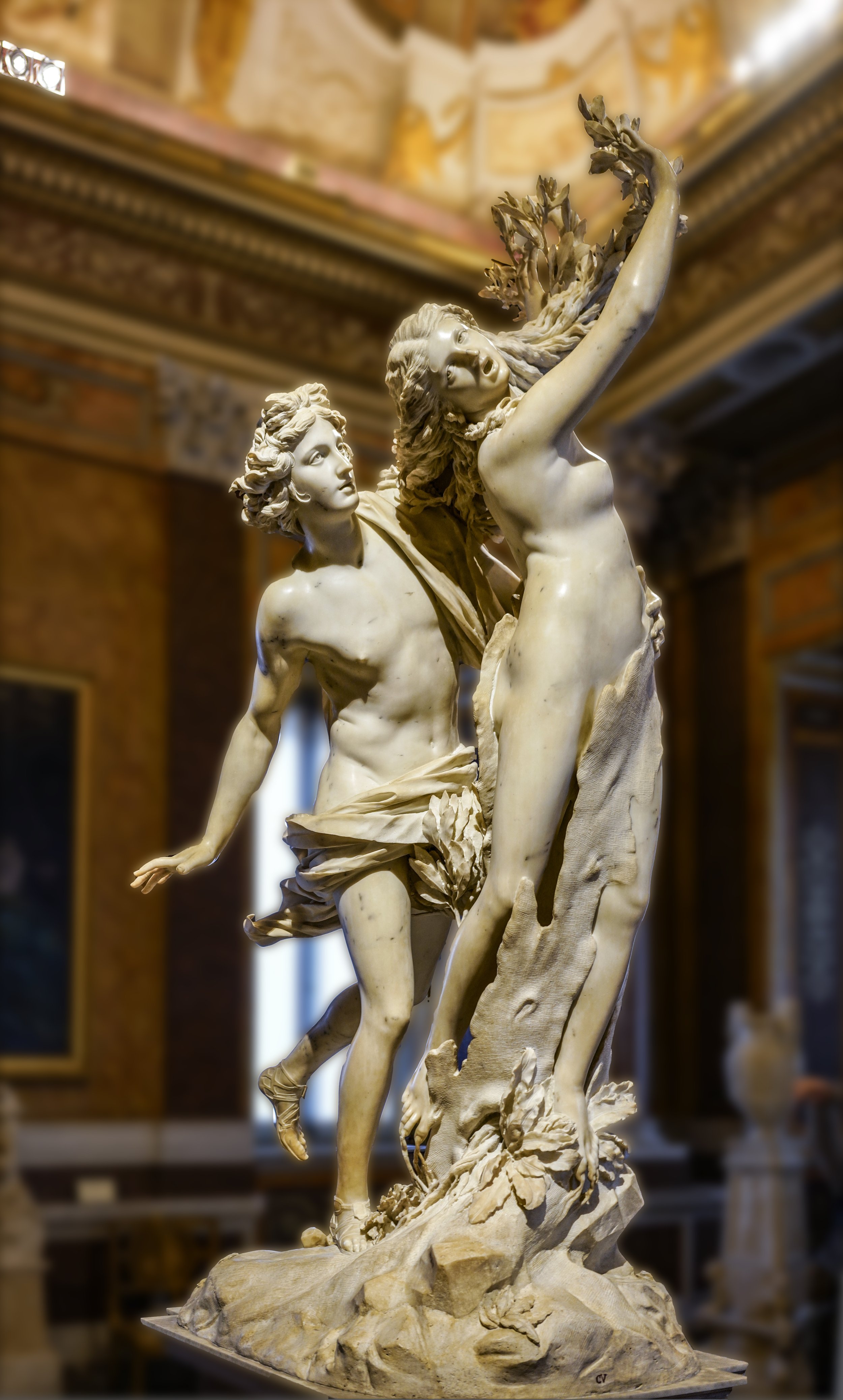
Bernini portrays Daphne fleeing from Apollo and captures the action through the use of diagonal lines. Bernini captures Daphne’s hair as it turns into moving leaves, her arms turn into swinging branches, and her legs attach to the ground as roots.
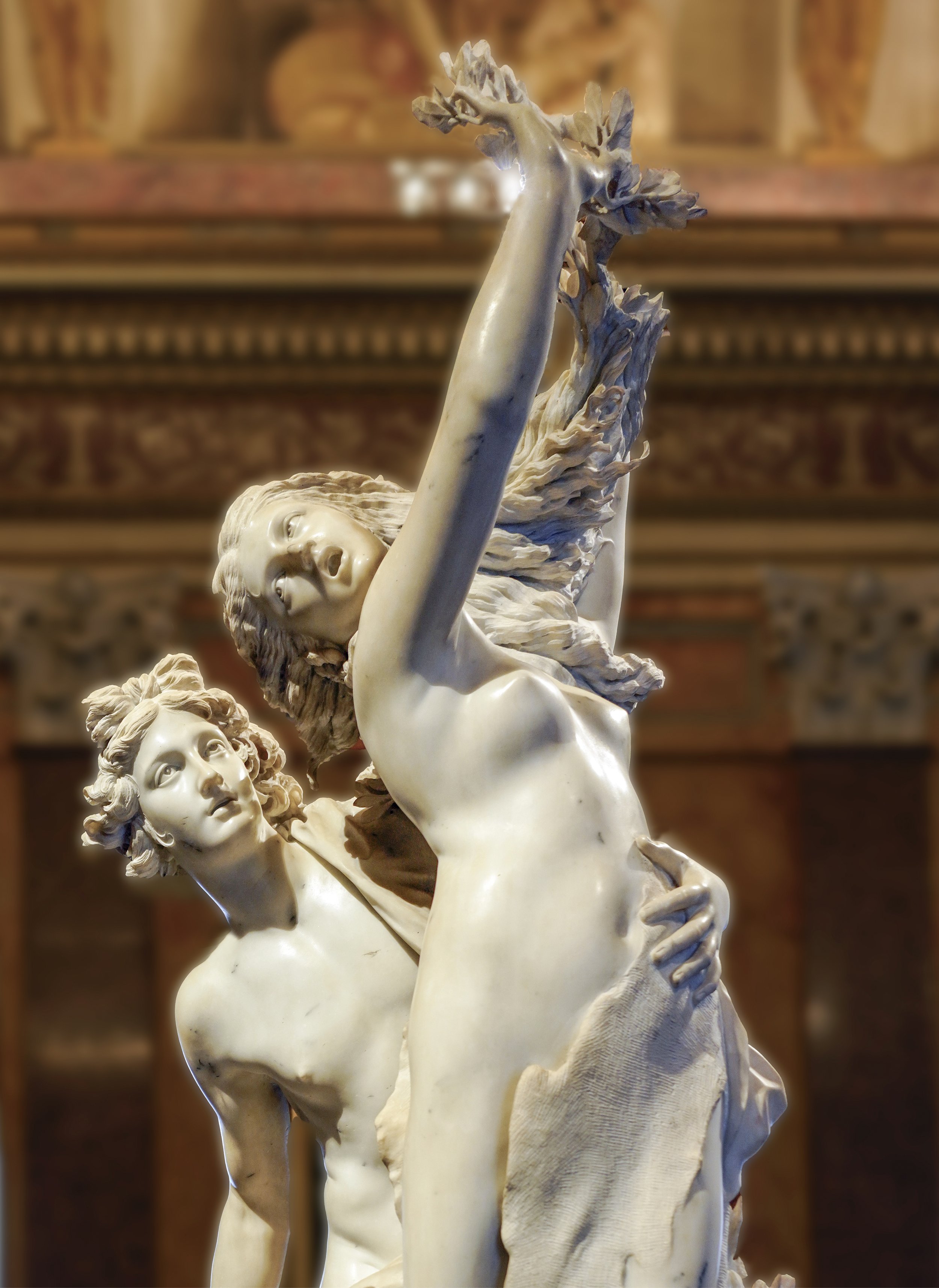
When Bernini unveiled Apollo and Daphne, the marble work was resoundingly hailed as a meraviglia—a marvel. Not yet 30 years old, the sculptor had captured motion, transformation, sexual appetite, and terror more convincingly than any other artist working in stone before him.
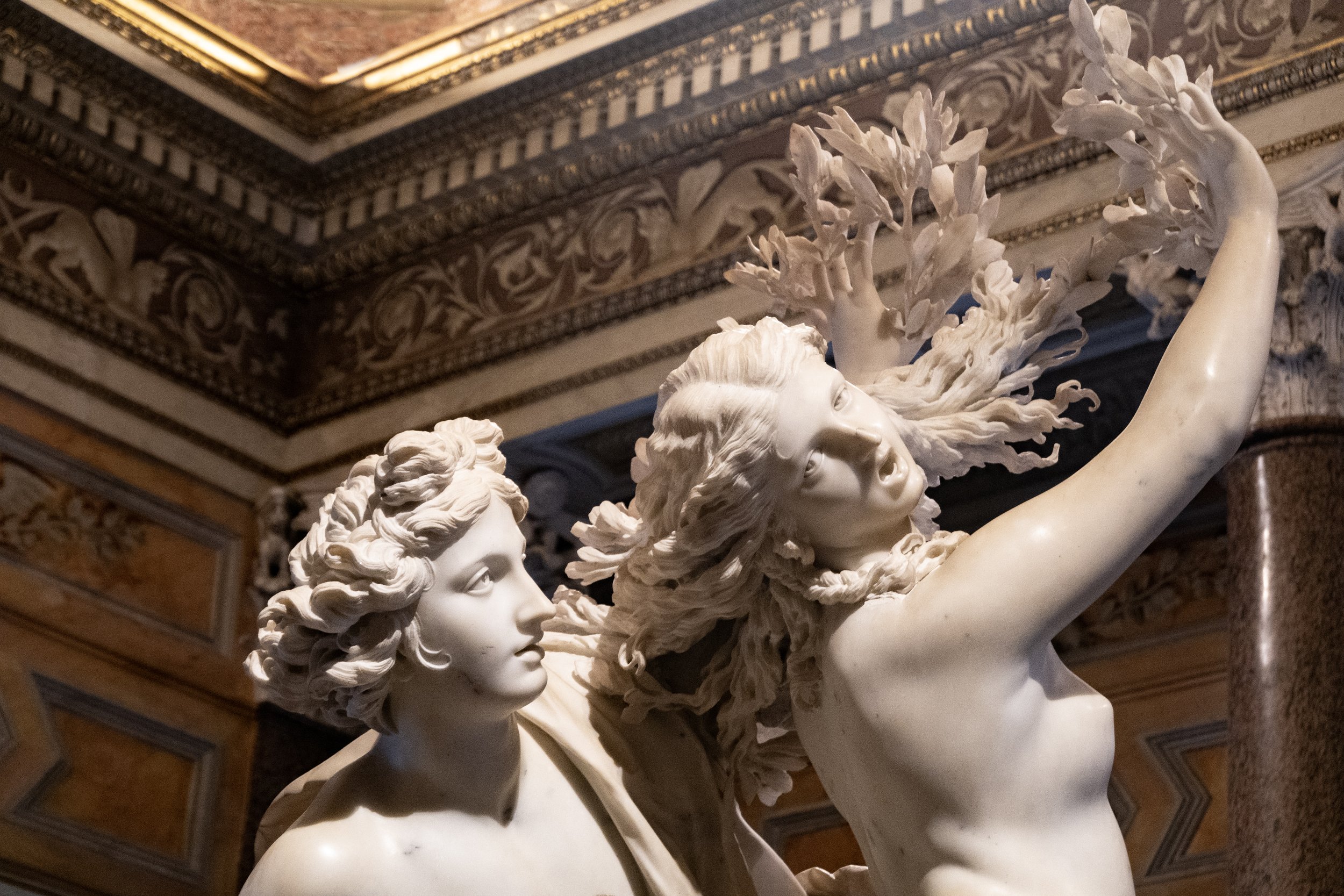
Bernini received considerable help on Apollo and Daphne from his student, Giuliano Finelli, who worked on the details that show the transformation of Daphne from person to tree, such as bark and branches, as well as her weathered hair. An essential difference between Bernini and Finelli was that while Finelli was highly meticulous about carving tiny details, Bernini was less conscious of lacy frillery in dress, and more centered on the psychology and the overall emotional impact.
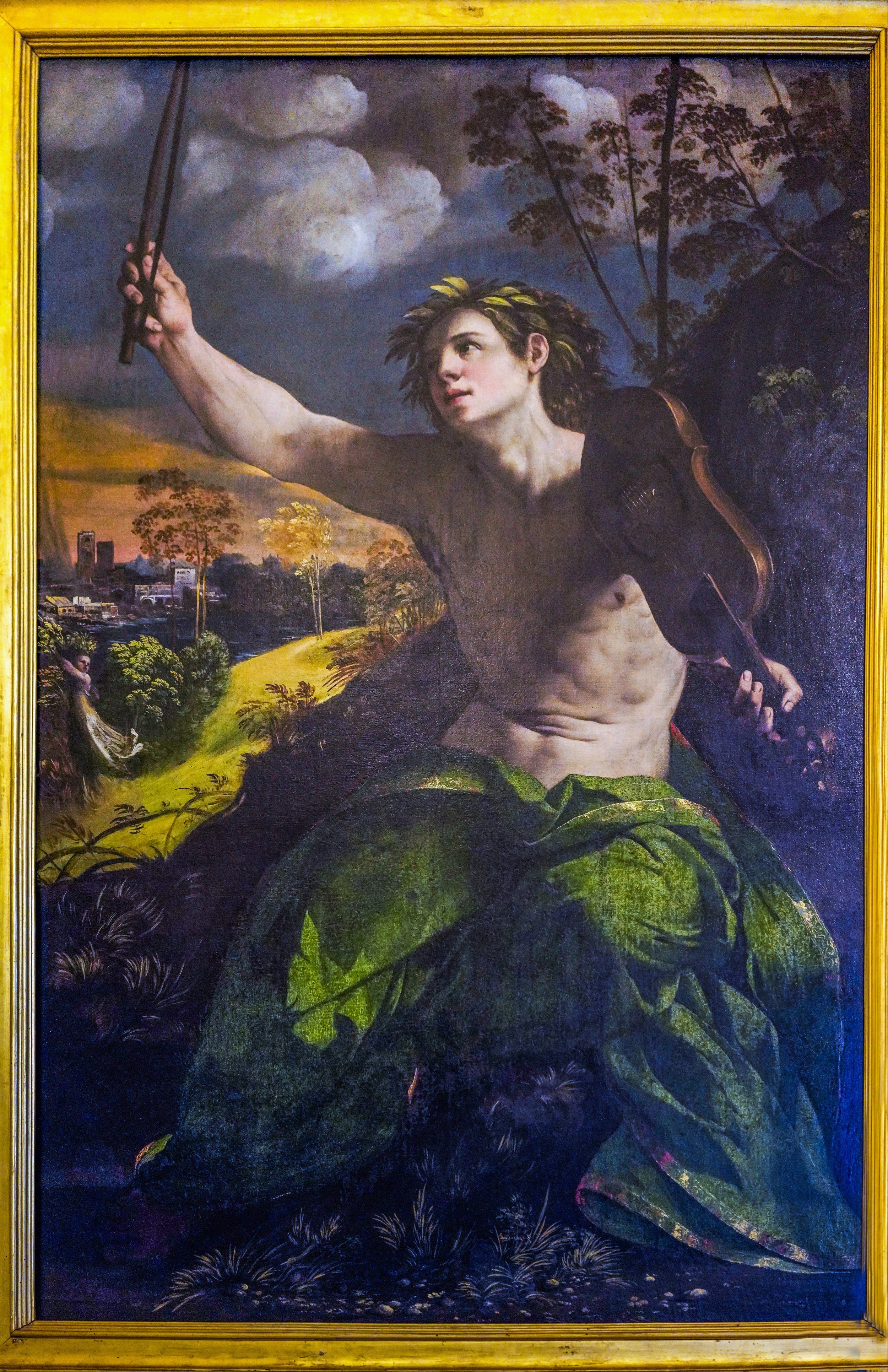
Dosso Dossi tells the mythological story of Apollo and Daphne with Daphne in the left background fleeing from the attentions of Apollo as she transforms into a Laurel tree. Apollo, the god of poetry, plays the lyre, raising his bow aloft. Apollo’s green mantle, the edge of which is decorated with thin gold thread, matches his laurel crown, which refers to the transformation of Daphne into the tree that had become sacred to him.
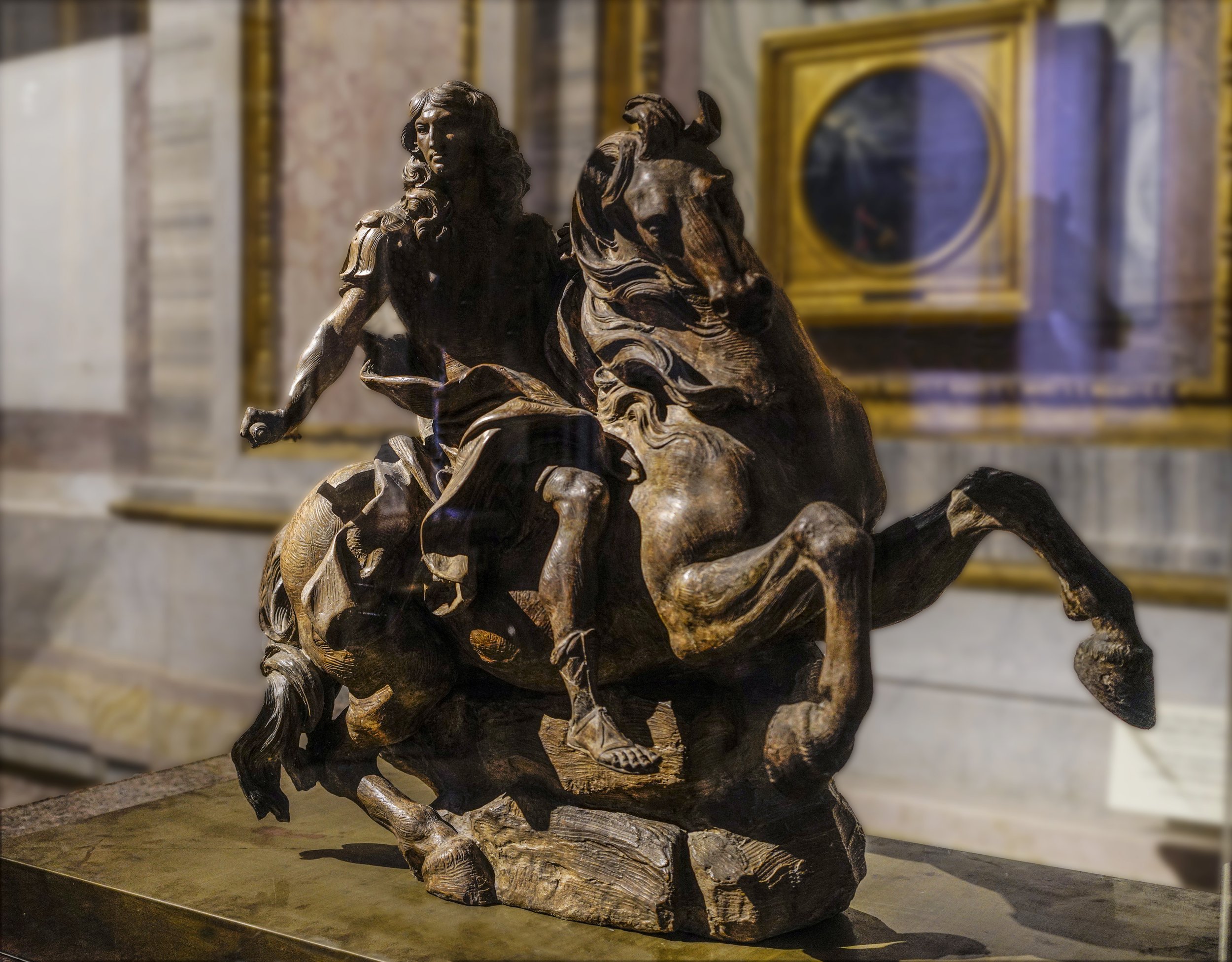
The terracotta model for the equestrian monument to Louis XIV was created by Bernini, already in his seventies, in late 1669 and 1670. The sculpture of the Sun King on horseback was ordered during a trip to Paris by Bernini in 1665. Bernini decided to show him on the Mount of Glory controlling his galloping horse, his sceptre held horizontally; a symbol of regal equity.

Bernini prepared an equestrian statue of King Louis XIV dressed as a Roman General. The king was not at all satisfied. It was transformed by Francois Girardon into a statue of legendary Roman hero Marcus Curtius and exiled to the other end of a large pond, nowadays outside the grounds of the Palace of Versailles. Girardon’s changes included placing a Roman helmet on the head, trimming the long hair, and modifying some features of the face, including the reduction of the size of the Bourbon nose.
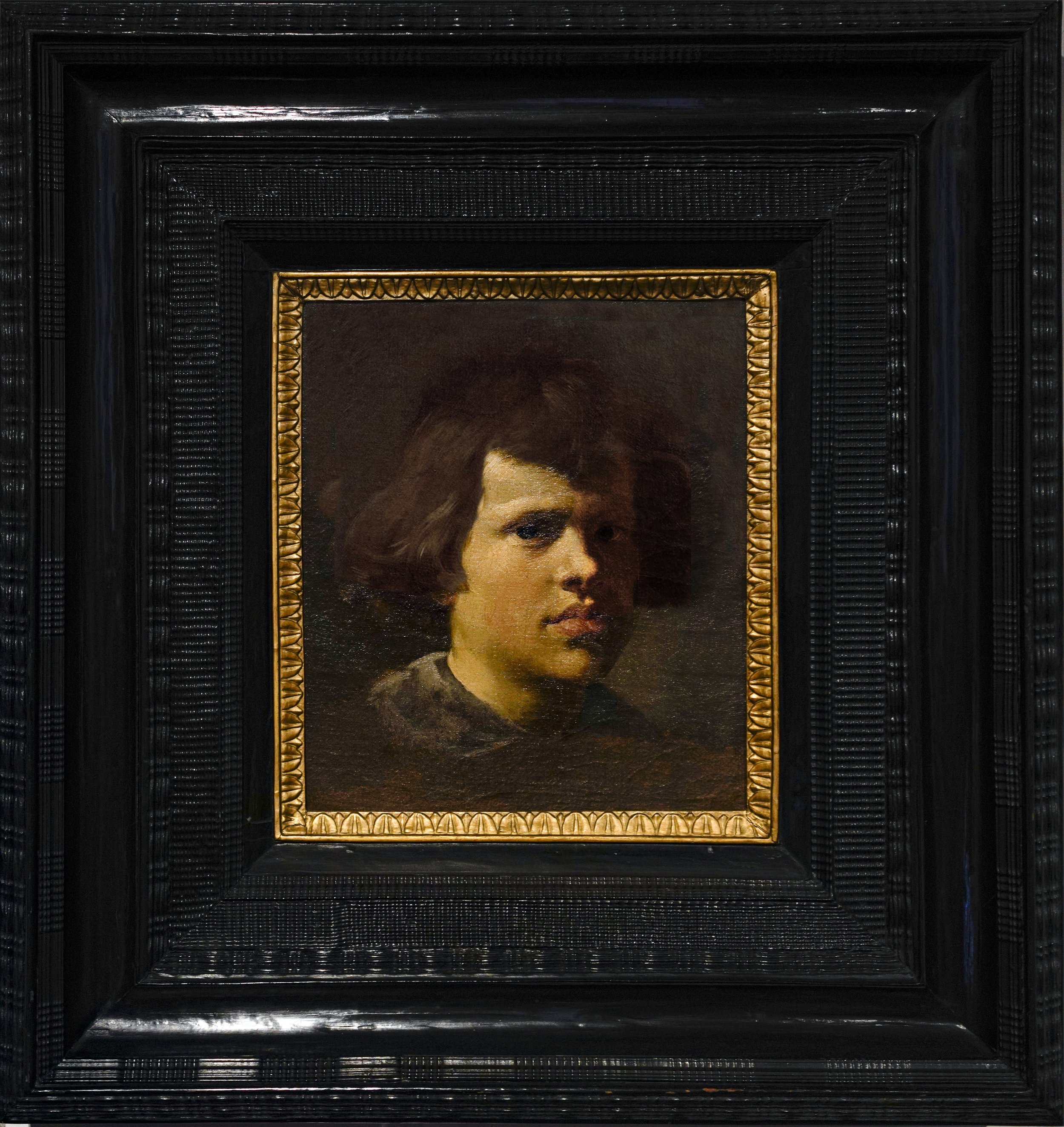
Portrait of a boy by Bernini came from the collection of Prince Chigi. The identity of the boy portrayed is unknown but some critics believe him to be a younger brother of Bernini. Rendered with rapid, dense brushstrokes, the boy’s face is characterized by an extraordinary candor, with an intense expression.
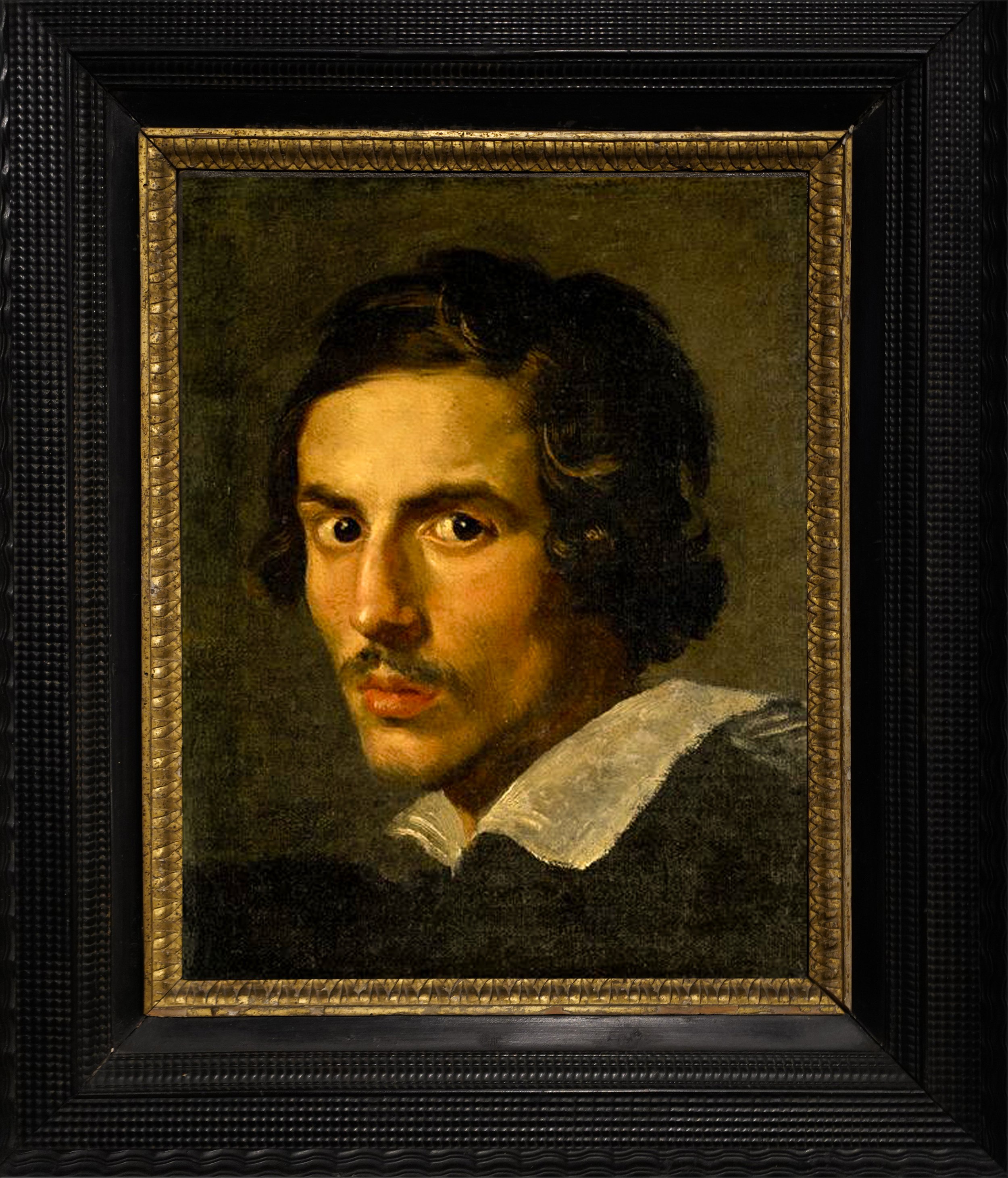
This work is Gian Lorenzo Bernini’s Self-portrait at the age of roughly 25; it is believed to be one of the artist’s first attempts at painting. Critics have proposed that it may have been executed at about the same time as the famous marble David, given the tense gaze which characterizes the face in the Biblical hero, an expression which Bernini studied on himself.
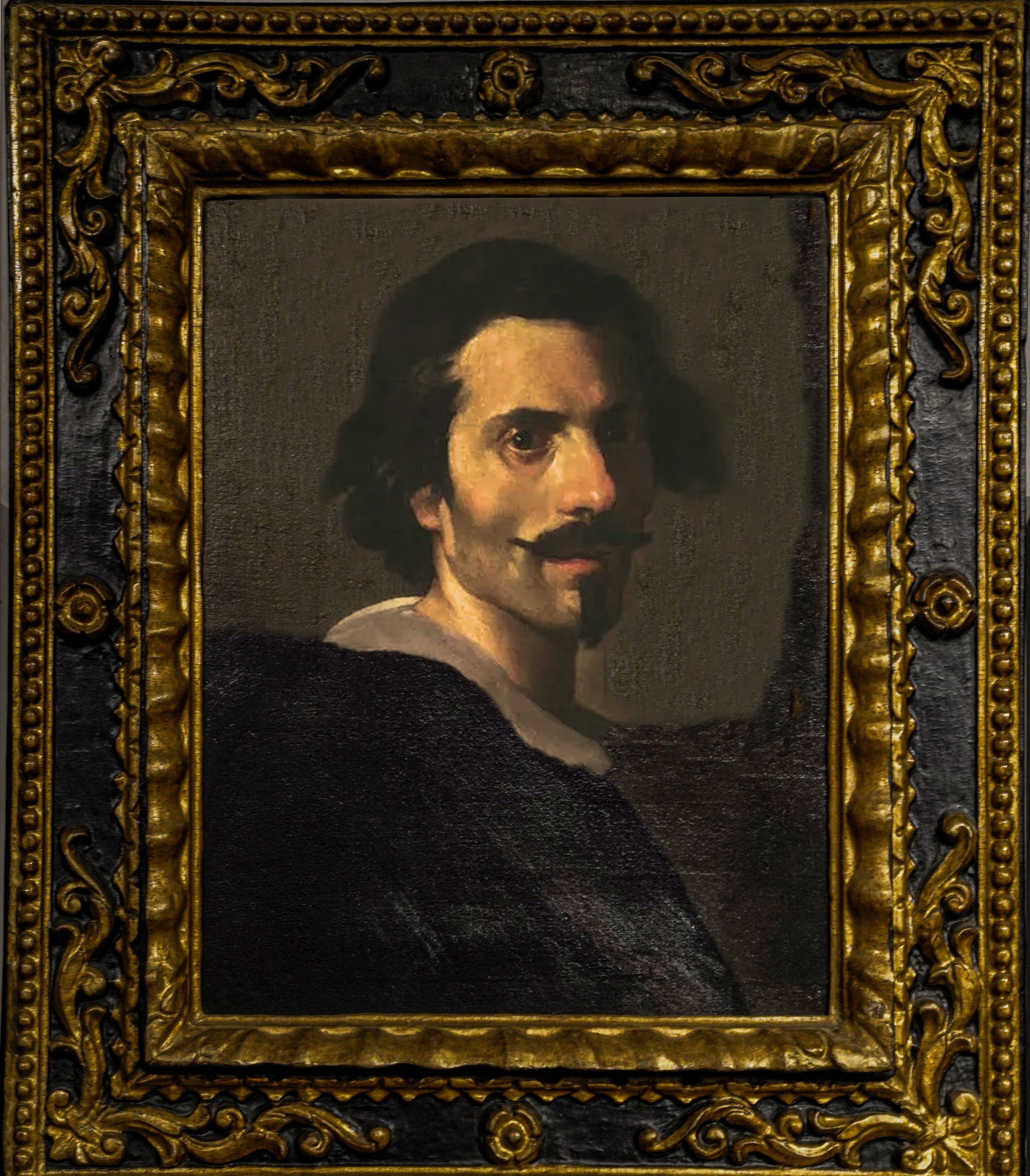
The Self-Portrait at a Mature Age by Bernini appeared on the old 50,000-lira banknotes. The background, white shirt collar, and dark outer clothes are rendered with just a few brushstrokes, as Bernini has focused on the face, avoiding details that could distract him or the observer. Between about 1620 and 1640, Bernini devoted himself to painting, executing up to 200 works. Currently, only about a dozen paintings by the artist are known to exist.
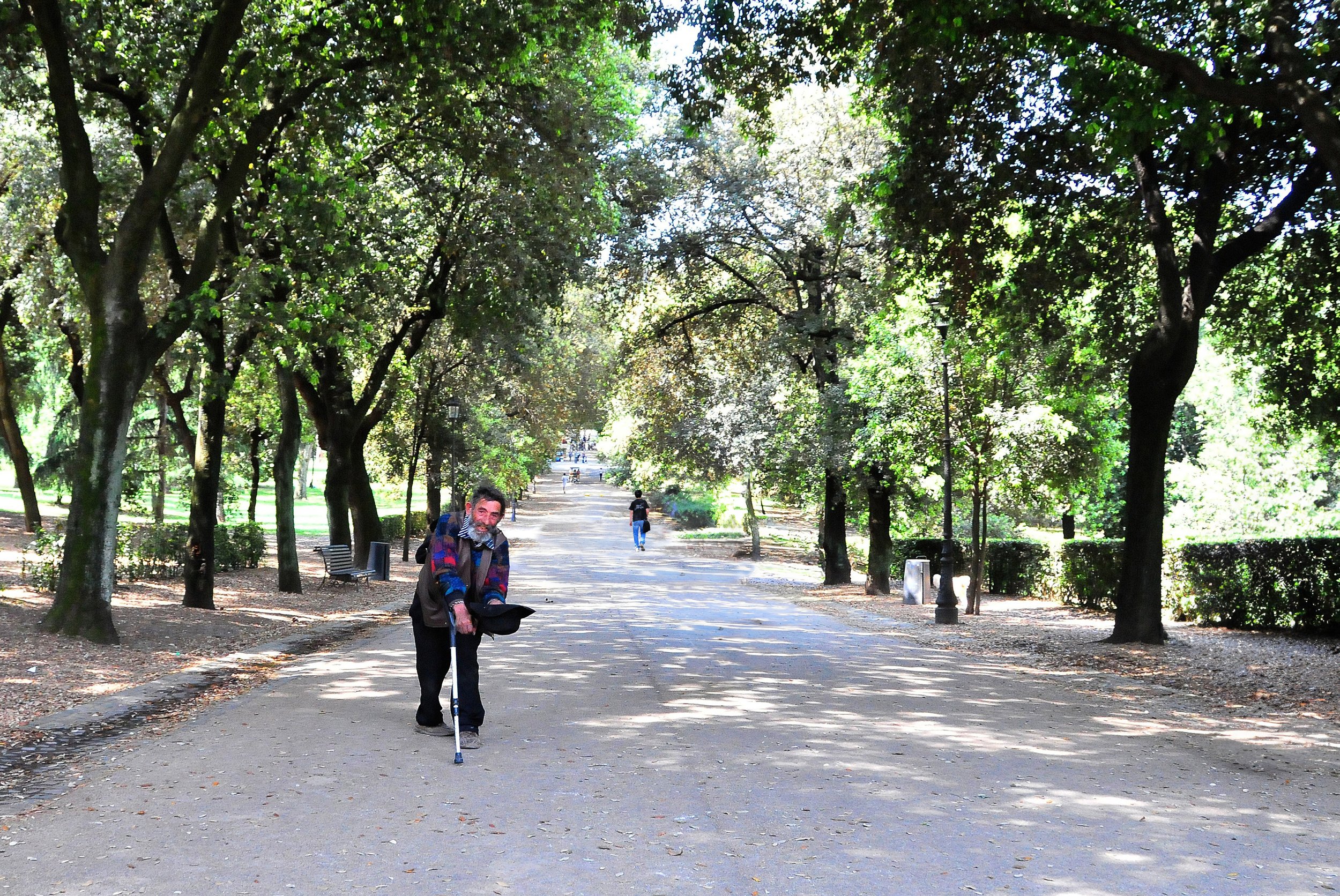
Leaving the Galleria Borghese we are reminded of how far away the wonders of art can sometimes takes us from the calamities of life.
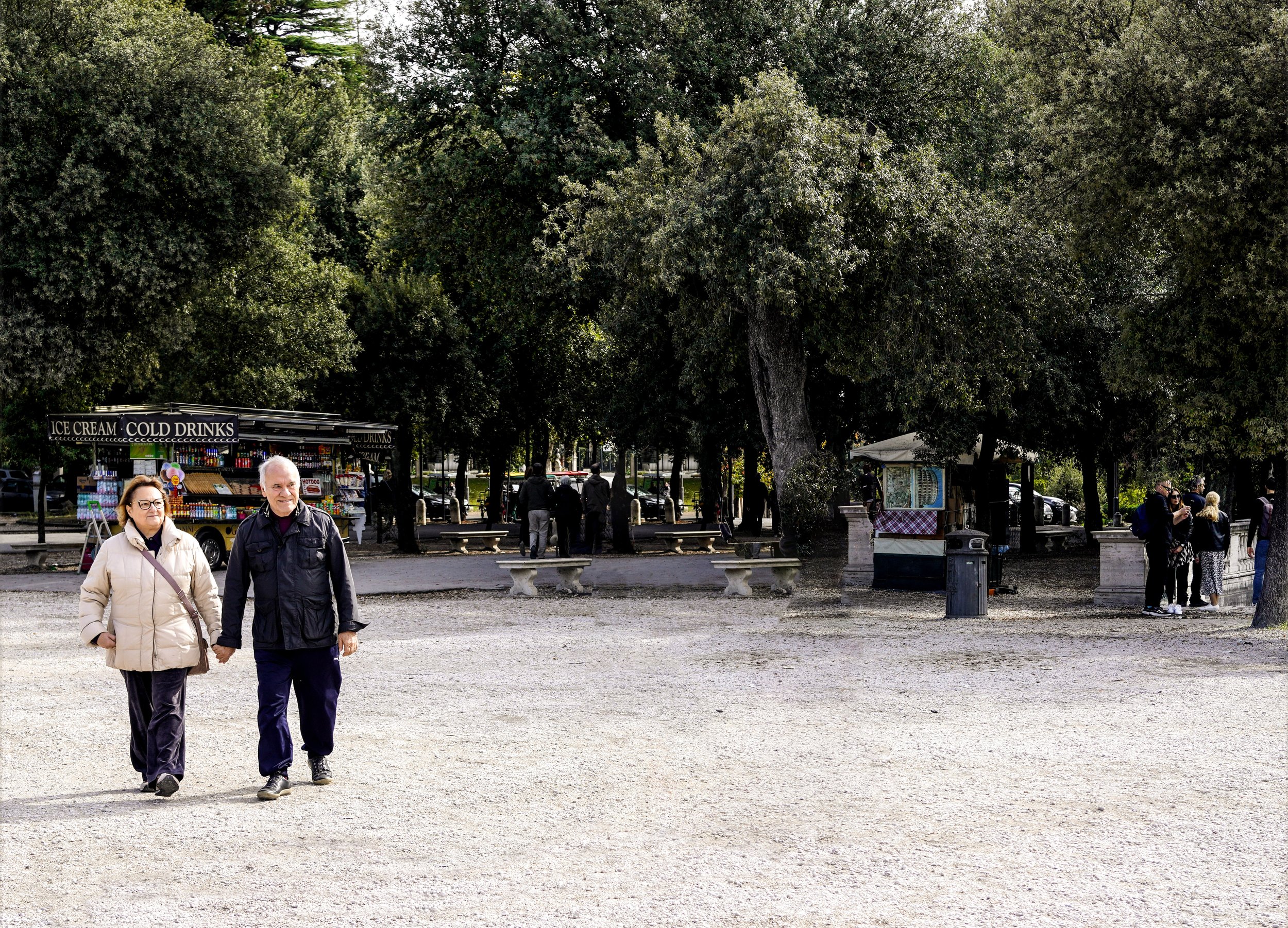
The Pincio (Pincian Hill) is located in the gardens of Villa Borghese. The After leaving the Galleria Borghese, a walk through the Pincio Gardens to the Pincio Terrace provides one of the most favorite panoramic viewpoints in Rome, including the Piazza del Popolo immediately below and a view to the Vatican.
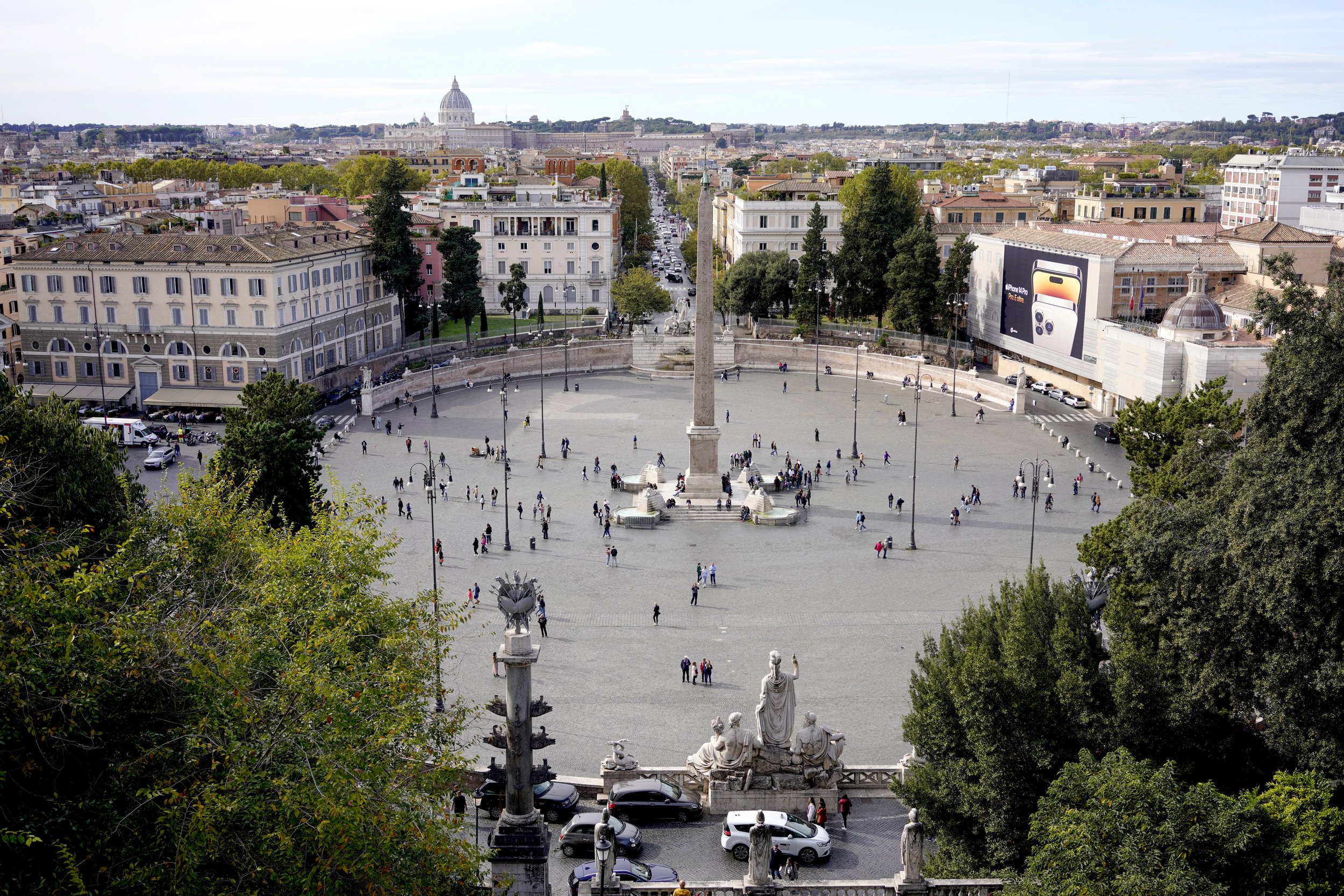
Below the Pincio Terrace, is the spacious Piazza del Popolo. On the north side of the Piazza is northern gate of Rome, adjacent on the east of the entry to the Parish Basilica of Santa Maria del Popolo. In the center of the Piazza is the Flaminio Obelisk of Sety I, and on the southern end, the Twin Churches of Santa Maria in Montesanto and Santa Maria dei Mircoli.
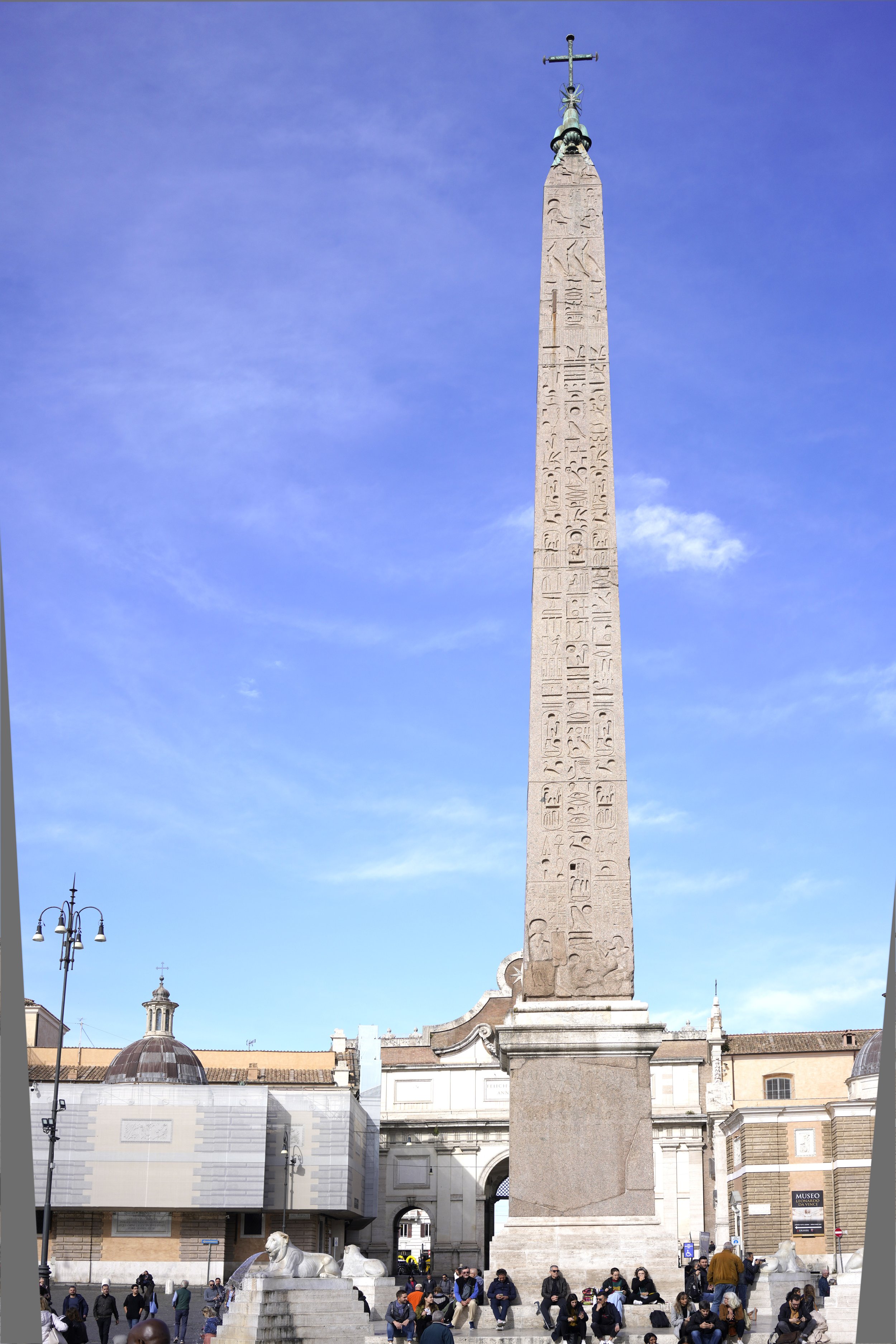
The Flaminio Obelisk is one of the thirteen obelisks in Rome. Built for the temple of the Sun, or Ra, in Heliopolis in Egypt, it has a height of 85 ft. and, with the base and the cross, reaches 119 ft. The obelisk is red granite, and its sides were decorated with hieroglyphs by order of the pharaohs Seti I and his son Ramses II. The obelisk was brought to Rome in 10 BCE by command of Augustus and placed on the spina of the Circus Maximus. It was rediscovered in 1587, broken into three pieces, and was erected in the Piazza del Popolo by Domenico Fontana in 1589, at the command of Pope Sixtus V.
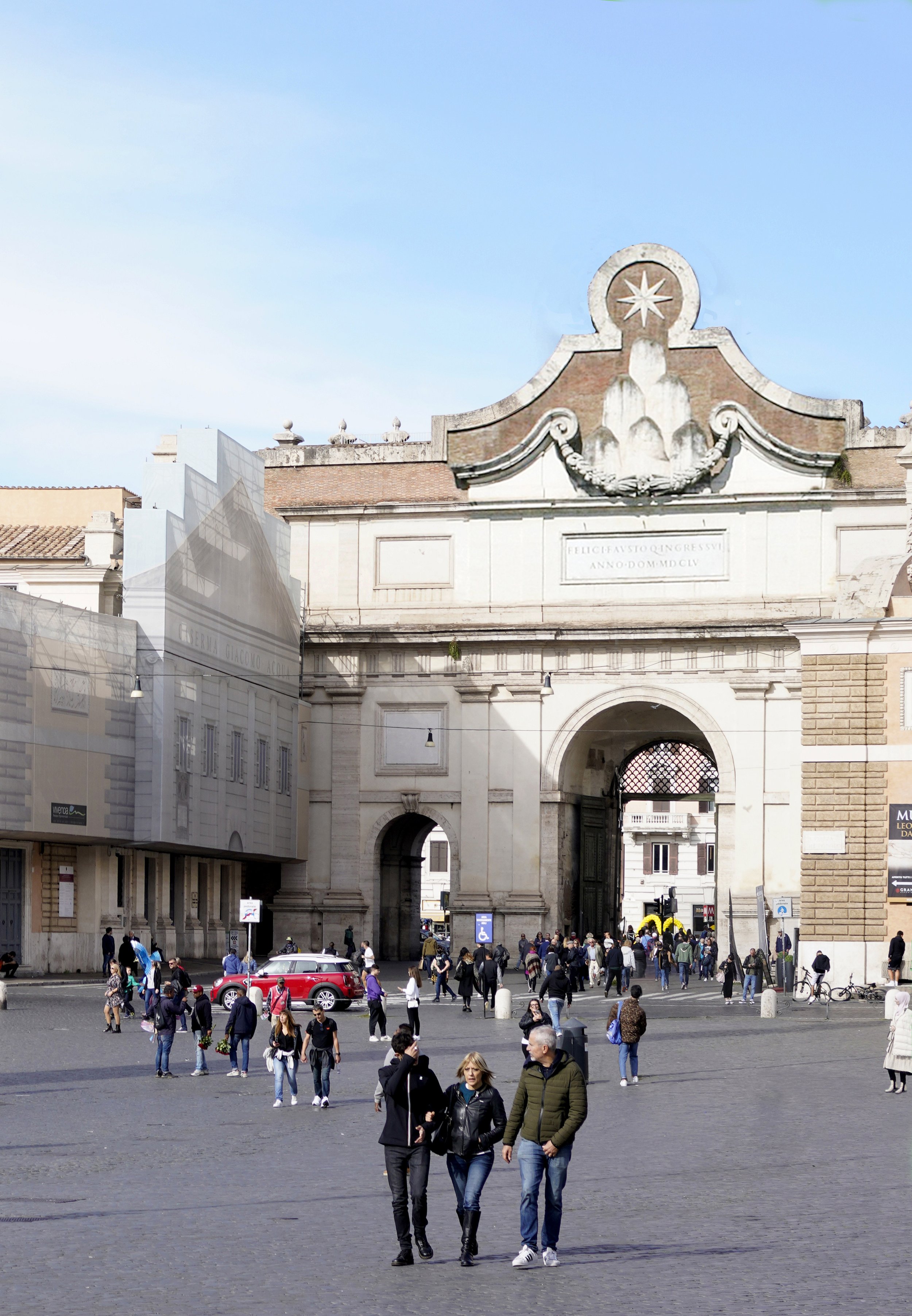
The inner façade of the Porta del Popolo (Porta Flaminia) was designed by Gian Lorenzo Bernini for Pope Alexander VII on the occasion of the arrival in Rome of the abdicant and newly Roman Catholic convert, queen Christina of Sweden, on 12/23/1655. As a welcome to the Queen, an inscription was carved on the attic of the inner façade, Felici. Fausto. Q. Ingresssui - For a felicitous and auspicious entry, which also included the coat of arms of the Pope's family, the the House of Chigi (the six-pieces mount under the eight-rays star ).
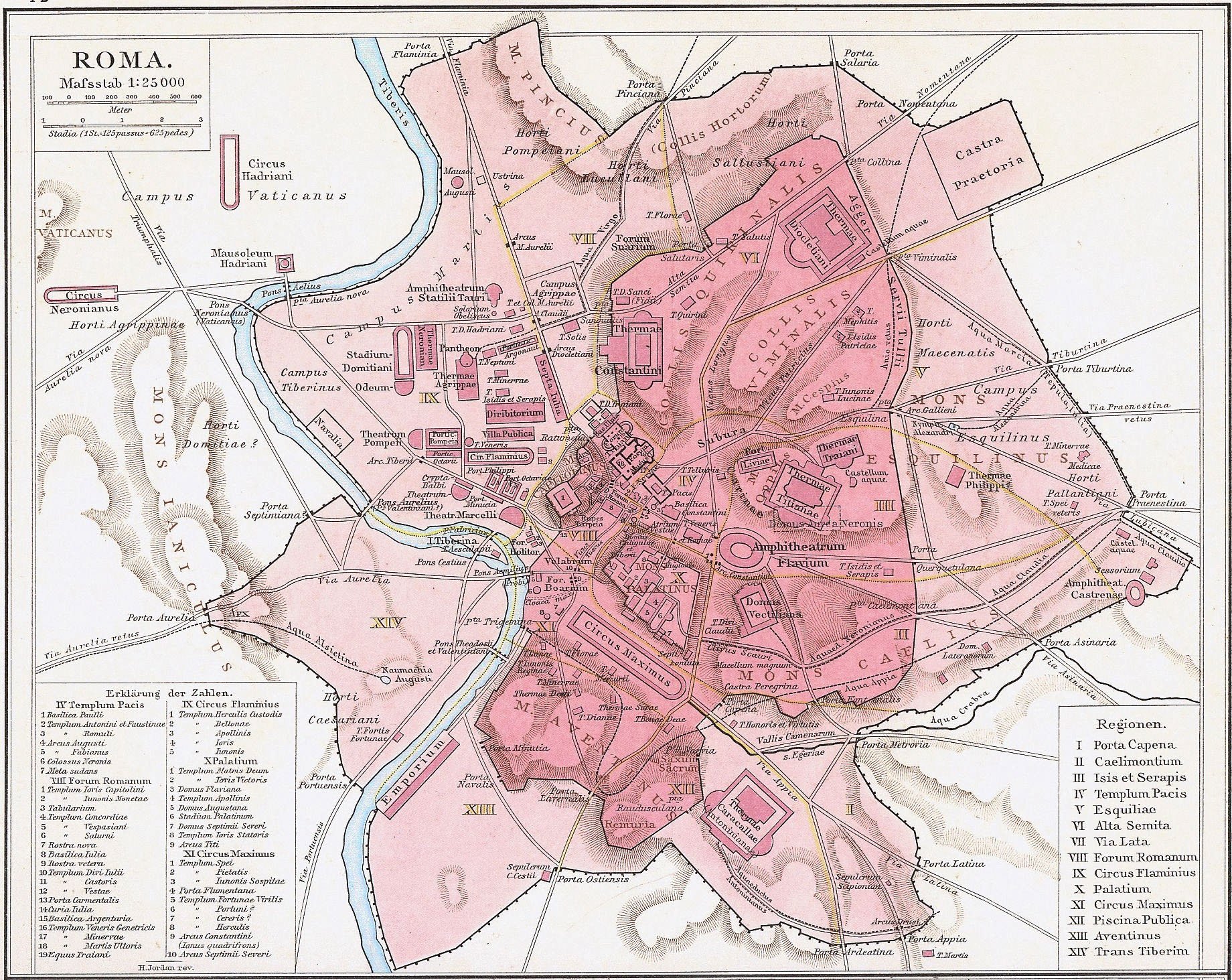
The Aurelian Wall, a line of city walls built between 271 CE and 275 CE in Rome, Italy, during the reign of the Roman Emperor Aurelian. They superseded the earlier Servian Wall built during the 4th century BCE, shown within the Aurelian Wall surrounding the dark pink area. The Aurelian Walls enclosed all the seven hills of Rome plus the Campus Martius and, on the right bank of the Tiber, the Trastevere district (see Porta Septimiana, middle-left). .
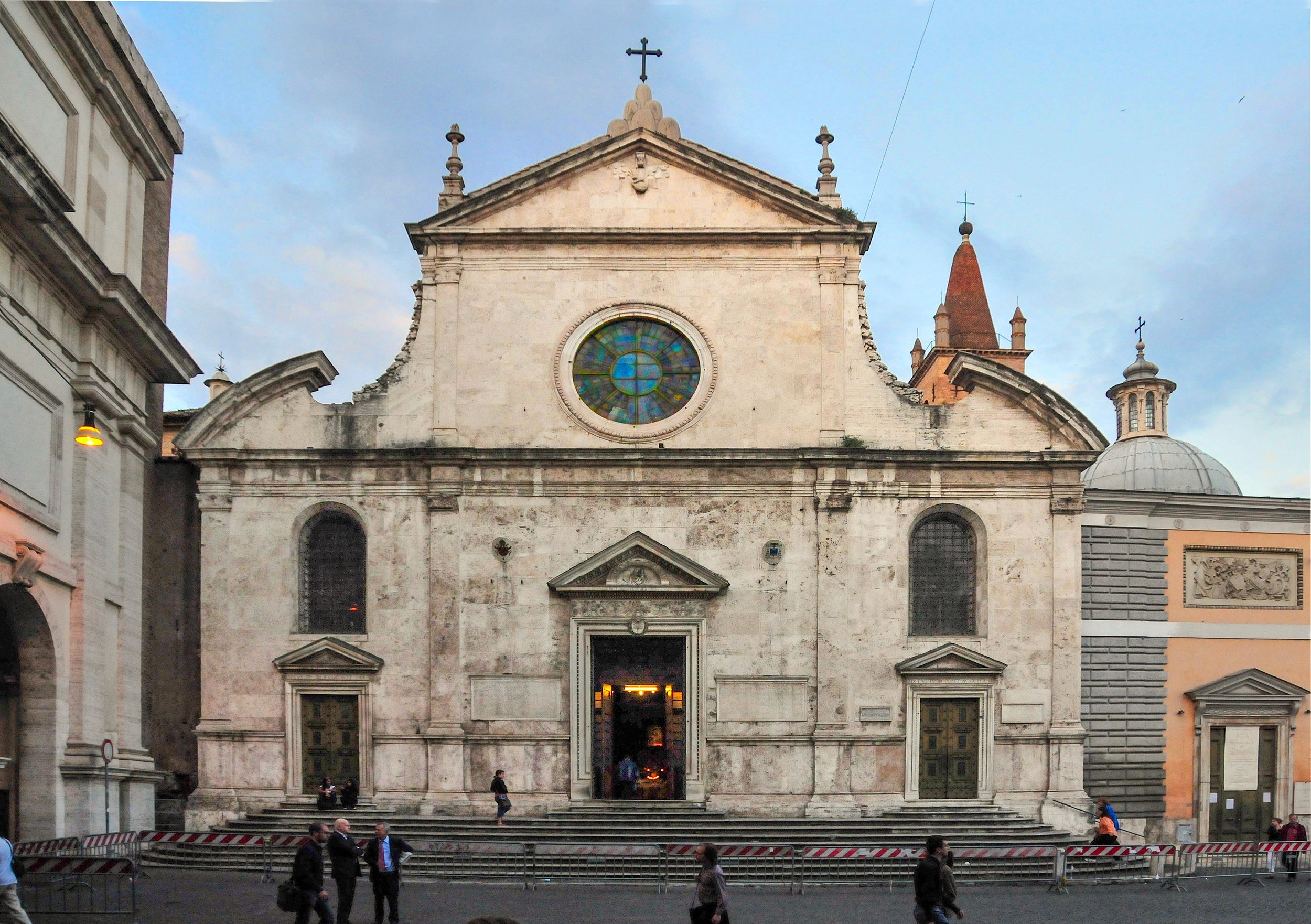
The Basilica of Santa Maria del Popolo stands in the Piazza del Popolo next to the northern gate of Rome (Porta del Popolo). In 1099 Pope Paschal II decided to destroy the Domizi Enobarbi Mausoleum, an ancient memorial of the first Imperial Age, where Nero was buried. Rumors were spreading that the area was cursed by the Emperor Nero’s ghost. To solve this unusual problem, Paschal II exhumed the body of Nero and burned the remains. To bless the area he had a Chapel built on that very same site. In the 15th century, the church was completely reconstructed under the papacy of Sisto IV.

The Chigi chapel was designed by Raphael for his friend and patron, banker Agostino Chigi as a private chapel and family burial place. Raphael's cartoons were executed by a Venetian craftsman, Luigi da Pace in 1516.
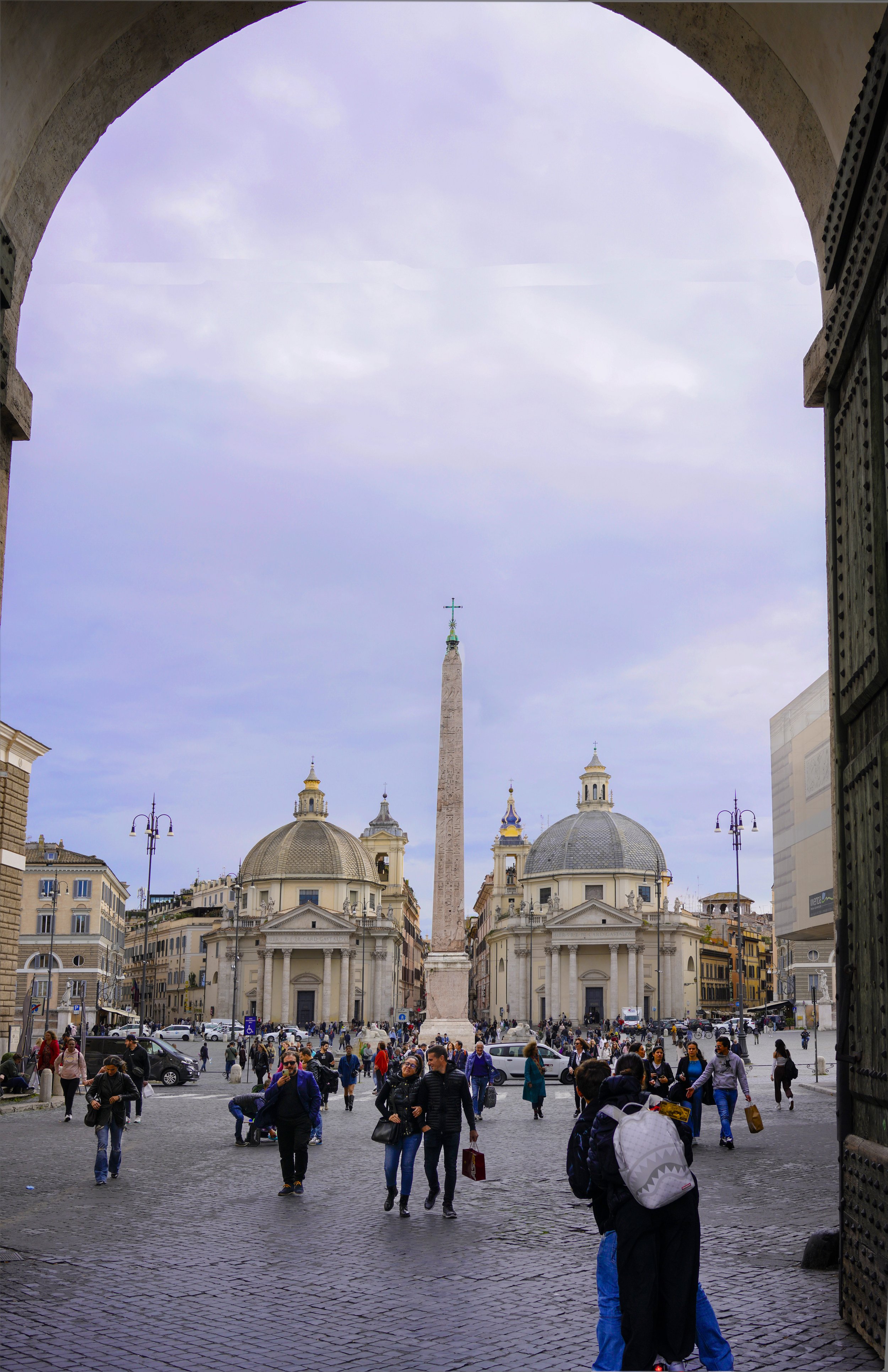
On the south end of the Piazza di Popolo, stand the Santa Maria in Montesanto (built 1662 to 1675) and Santa Maria dei Mircoli (built 1675 to 1681) known as the Twin Churches because of their identical exterior structure. Originally part of a design for a monumental passage of Via del Corso, the churches were commissioned by Pope Alexander VII and financed by Cardinal Girolamo Gastaldi.
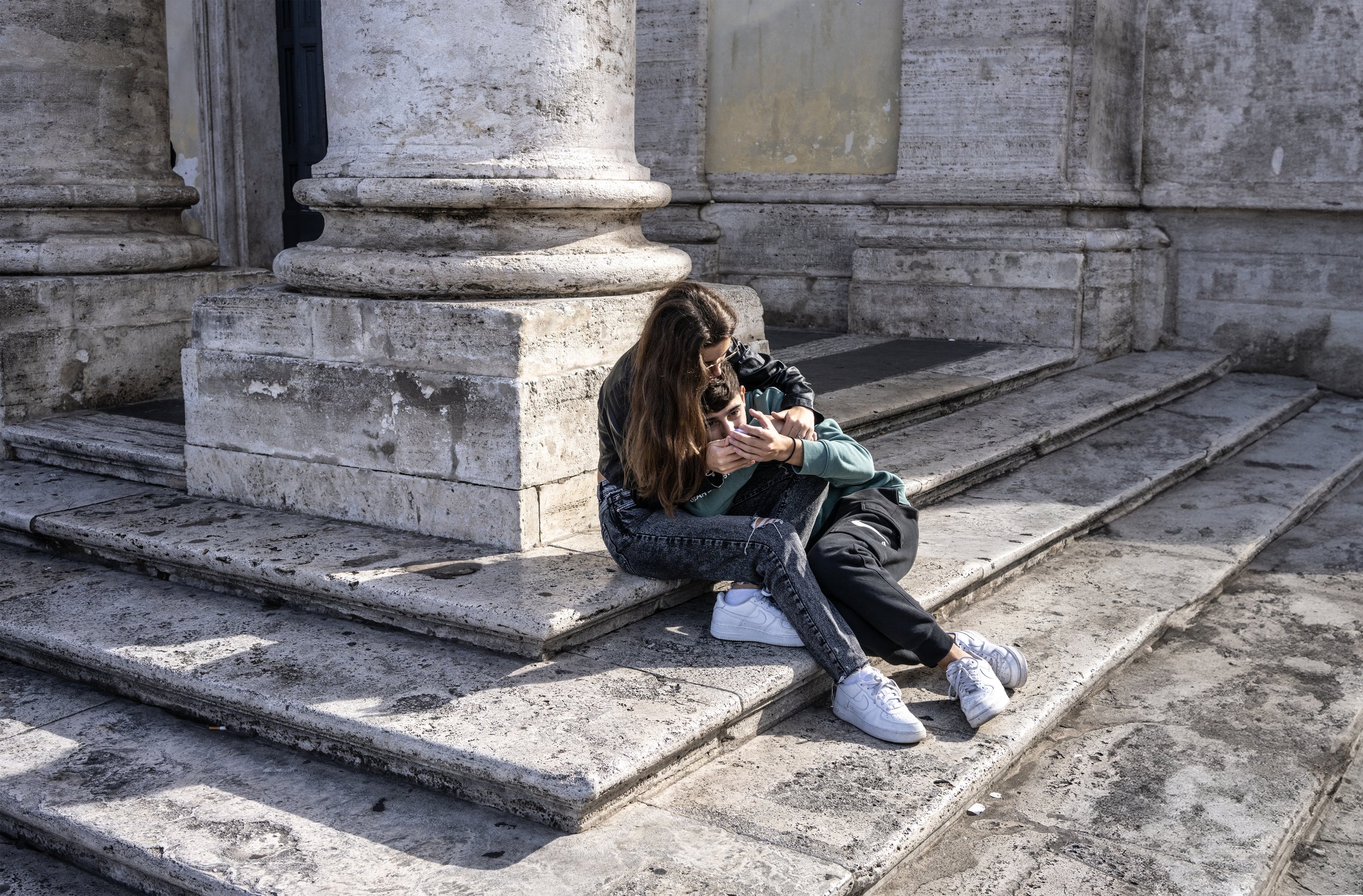
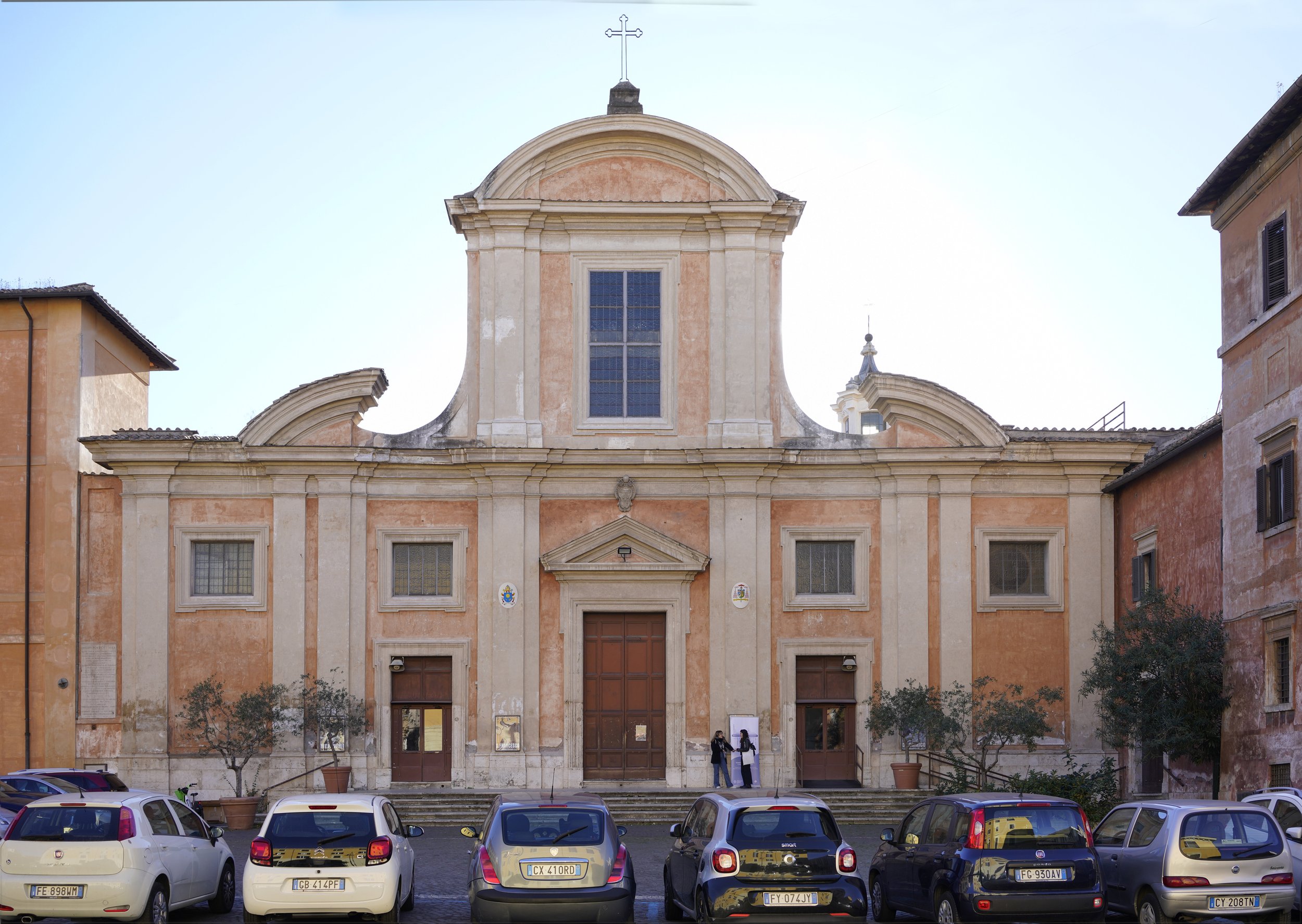
The Church of San Francesco a Ripa is dedicated to Francis of Assisi who is said to have stayed in the adjacent convent in 1219, and in his cell you can still see the rock that he purportedly used as a pillow and his crucifix. The construction of the present church was begun in 1603 by Onorio Longhi, was finished in 1681–1701 with designs by Mattia de Rossi.

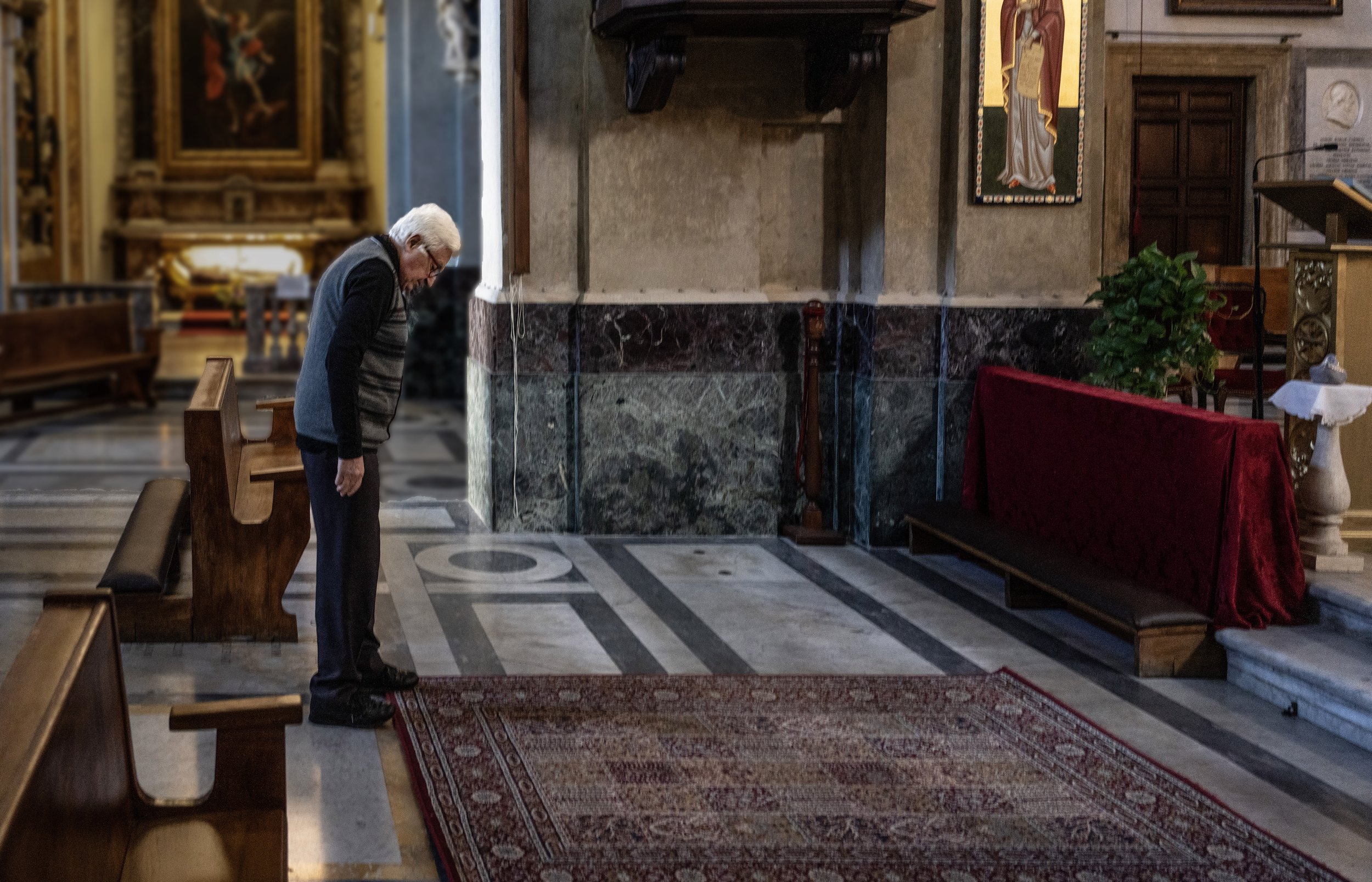
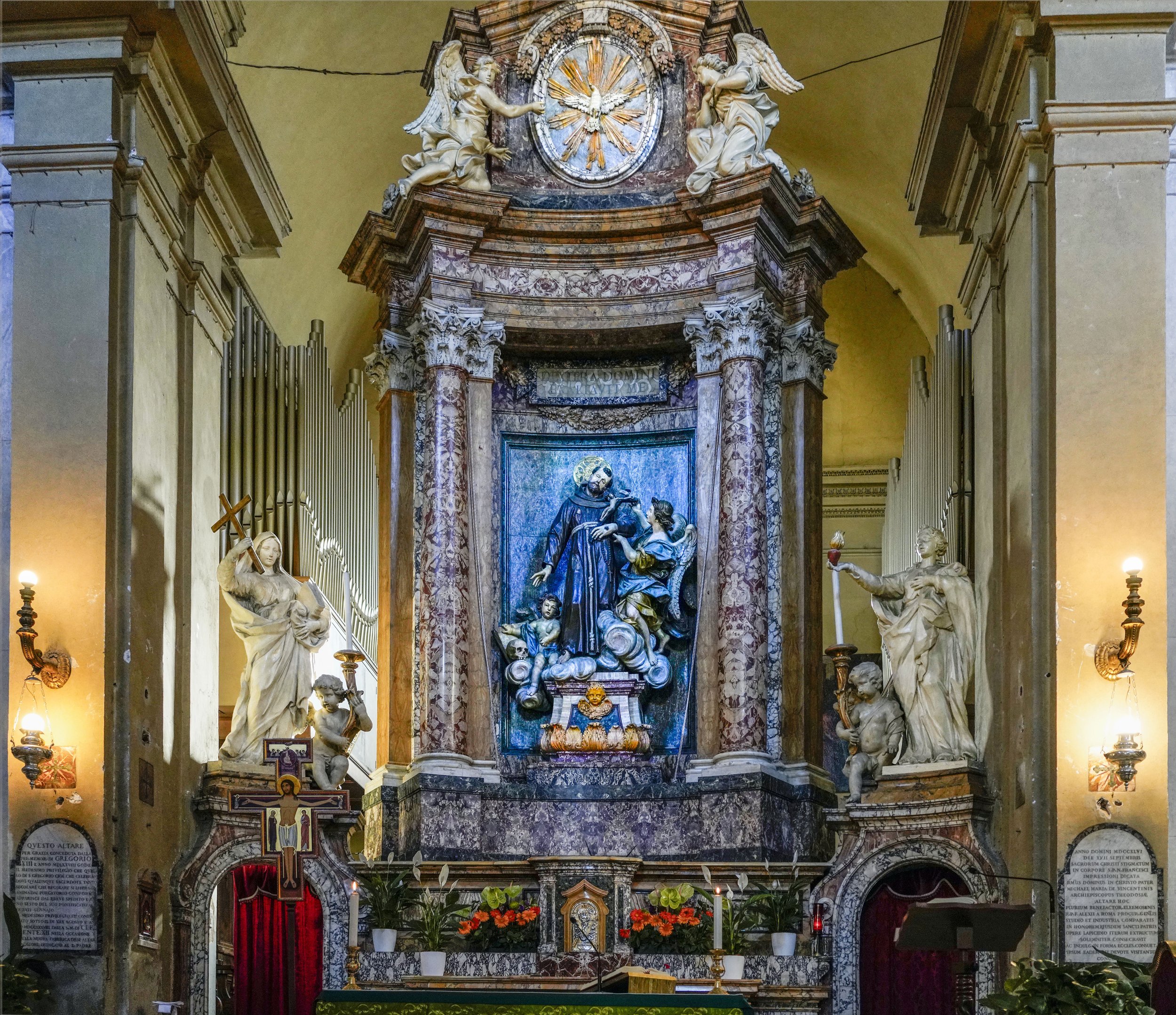
The ornate high altar of San Francesco a Ripa was designed by a Franciscan known as Fra Secondo da Roma. The much older wooden statue (c. 1550) of Saint Francis of Assisi, which serves as an altarpiece, is the work of another Franciscan Fra Diego da Careri. The allegorical statues of Religion (rt) and Charity (lft), which stand atop the arches on either side of the altar, are the work of Fra Secondo.

The Rospigliosi came to Rome from Tuscany after Cardinal Giulio Rospigliosi was elected Pope Clement IX in 1667. The Cappella Rospigliosi-Pallavicini was designed by Nicola Michetti (1675-1758) and Ludovico Rusconi Sassi (1678-1736), and dedicated to the Spanish Franciscan St Peter of Alcántara (1499-1562). St Peter of Alcántara was canonized on April 28th 1669 by Pope Clement IX (r. 1667-69).
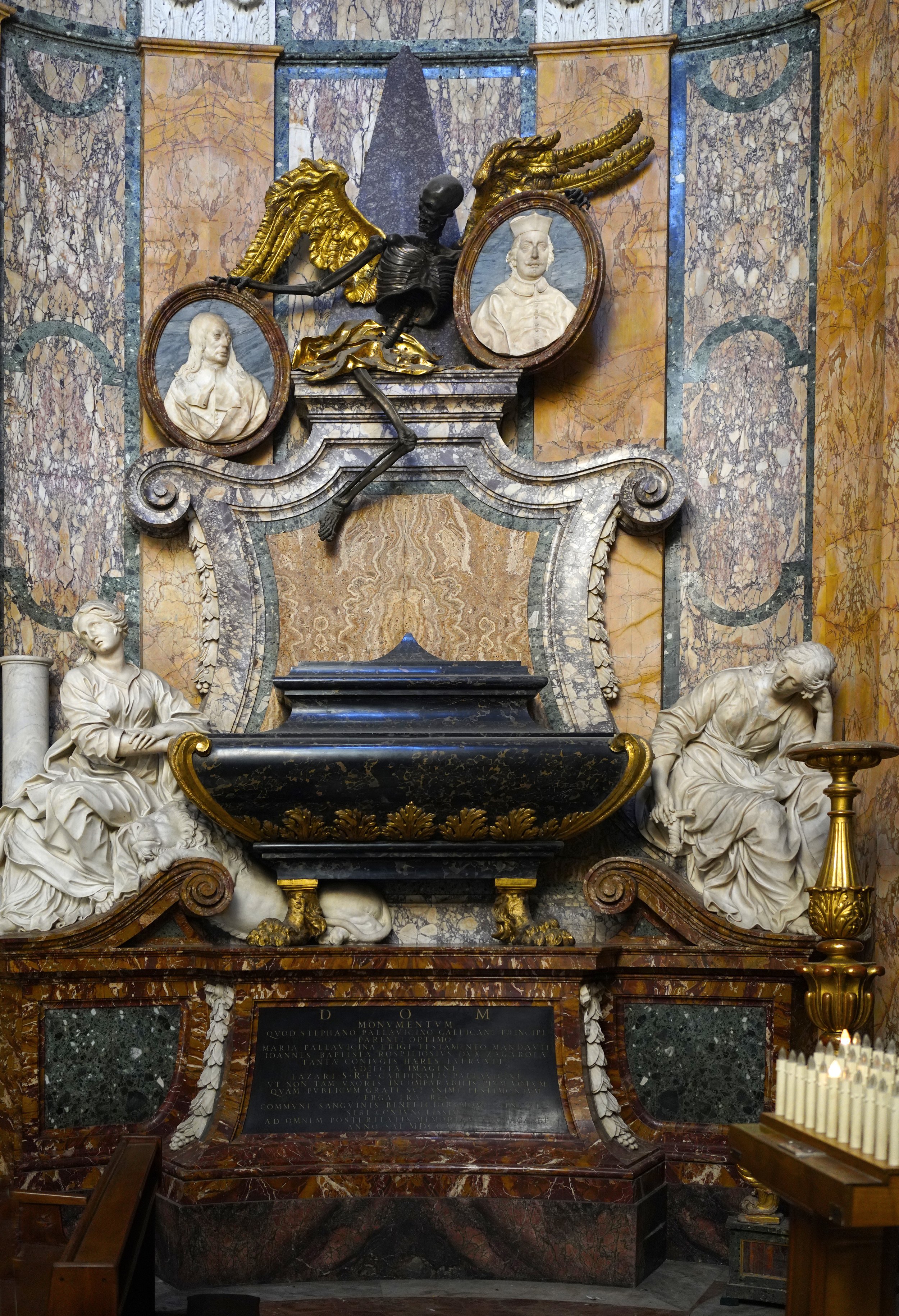
The funerary monuments on the side walls of the Cappella Rospiglioosi-Pallavivini were designed by Michetti and the sculptures are the work of Giuseppe Mazzuoli (1644-1725). The monument on the left, as seen above, is to Lazzaro and Stefano Pallavicini, with allegorical statues of Fortitude and Justice. The bronze skeleton is by Michele Garofolino.

The right wall of the Cappella Rospigliosi-Pallavicini Maria Camilla and Giovanni Battista Rospigliosi was designed by Michetti. The allegorical statues of Prudence and Charity are the work of Giuseppe Mazzuoli (1644-1725). The bronze skeleton is by Michele Garofolino.

Mazzuoli was a skilled student of Gian Lorenzo Bernini and considered by some his successor.
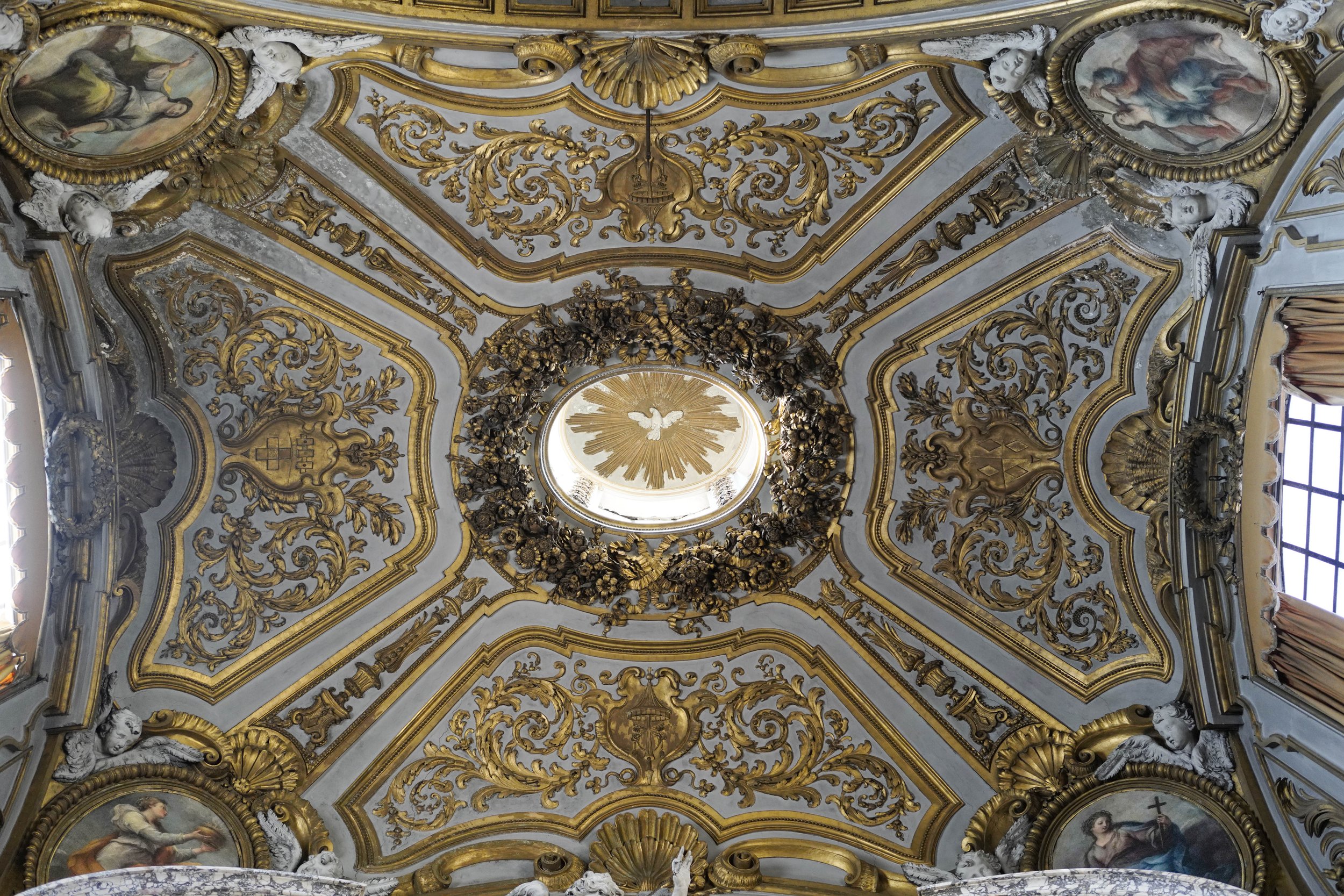
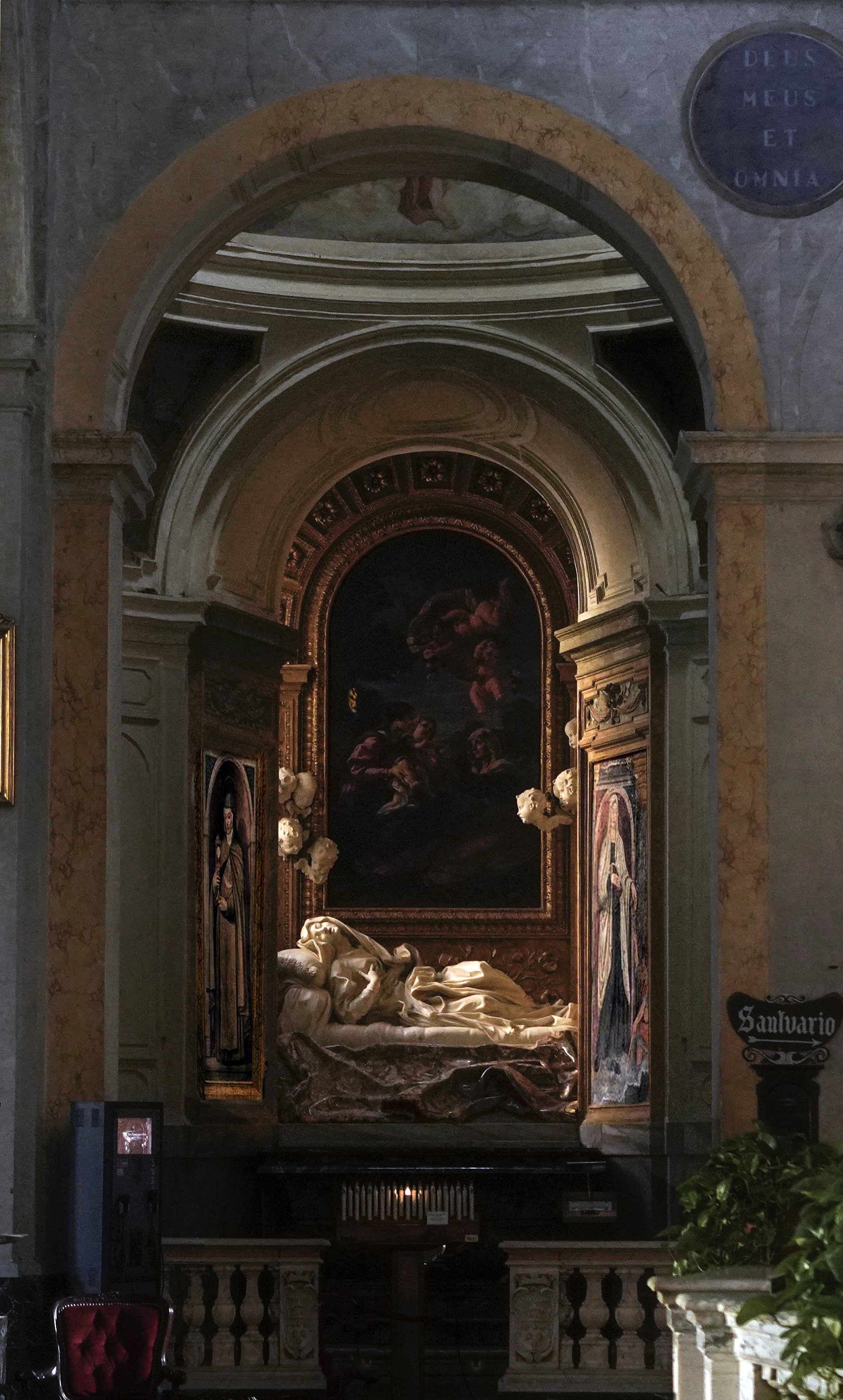
The Cappella Altieri is home to the sculpture of Blessed Ludovica Albertoni (1671-74), by Gian Lorenzo Bernini (1598-1680). The sculpture, and the niche designed for its display, was created by Bernini on commission from Cardinal Paluzzi degli Albertoni Altieri in 1671. The cardinal, a nephew of Pope Clement X, was descended from Ludovica Albertoni. Bernini took on the project without pay. He was 71 years old when he began the work, and it was one of his last sculptures.
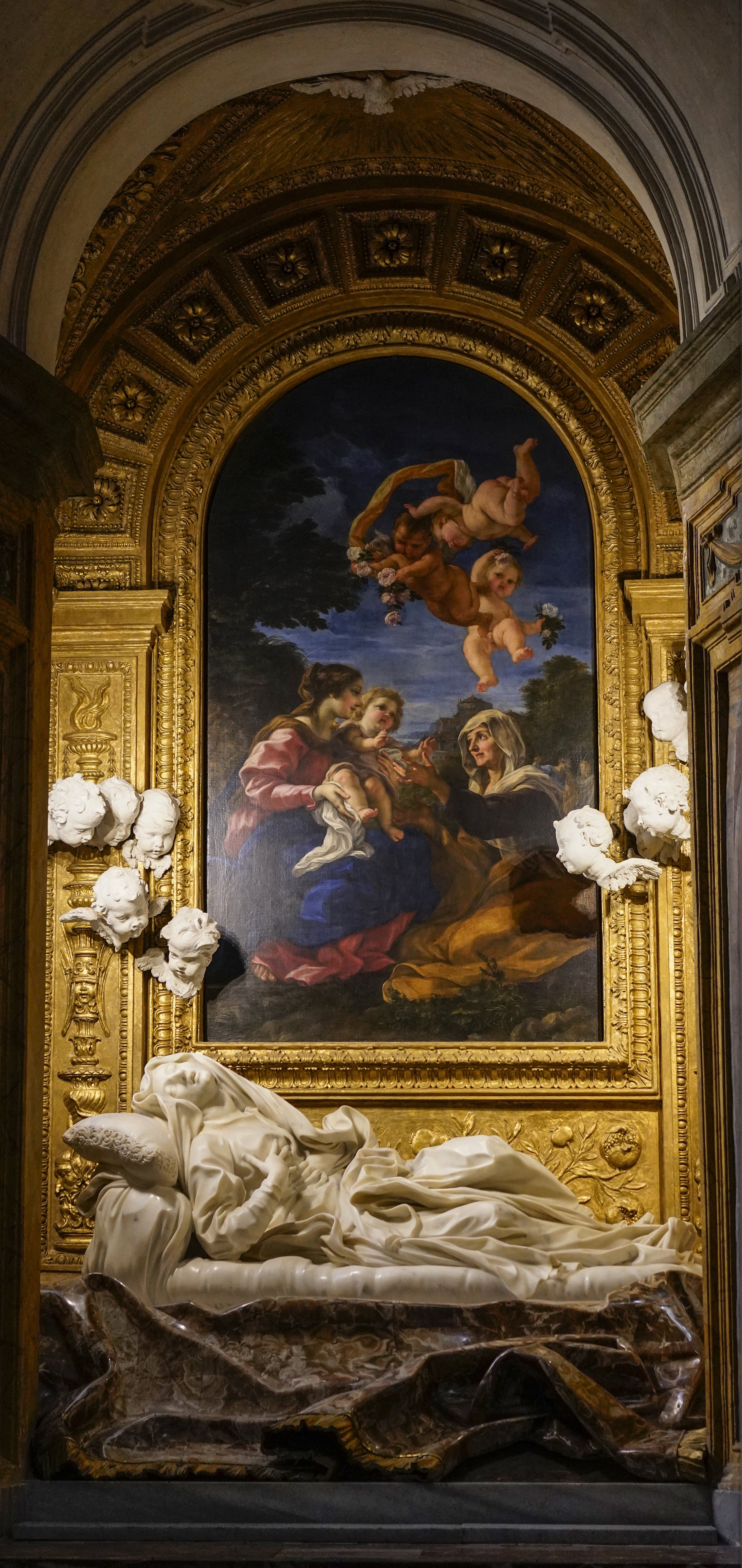
The Altieri Chapel is dedicated to St Anne, mother of the Virgin Mary. The altarpiece depicts the Virgin and Child with St Anne by Giovanni Battista Gaulli, better known as il Baciccia (1639-1709). Also located in the chapel is Bernini’s sculpture of Ludovica Albertoni, a Roman noblewoman who entered the Third Order of St. Francis following the death of her husband. She lived a pious life, working for the poor of the Trastevere neighborhood, under the guidance of the Franciscan friars of San Francesco Church, where she was buried in 1533.
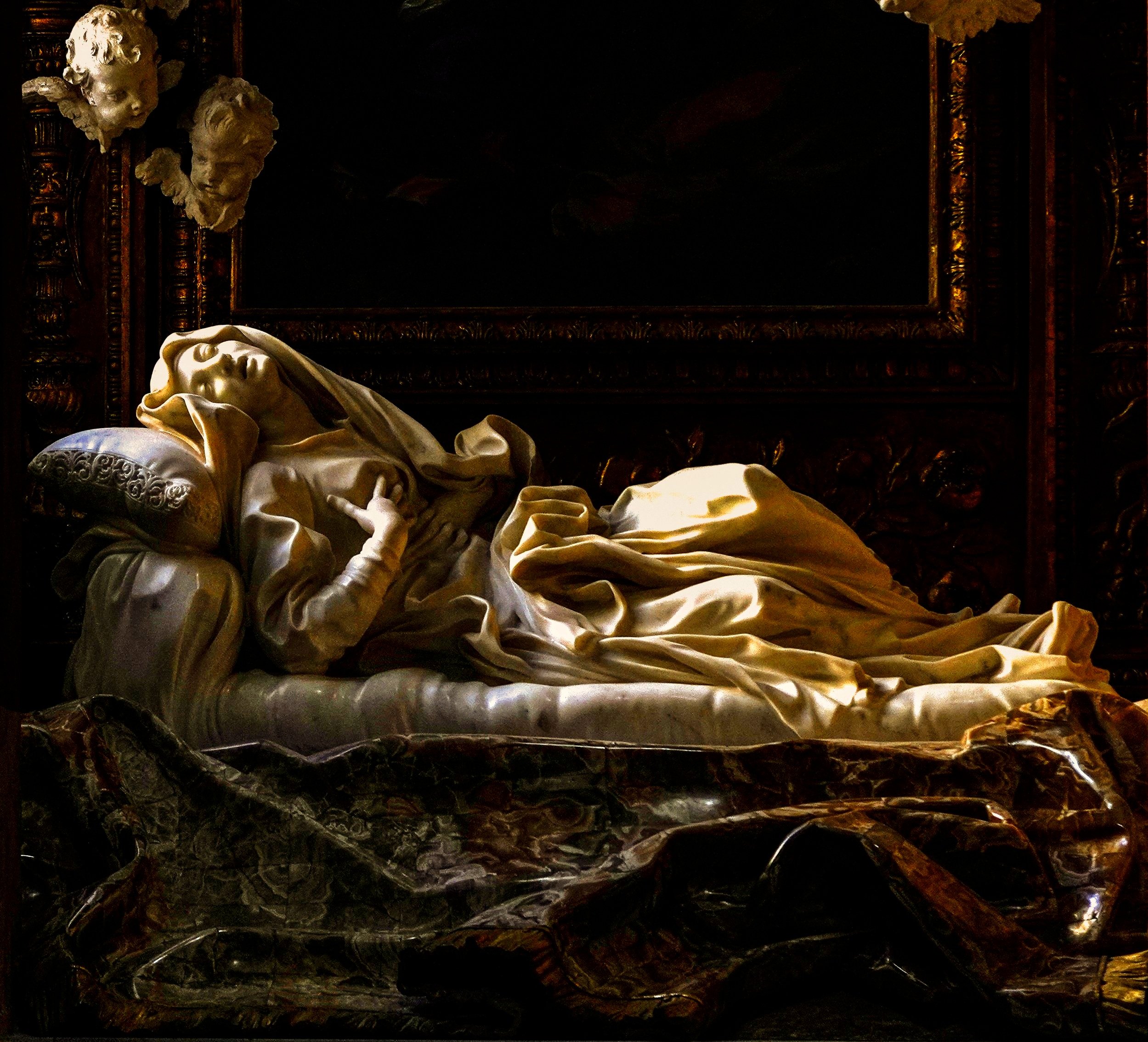
Bernini’s Agony of Blessed Ludovica Albertoni shows the Franciscan nun eternalized in a state of rapture as she reclines, eyes shut, mouth open, one hand touching her breast, taking her final breath. The blessed Ludovica Albertoni is propped up upon a cushion whose plump creases belie the material reality of its unyielding marble. In addition, note how the marble has been transformed into her flowing robes, and how the decorative folded carpet Bernini added below the saint helps to multiply the dramatism.
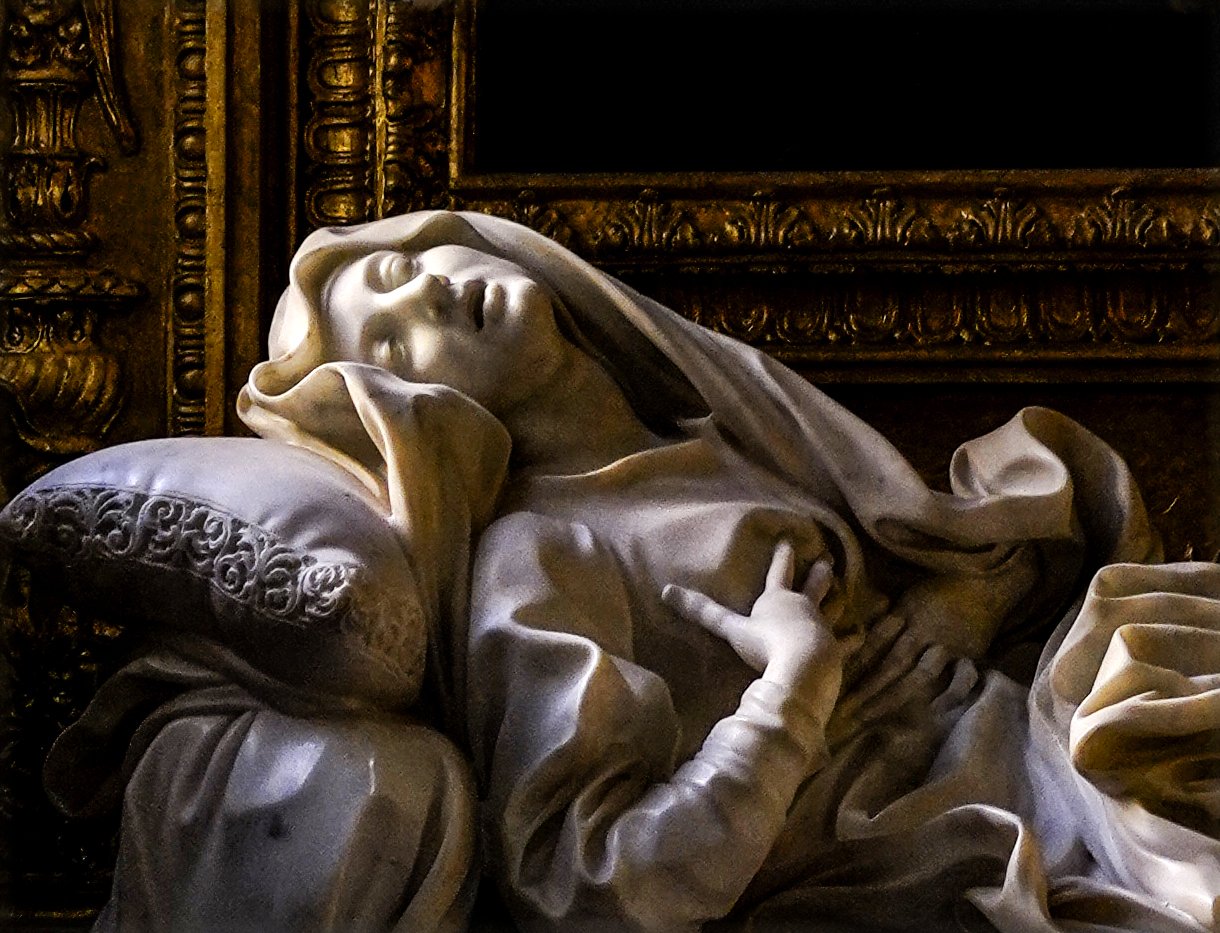
Bernini’s genius presents us the figure of Ludovica Albertoni at the moment she takes her last breath and has the mystical communion with her God. As typical of Bernini’s, the Agony of Blessed Ludovica Albertoni is theatrical and enhanced by the natural light coming from a hidden window above the left of Ludovica’s head, a device designed by Bernini to get this precise effect.
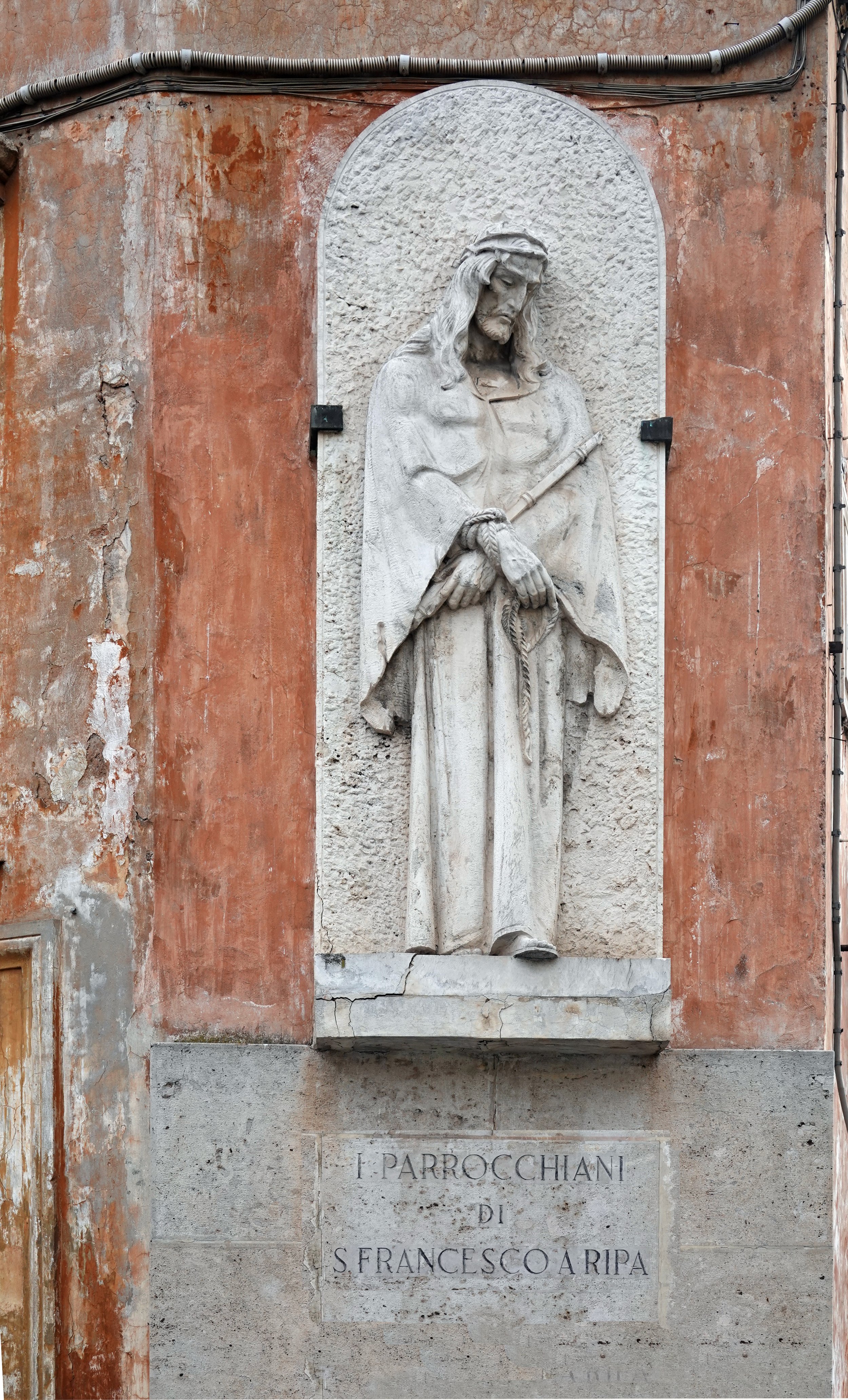

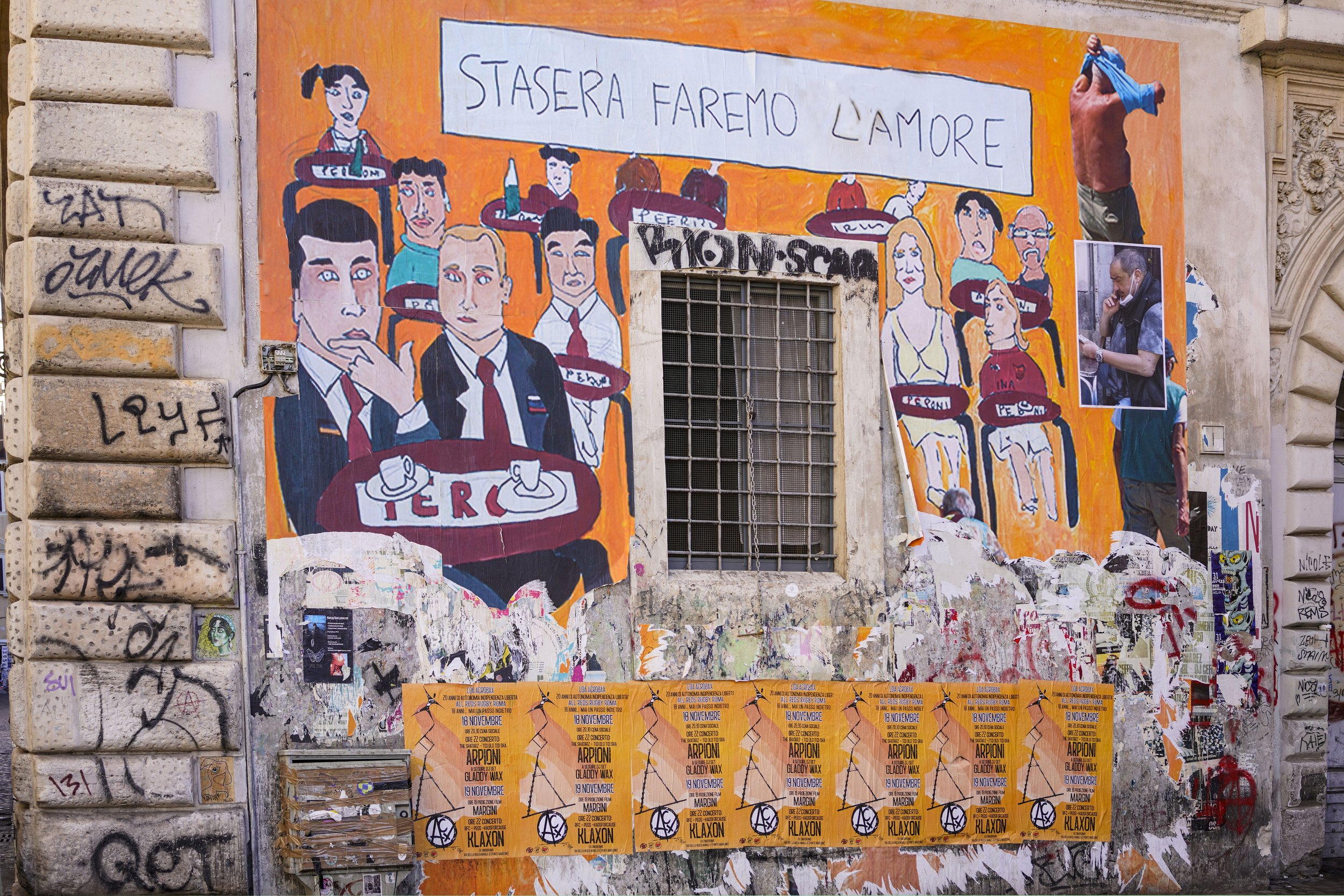
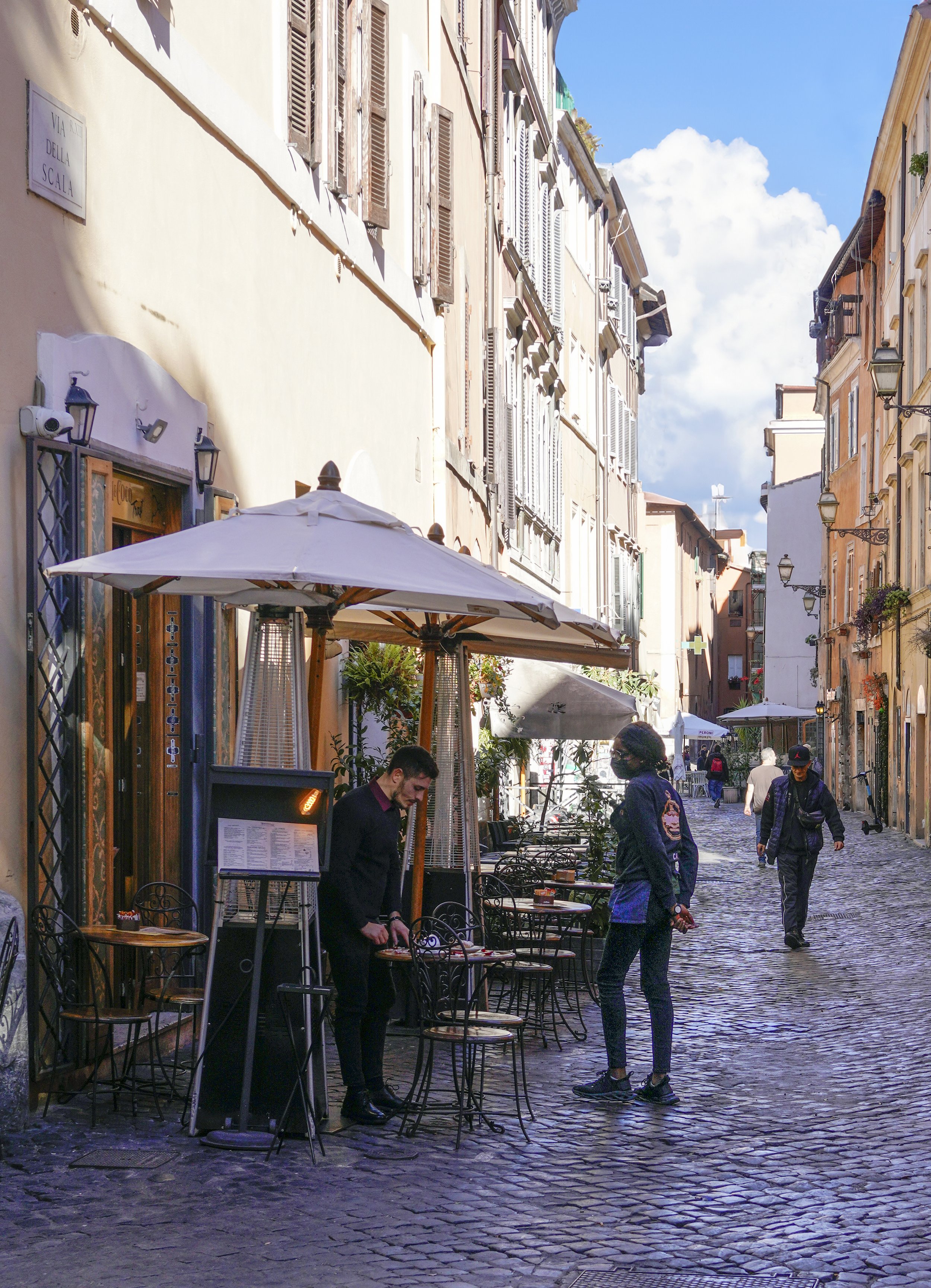
Facing Via della Scala, is Via di Santa Dorotea. The legend says that a baker's daughter, Margherita Luti, lived there at number 20. She was the lover of Raphael Sanzio (generally known in English as Raphael), who portrayed her in one of his most famous paintings, the Portrait of a Young Woman, also known as La Fornarina, which you can admire today inside the Galleria Nazionale di Arte Antica - Palazzo Barberini.
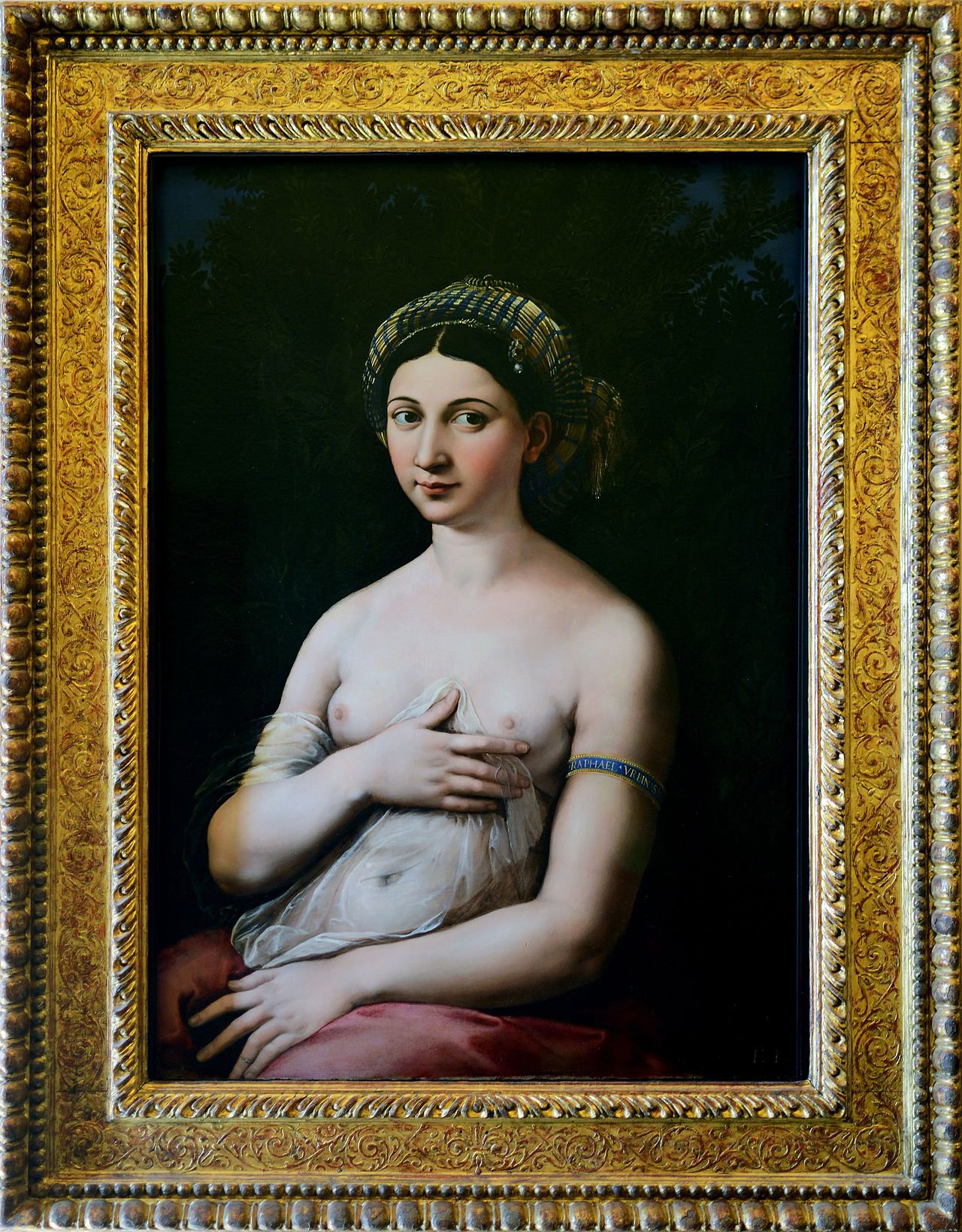
One interpretation of the woman's identity assumes her to be Raphael's lover named Margherita; the figure's father was a baker and thus earned her the nickname of La Fornarina. According to Giorgio Vasari. Margherita was Raphael’s muse and appeared as the subject in many of his paintings. She is shown wearing items associated with her assumed romantic relations to the painter. Her golden armband signed Raphael Urbinas, and the placing a ring on her left, fourth finger can be seen as Raphael’s indication of La Fornarina as his.
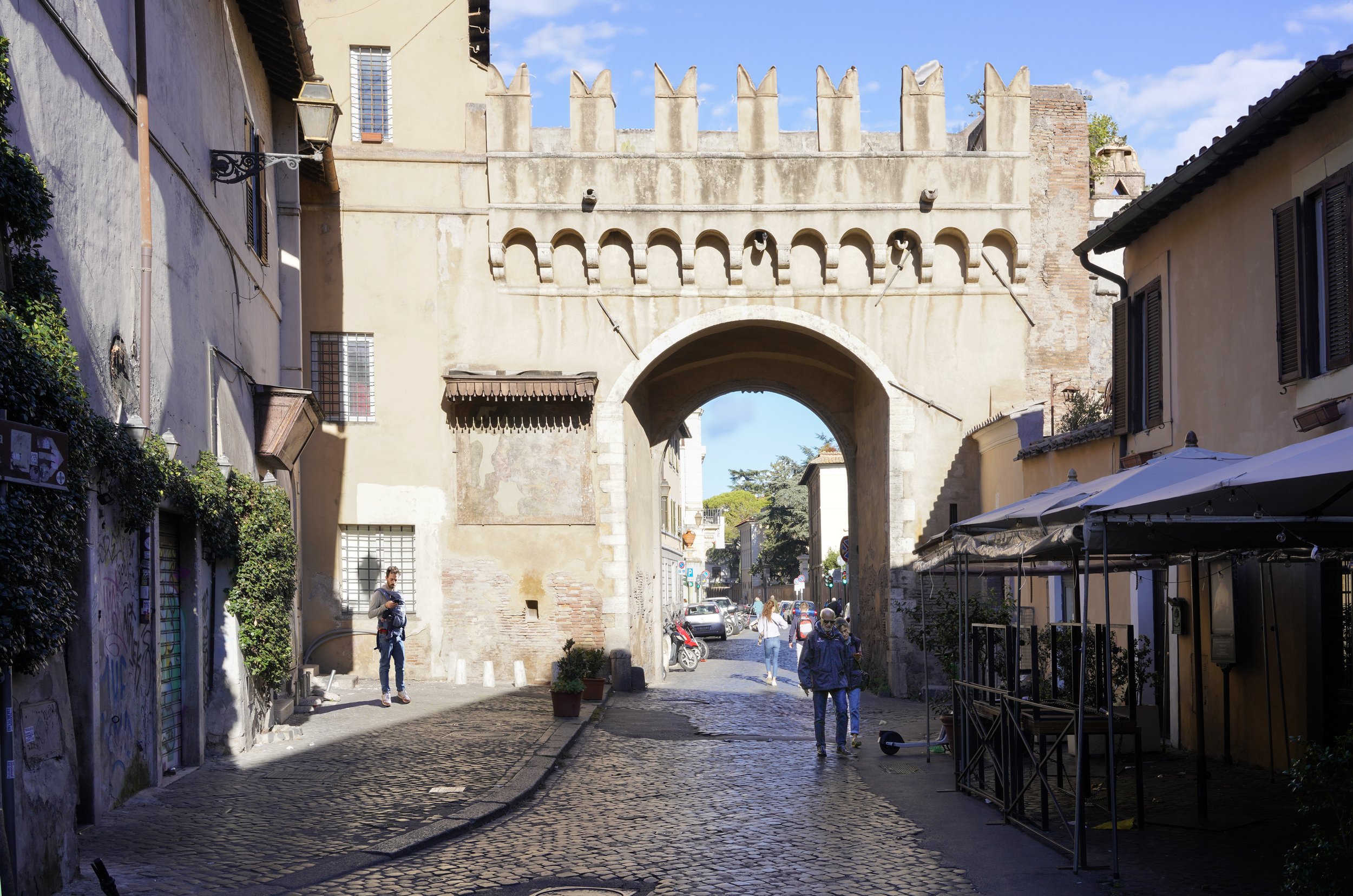
Porta Settimiana marks the start of Via della Lungara, the 16th-century road that connects Trastevere with the Borgo (the 14th rione of Rome). It was built in 1498 by Pope Alexander VI over a small passageway in the Aurelian Wall, a line of city walls built between 271 AD and 275 AD during the reign of the Roman Emperor Aurelian. Today, from Porta Settimiana, Via Santa Dorotea leads to Ponte Sisto, which connects with the centro storico (historic centre).
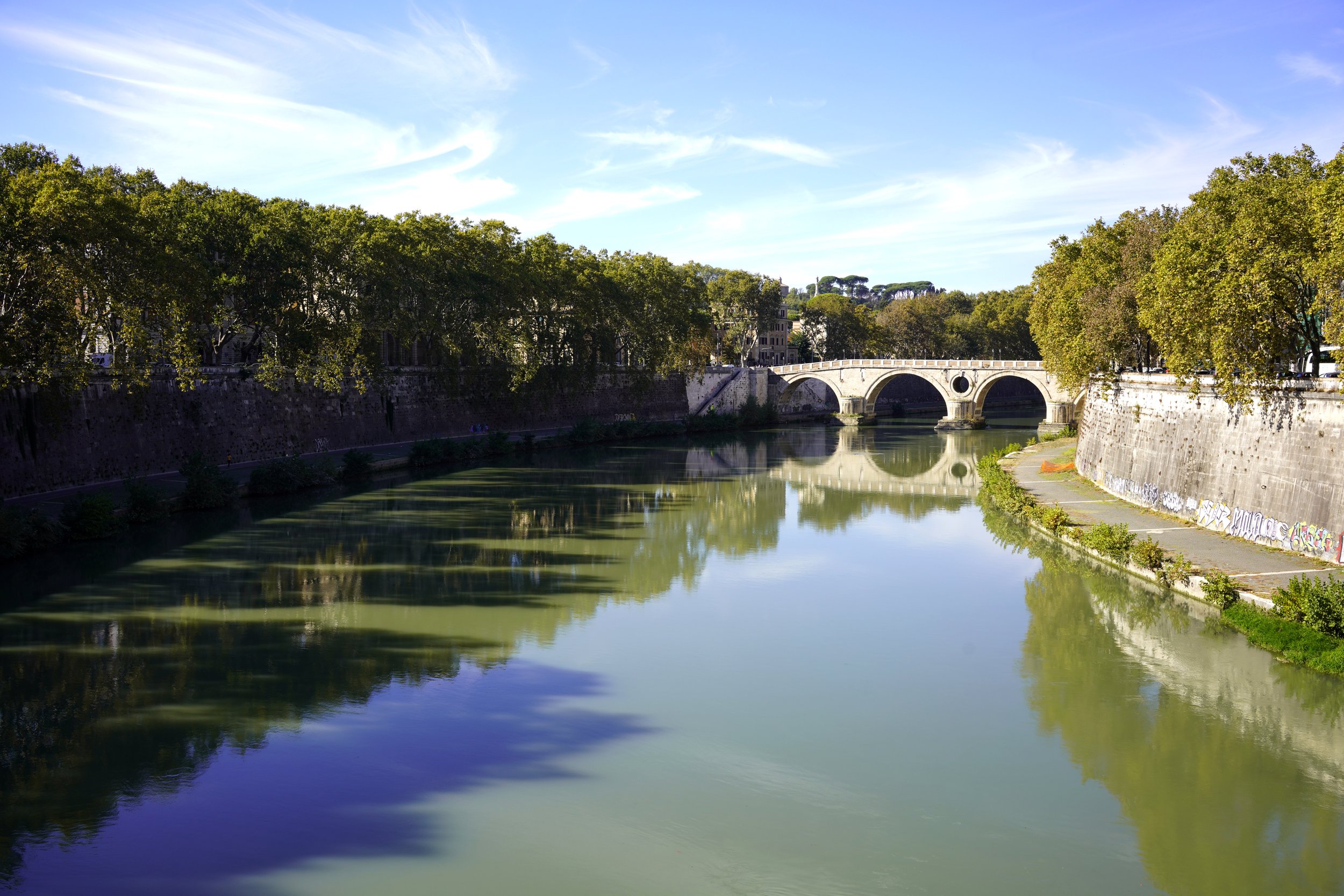
The Tiber connected the city of Rome to Ostia, a vital ancient port. While all roads led to Rome, the Tiber led to the sea. Importers and exporters could move their goods quickly across the Empire and exchange cargo on ships headed across the Mediterranean. Trastevere is the neighborhood across the Tiber River from Rome’s historic center. In Rome's Regal period (753–509 BC), the area across the Tiber (to the west) belonged to the Etruscans - the Romans named it Ripa Etrusca (Etruscan bank). Rome conquered it to gain control of and access to the river from both banks.
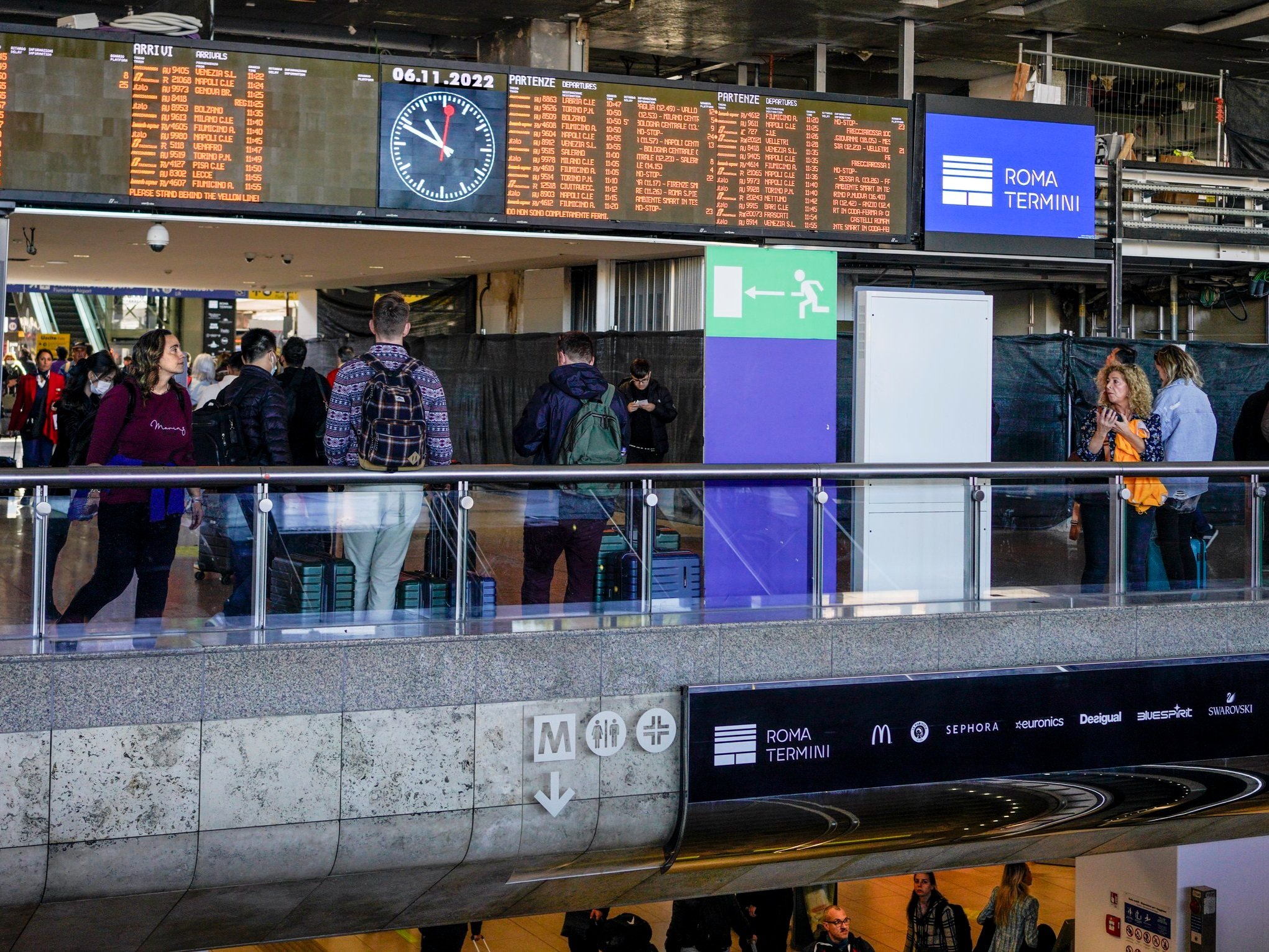
In the Roma Termini (Rome train station) for a trip to Nettuno, a town and comune of the Metropolitan City of Rome, situated along the Tyrrhenian Sea, 37 miles south of Rome. Nettuno has ancient origins dating back to Roman times. The town's name is derived from the Roman god Neptune, which reflects its strong maritime connections.
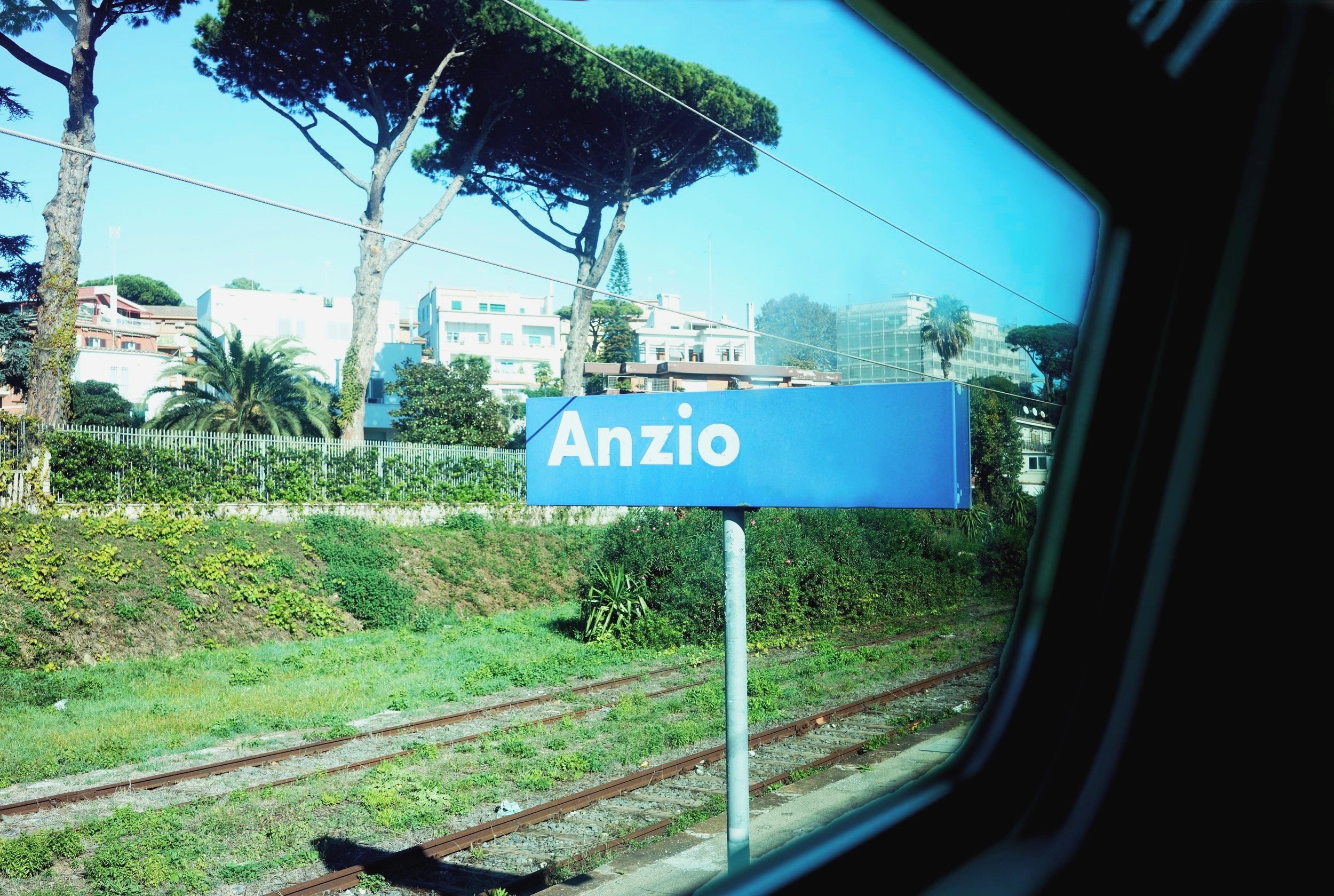
During World War II Anzio campaign, VI Corps suffered 29,200 combat casualties – 4,400 dead, 18,000 wounded and 6,800 missing or captured. There were a further 37,000 non-combat casualties.
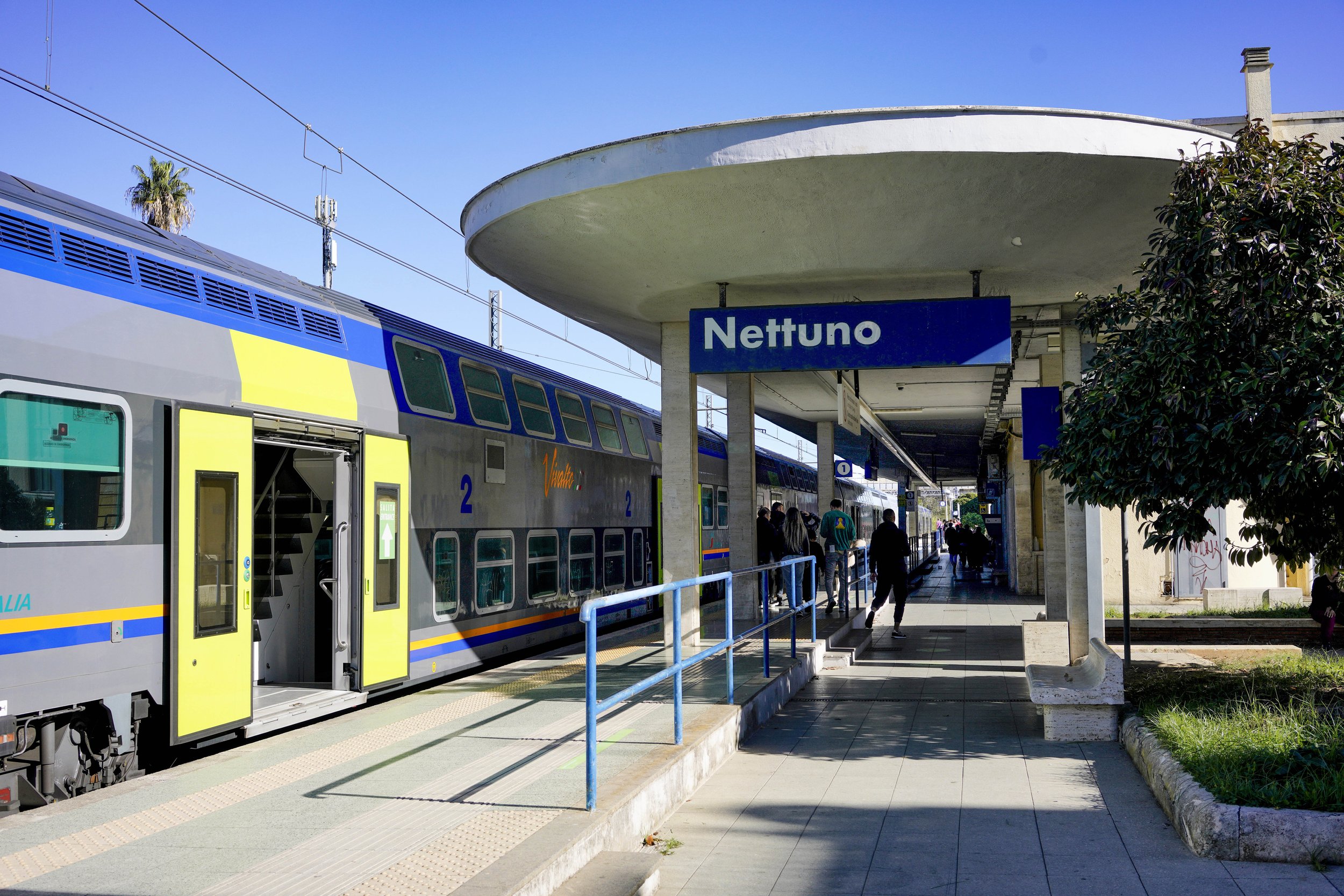
From 1940 to 1945, Nettuno and nearby Anzio were a single municipality (comune) called Nettunia. On January 22, 1944, Anzio and Nettuno were the theatre of an Allied forces landing and the ensuing Battle of Anzio, which began with Operation Shingle during WWII. American forces (5th Army) were surrounded by Germans in the caves of Pozzoli in February 1944 for a week, suffering heavy casualties.
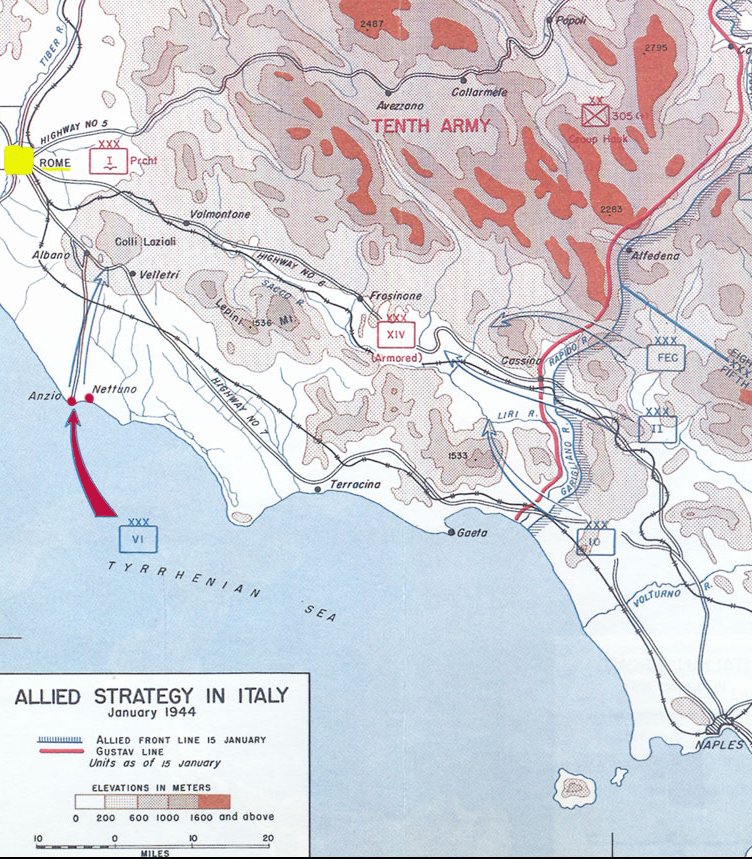
By late October 1943 it was evident that the Germans strategy was to compel the Allied forces to fight a slow costly battle up the peninsula. To meet this situation, Allied staffs implemented a plan, Operation Shingle, for landing behind the enemy lines, with the purpose of turning the German flank, gaining a passage to the routes to Rome, and threatening the enemy lines of communication and supply to its “Gustav Line”. (https://www.ibiblio.org/hyperwar/USA/USA-A-Anzio/USA-A-Anzio-1.html)

As the troops ready on shore, the USS LCI-20 is burning at left, after being hit by a German bomb. With her are (l-r): HMS LCI-274, USS LCI-39 and HMS LCI-260. At right, beyond the DUKW (an amphibious transport vehicle), are USS LCI-36 (or LCI-38) and USS LCI-44 (SC 212357). https://www.history.navy.mil/browse-by-topic/wars-conflicts-and-operations/world-war-ii/1944/anzio.html

Regiments like the 45th Infantry Division regularly received support from divisional artillery and attachments from tank, tank-destroyer and engineer units. For example, in 2/1944, while experiencing heavy casualties, tanks from the 191st Tank Battalion reinforced I Company infantry, using the firepower of their cannon and machine guns to keep the Germans at bay. (https://warfarehistorynetwork.com/article/the-45th-infantry-divisions-desperate-defense-at-anzio/)

The flat terrain of the Anzio battlefield provided no cover and little concealment. Here GIs burrow into their water-filled foxholes and wait for the next German assault.

[See: https://warfarehistorynetwork.com/article/the-45th-infantry-divisions-desperate-defense-at-anzio/]
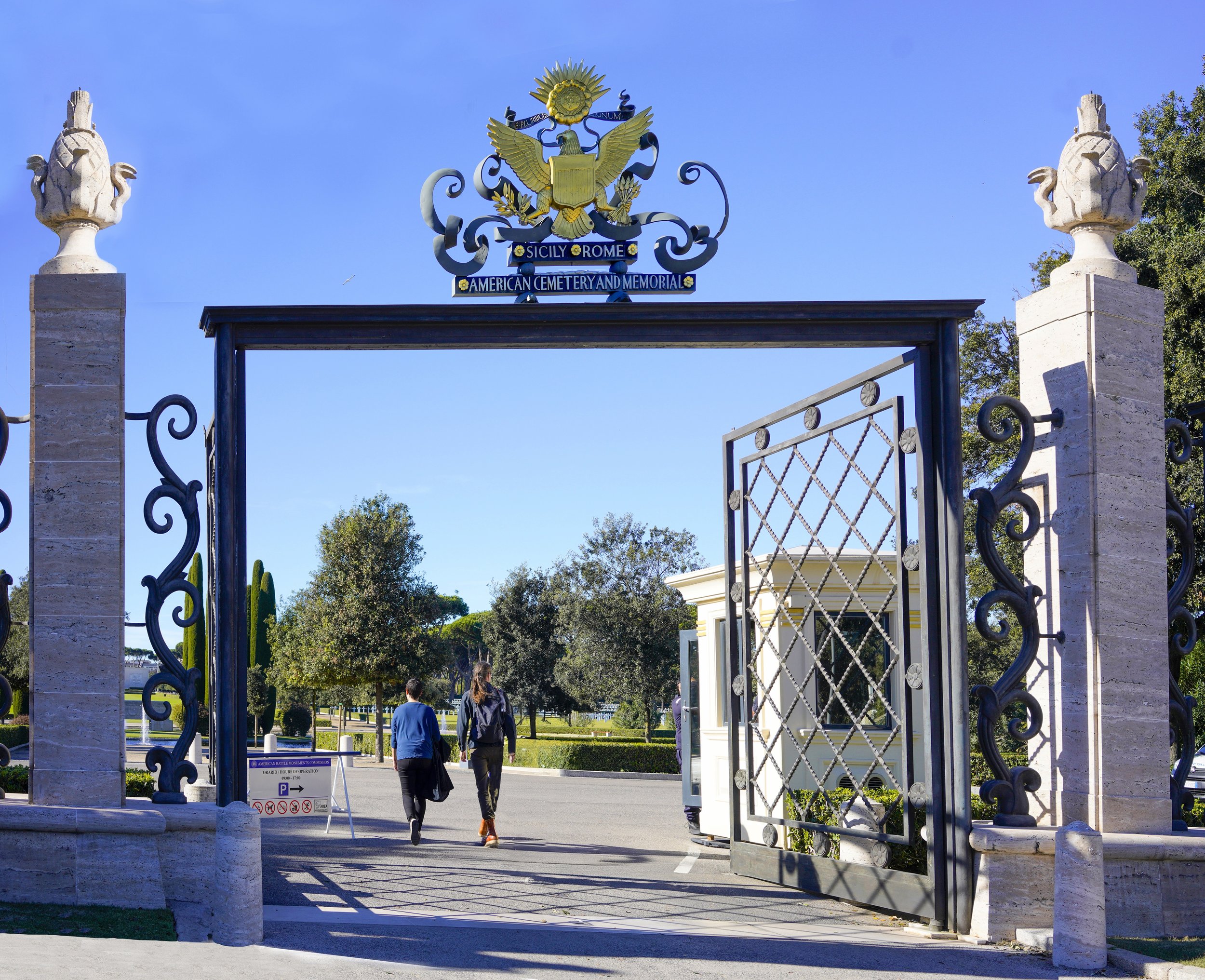
We went to the WWII Sicily-Rome American Cemetery and Memorial to visit a specific grave. The partner of my eldest daughter is named after his grandfather, one of the fallen of the Italian campaign, who is buried in the cemetery. He never met his grandfather and wanted to visit the grave.

The Sicily-Rome American Cemetery and Memorial, established as a temporary cemetery in 1944, was formally dedicated in 1956. The visitor building provided a place for families and friends to mourn fallen loved ones and to remember their sacrifice. A picture of General Dwight D. Eisenhower, commanding general of the victorious forces in Europe during World War II, hangs over the fireplace.
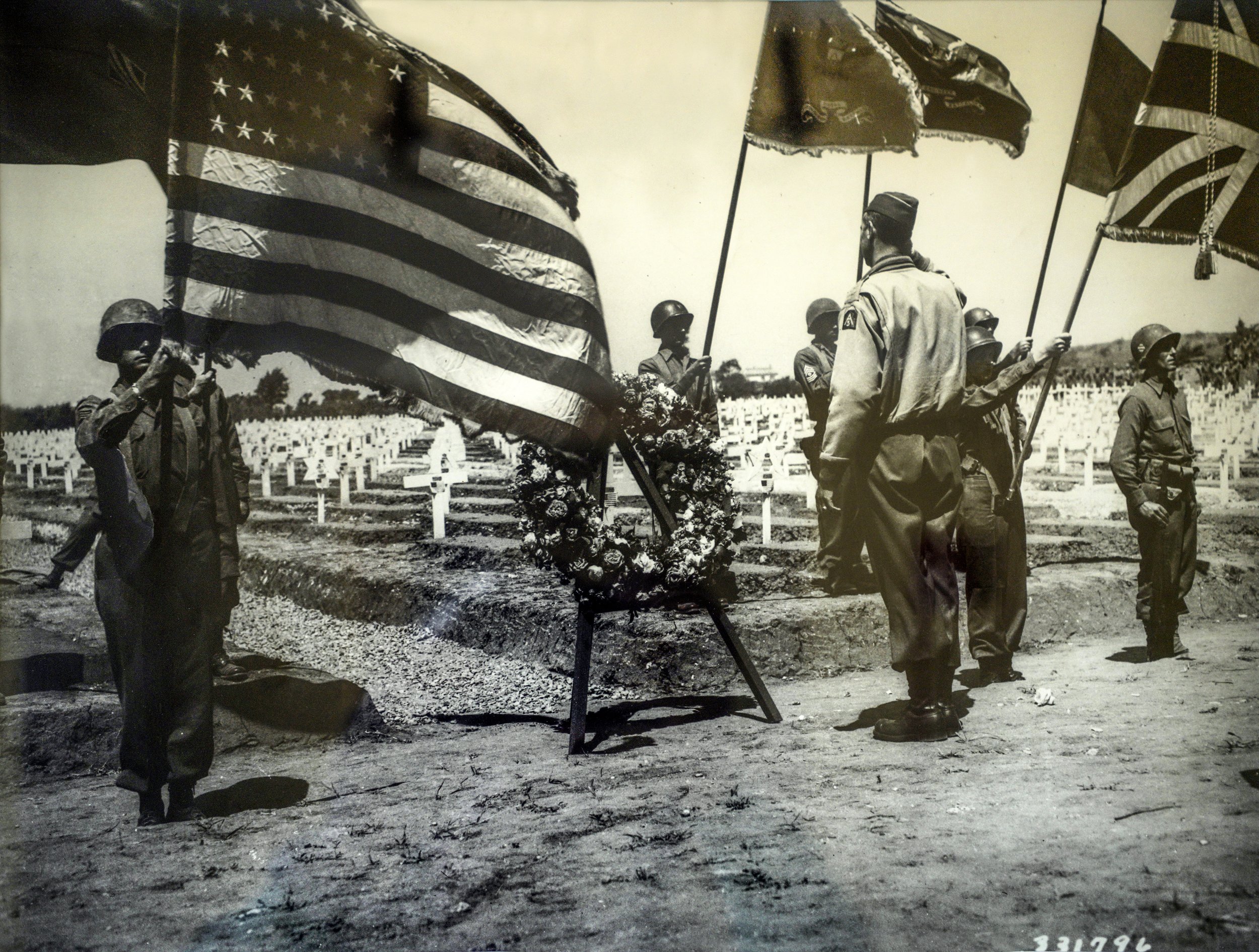
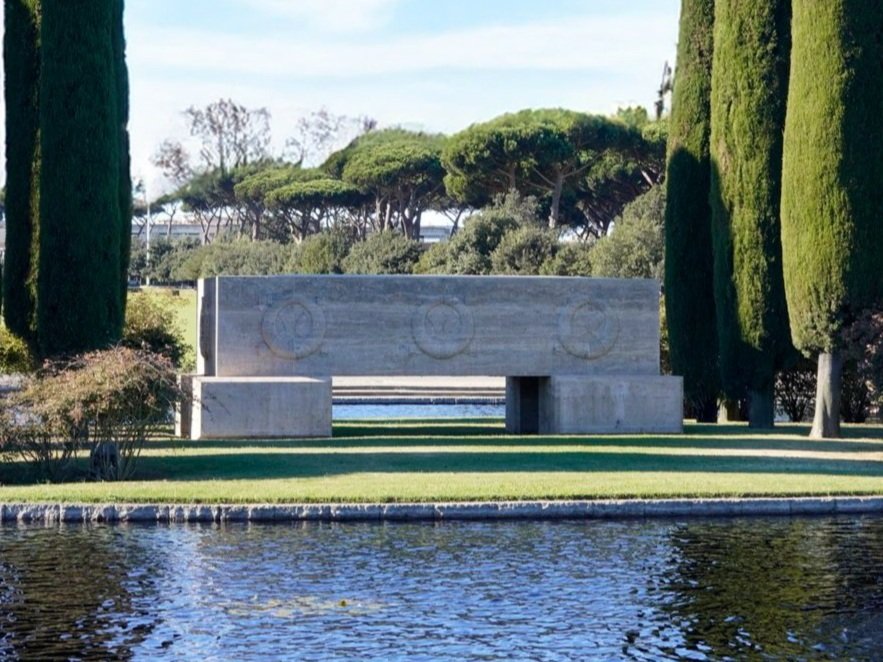
The World War II Sicily-Rome American Cemetery and Memorial site in Italy covers 77 acres, rising in a gentle slope from this broad pool with an island and cenotaph, commemorating those who died in war and those buried elsewhere, flanked by groups of Italian cypress trees. The cemetery was established in Nettuno, as a temporary battlefield cemetery on 24 January 1944, two days after Operation Shingle began, the Allied landings at Anzio and Nettuno on mainland Italy.
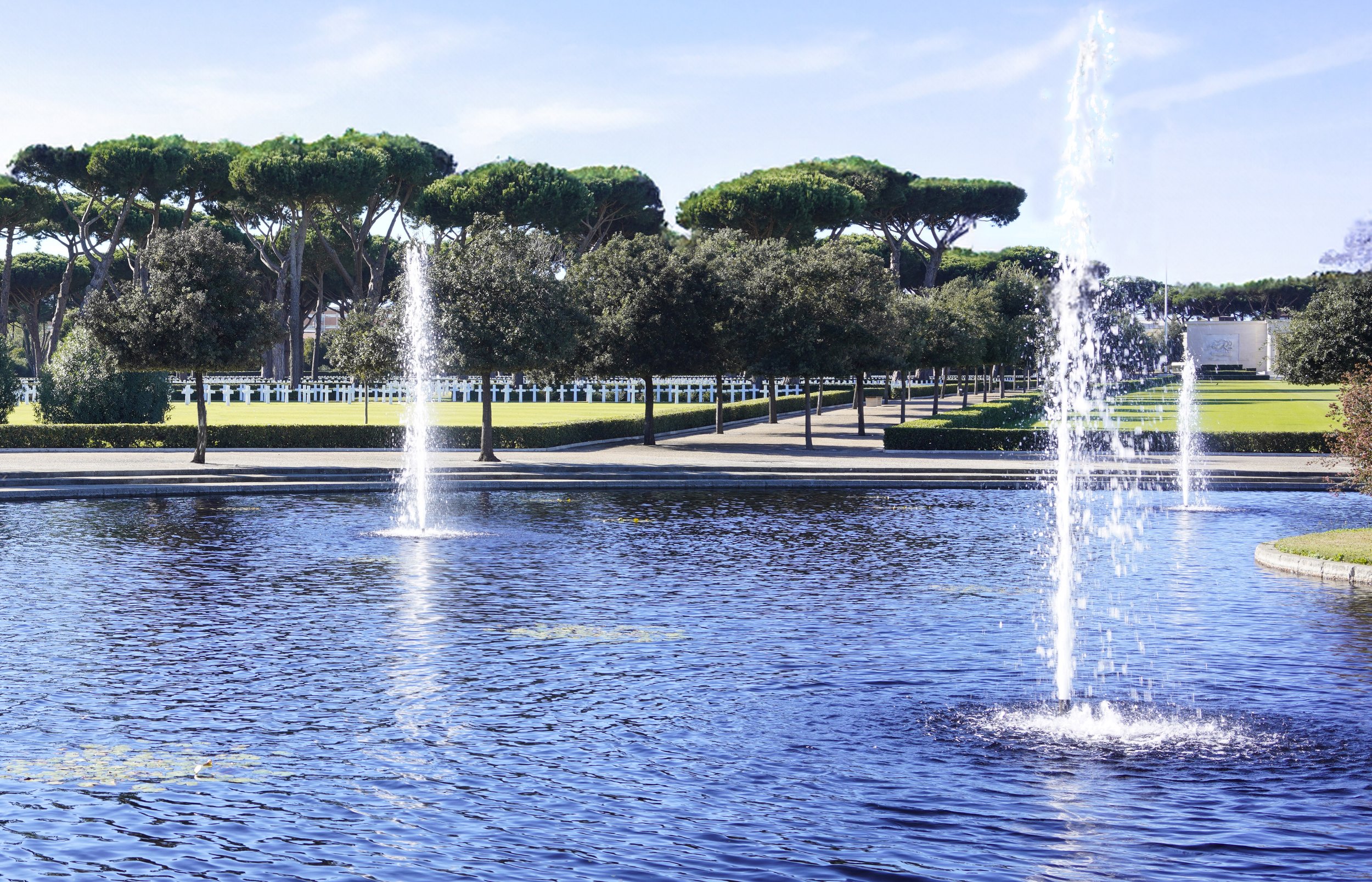
The cemetery was established in Nettuno, as a temporary battlefield cemetery on 24 January 1944, two days after Operation Shingle began, the Allied landings at Anzio and Nettuno on mainland Italy. The pool leads to a wide central mall and the Memorial building, expressing America's remembrance of the dead. It consists of a chapel to the south, a peristyle, and a map room to the north.
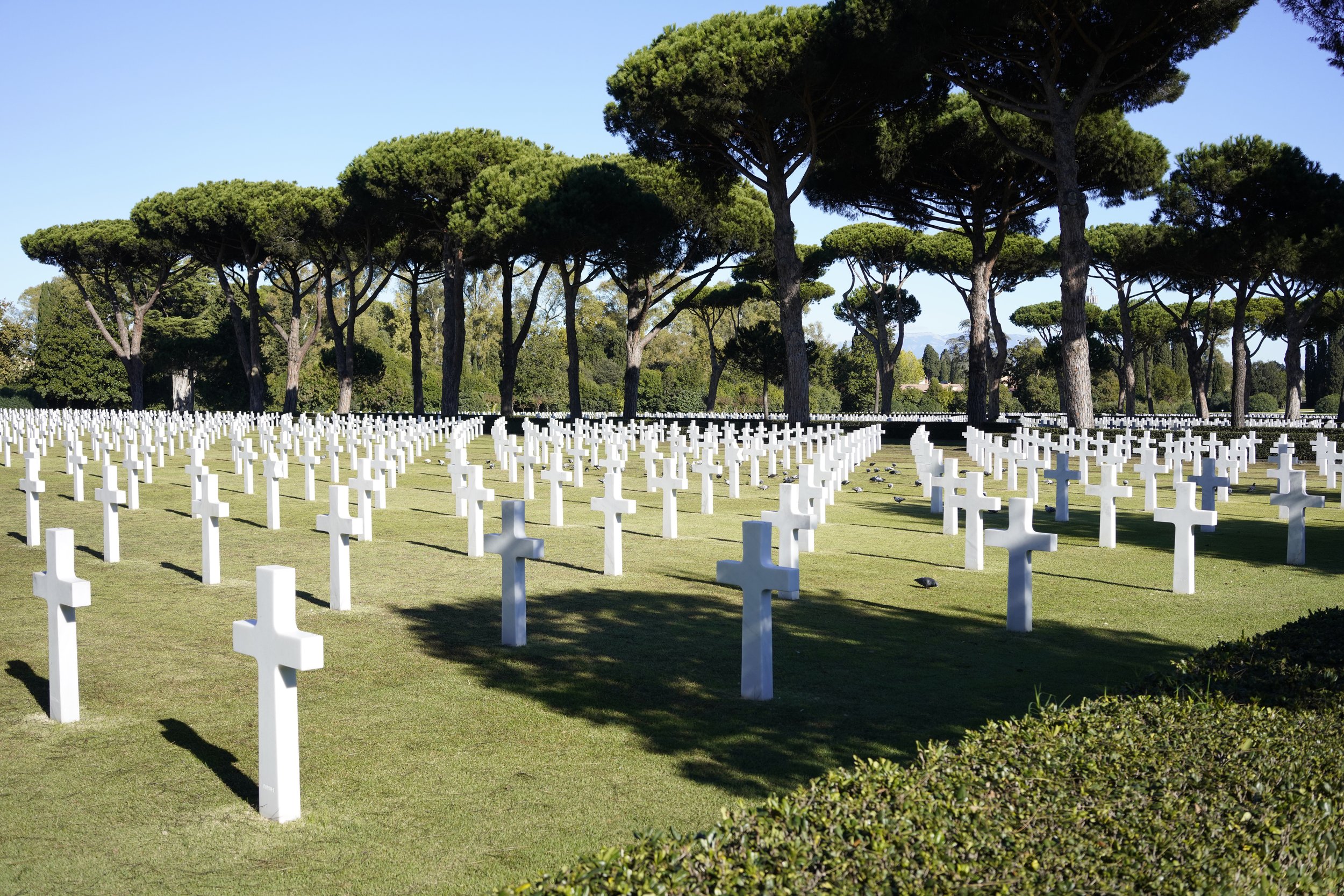
The majority of the individuals buried here died in the liberation of Sicily (July 10 to August 17, 1943); in the landings in the Salerno Area (September 9, 1943) and the heavy fighting northward; in the landings at Anzio Beach and expansion of the beachhead (January 22, 1944 to May 1944); and in air and naval support in the regions.

Each grave marker lists the deceased name, rank, military position, birthplace, and date of death. For example, above, the front cross belongs to William T. Starbuck, a first lieutenant, who seems to have been a Navy fighter pilot in the 48th Squadron (FTR SQ) and the 14th Group (based on what I could discern from information concerning the abbreviations), was originally from Florida, and died August 17, 1944.
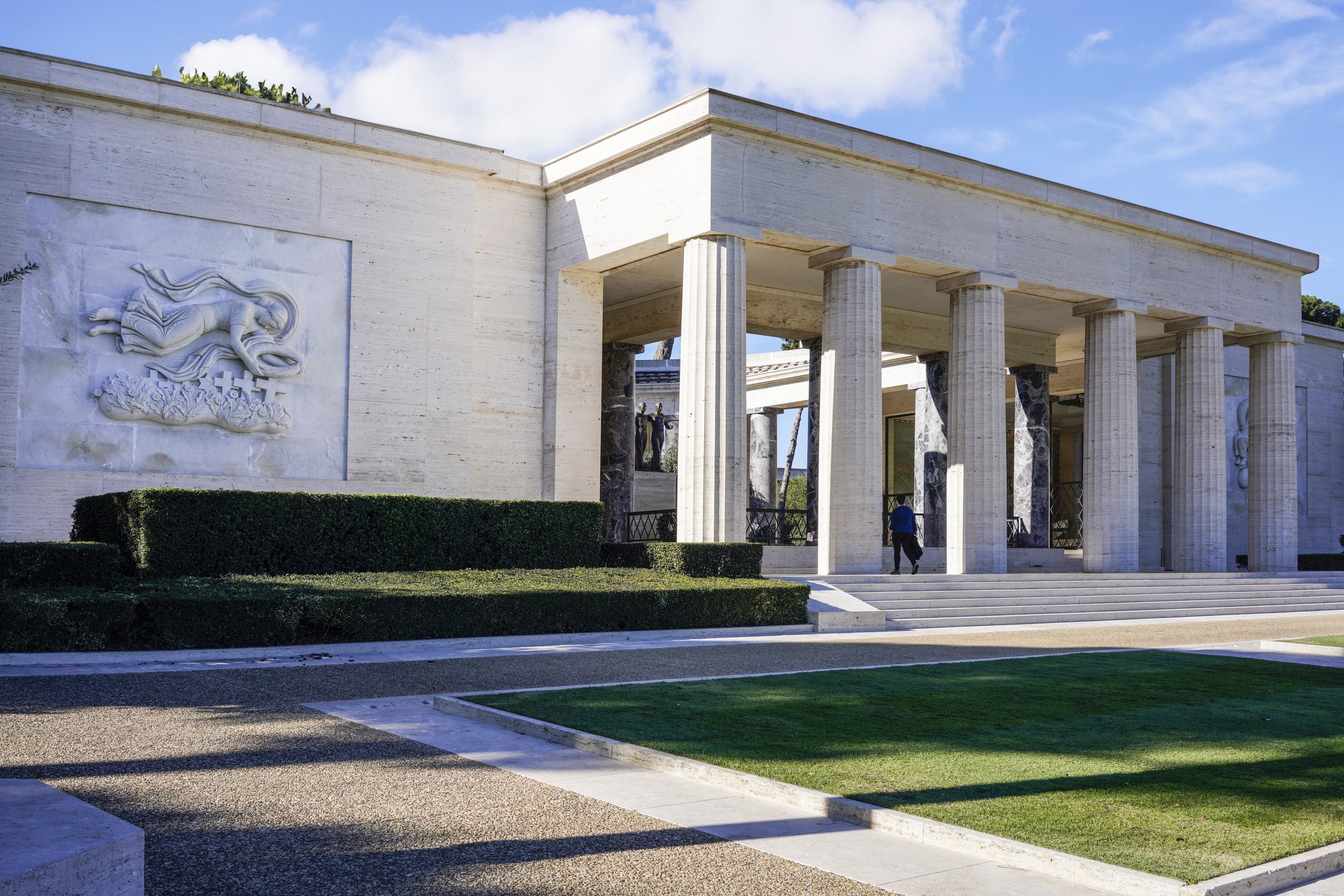
On the east façade of the Memorial, constructed of travertine and marble., a relief carving depicts a fallen soldier being carried by his guardian angel. Inside this part of the WWII memorial contains a map room that includes a bronze relief map and four fresco maps depicting the military operations in Sicily and Italy.
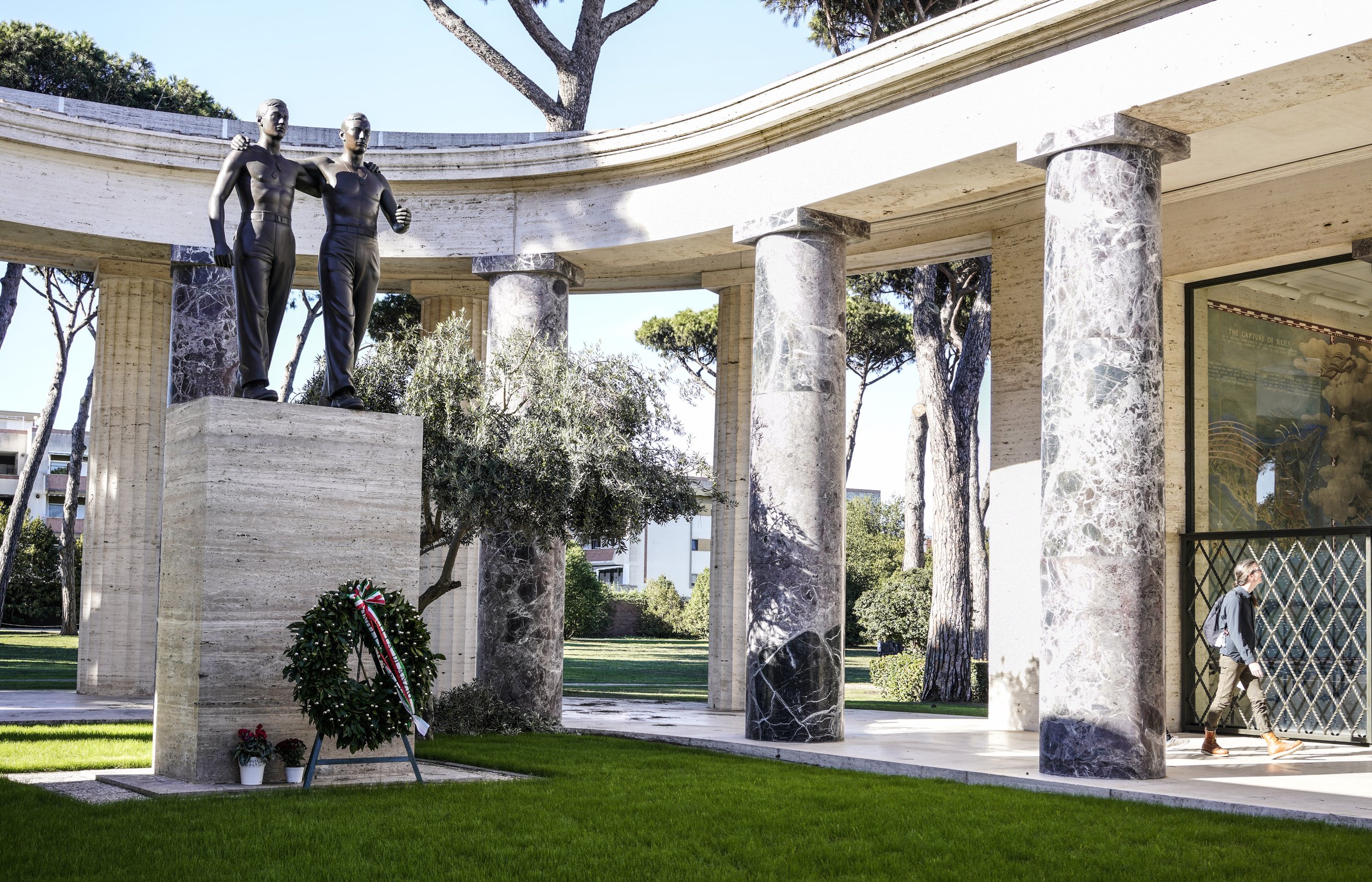
The bronze statue called Brothers in Arms stands within the memorial peristyle, outside the map room, representing the strong bonds forged between the U.S. Army and Navy during these arduous battles.
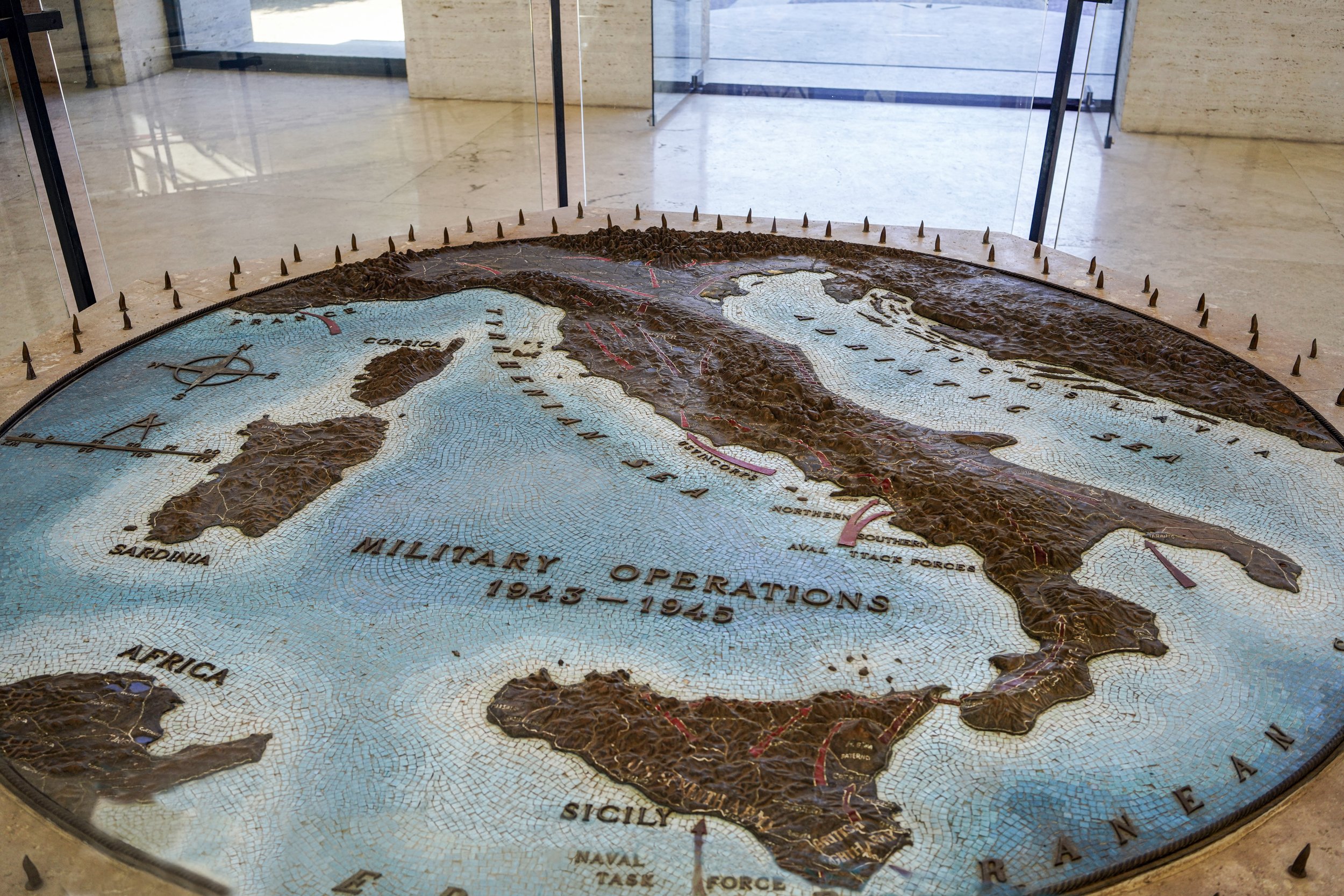
The map room contains this bronze relief map and four fresco maps depicting the military operations in Sicily and Italy.
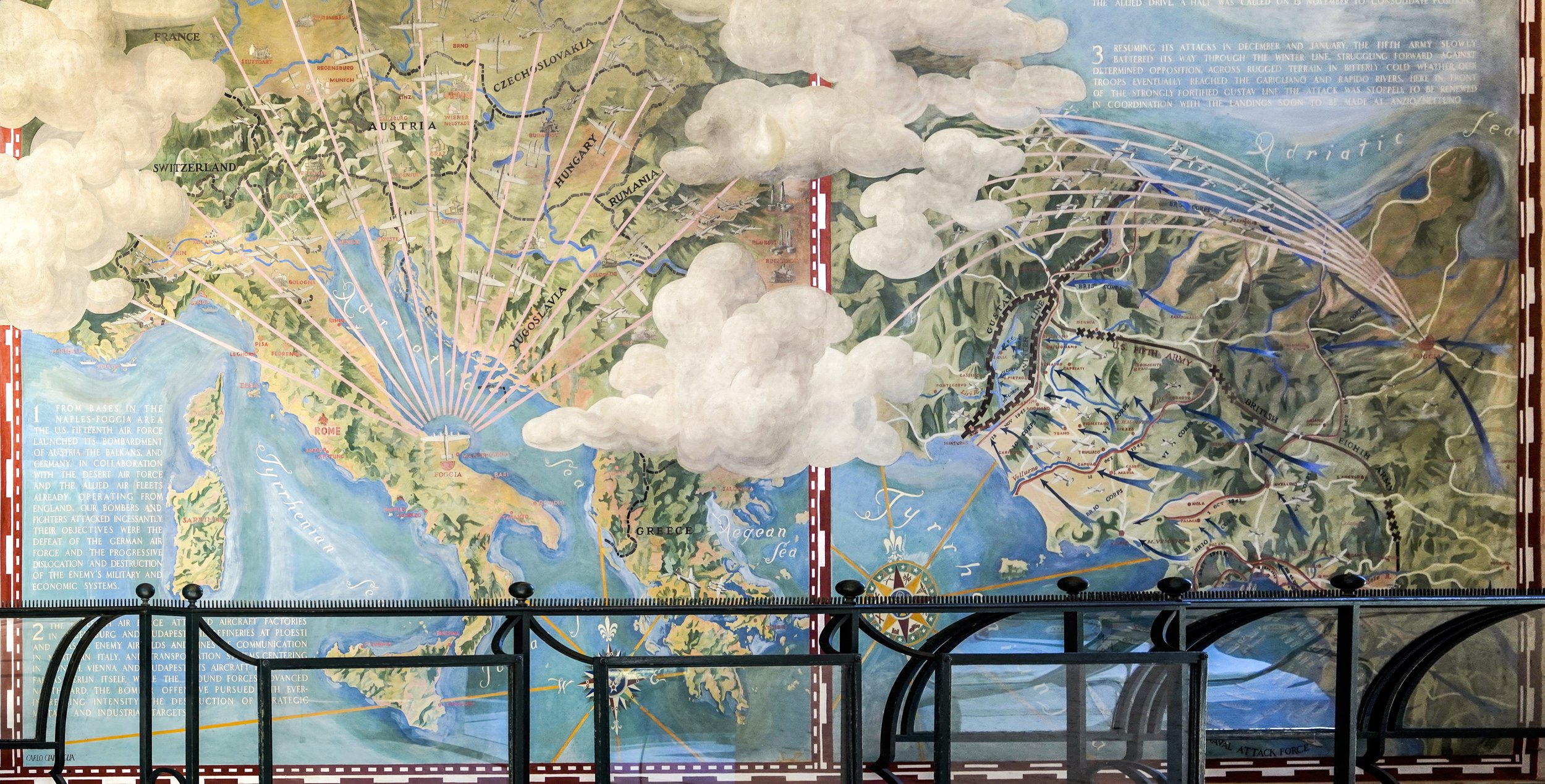
Item #1 on the map states, ”From bases in the Naples-Fogggia area the U.S. 15th Air Force launched its bombardment of Austria, the Balkans, and Germany. In collaboration with the desert air force and the allied air fleets already operating from England, our bombers and fighters attacked incessantly. Their objectives were the defeat of the German air force and the progressive dislocation and destruction of the enemy’s military and economic systems.”
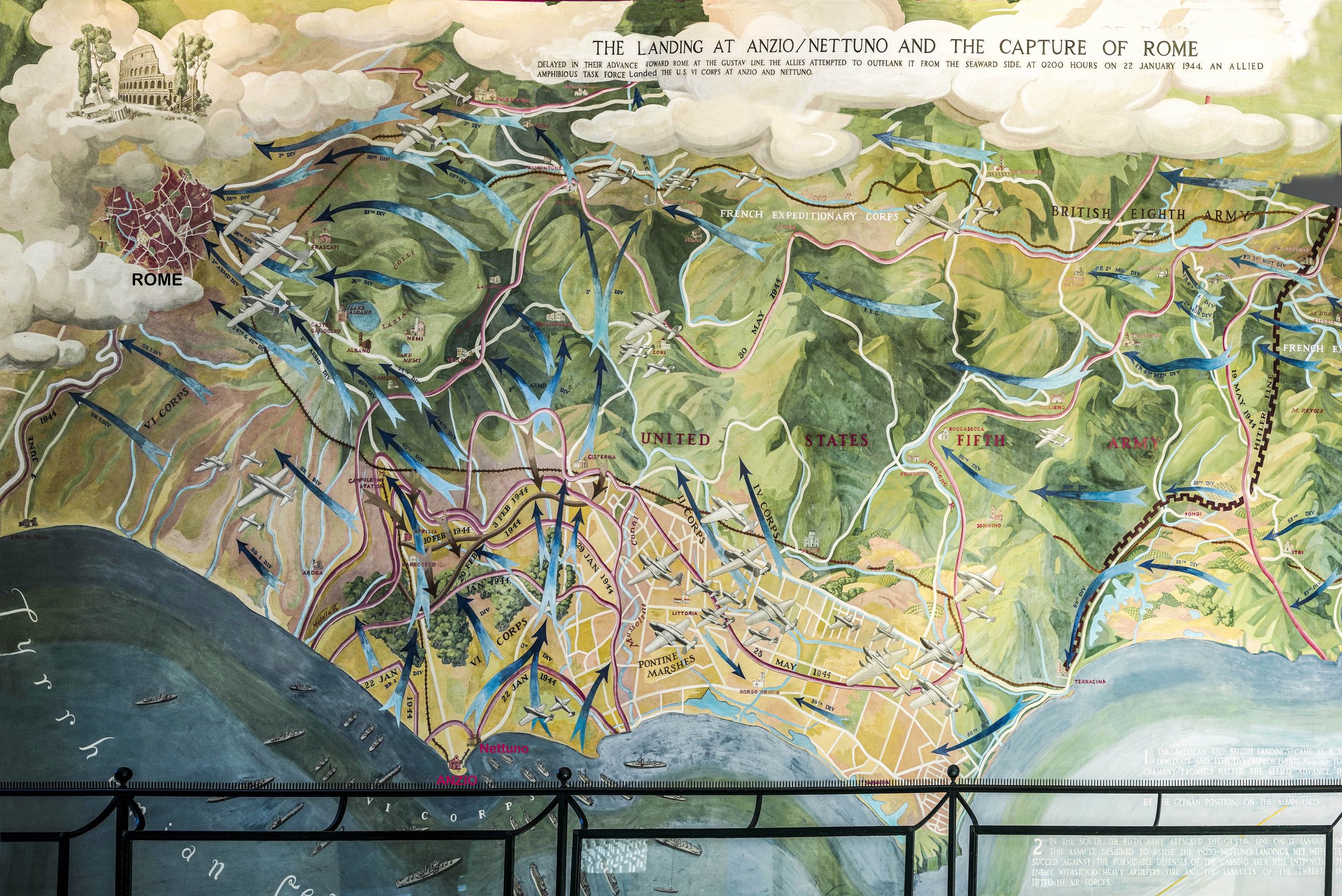
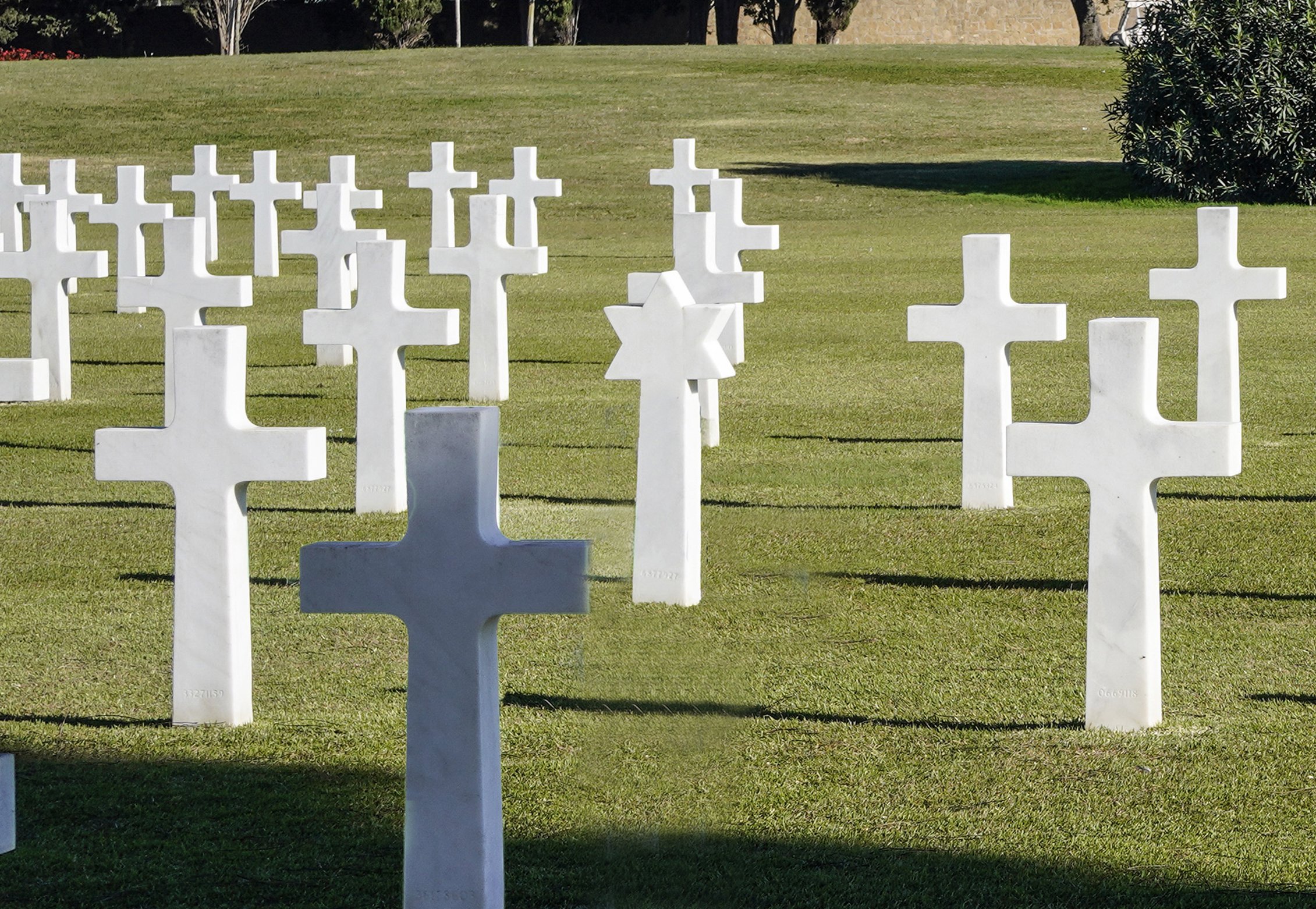
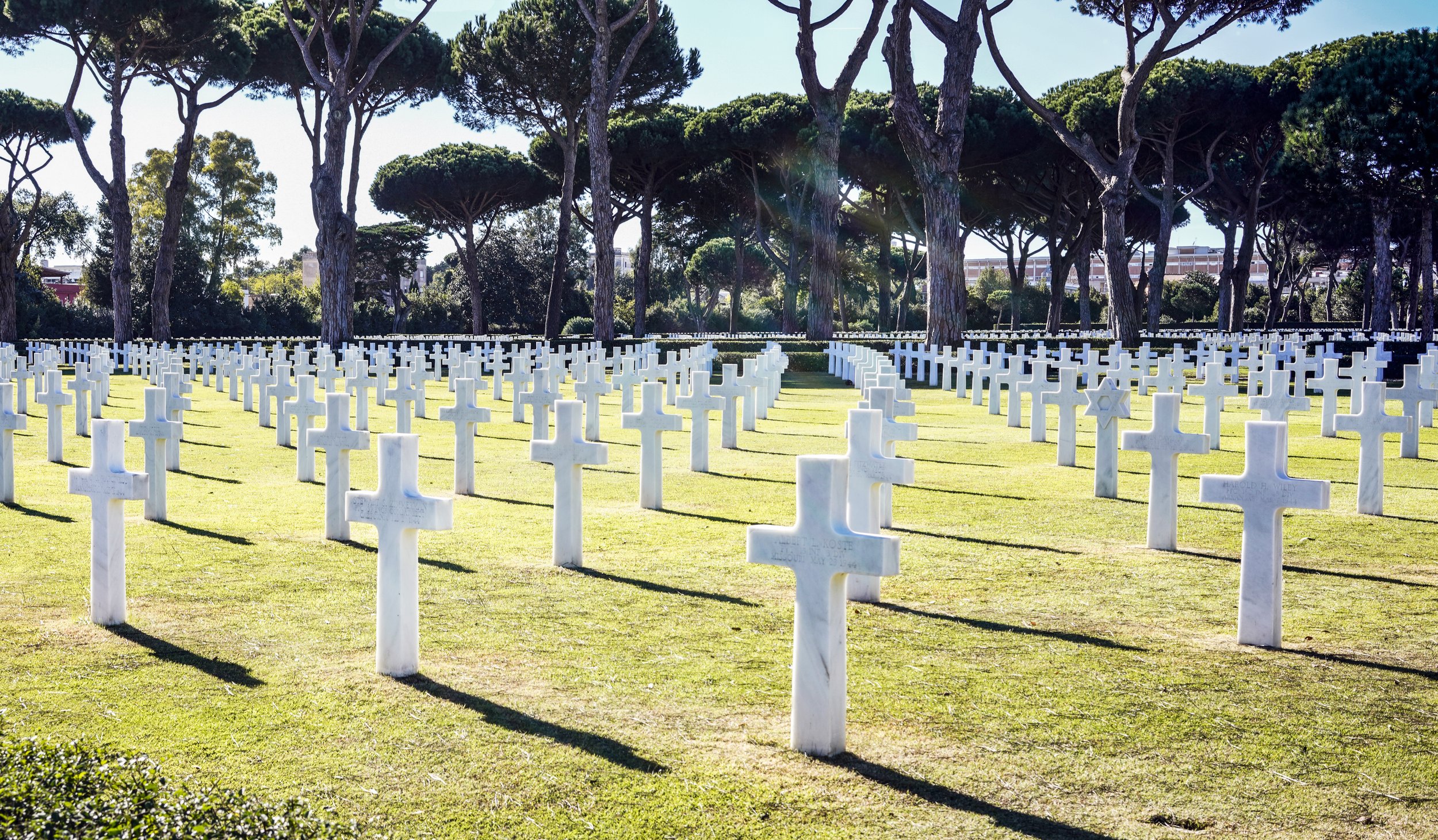
The majority of burials at the cemetery are of men that died fighting in the liberation of Sicily, code-named Operation Husky (10 July to 17 August 1943); in the landings at the Salerno, code-named Operation Avalanche (9 September 1943) and the heavy fighting northward; and the landings, code-named Operation Shingle, at Anzio and Nettuno and expansion of the beachhead (22 January 1944 to May 1944); and in air and naval support in the regions.
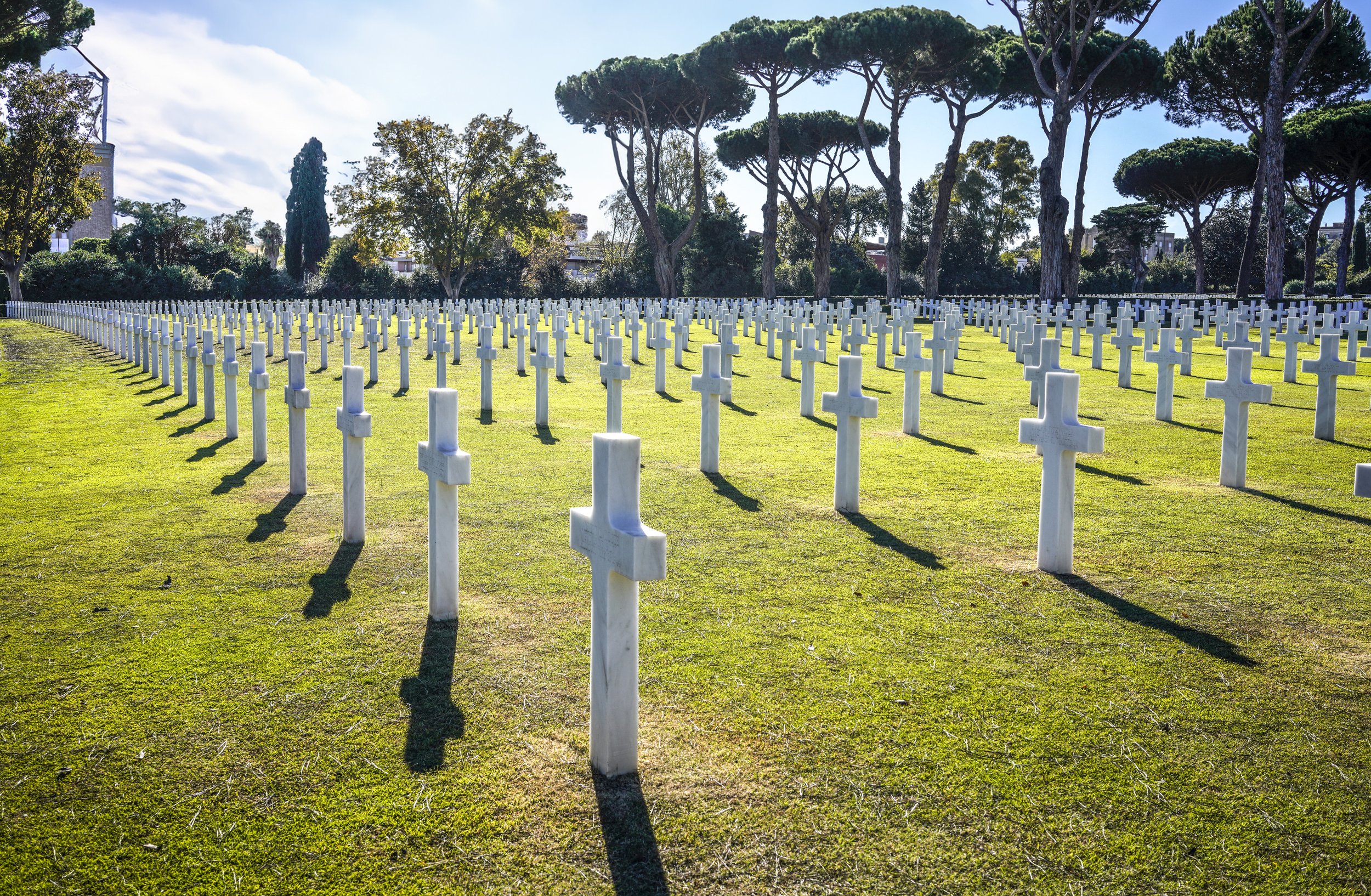
I imagine the lives these young men might have lived, the lives of the children they might have had, the lives of the grandchildren they might have enjoyed. I imagine a world under Hitler. Such loss spawned by one man’s ideas. And yet, we seem not to learn from the lessons of history.
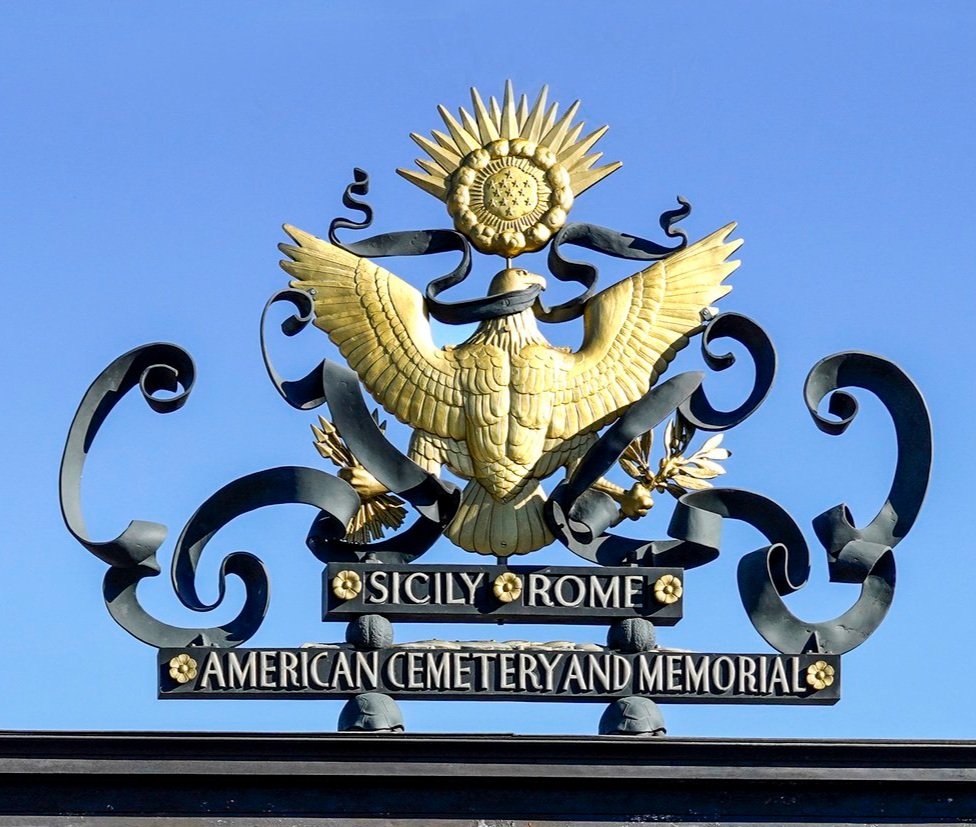
The olive branch and the arrows held in the eagle's talons denote the power of peace and war. The eagle always casts its gaze toward the olive branch signifying that our nation desires to pursue peace but stands ready to defend itself.
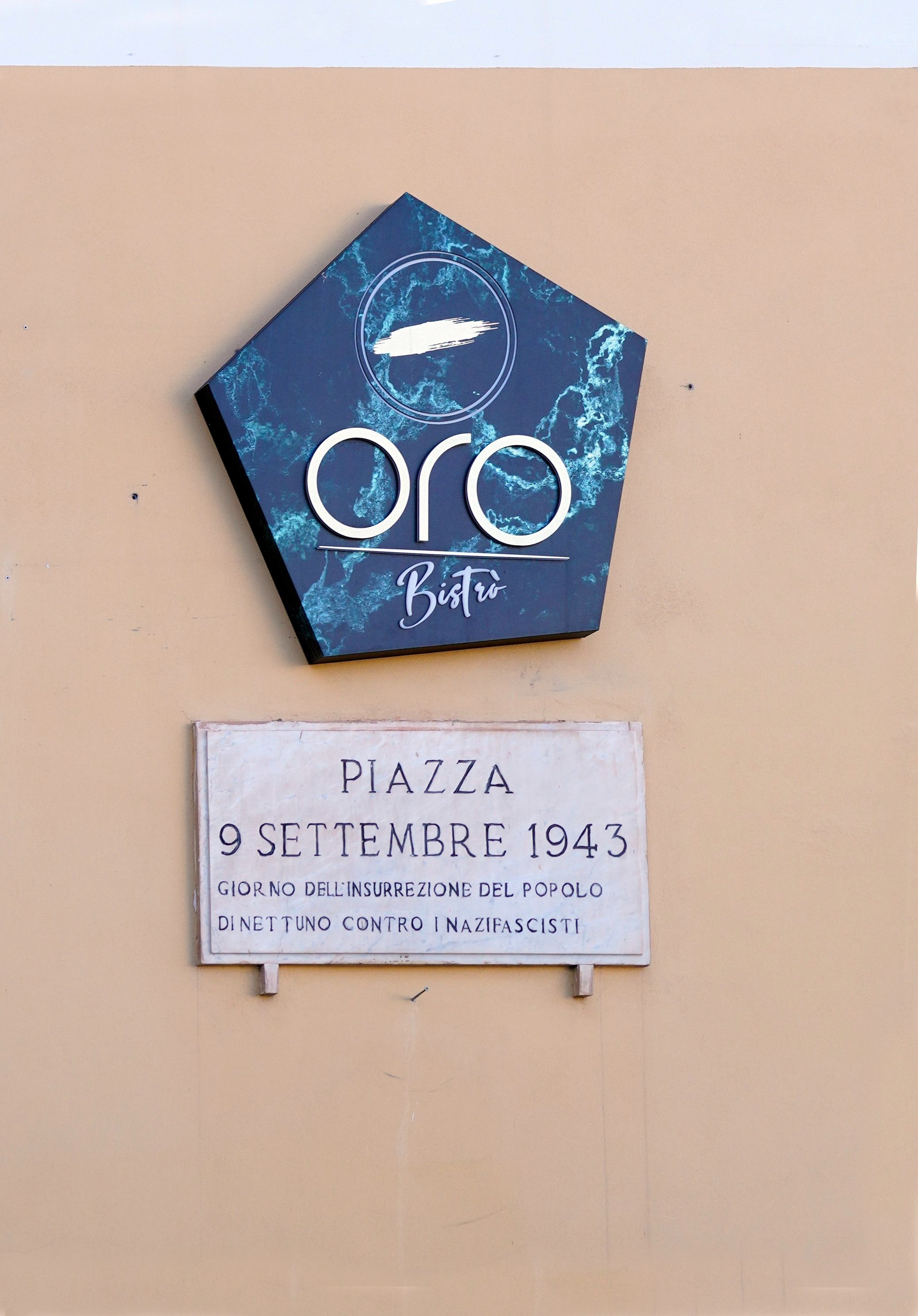
On September 8, 1943, Italy surrendered to the Allied forces after more than three years as a member of the alliance of the Axis Powers. At 7:30 P.M. Prime Minister, Marshal Pietro Badoglio, read the statement on the radio stating that "The Italian Government, recognizing the impossibility of continuing the unequal struggle against the overwhelming power of the enemy, and with the object of avoiding further and more grievous harm to the nation, has requested an armistice from General Eisenhower ... This request has been granted.
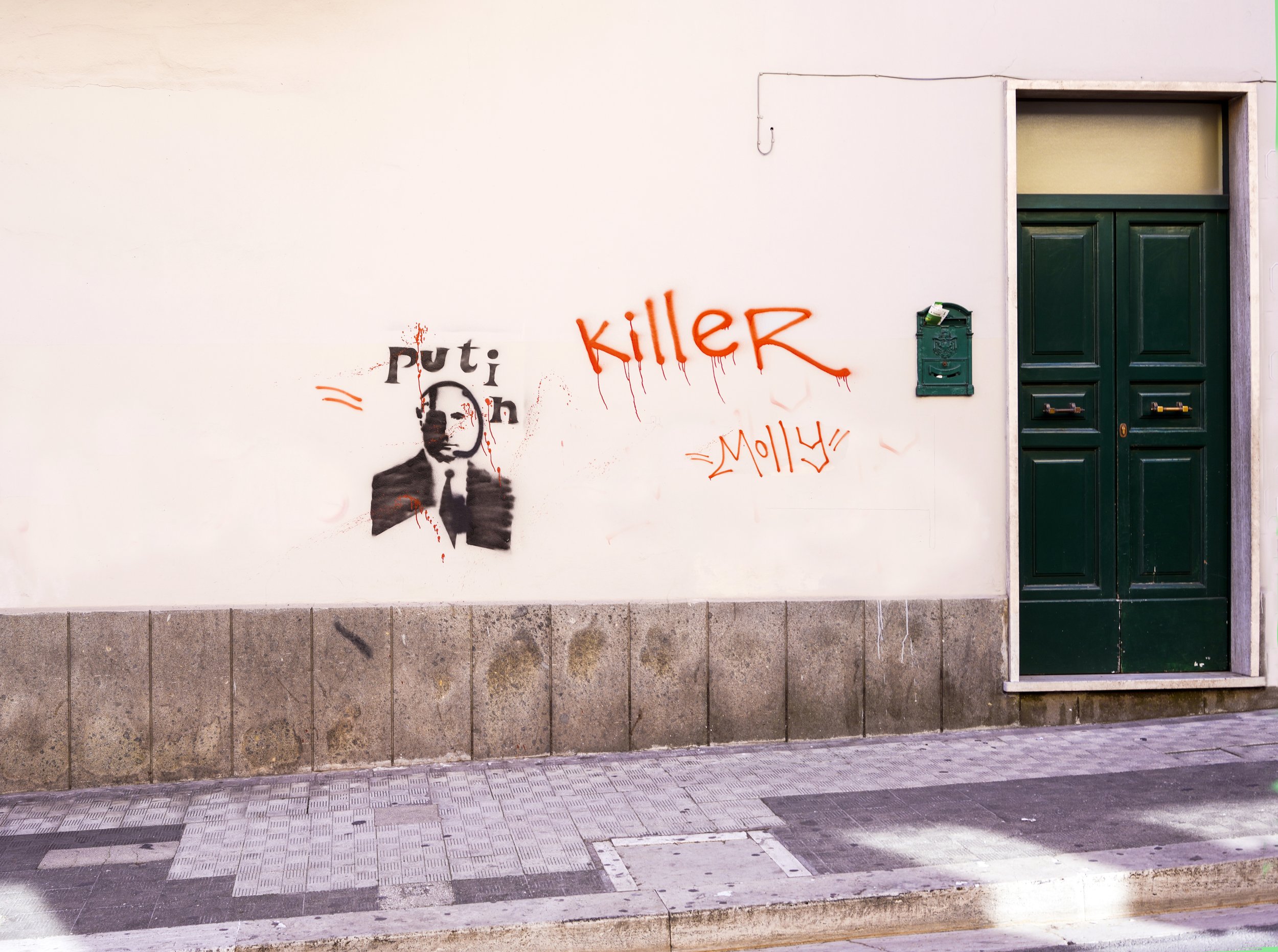
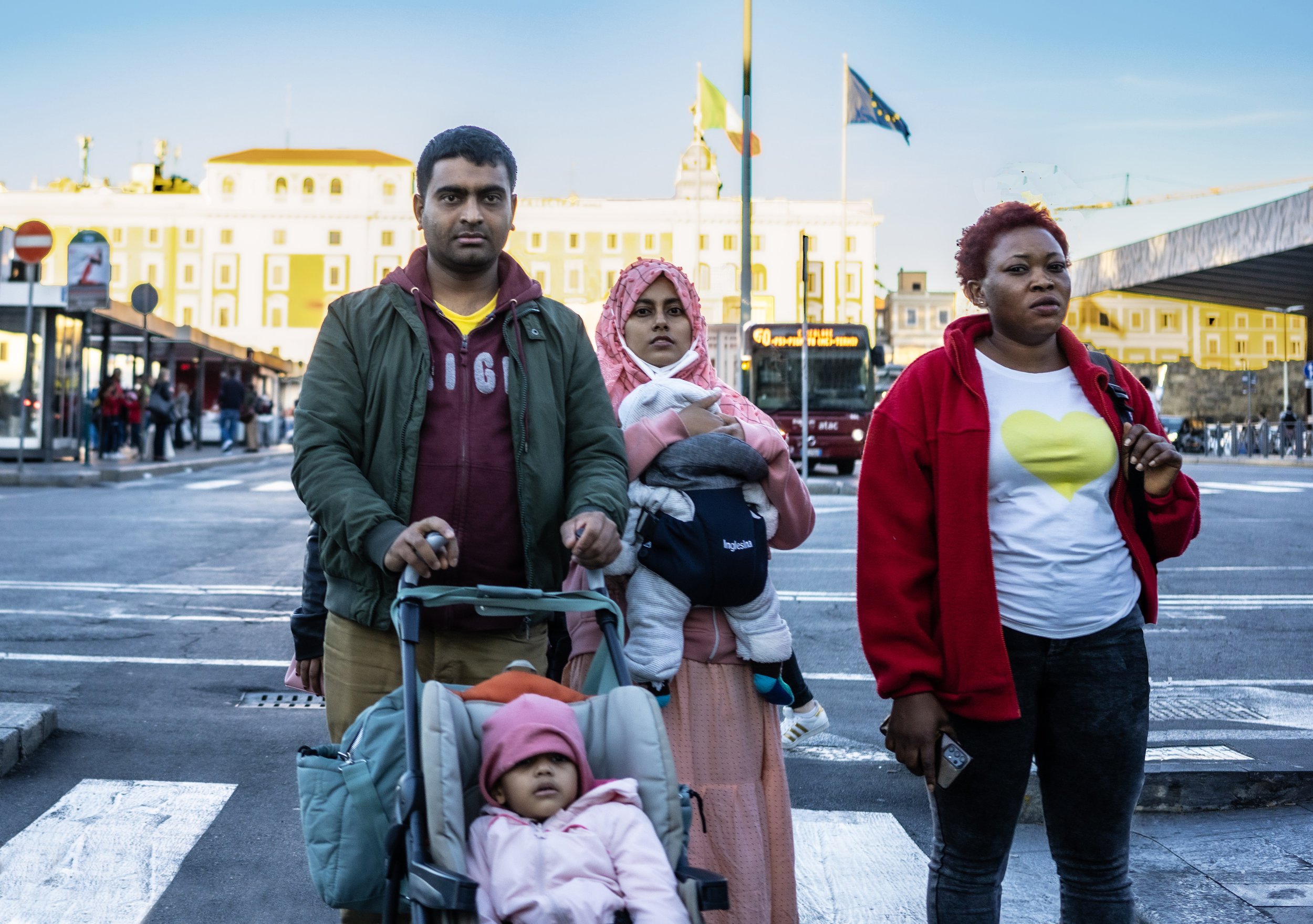
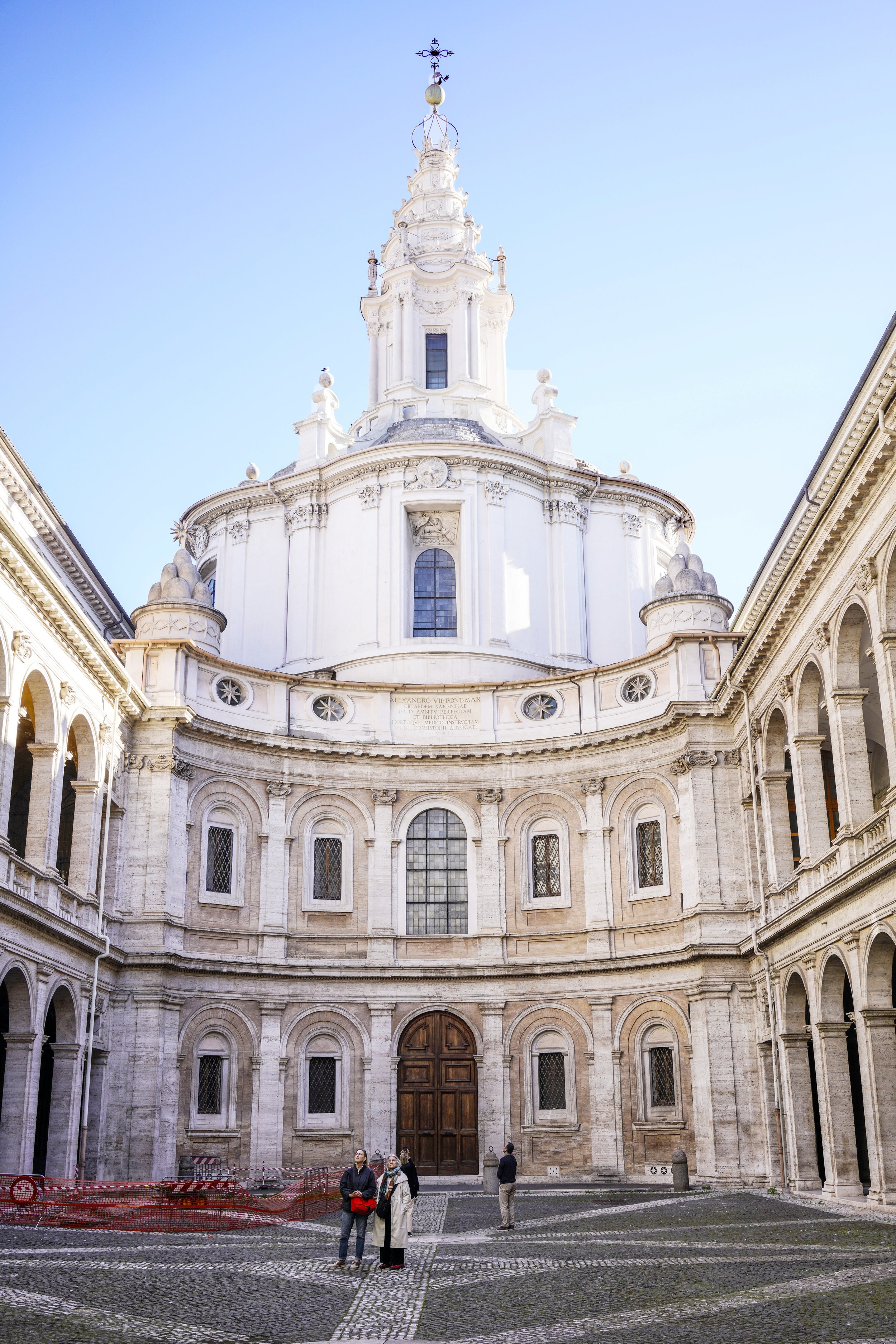
The Sant’Ivo alla Sapienza uses a combination of concave and convex exterior and interior surfaces to create optical illusions utilizing shadow whilst still containing a strong sense of symmetry, as was common in the Baroque and Rococo period of architectural design.
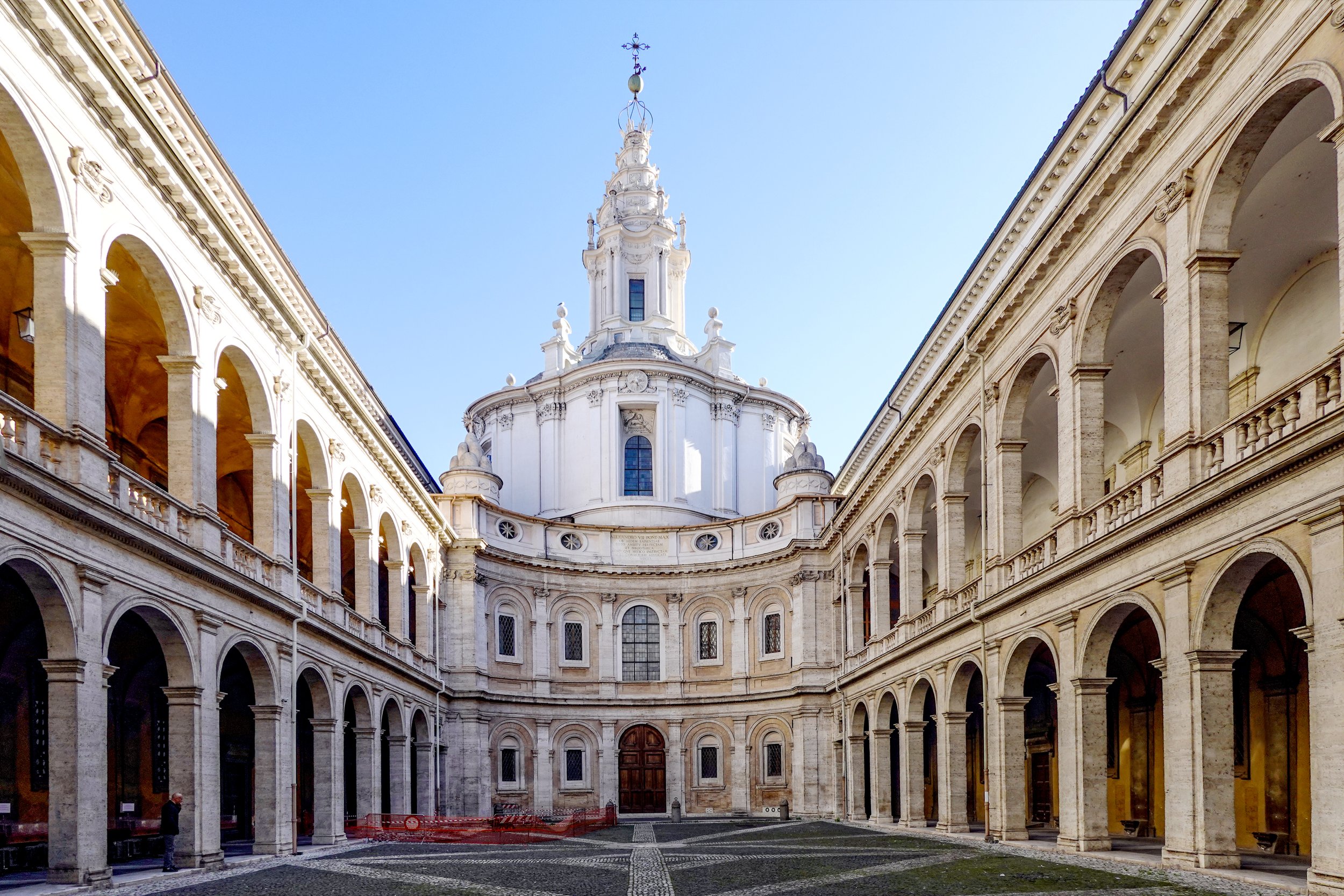
When you enter the Palazzo della Sapienza (house of wisdom), the white travertine marble façade of the Church of Sant’Ivo rises up before you at the far end of the long courtyard, with its curved facade and glowing white drum, dome, and lantern. One of Borromini's hallmarks is his use of convex and concave exterior and interior surfaces that play against each other (see also the church of San Carlo alle Quattro Fontane).

On the top of Sant’Ivo alla Sapienza, Borromini crafted a unique spire topped with a laurel wreath, a bronze orb, a dove, and a crucifix. Some have compared the spire to the stinger of a bee, which is the symbol of the Barberini family of Pope Urban VIII. Below the spire surrounding the Latin inscription honoring Pope Alexander VII (Chigi) are the heraldic symbols of the Chigi family, i.e., eight-point stars and the six mons (mountains) .

In 1642 Francesco Borromini was appointed by Pope Urban VIII Barberini official Architect of the della Sapienza, the historical university of Rome founded by Boniface VIII in 1303. On that occasion, he was commissioned to build the chapel of Sant’Ivo, patron saint of jurists. Borromini completed the decorative elements by 1660, under the pontificate of Alexander VII Chigi, to whom the inscription on the facade is dedicated: "To Alexander VII Pontifex Maximus for having completed the Palazzo della Sapienza and for having provided it with a library and botanical garden, the lawyers of the Sacred Consistory placed (in the year) 1660".

Across the concave façade, Borromini continued the lines of the Palazzo's two stories of arched colonnades evolving from their use in both Ancient Roman and Renaissance architecture. Sant’Ivo Alla Sapienza, once the University of Rome’s Law School, today is the home of the Italian State Archives, containing official documents from the the 9th c. to 1870 at the founding of the Italian Republic.
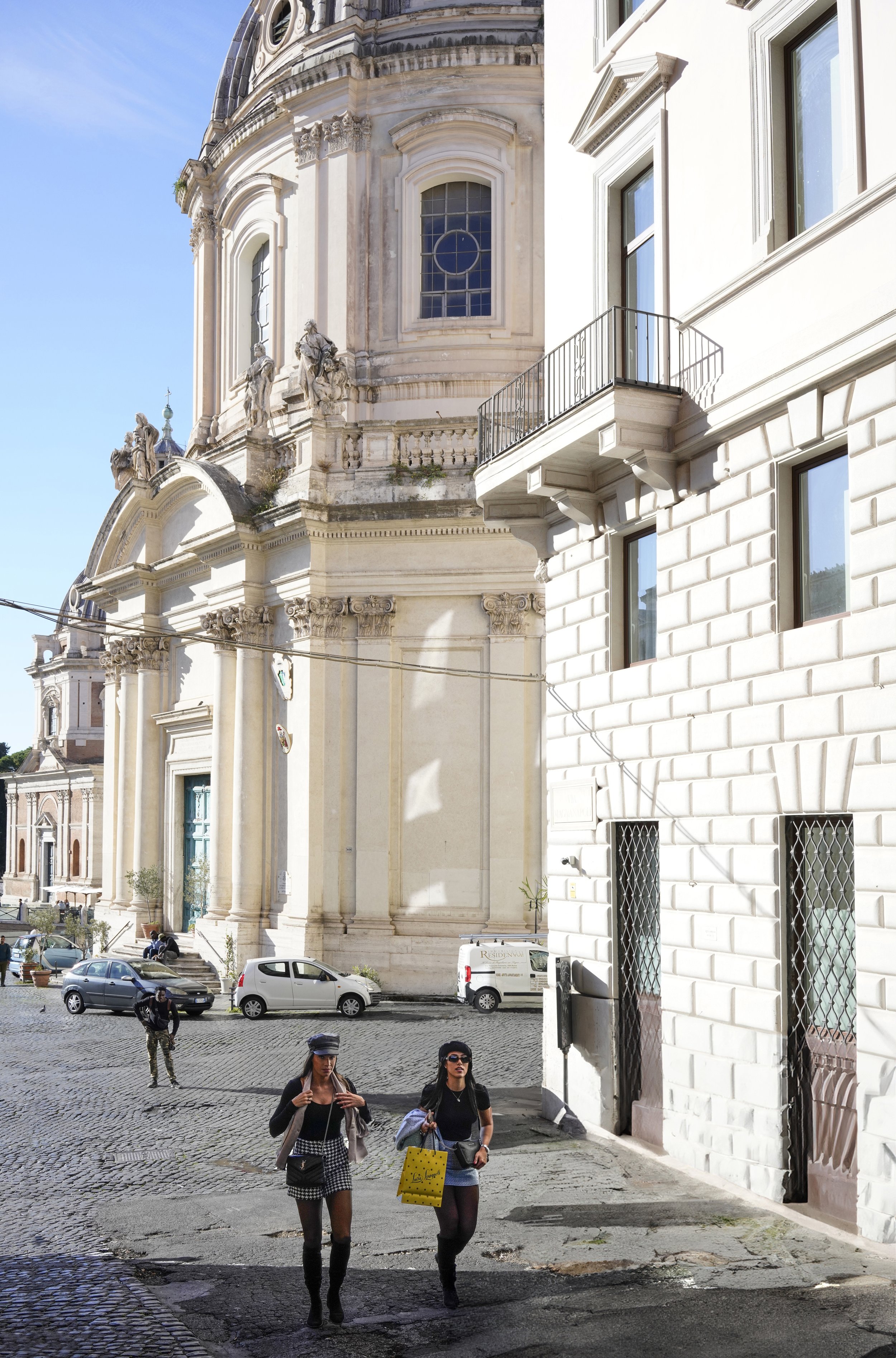
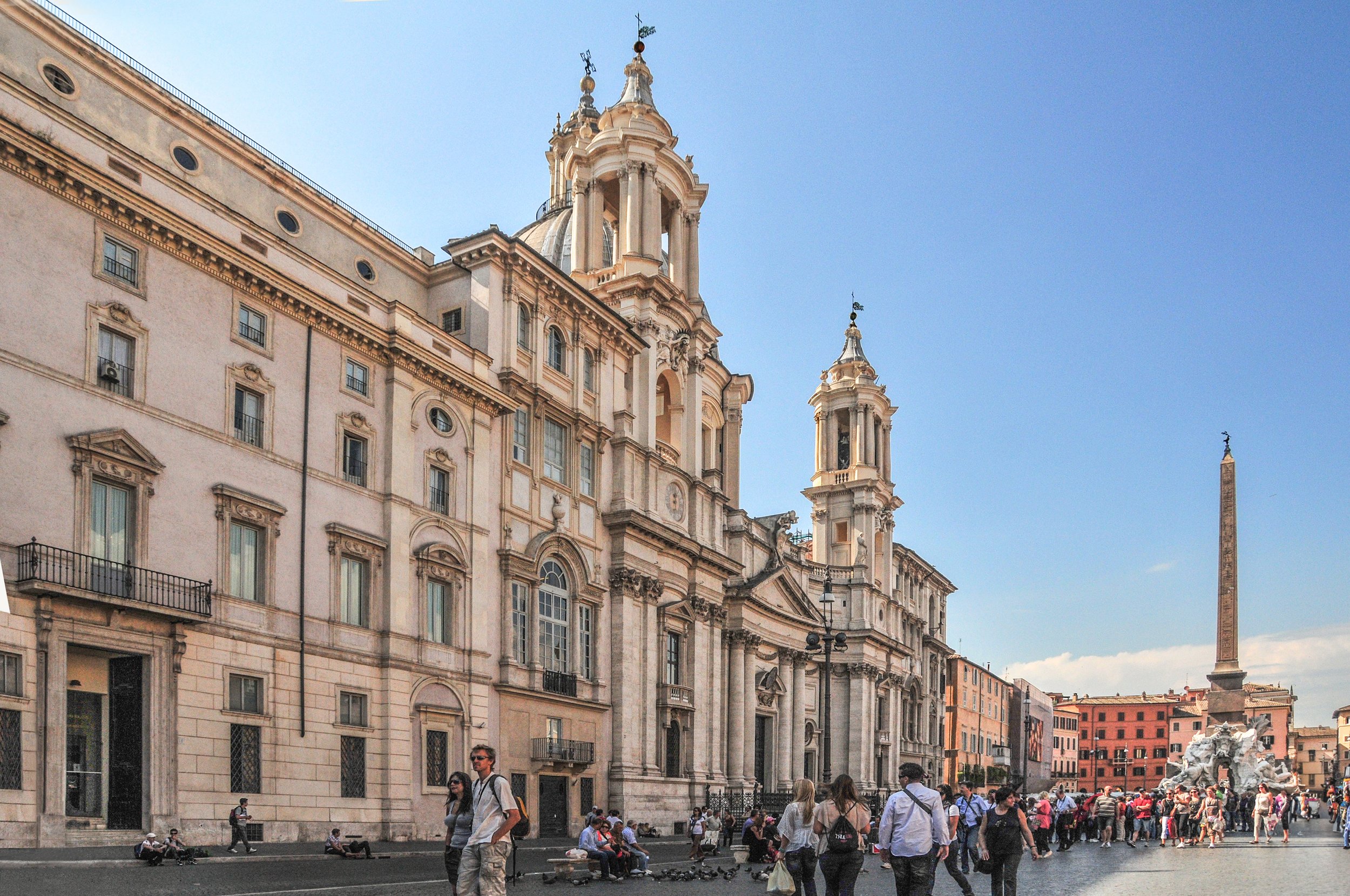
Pope Innocent X, whose family palace, the Palazzo Pamphili, faced onto the piazza Navona, commissioned Gian Lorenzo Bernini to build the Fountain of Four Rivers (1648-1651) in the center of the plazza (far right). Later, the Church of Sant'Agnese in Agone, of which Innocent was the sponsor, was built directly across from the Bernini’s Fountain.
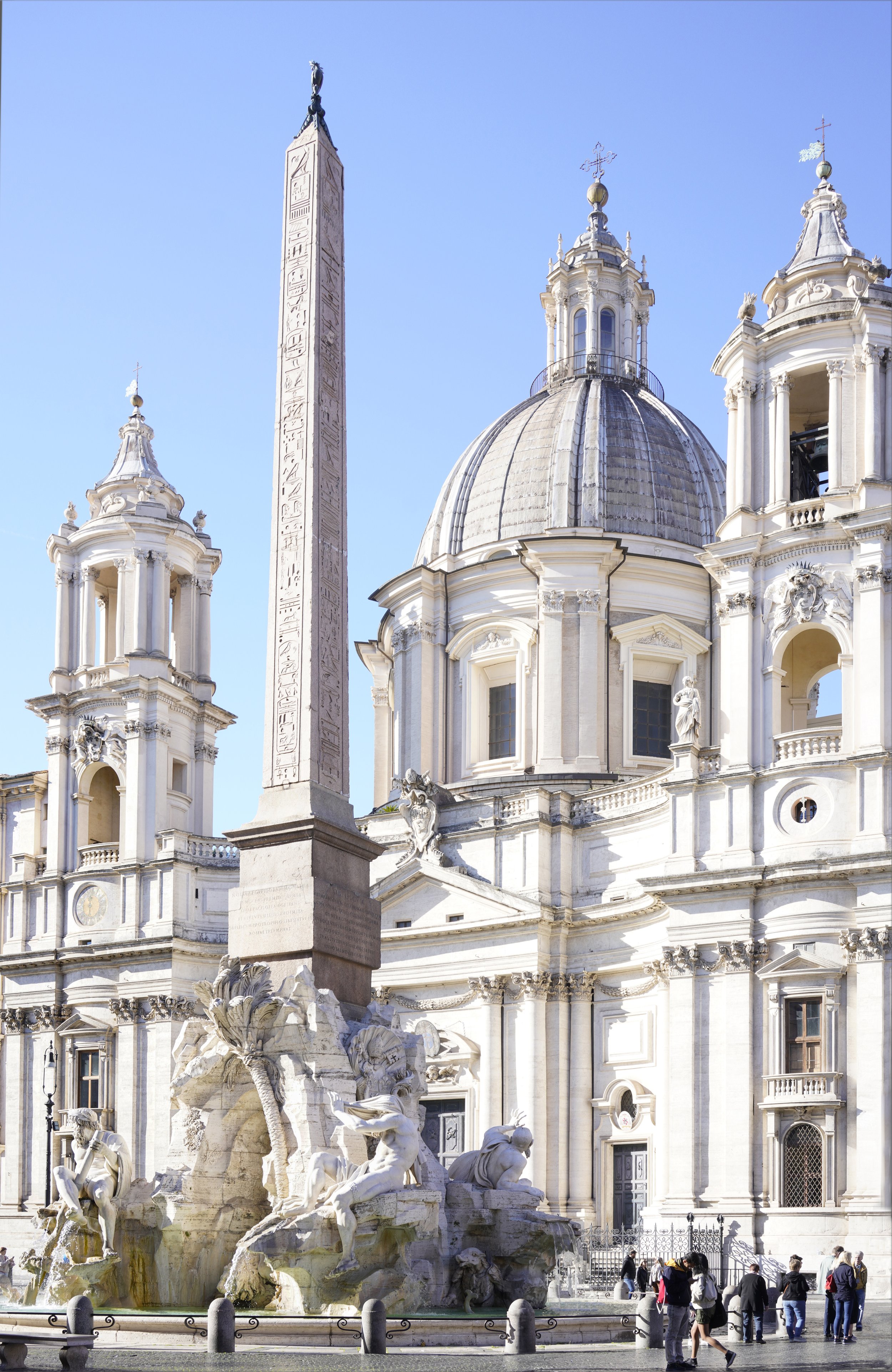
The Fontana dei Quattro Fiumi represents four major rivers of the four continents through which papal authority had spread: the Nile representing Africa, the Danube representing Europe, the Ganges representing Asia, and the Río de la Plata representing the Americas.

The Nile River God’s head is draped with a loose piece of cloth (lifted with the left hand so that we can see, somewhat), meaning that no one at that time knew exactly where the Nile's source was.
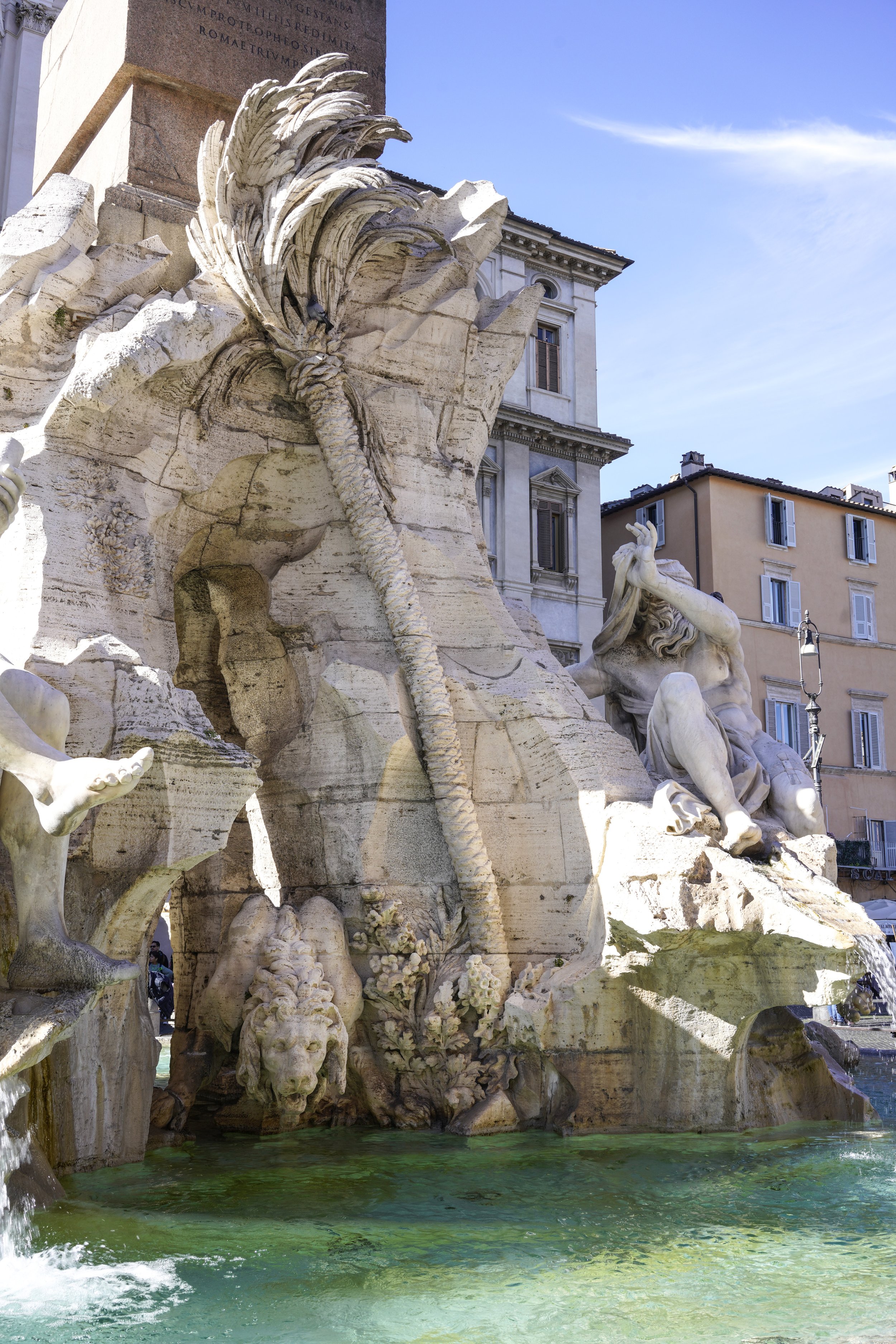
Bernini’s design for the fountain exemplified the Baroque tradition of dynamic movement in his sculpture. Each of the figures, including the animals, with perhaps the exception of the Ganges, appear as if in motion. The fountain epitomizes Baroque theatricality, which some have described as a form of play in the round.
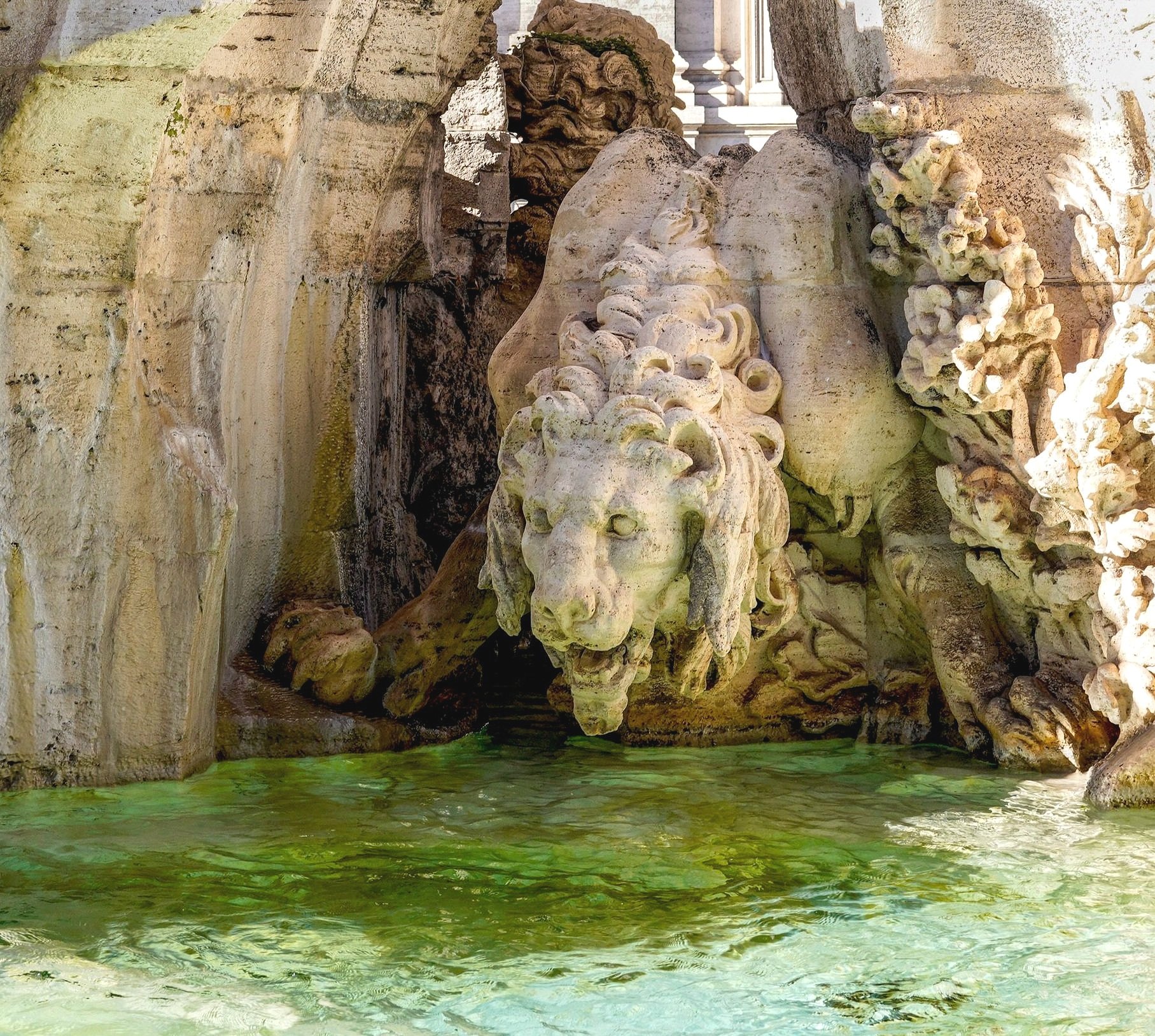
Seven animals are depicted on the fountain. In addition to the bronze dove on top of the obelisk and the dolphins in the Pamphili coat of arms, scattered around the entire fountain are: the lion (above), the armadillo, the land snake, the sea snake, the horse, the dolphin and the dragon.
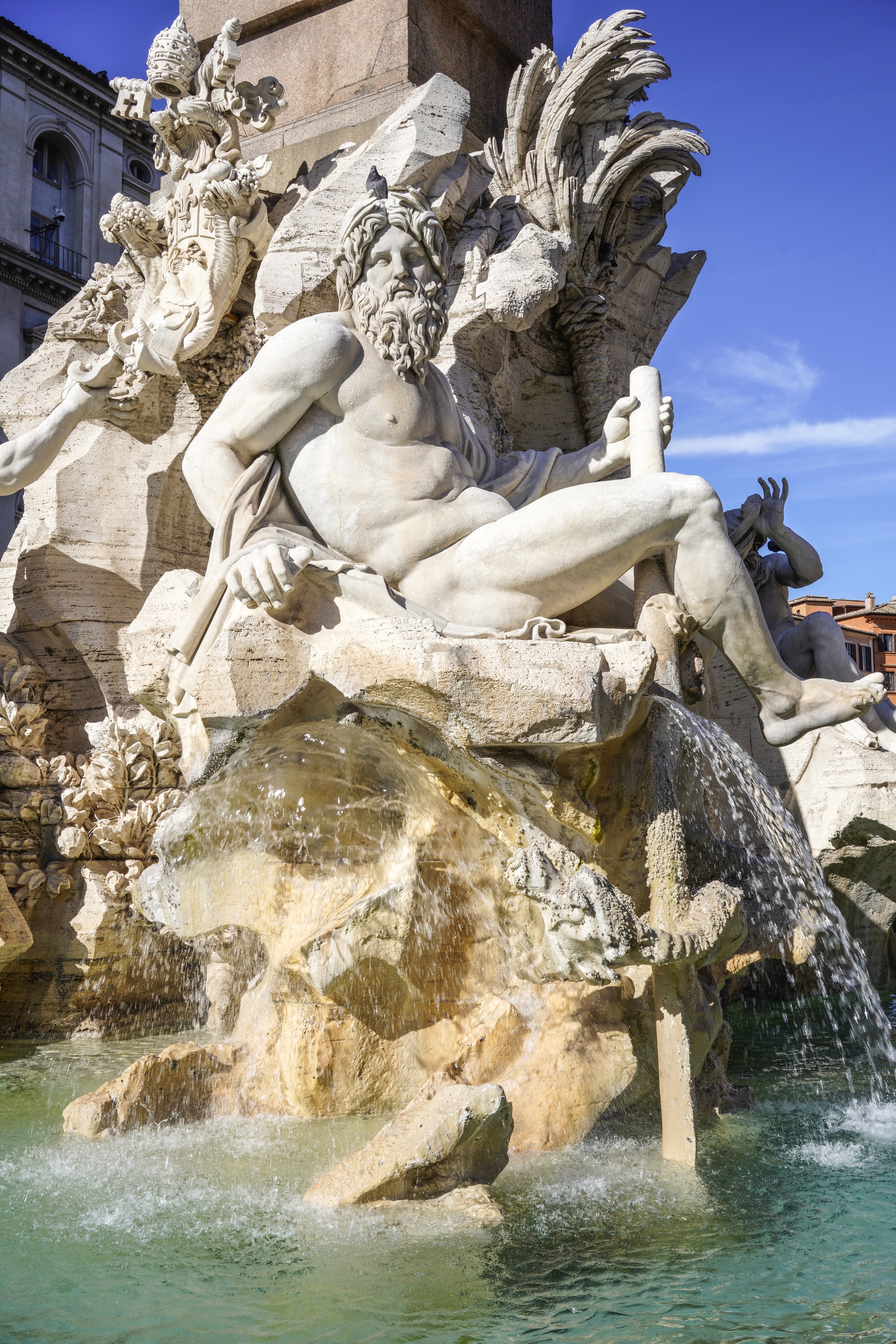
The Ganges River god shares the same side of the fountain with the Nile River god, with tropical plants and a lion between them, expressing what was seen as commonalities in the environments of both continents.
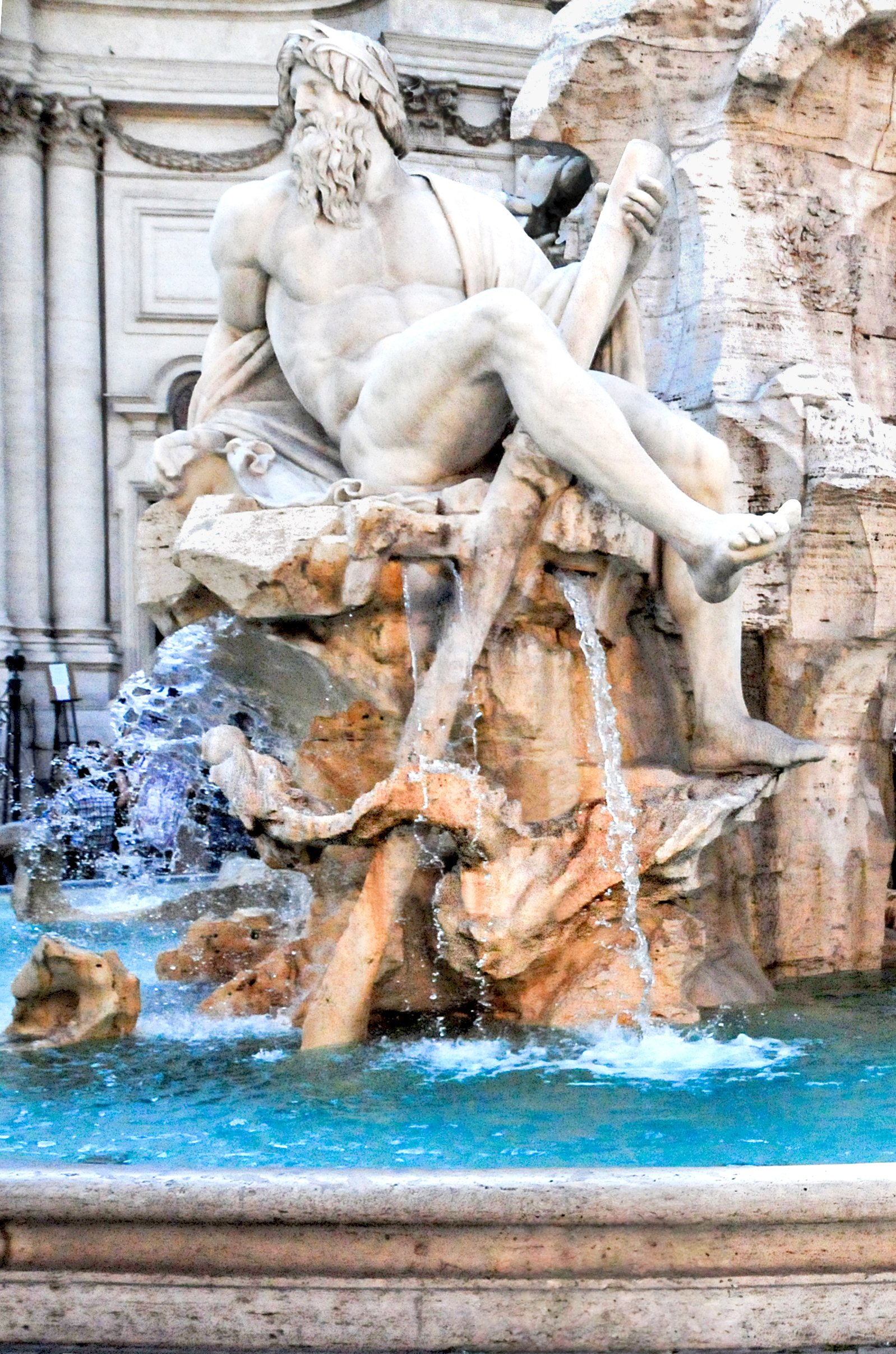
The Ganges River god holds an oar in his hand alluding to the navigability of the river with the neck of a dragon wrapped around the oar, signifying the serpentine and twisting maneuverability of the river.
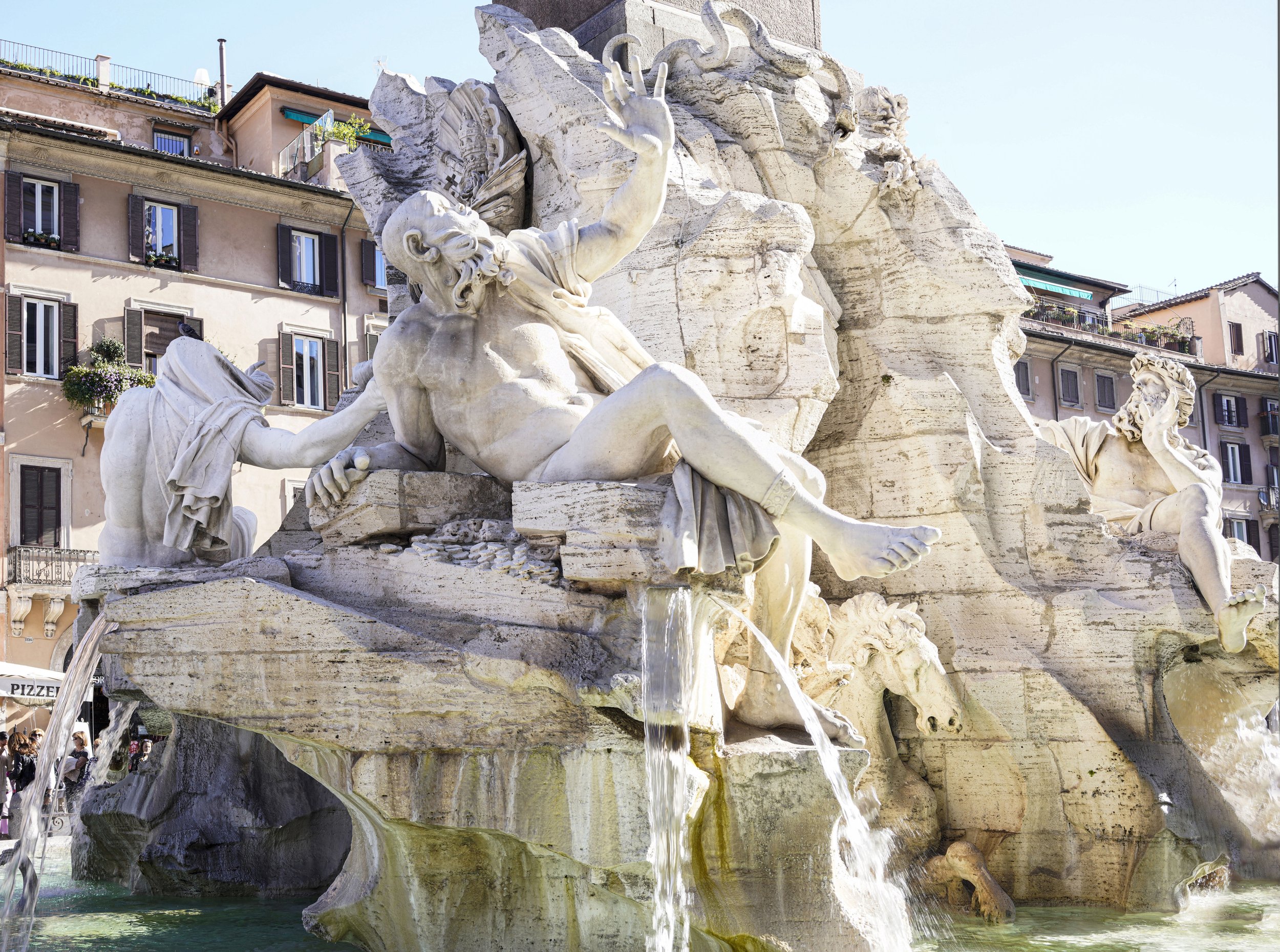
The Rio de la Plata of Argentina and Uruguay, represents the Americas. The Río de la Plata River God is sitting on a pile of coins, a symbol of the riches America could offer to Europe (the word plata means "silver" in Spanish). Also, the Río de la Plata River God looks frightened by a snake, perhaps a warning to rich men about the evils of greed.
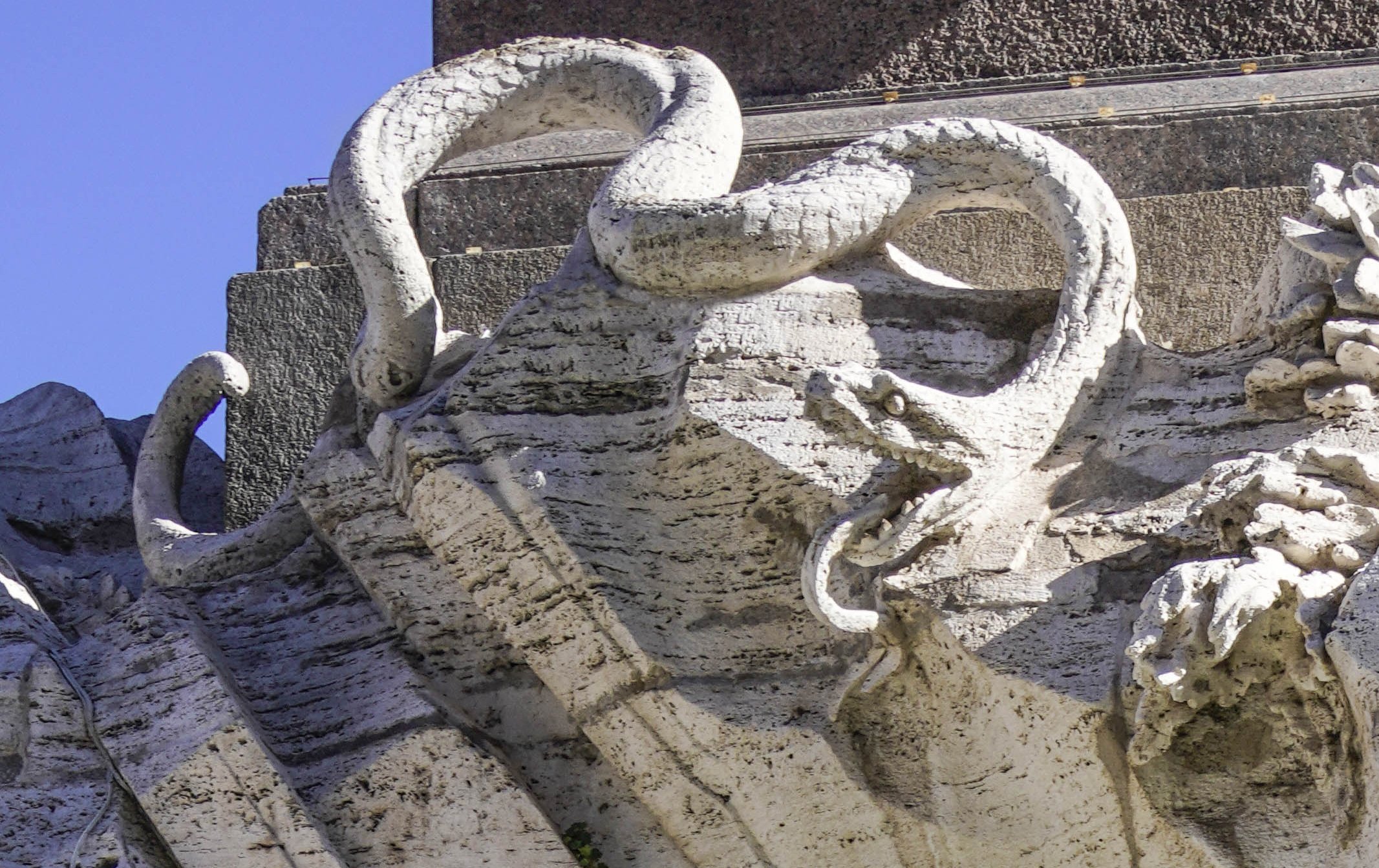
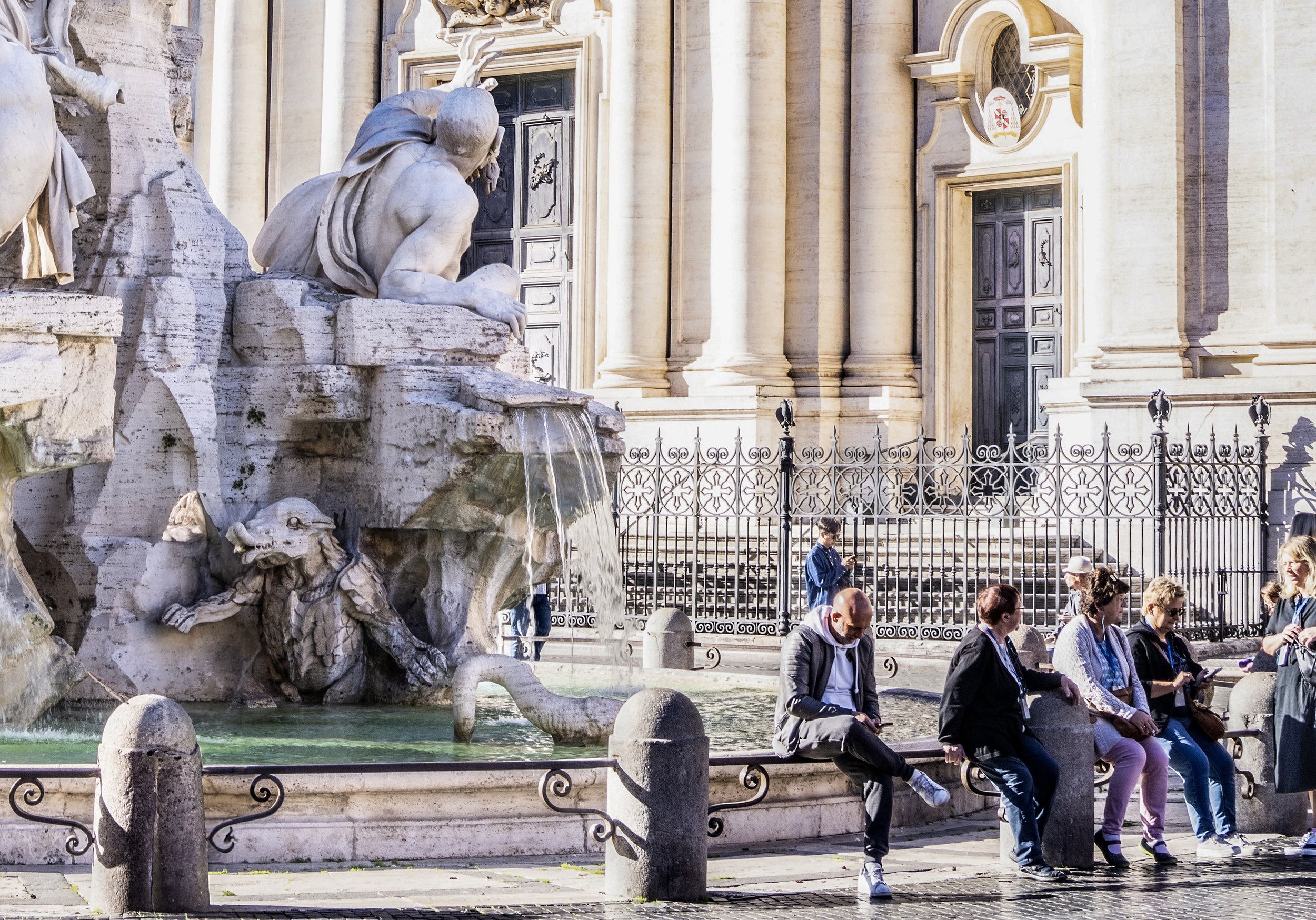
The Rio de la Plata is shown with an armadillo, which was believed to be native to the area. However, its ridiculous appearance reveals how little was actually known of the New World.
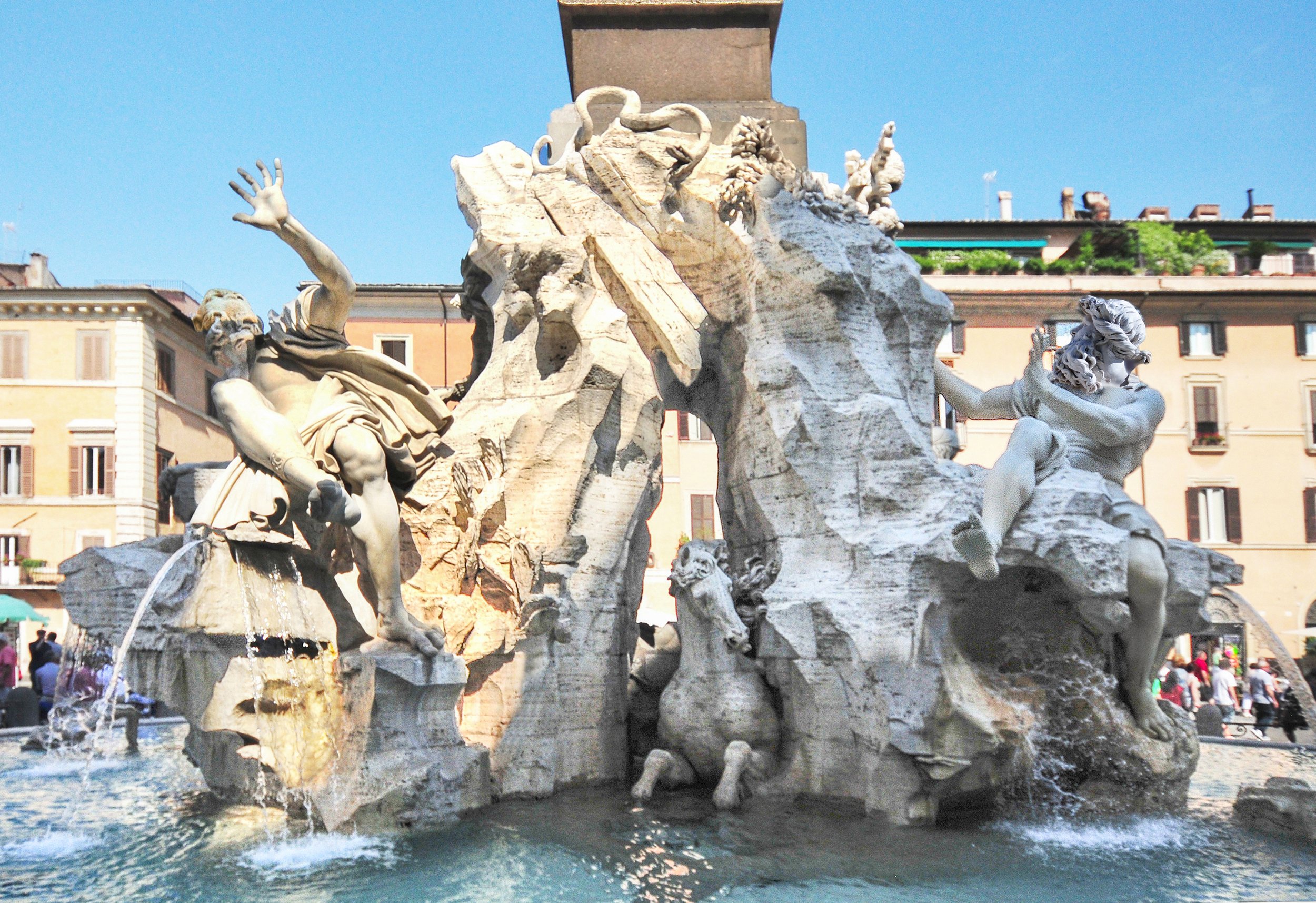
Between the Danube and the Rio de la Plata gods is a large horse, native to both regions, indicating a desired connection between Europe and the Americas.
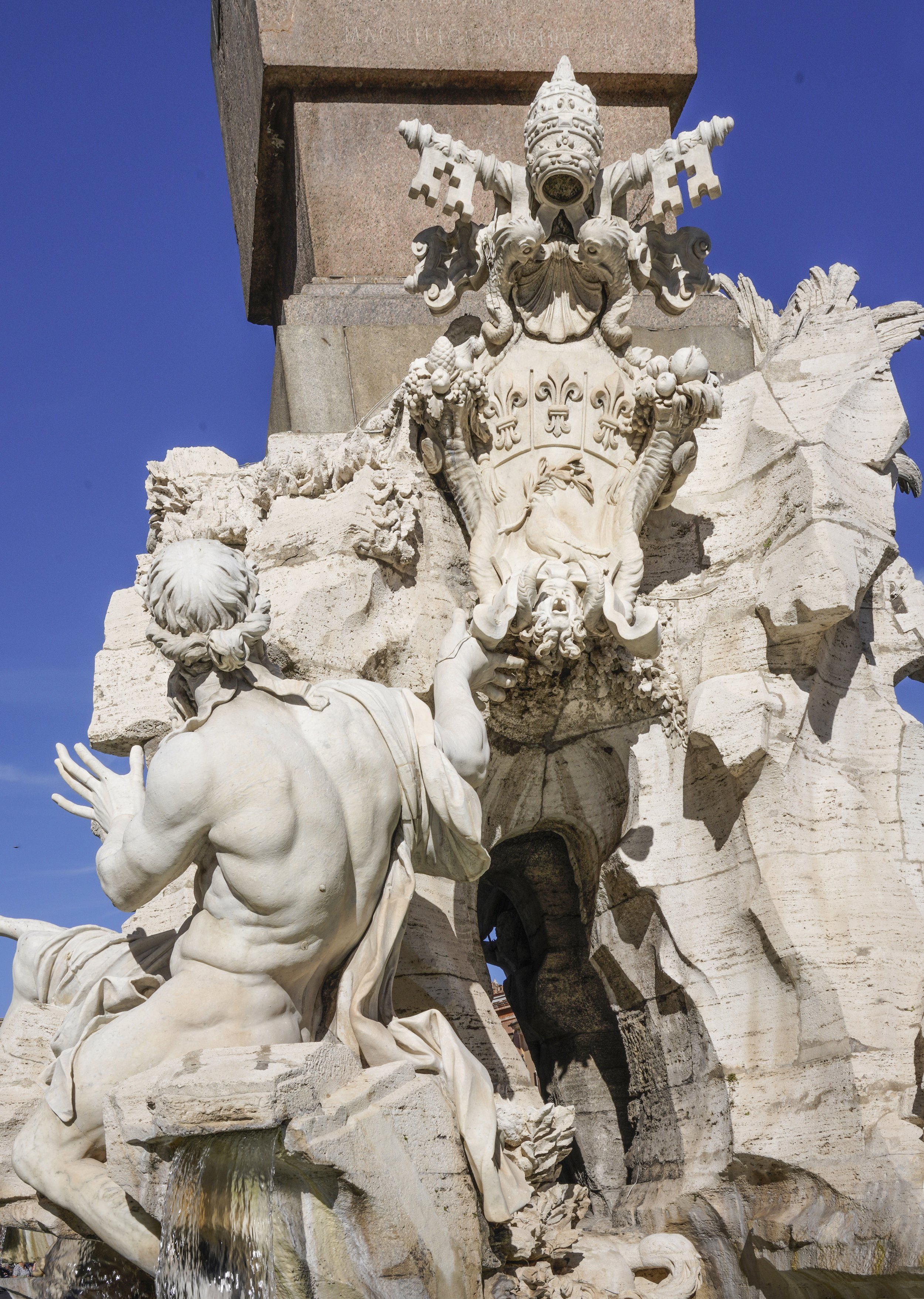
The Danube River God touches the Pope's personal coat of arms, since it is the large river closest to Rome, flowing from Germany to Ukraine. The coat of arms contains two dolphins around a seashell at the top of the heralds.

As the Danube god touches the Pamphili herald with his right hand, a sea serpent swims by, perhaps a reminder of the dangers of the Danube River warfare to the Catholic Church in the long conflict between the Catholic Hapsburgs and the Muslim Ottoman Turks in Hungary.
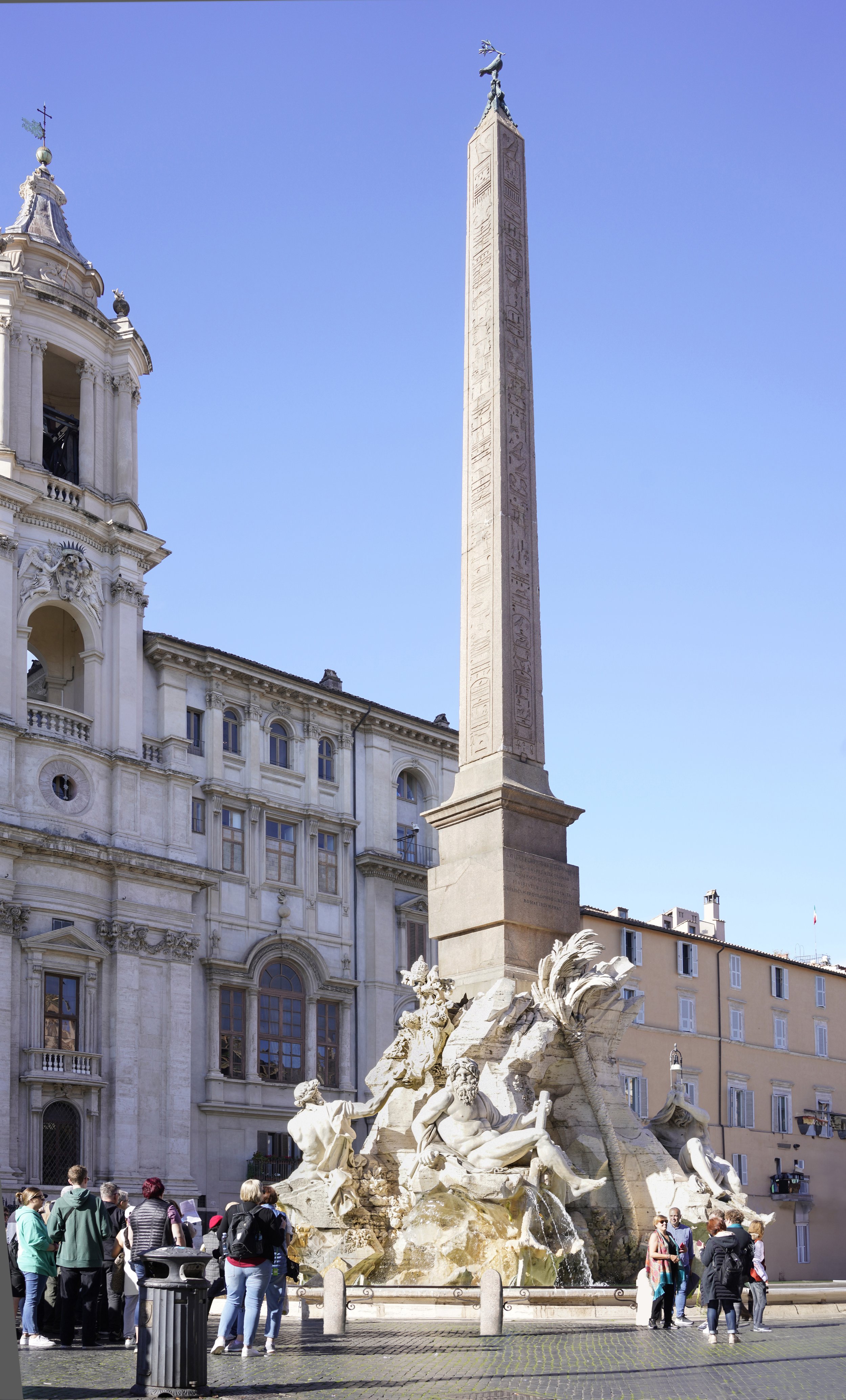
The Agonal obelisk, came from the Circus of Maxentius on the Appian way in the 4th century. The obelisk had lain in pieces for centuries in the Circus Maximus until Innocent X decided to use it for his fountain. It is surmounted with the Pamphili family emblem of a dove with an olive twig. The hieroglyphics, carved by order of Emperor Domitian, refer to him as 'eternal pharaoh' and to Vespasian and Titus as gods.

Fontana del Moro was originally designed by Giacomo della Porta in the 1570s with later contributions from Gian Lorenzo Bernini in the 1650s. Bernini sculpted a large terracotta model of the central figure, which Giovanni Antonio Mari used as a guide when sculpting the final figure. Some of the original sculptures were moved to the Galleria Borghese in 1874.
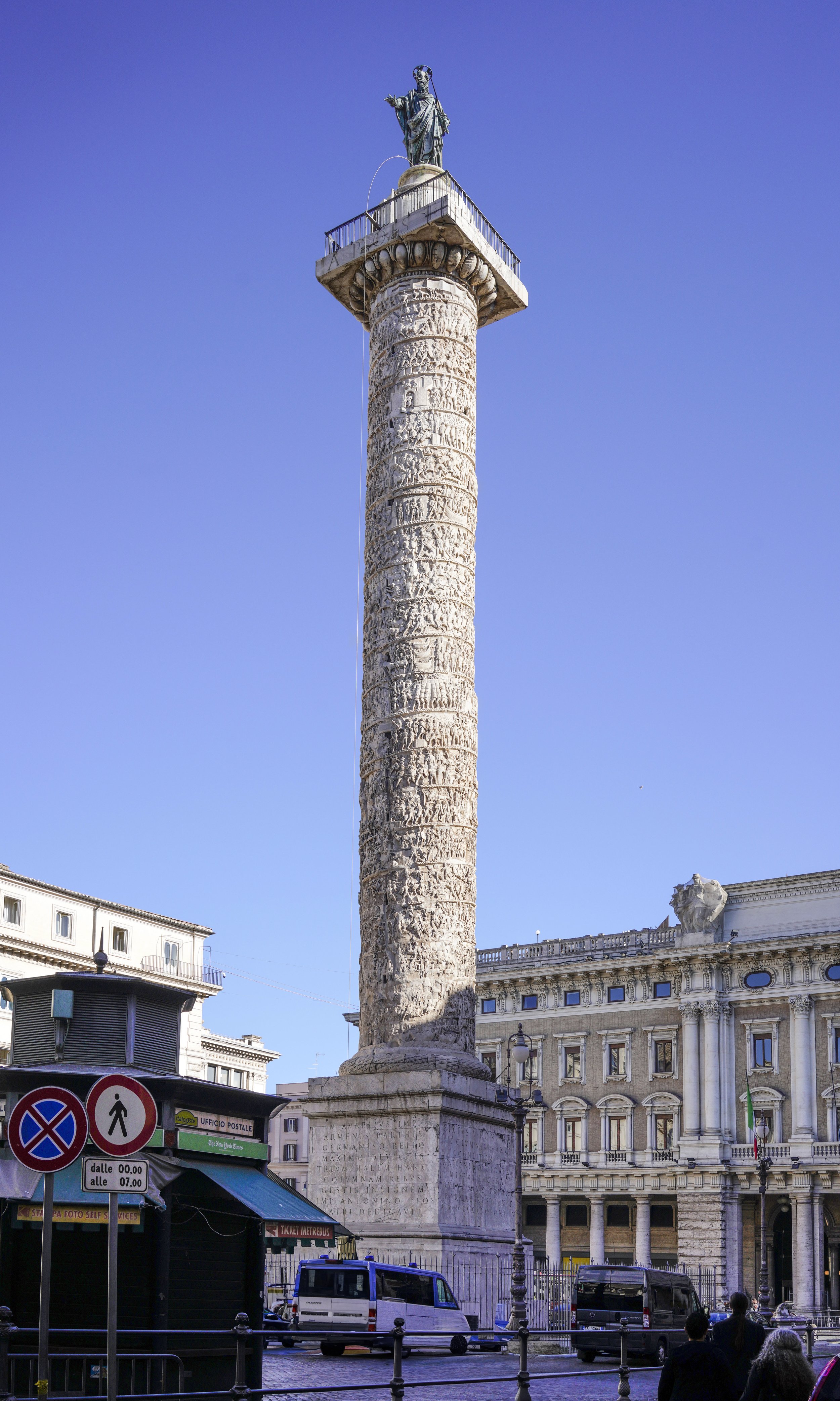
The Column of Marcus Aurelius is a Doric column containing a frieze, which depicts the Northern Germanic campaigns of Marcus Aurelius’ and his war with the Barbarians. The column's shaft is 97 ft high, on a 33 ft high base. About 10 ft. of the base have been below ground level since the 1589 restoration. The column is hollowed out for a stairway of 190–200 steps within the column up to a platform. The original statue of Marcus Aurelius at the top of the column was removed and switched with St.Paul after Christianity became the dominant religion.
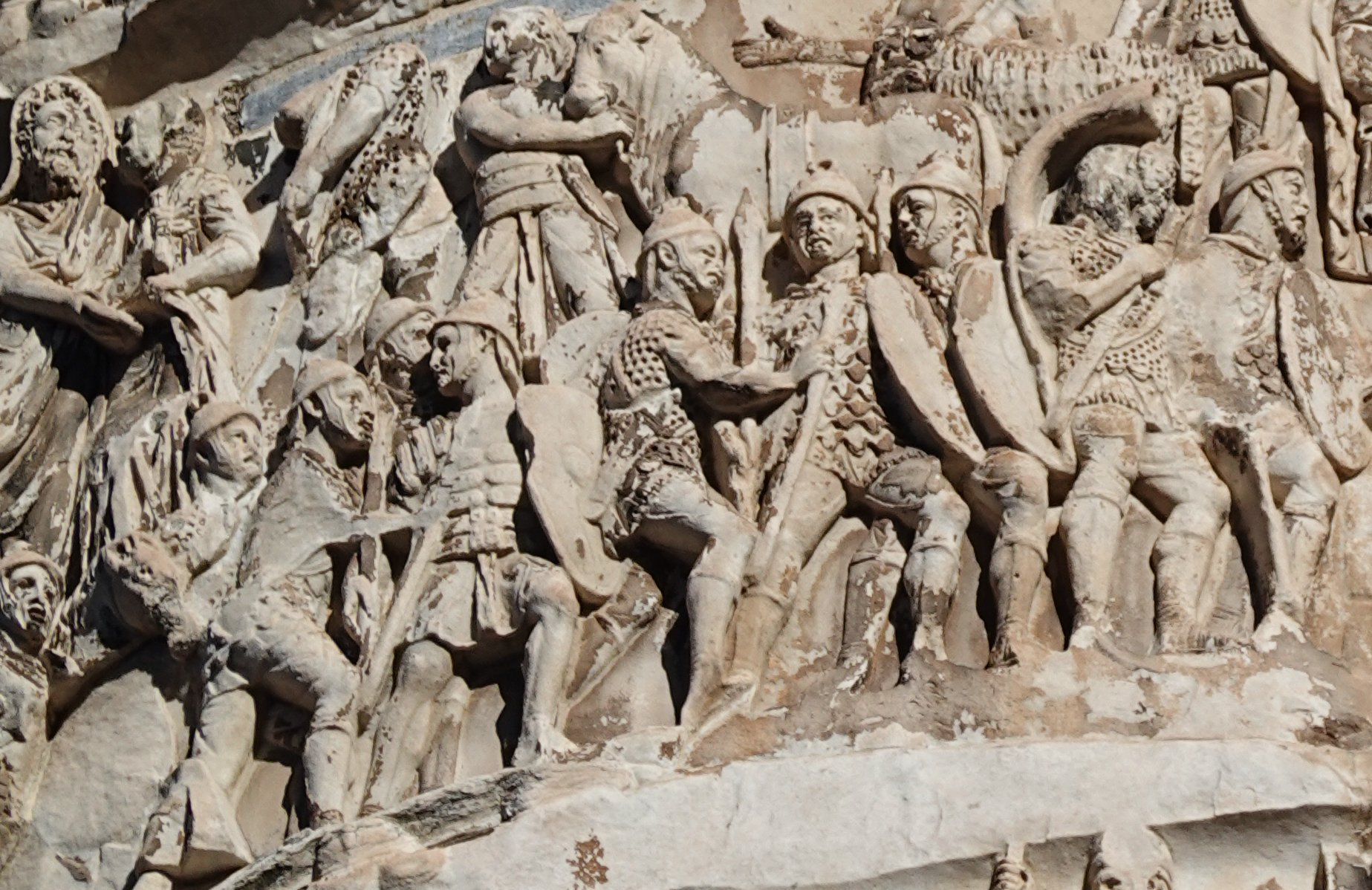
The carvers of the Column of Marcus Aurelius made the figures' heads disproportionately large so that the viewer could better interpret their facial expressions. The scenes repeatedly portray the weak and frantic barbarian people being crushed by the strong and orderly Romans. The pictorial language is unambiguous – imperial dominance and authority is emphasized, and its leadership is justified.
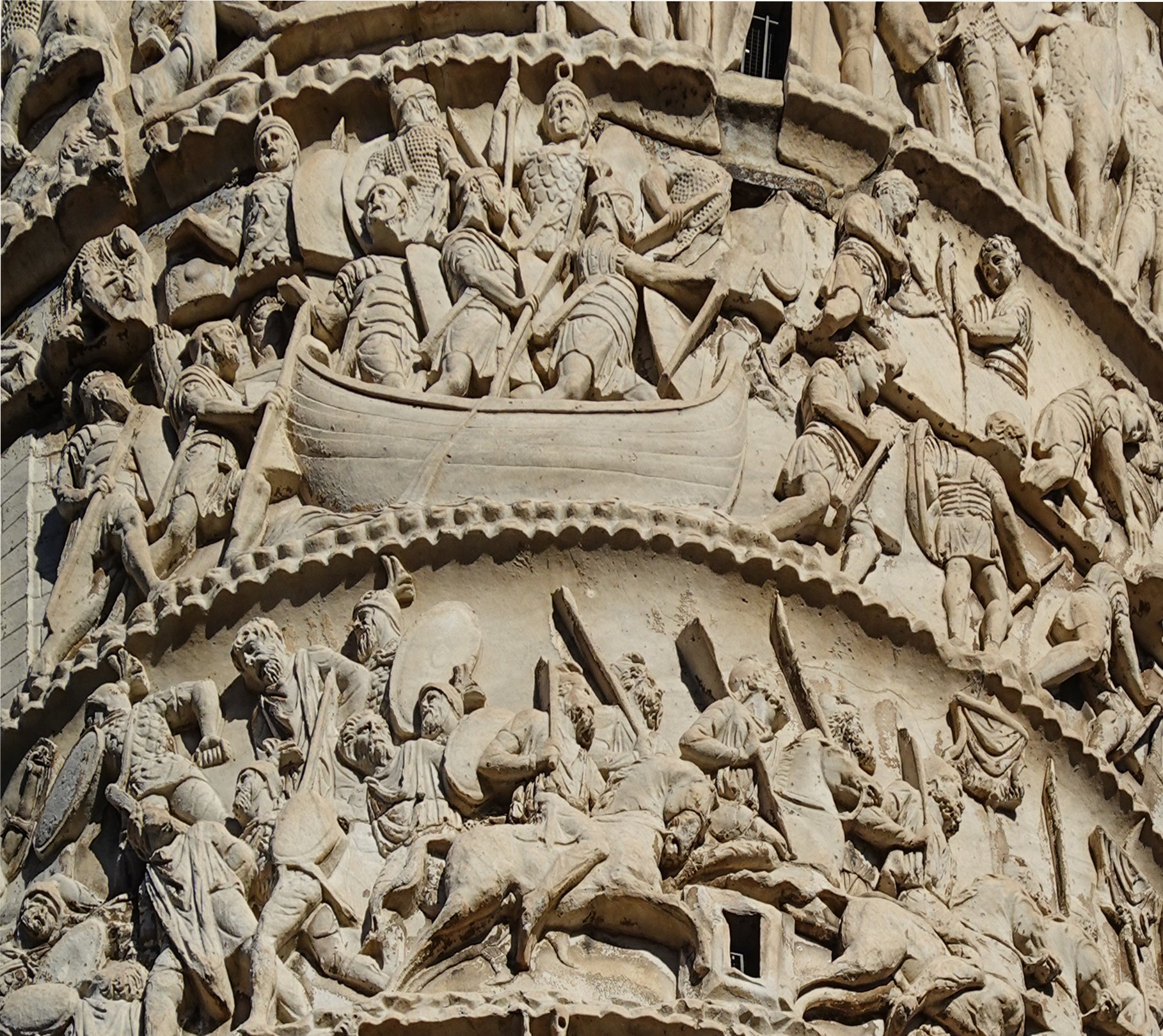
As the emotion, despair, and suffering of the "barbarians" in the war are represented acutely in single scenes, the emperor is represented as protagonist, in control of his environment. Marcus Aurelius is purported to have said, “It is not death that a man should fear, but he should fear never beginning to live. Accept the things to which fate binds you and love the people with whom fate brings you together, but do so with all your heart. Never let the future disturb you.”
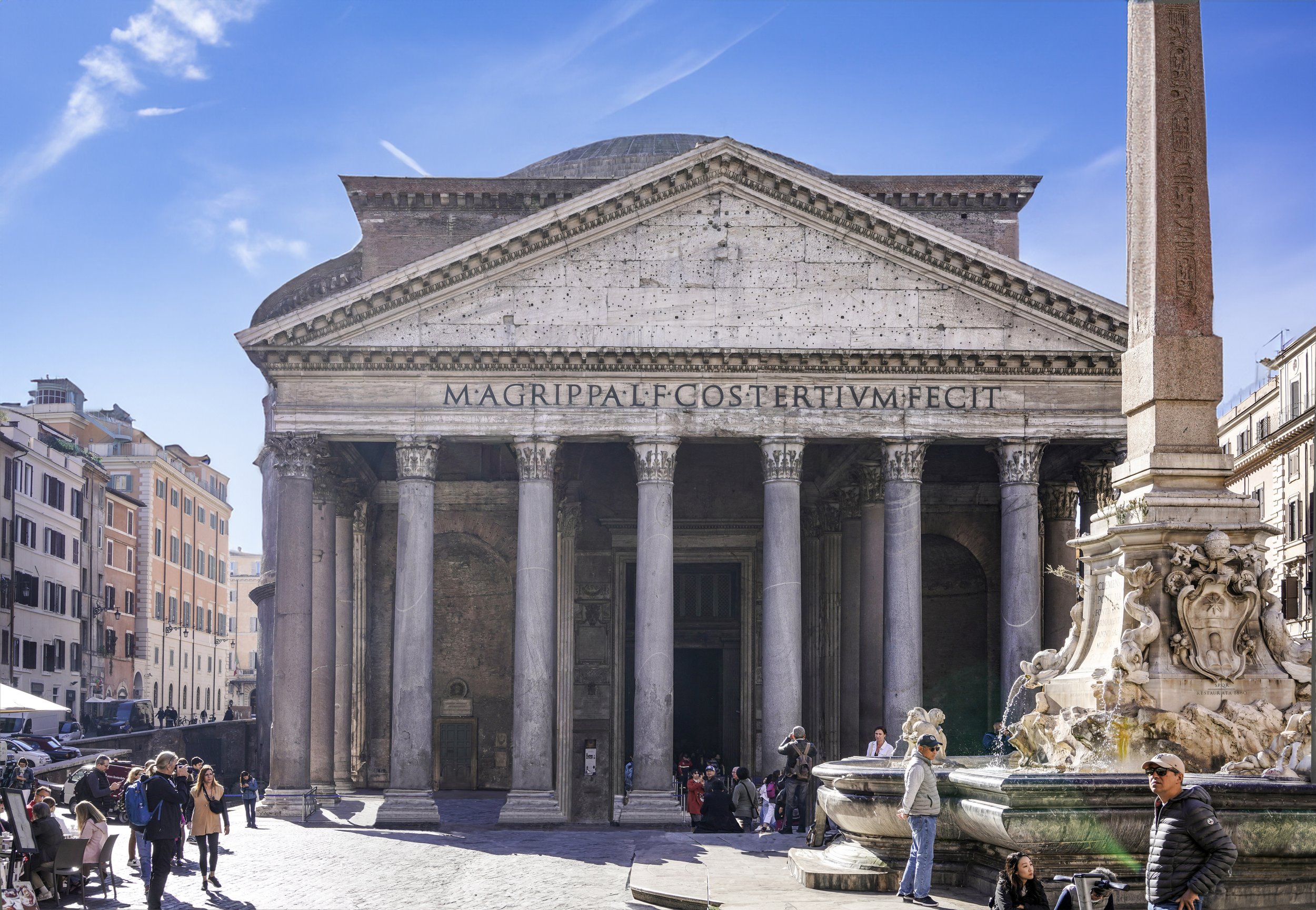
The Pantheon was built by Marcus Agrippa during the reign of Augustus (27 BCE –CE); Augustus was Marcus Agrippa’s father-in-law. The original temple burnt down, and Hadrian built the present building. The Latin inscription on the facade, “M. AGRIPPA. L. F. COS. TERTIUM. FECIT,” translates to: Marcus Agrippa, son of Lucius, built this when he was consul for the third time. The temple was dedicated (c. 126 CE) to the victory of the emperor Augustus over Antony and Cleopatra.
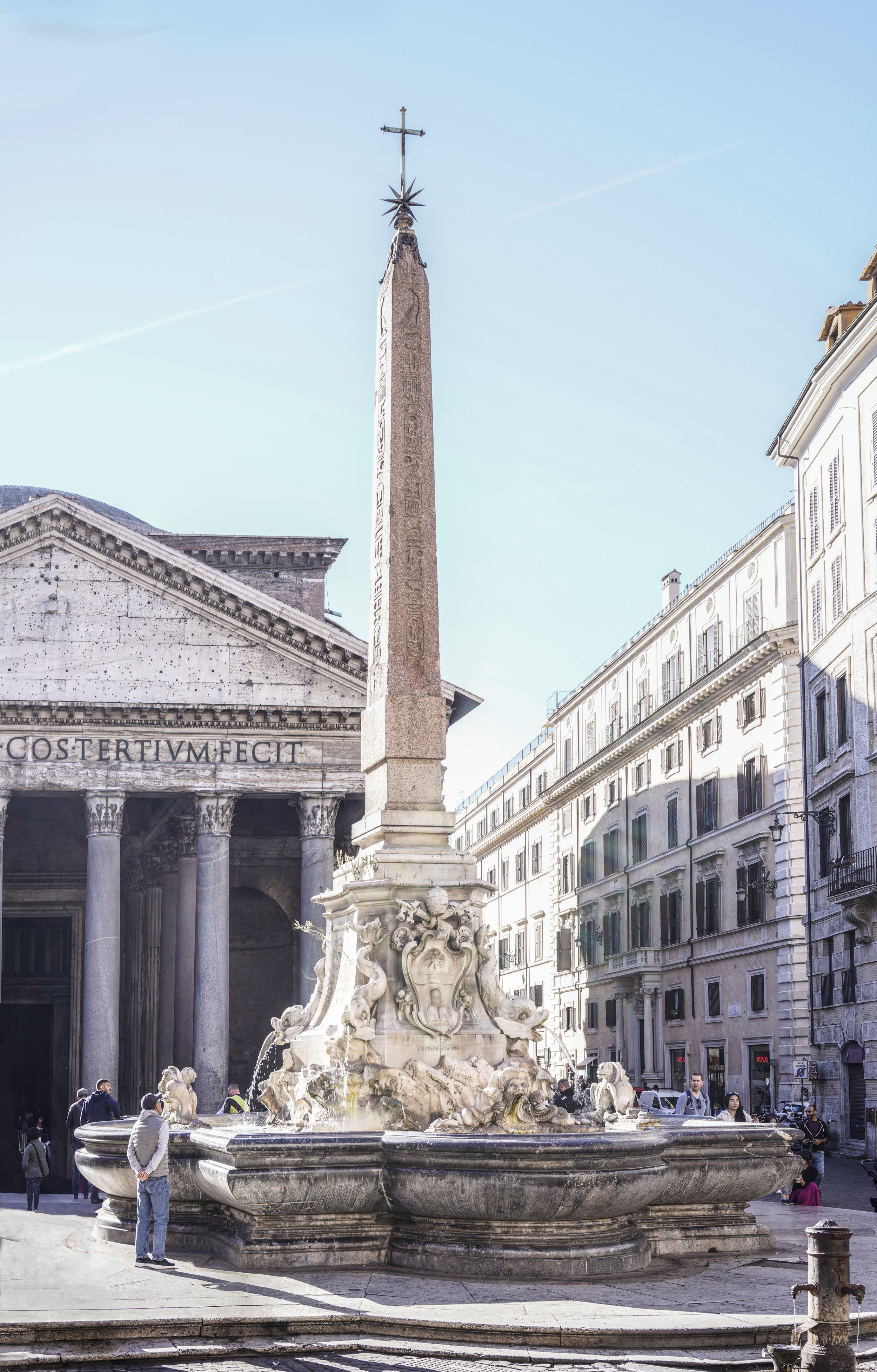
The Fountain of the Pantheon was designed by Giacomo Della Porta and sculpted out of marble by Leonardo Sormani. In 1711, Pope Clement XI requested that the fountain be modified and had Filippo Barigioni design a new layout, which included a different basin, made of stone, and the obelisk, created during the period of Ramses II (c. 1303 BC – 1213 BC), set in the center on a plinth with four dolphins decorating the base.
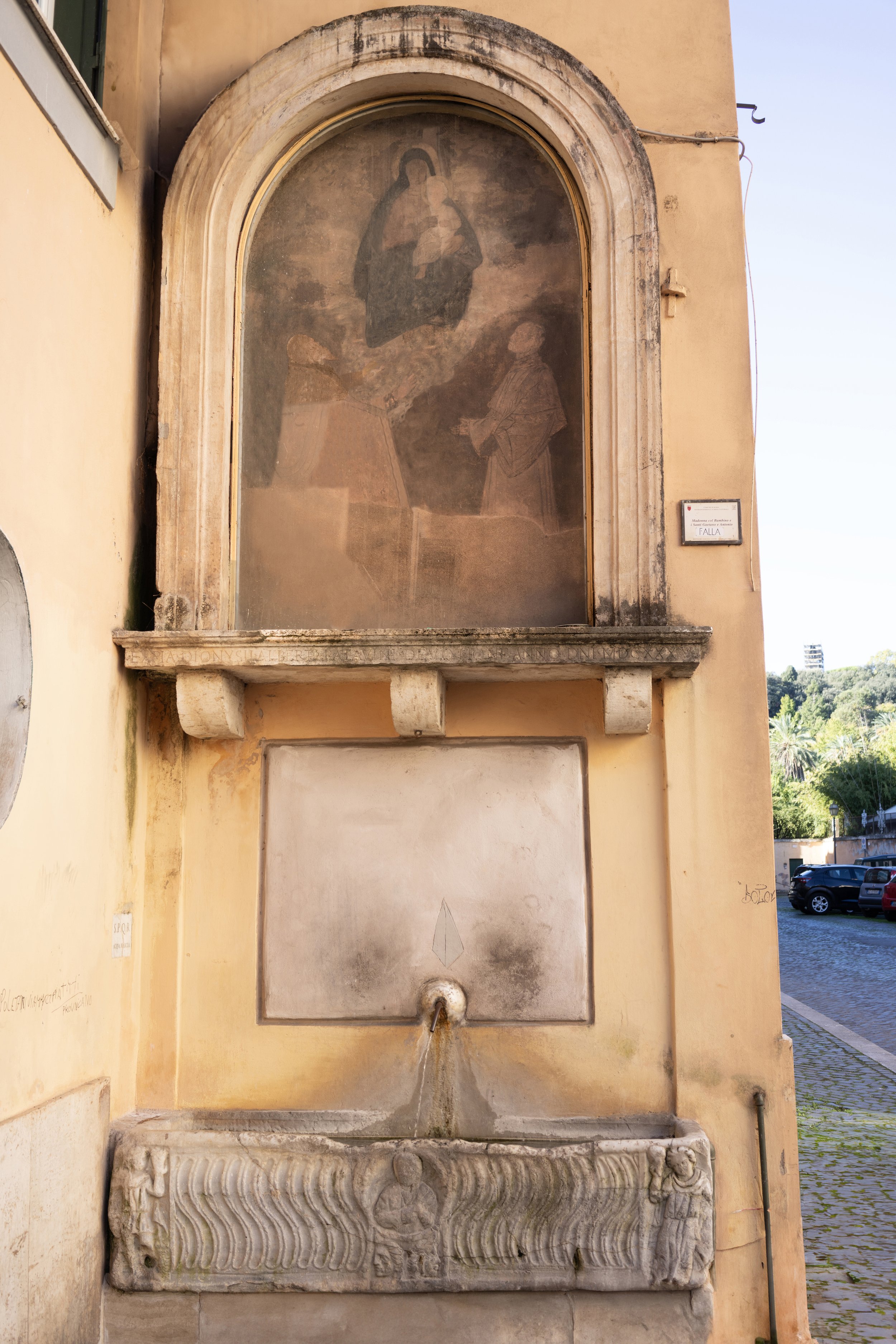
In Rome, as in all of Italy, remnants of public sacred art are omnipresent.

When the friars of Santa Maria Sopra Minerva were digging a new foundation in 1665, they uncovered an obelisk. Pope Alexander VII (Fabio Chigi) commissioned Bernini to create a monument for the ancient Egyptian obelisk. The obelisk is 18 feet tall and is the smallest of the 13 ancient obelisks present in Rome today.
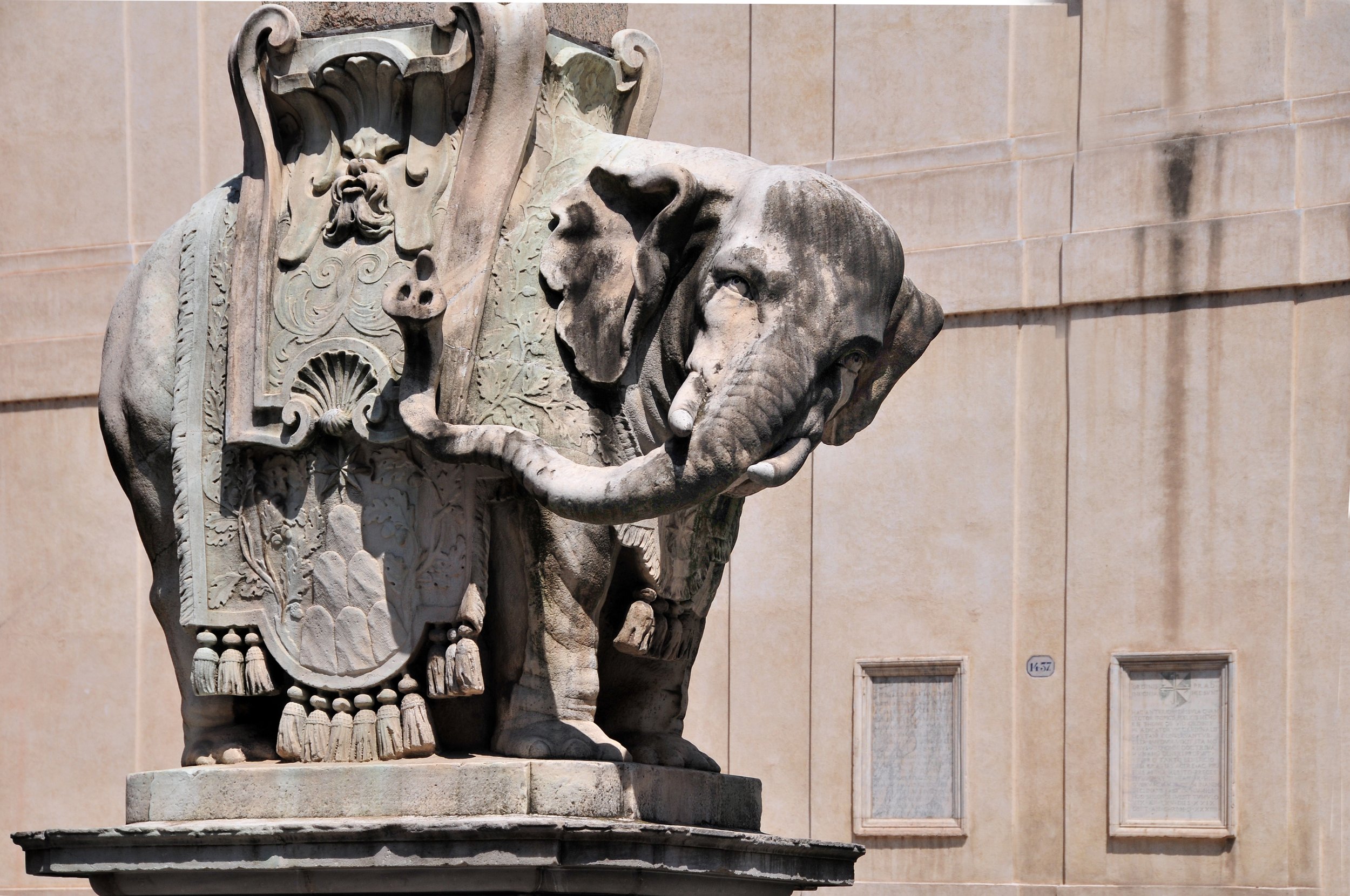
Pope Alexander VII wanted an image to show how wisdom requires a strong foundation. Bernini produced an elephant supporting the obelisk on a saddle adorned with the Chigi herald. The elephant’s trunk defies the logic of marble. The Latin inscription at one side of the pedestal reads: "Let any beholder of the carved images of the wisdom of Egypt on the obelisk carried by the elephant, the strongest of beasts, realize that it takes a robust mind to carry solid wisdom.”

San Maria della Vittoria, designed and completed by Baroque architect Carlo Maderno, located on Quirinal Hill in Rome, Italy. Santa Maria della Vittoria is a Catholic titular church and basilica dedicated to the Virgin Mary. There has been a titular church associated to its site as far back as 280 CE. The current church was rebuilt from 1585 to 1603 for a monastery of Cistercian nuns founded on the site in 1587, which still exists there.

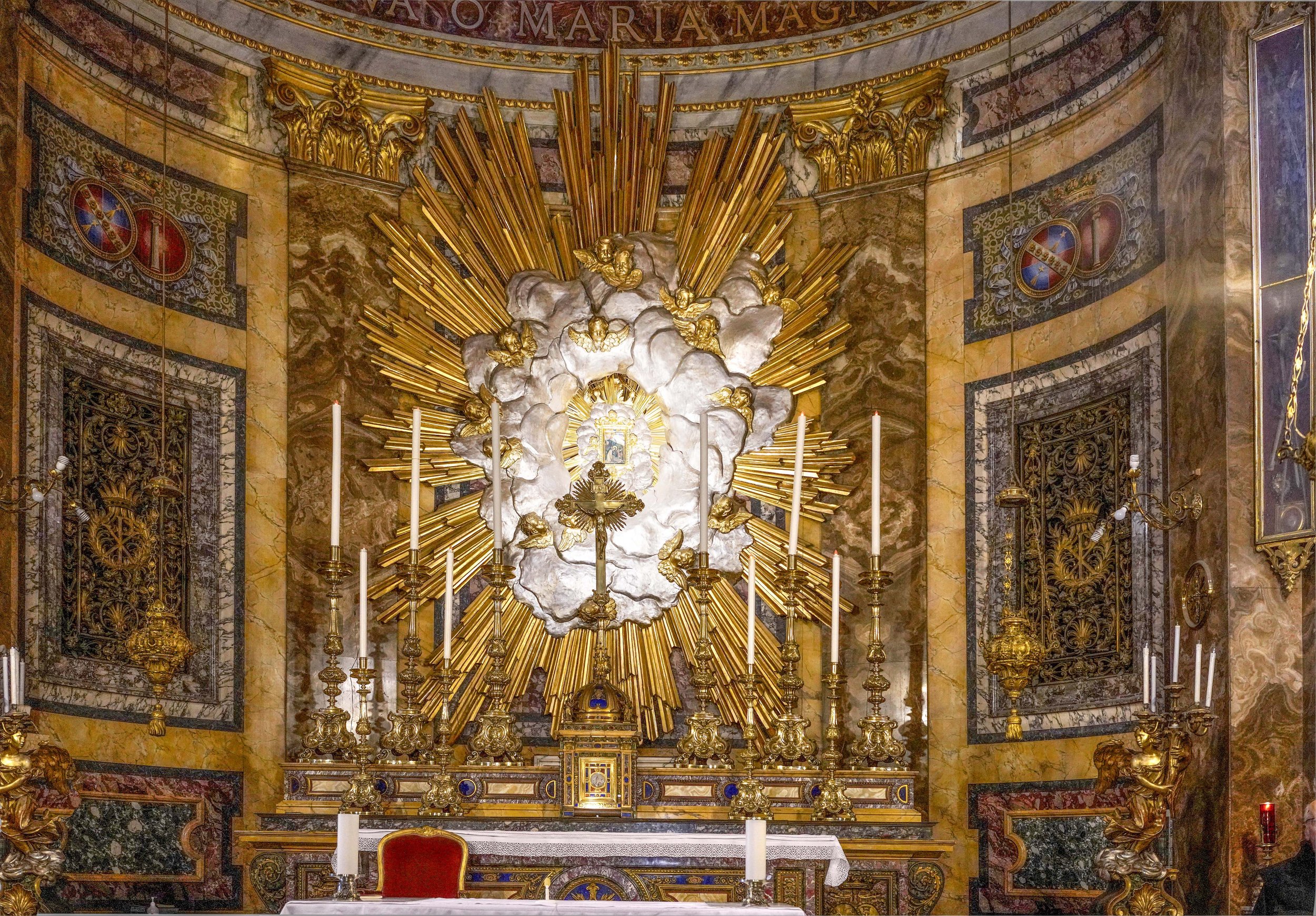
San Maria della Vittoria, designed and completed by the early Baroque architect Carlo Maderno, built from 1608 to 1620 and located on Quirinal Hill in Rome, Italy. The main altar of Santa Maria della Vittoria church has an ornate gold sunburst breaking through the clouds. The church is the final resting place of Saint Victoria (d. 304 CE), whose preserved remains are on display inside.

Genesis 37: Joseph had a dream, and when he told it to his brothers, they hated him all the more. He said to them, "Listen to this dream I had: We were binding sheaves of grain out in the field when suddenly my sheaf rose and stood upright, while your sheaves gathered around mine and bowed down to it." His brothers said to him, "Do you intend to reign over us? Will you actually rule us?" And they hated him all the more because of his dream and what he had said.

Bernini, as architect and designer, made use of the pietra dura process for decorating the floor pavements in the Cornaro Chapel where his Ecstasy of Santa Teresa is located. Pietra dura (meaning hard stone) is the result of stone intarsia technique of fitted colored stone pieces together so as to create patterns and images.
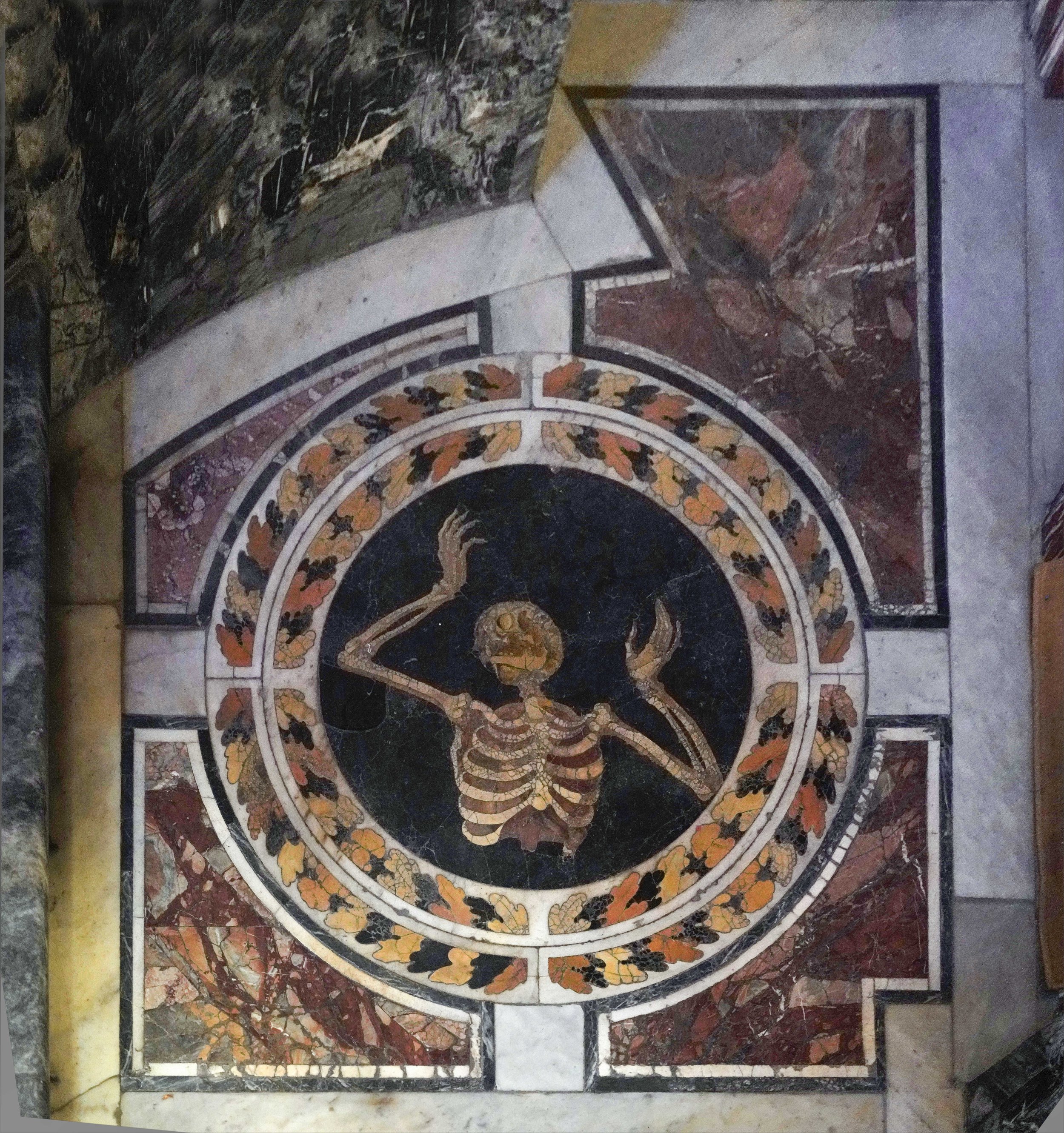
“Stone painting” was the term chosen by its initiators to define the pietra dura mosaic process. In 1588 Grand Duke Ferdinando I de'Medici established a court workshop in Florence to specialize in the making of semi-precious mosaics and inlays.
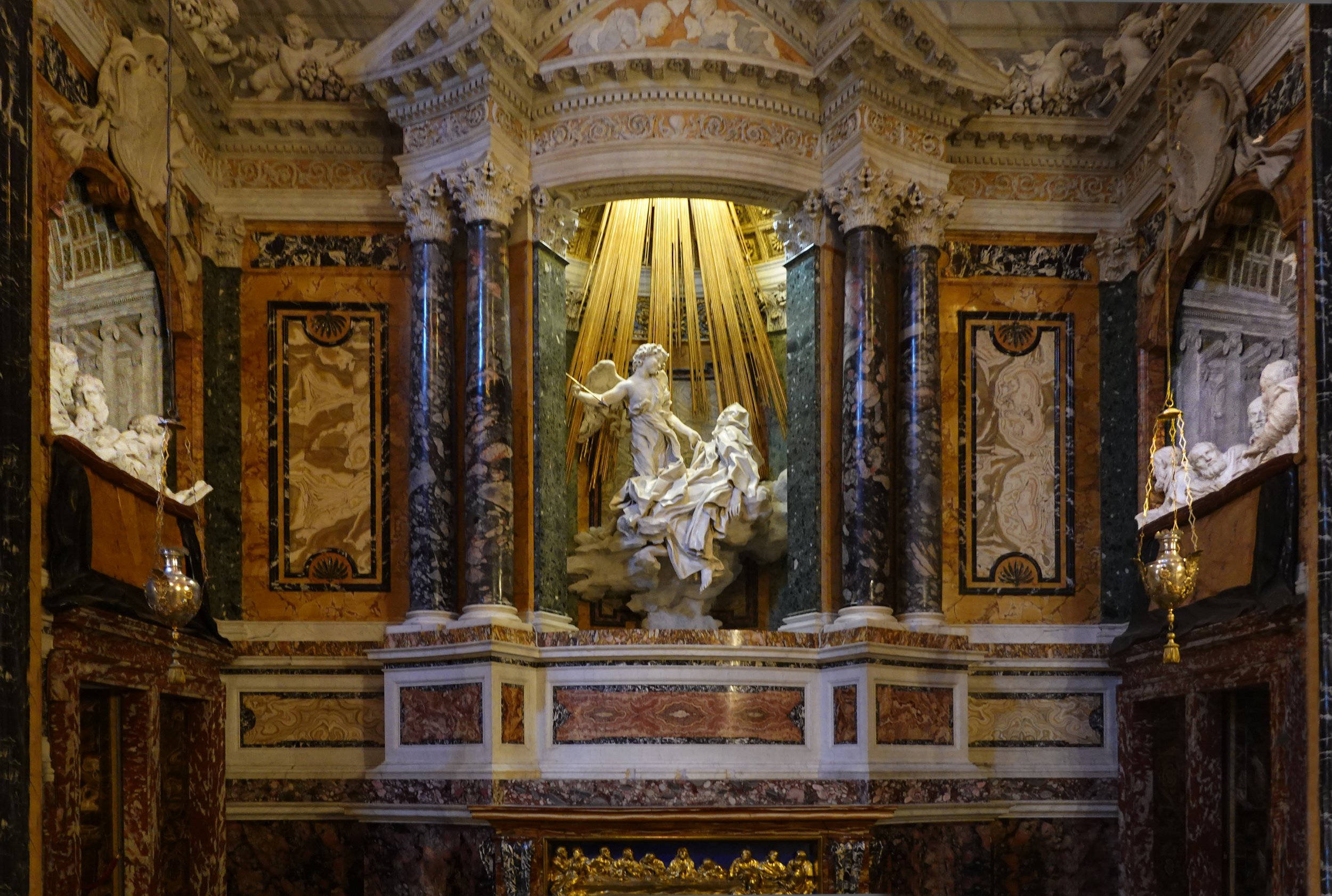
The chapel, commissioned by Federigo Cardinal Cornaro, is in a shallow transept. The focal point is Bernini’s sculpture of The Ecstasy of St. Teresa (1645–52), a depiction of a mystical experience of the great Spanish Carmelite reformer Teresa of Ávila. In the center of the sculpted group Bernini represents Teresa’s vision, during which an angel pierced her heart with a fiery arrow of divine love. In theater boxes to the left and right of the event, Bernini furnishes witnesses to St. Teresa’s miracle.
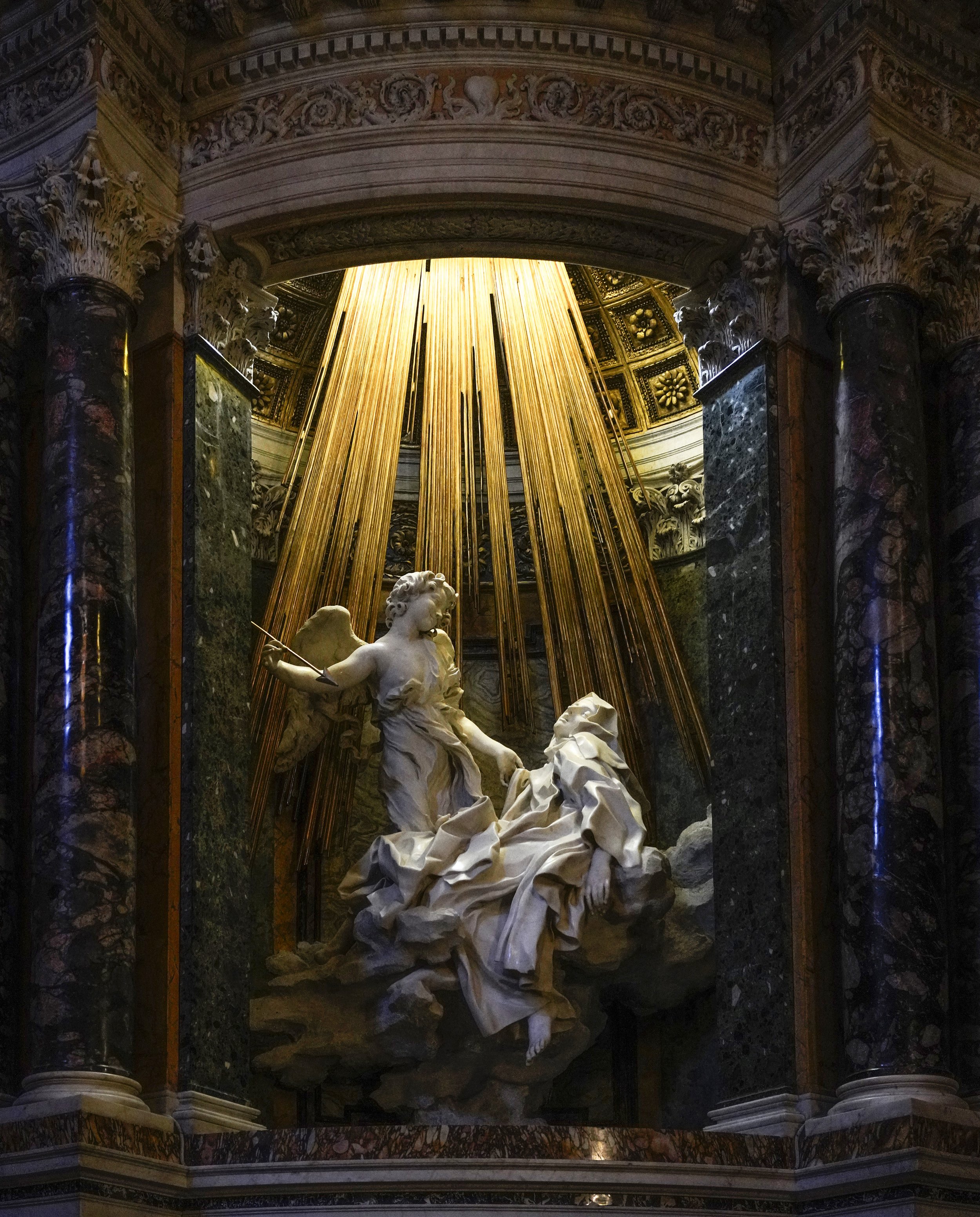
The figures of St. Teresa and the angel are sculptured in white marble. Teresa’s flowing robes and contorted posture depict a state of divine joy. The sculpture is lit by natural daylight that falls from a window hidden behind the valence above, and emphasized by the golden rays that stream down from that window. St. Teresa, lying on a cloud, suggests that we are witnessing a divine apparition.
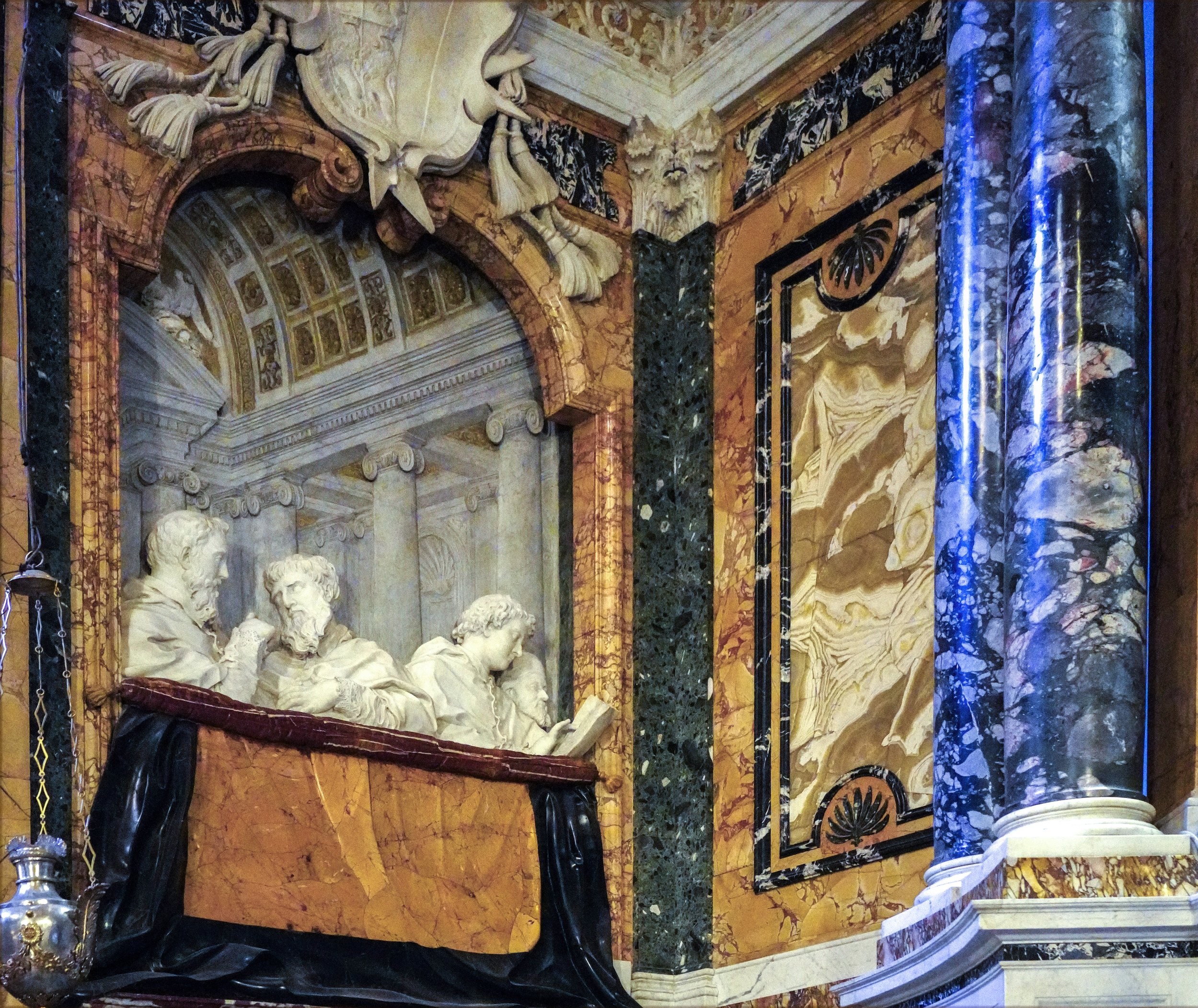
At left (above) and right of Teresa, in spaces resembling opera boxes, Bernini sculpted witnesses to validate this divine event through the male members of the Cornaro family. They are experiencing the miraculous vision as does the parishioner and visitor to the Chapel.
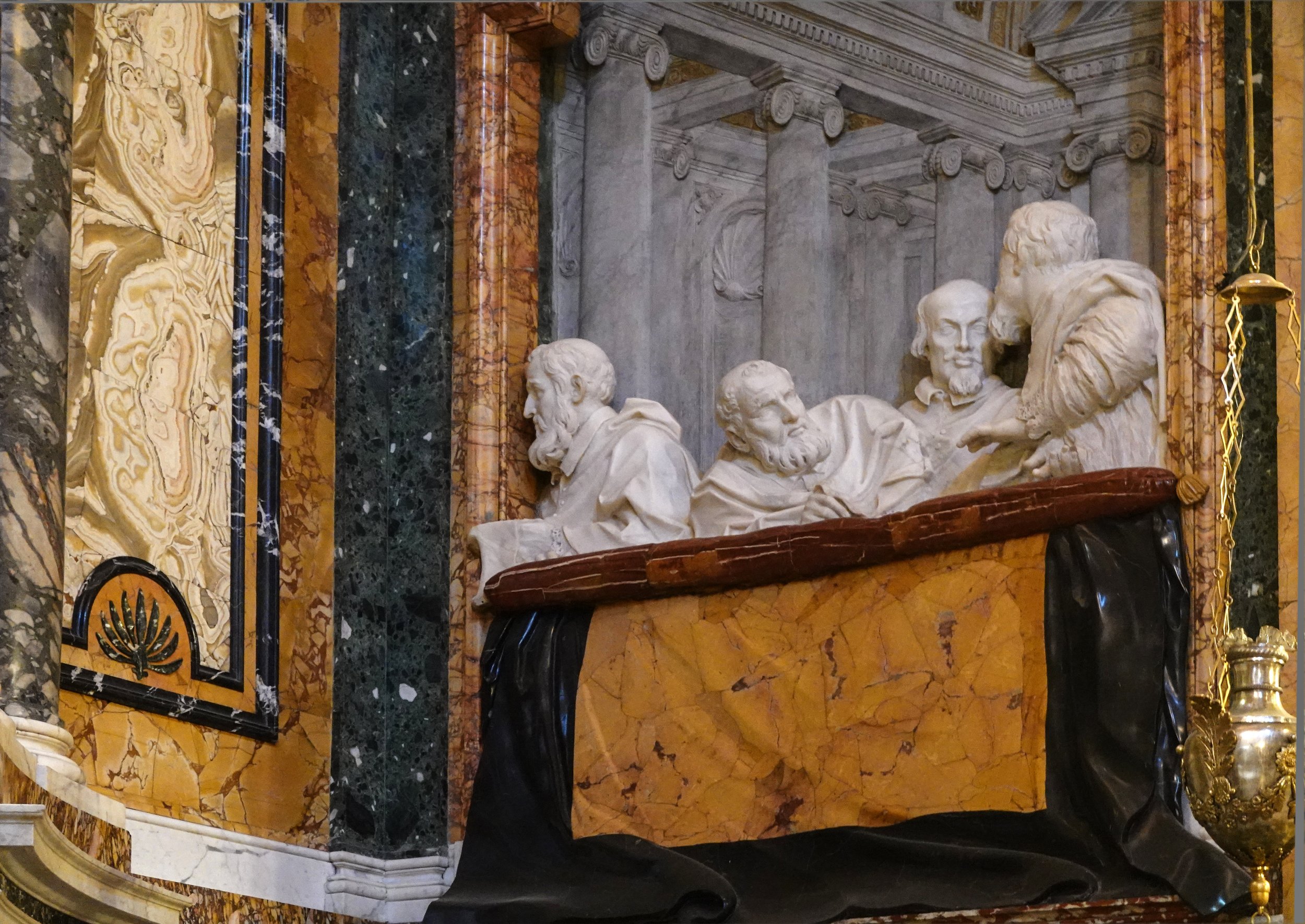
In the right box, the Cardinal Patriarch watches the saint experiencing her ecstasy, while his three companions are ignoring her for their own conversation. The onlookers seem to be alive like ourselves, belonging to our world. The Cornaro Chapel carries Bernini’s ideal of a three-dimensional picture to its apex.

Bernini created his sculpture from St. Teresa’s description in her autobiography, where she had the vivid vision of an angel piercing her heart with a golden shaft, causing her both immense joy and pain: “The sweetness caused by this intense pain is so extreme that one cannot possibly wish it to cease, nor is one's soul content with anything but God. This is not a physical but a spiritual pain, though the body has some share in it -- even a considerable share”.
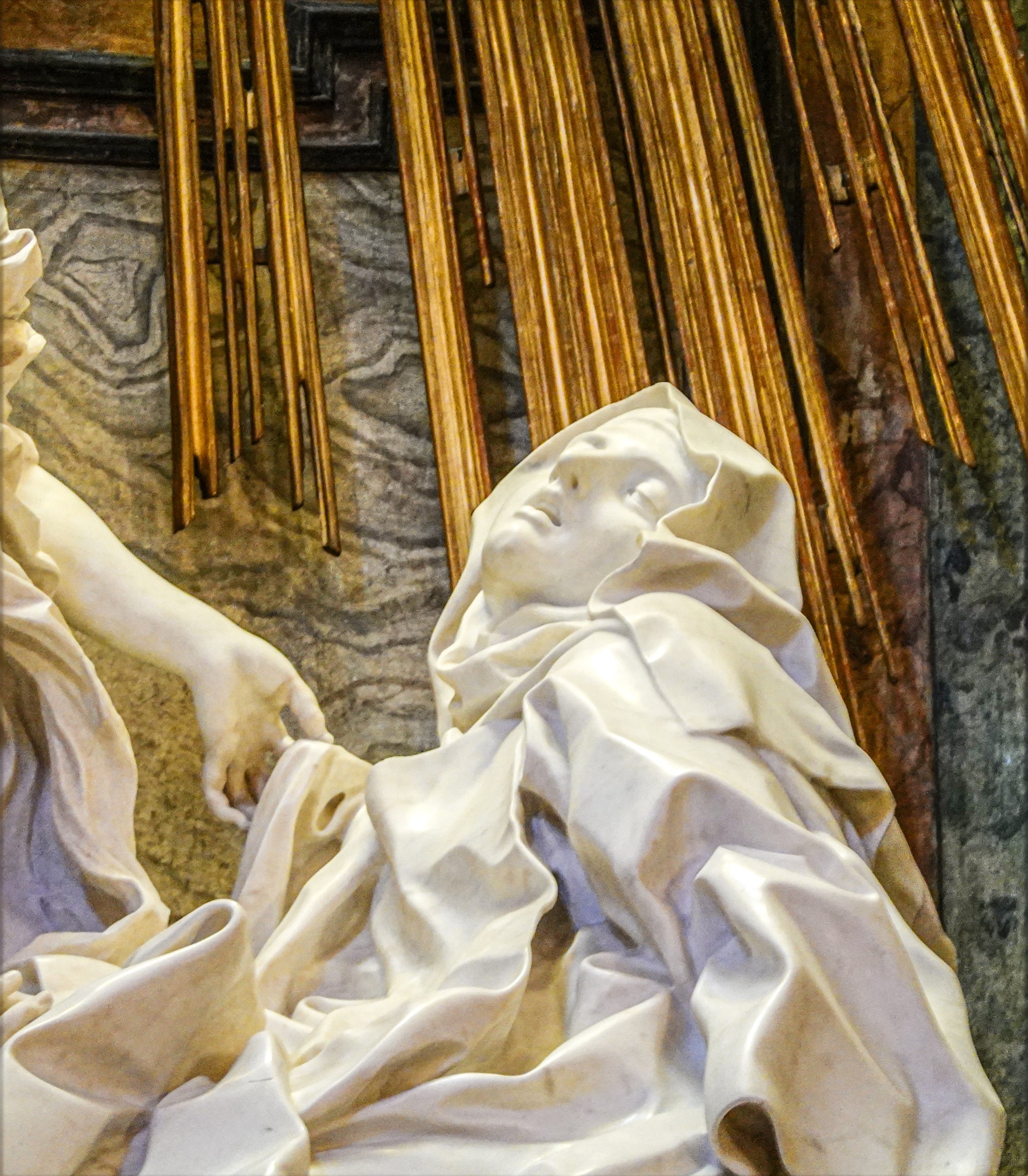
Teresa wrote, “ In his hands I saw a great golden spear, and at the iron tip there appeared to be a point of fire. This he plunged into my heart several times so that it penetrated to my entrails. When he pulled it out I felt that he took them with it, and left me utterly consumed by the great love of God.”
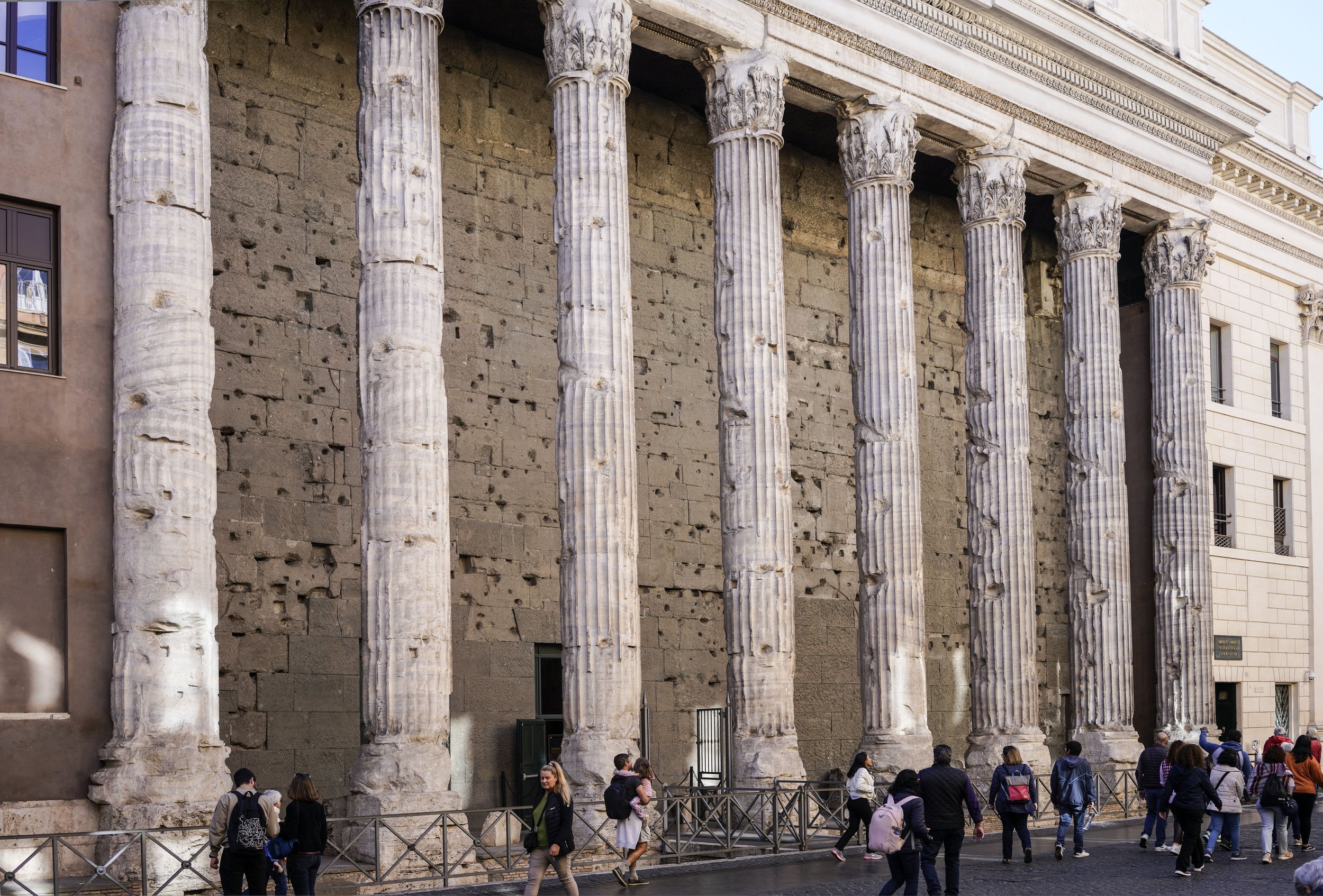
The main building facade of the The Chamber of Commerce, Industry, Craft and Agriculture building in Rome features a cella wall and the distinctive eleven columns from the external colonnade of the ancient Temple of Hadrian, which was dedicated to the deified emperor Hadrian by his adoptive son and successor Antoninus Pius in 145 CE.
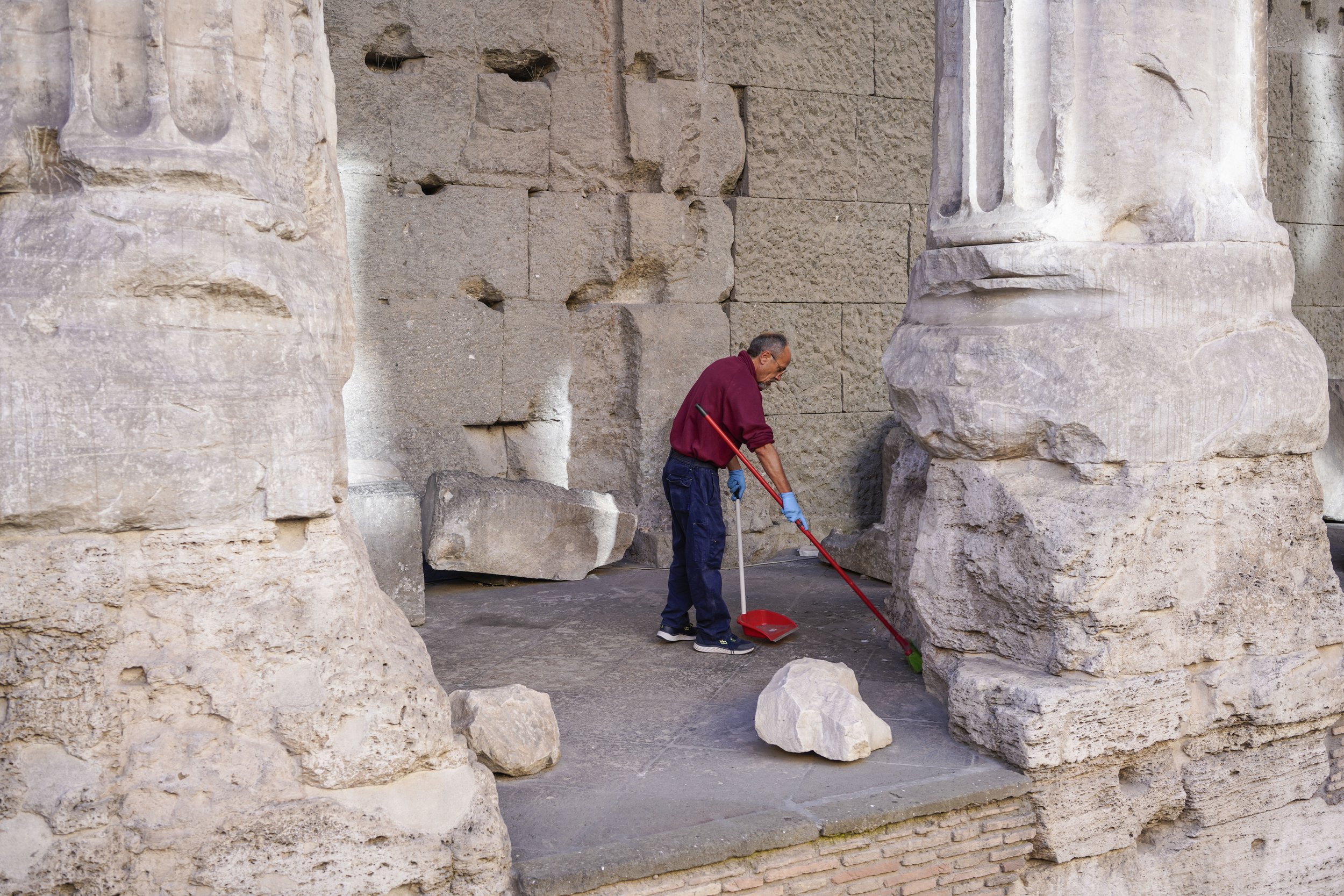
The surviving one cella wall and eleven columns from the Hadrian Temple (145 CE) were incorporated into a later building in the Piazza di Pietra (Piazza of Stone – derived from use of the temple's stones to build the piazza), whereby its facade, alongside the architrave which was reconstructed later on, was incorporated into a 17th-century papal palace by Carlo Fontana, now occupied by Rome's Chamber of commerce.
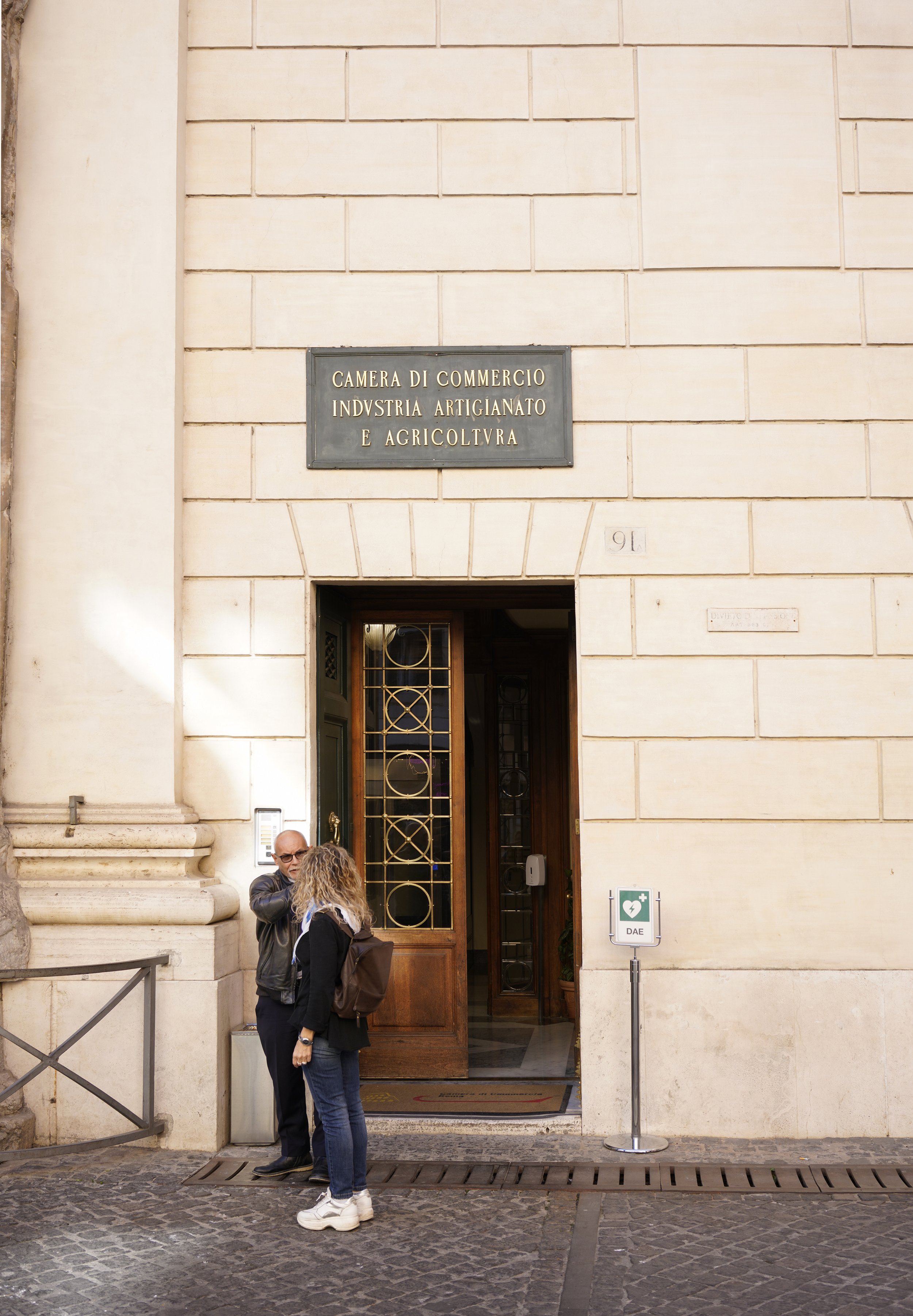
Entry to the Chamber of Commerce, Industry, Craft and Agriculture is an independent public body that, within the territorial boundaries for which it is responsible, carries out functions of general interest for the business system, dealing with its development within the local economy.
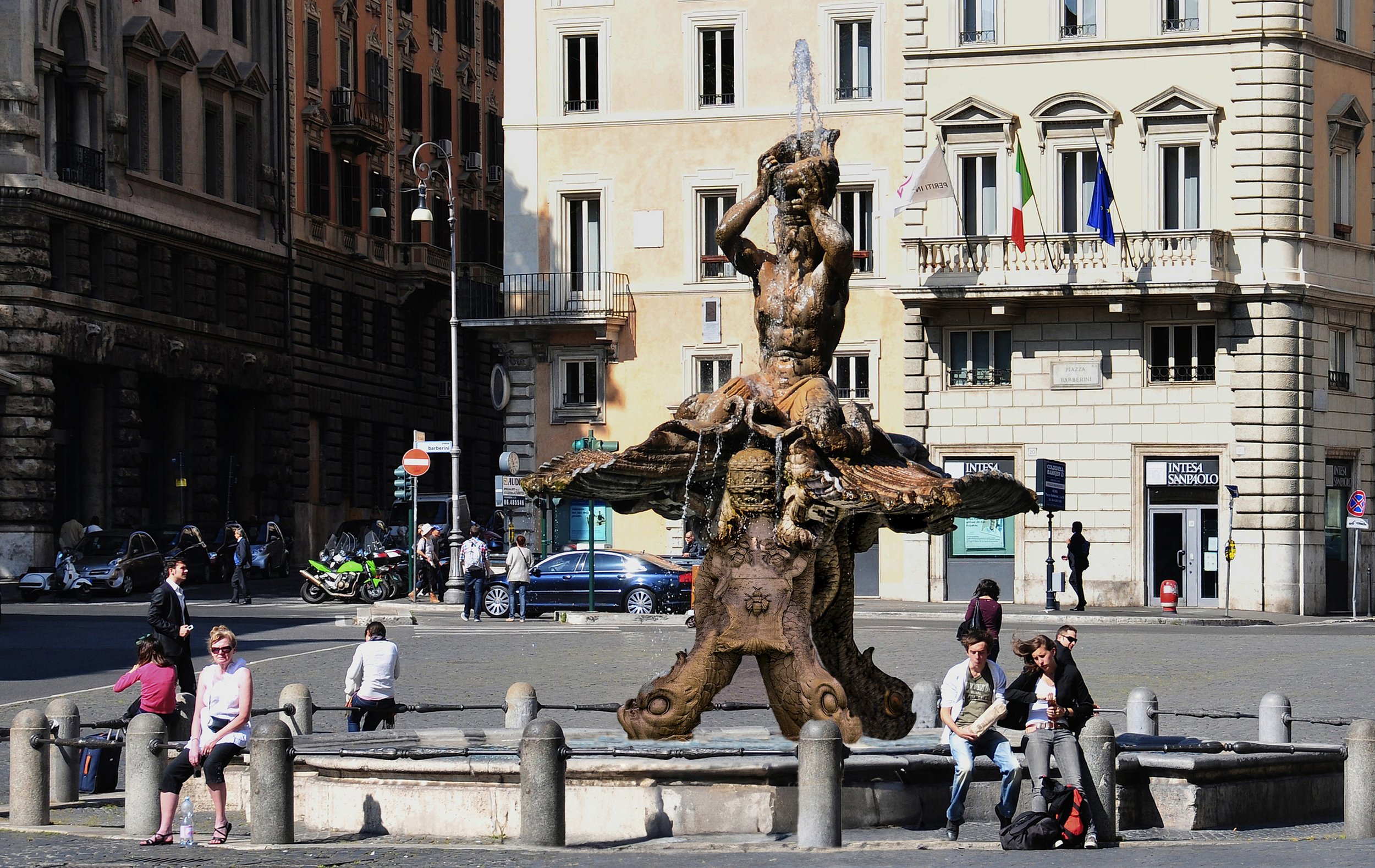
In the center of the Triton Fountain rises a larger than life-size muscular Triton, a minor sea god of ancient Greco-Roman legend, depicted as a merman kneeling on a large shell. The fountain has a base of four dolphins that entwine the papal tiara with crossed keys and the heraldic Barberini bees in their scaly tails.
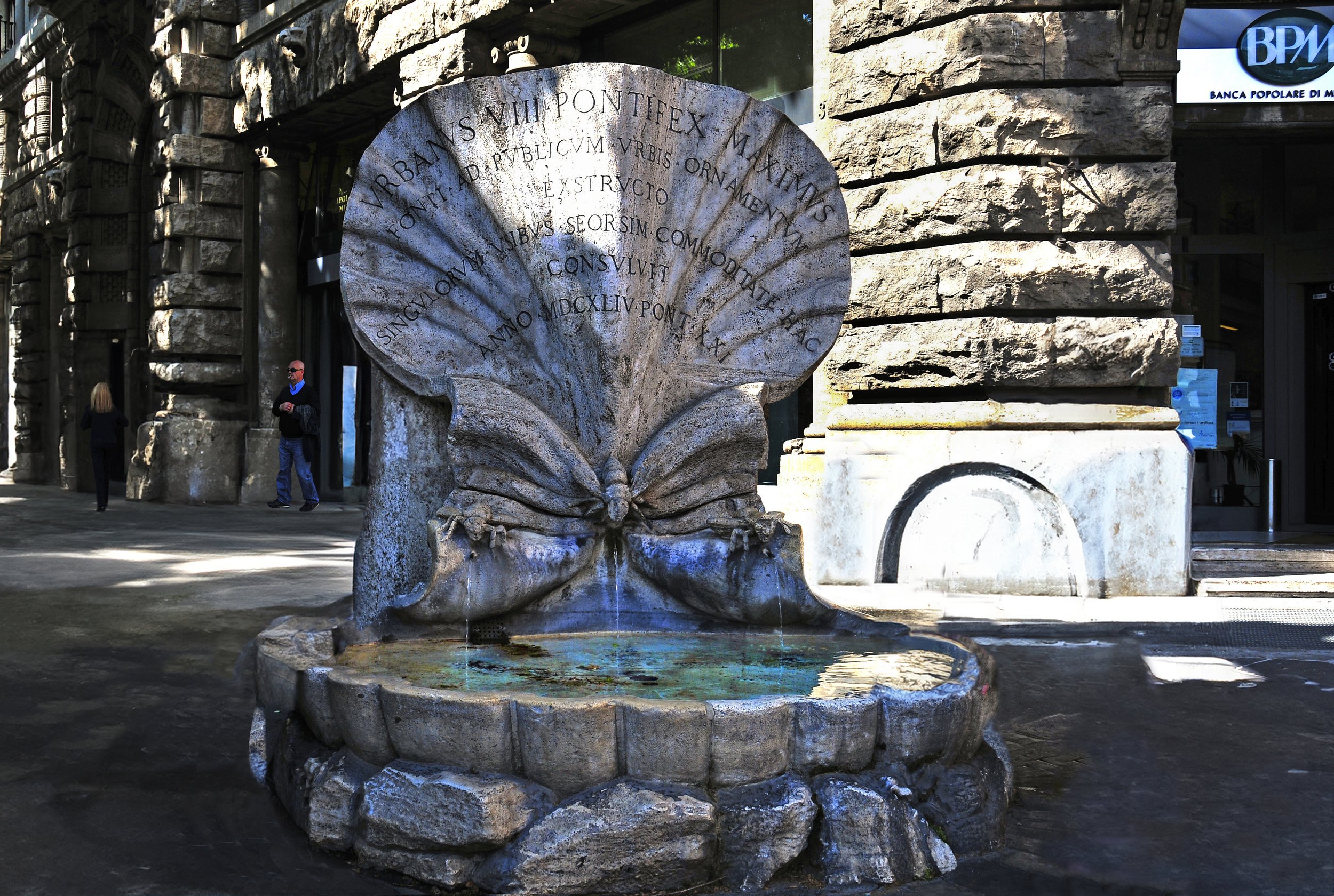
Pope Urbano VIII Barberini commissioned Bernini to design and construct the “Fountain of Bees” to function as a public horse trough; Bernini adorned it with the Barberini herald bees.
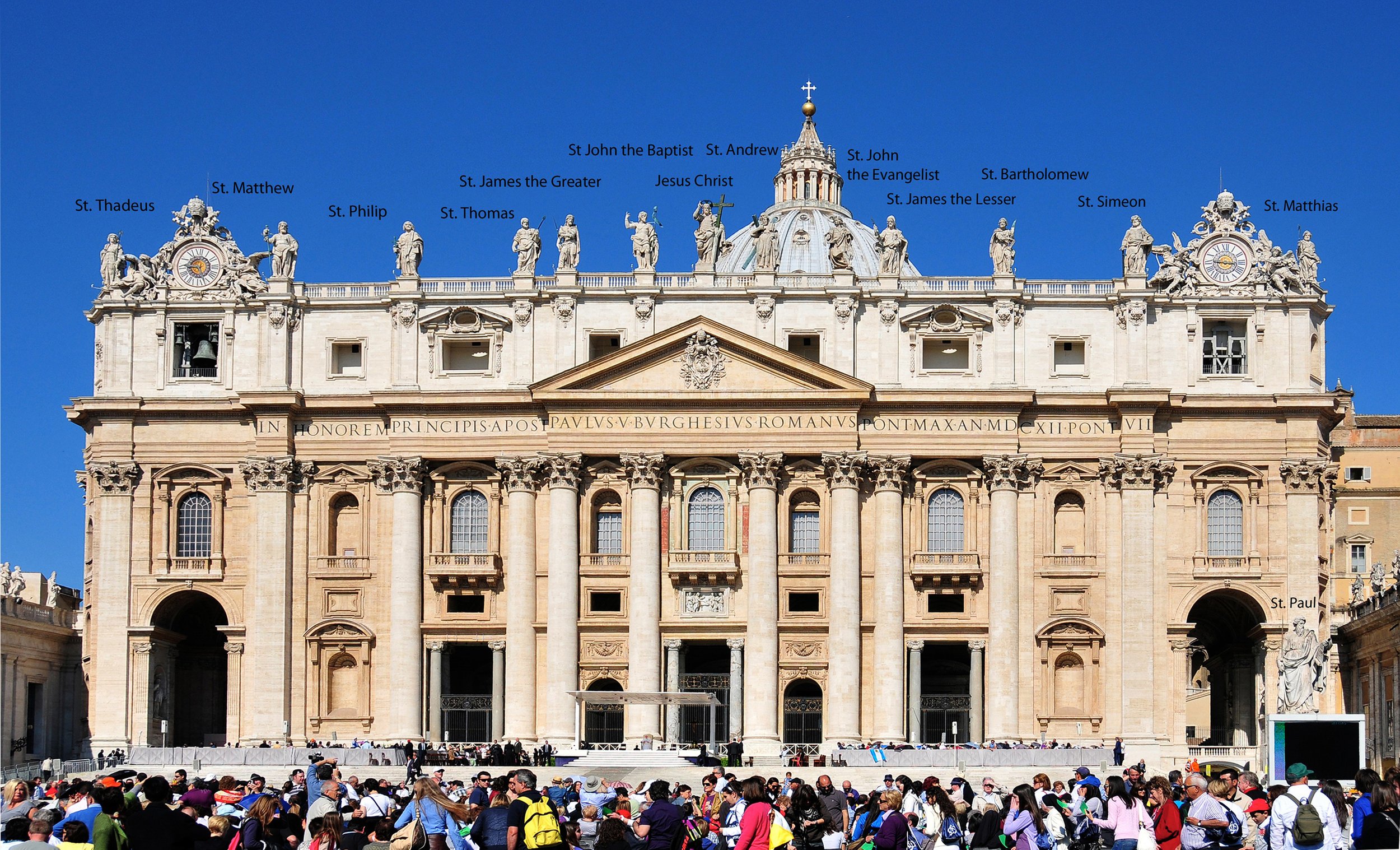
Below the statues of Christ and his apostles (see names above he statues) written across the facade, is: “Paul V Borghese, Supreme Roman Pontiff, in the year 1612, the seventh of his pontificate, erected in honor of the Prince of Apostles.”
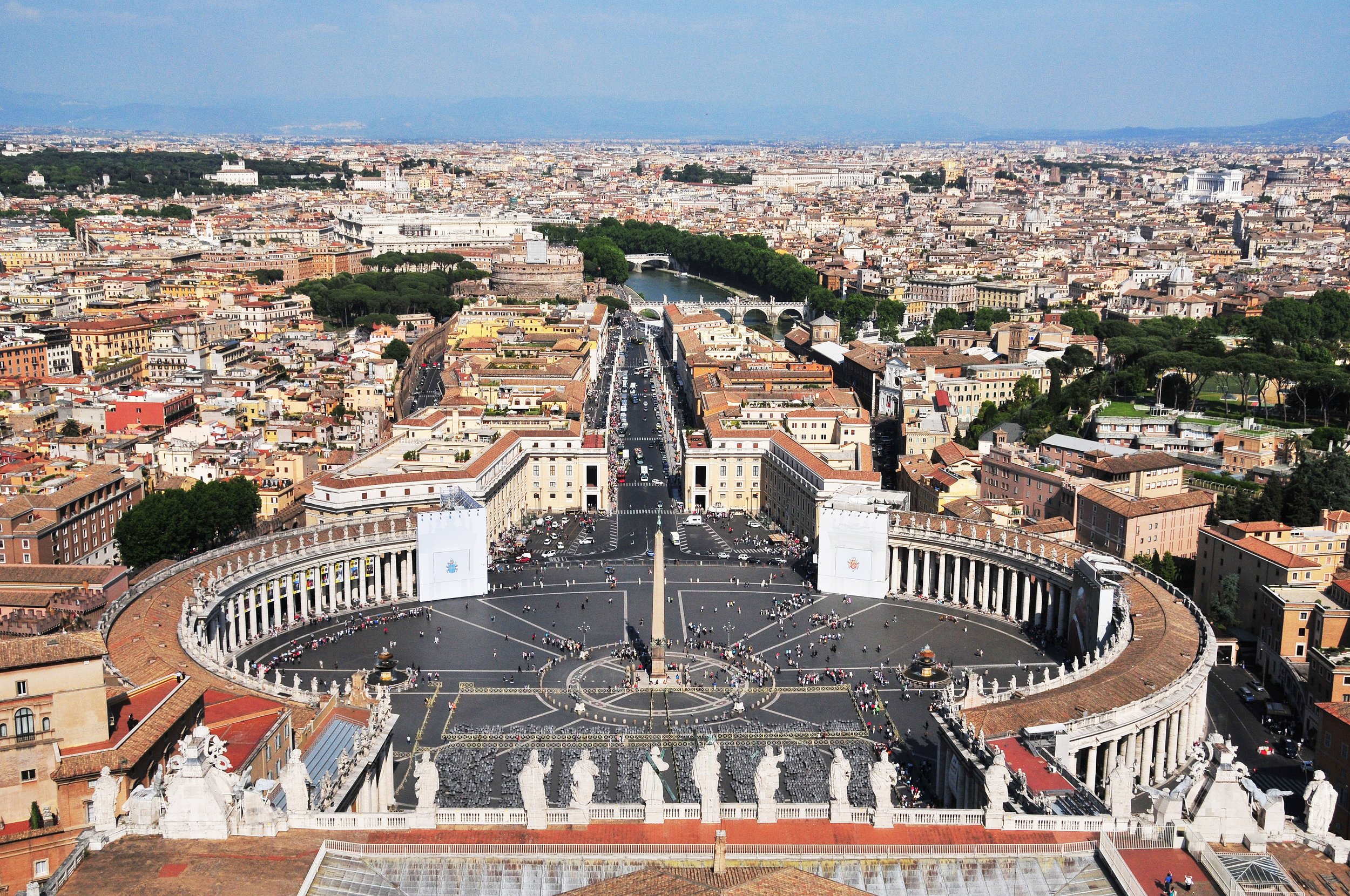

Bernini designed Saint Peter’s Square, with four deep Doric colonnades, to embrace visitors, according to Bernini, in "the maternal arms of Mother Church."
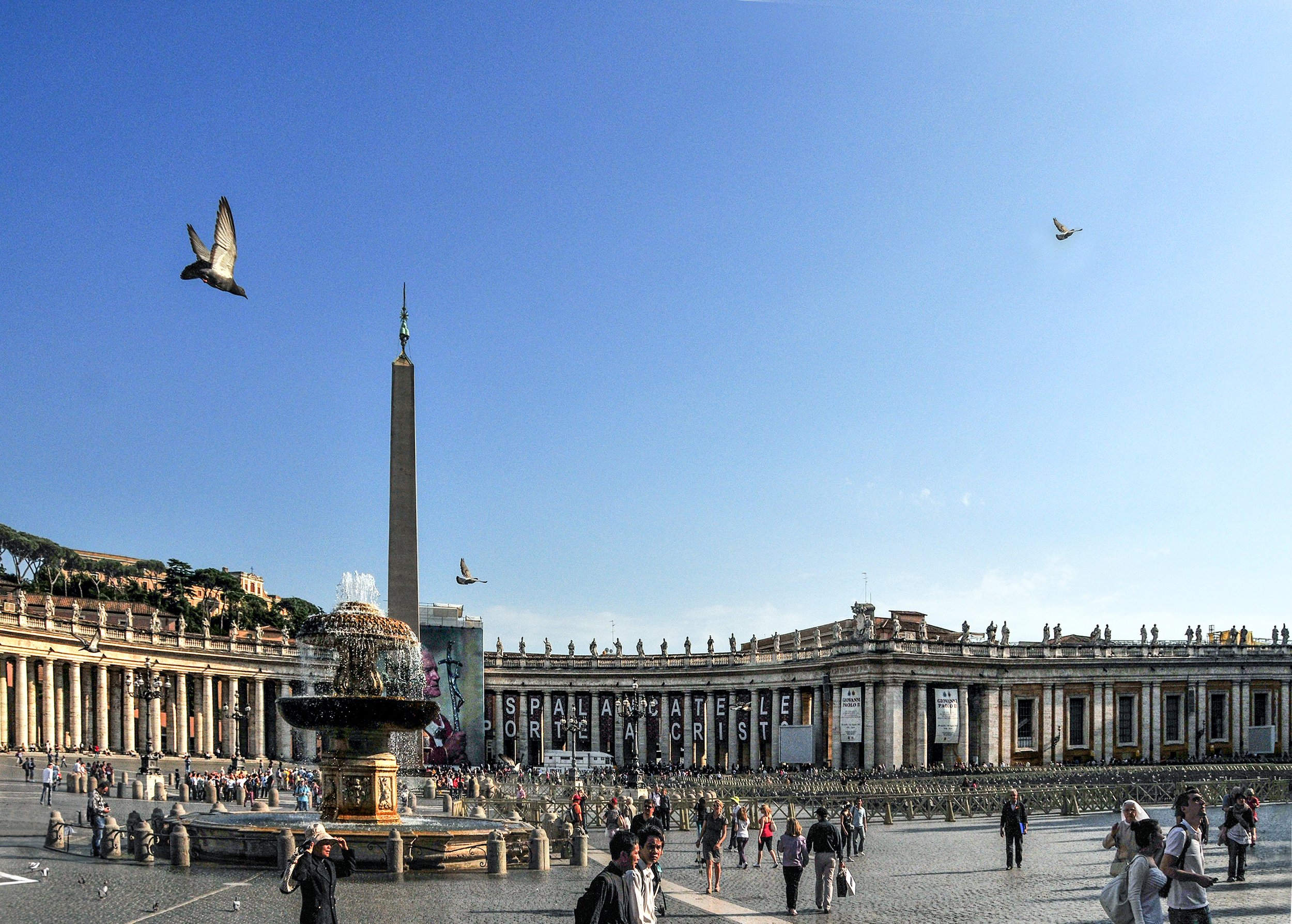
In 1667, Pope Clement X commissioned Bernini to build a second fountain, which closely followed the design of the Carlo Maderno (1612–1614) fountain on the north side of the square. The Bernini fountain, placed in the south side, was completed in 1677.
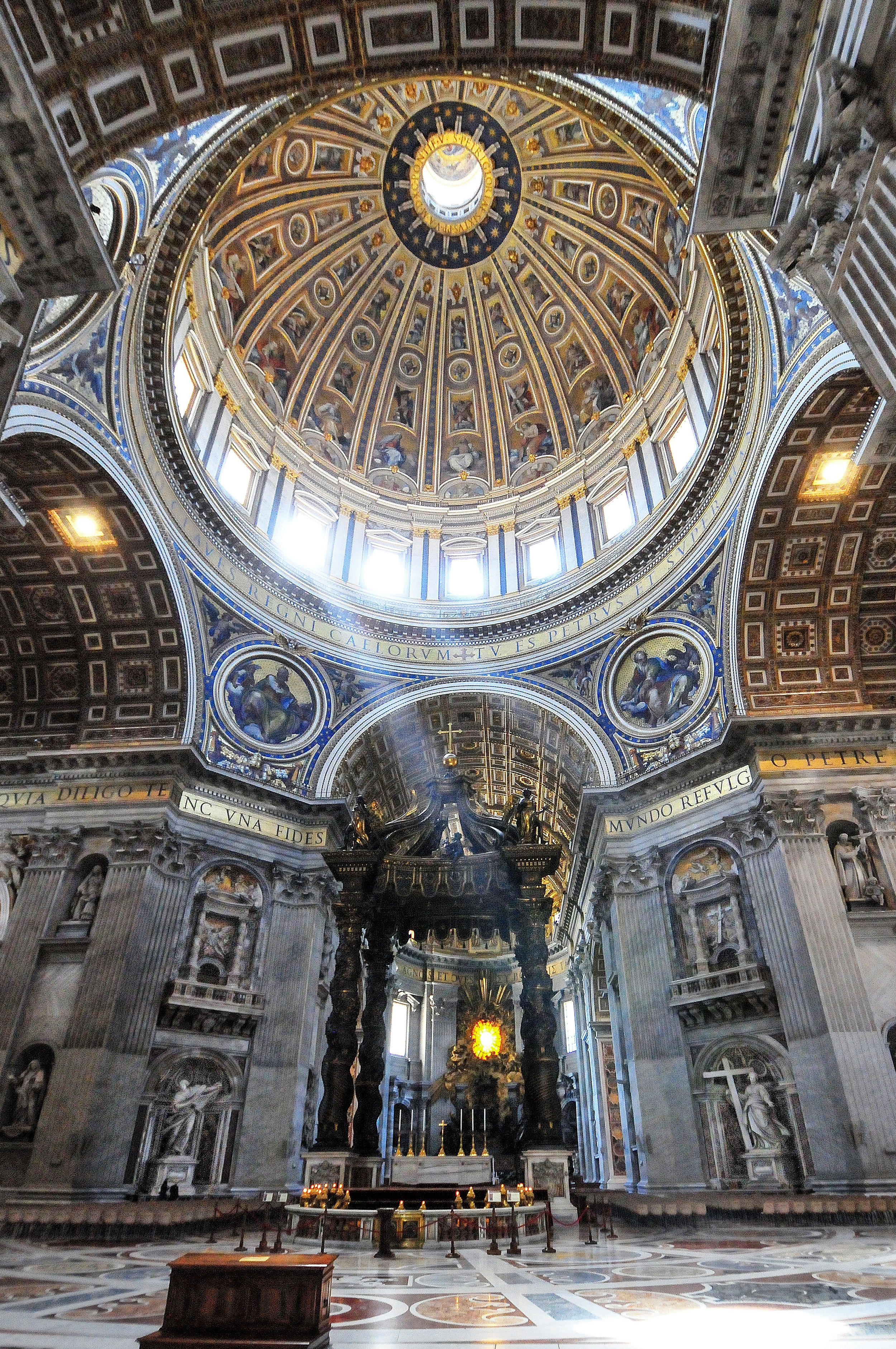
A large Baroque sculpted bronze canopy, technically called a ciborium or baldachin, over the high altar of St. Peter's Basilica in Vatican City, The baldachin is at the center of the crossing, and directly under the dome of the basilica. Pope Urban VIII Barberini, commissioned the work and his family's heraldic symbols, the bee and the sun are depicted on the columns.

The high, domed ceiling is ornately decorated with painted stucco depictions of Christ, several saints, and numerous other heavenly hosts; gilt trim borders each image. The use of grandiose designs and decorations is common throughout Baroque architecture; it facilitates the desired overwhelming effect felt by the viewer.
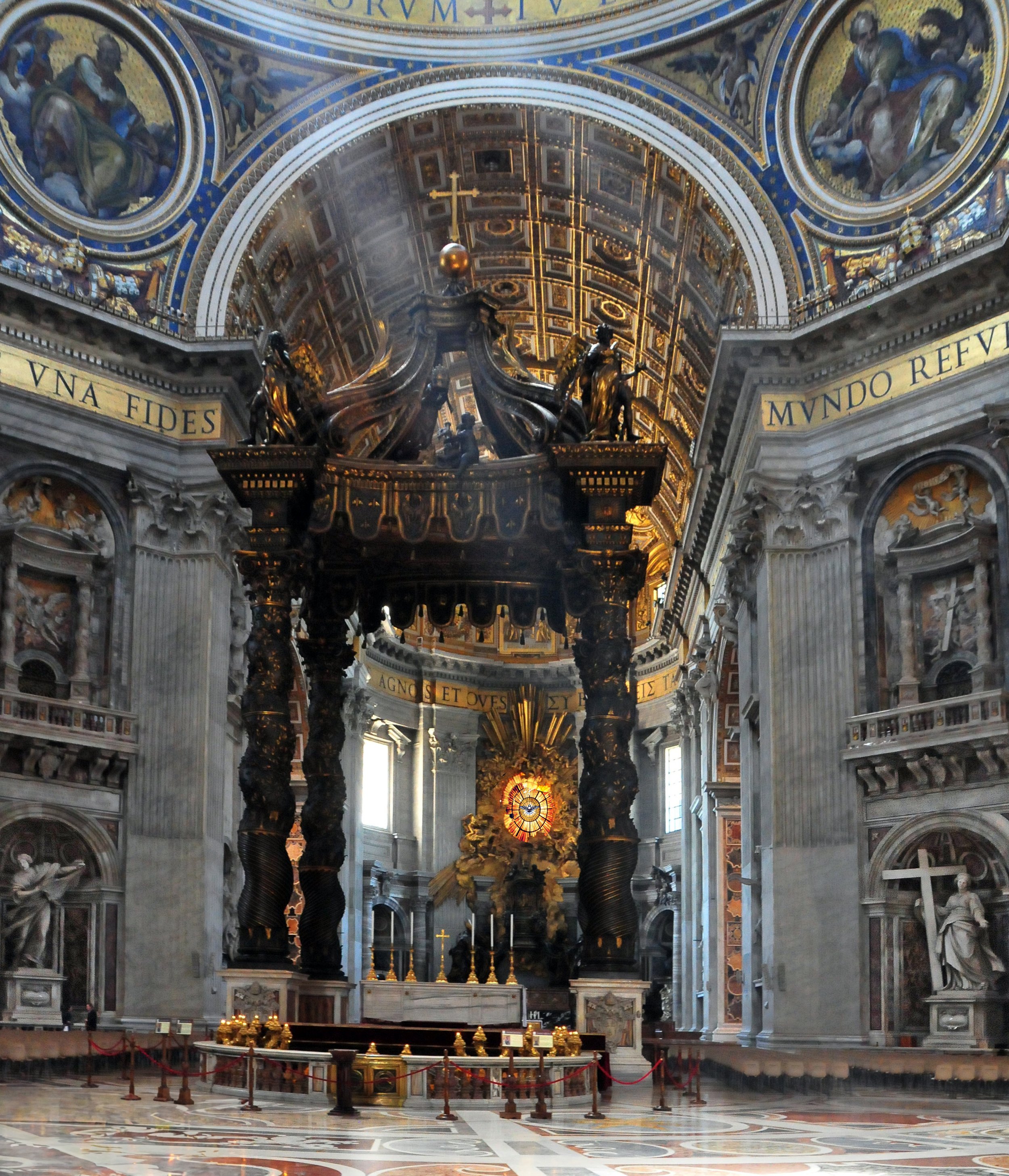
Bernini’s St. Peter’s Throne, or Baldacchino, stands in the center of the apse of St. Peter’s Basilica, marking the place of Saint Peter's tomb underneath. It is made of bronze with four columns 66 feet high. To make it, tons of bronze were taken from the ceiling of the porch of the Roman Pantheon -- prompting the comment that "what wasn't done by the barbari [barbarians] was done by the Barberini." Pope Urban VIII Barberini, commissioned the work and his family's heraldic symbols, the bee and the sun are depicted on the columns.

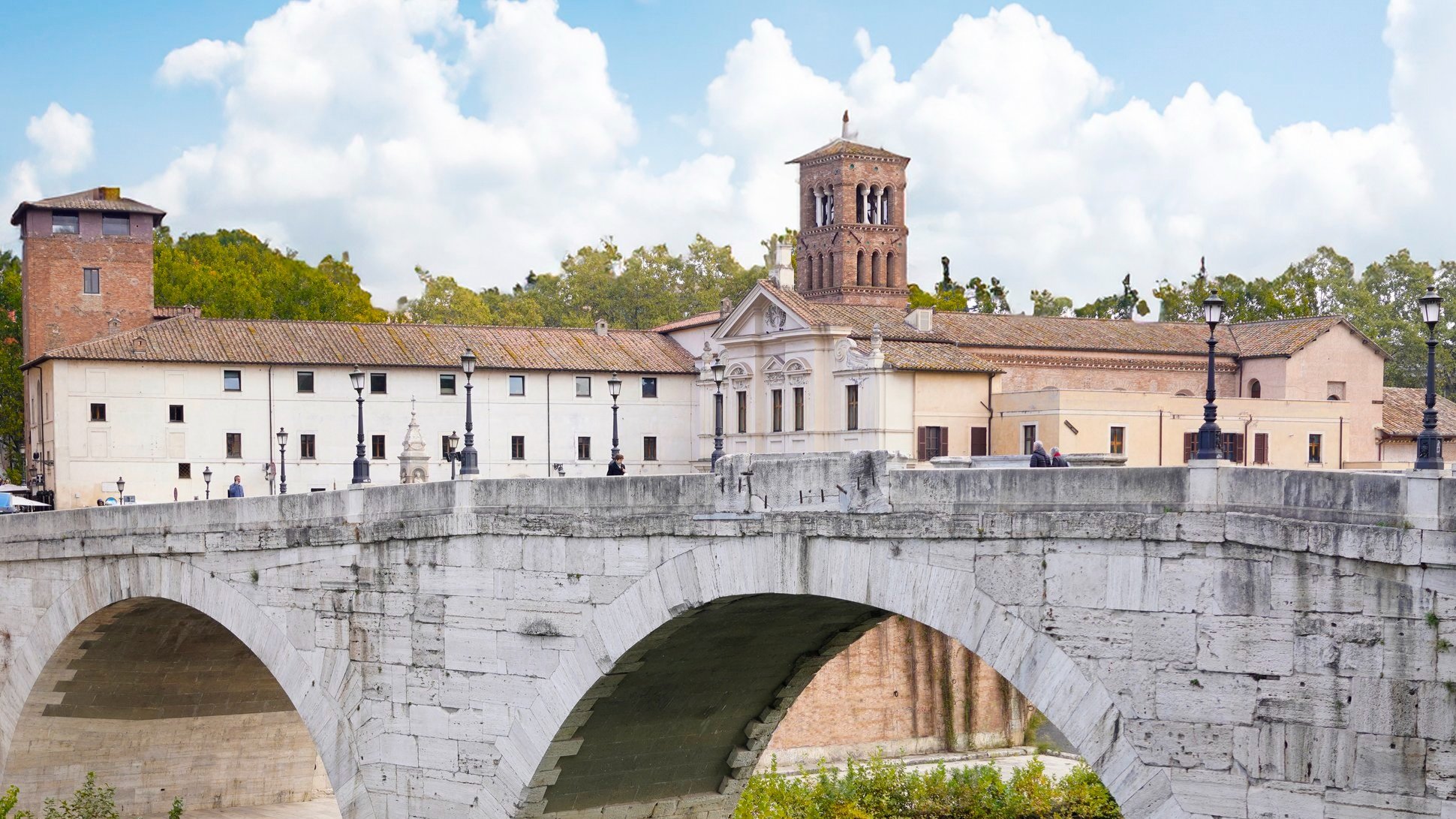
On the Tiber Island, across the Cestio bridge, is the Fatebenefratelli hospital, one of the oldest hospitals in the Capital, commissioned in 1585 by Pope Gregory XIII. The hospital introduced revolutionary healthcare innovations such as the division of the sicks into specific departments. Fatebenefratelli sheltered Jews during the Holocaust by diagnosing them with a fictitious disease called "Syndrome K".

Tiberine Island is about 328 yards long and about 98 yards wide. From the 1st century BC, it has the shape of a ship and is connected to the mainland by the Cestio bridge, dating back to 46 BC., and the Fabricio bridge, built in 62 BC.
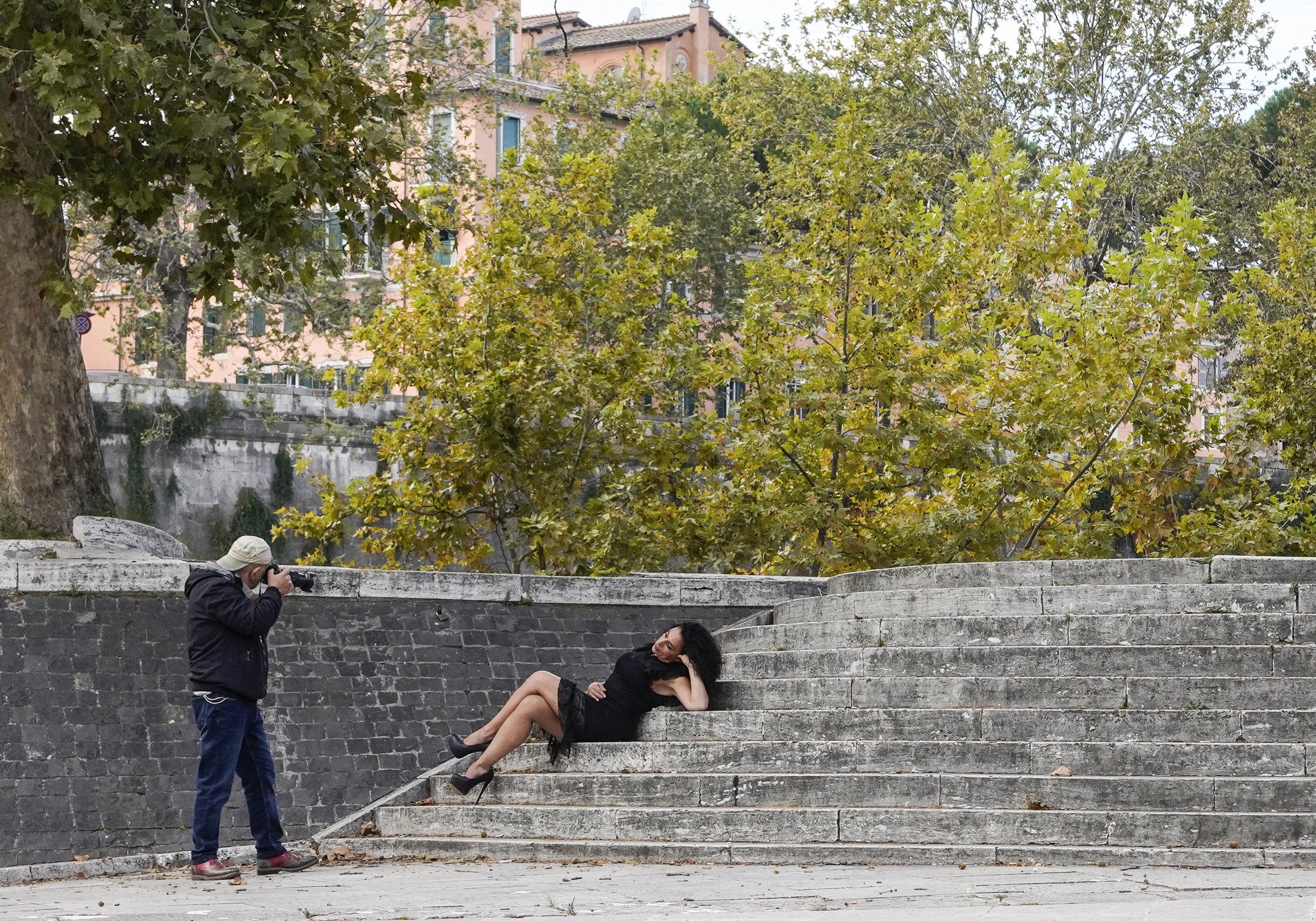
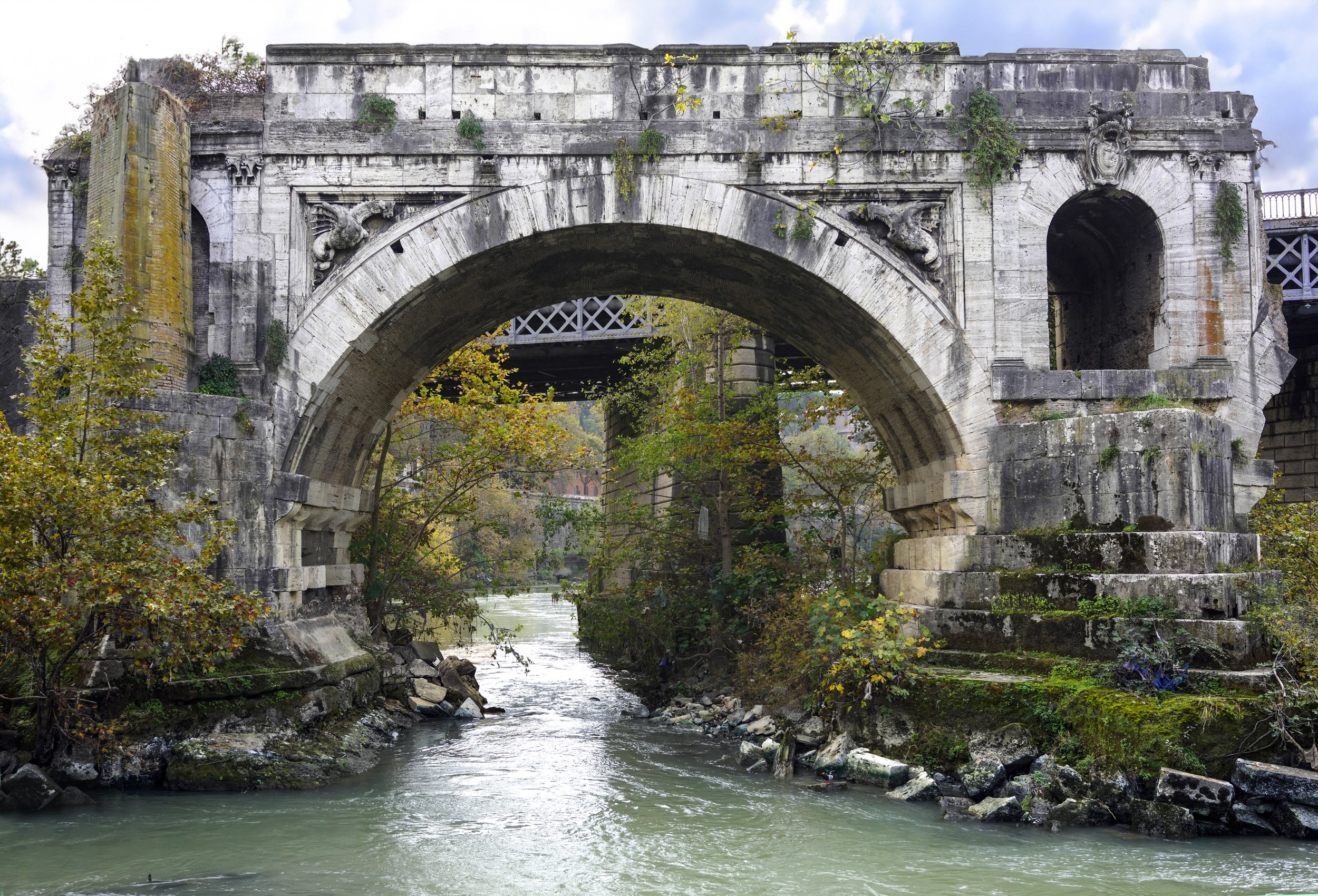
The Ponte Emilio (Latin: Pons Aemilius) is the oldest Roman stone bridge in Rome. It once spanned the Tiber, connecting the Forum Boarium, the Roman cattle market, on the east with Trastevere on the west. A single arch on the lower end of Tiberina Island is all that remains today, lending the bridge its name Ponte Rotto (Italian for the "Broken Bridge").
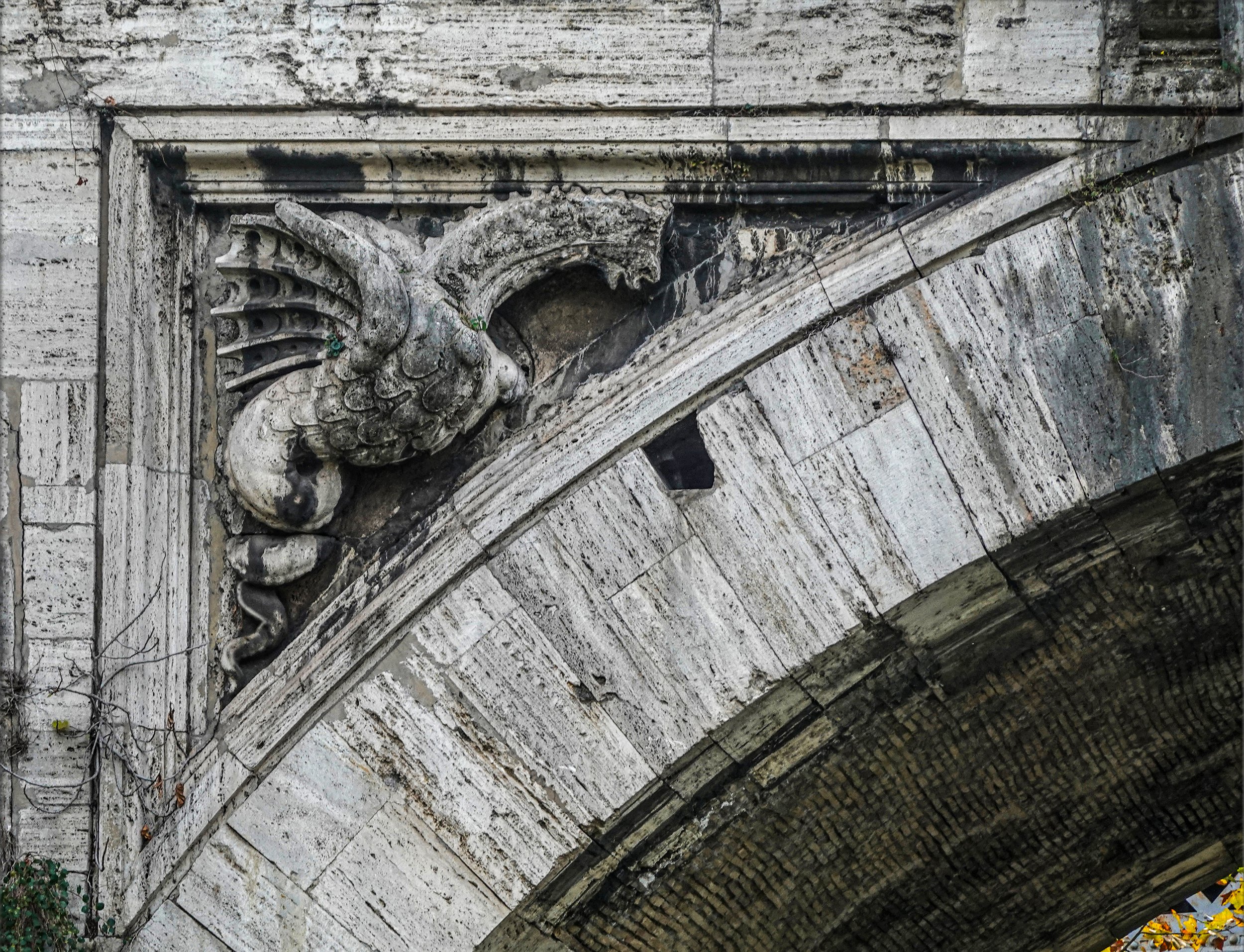
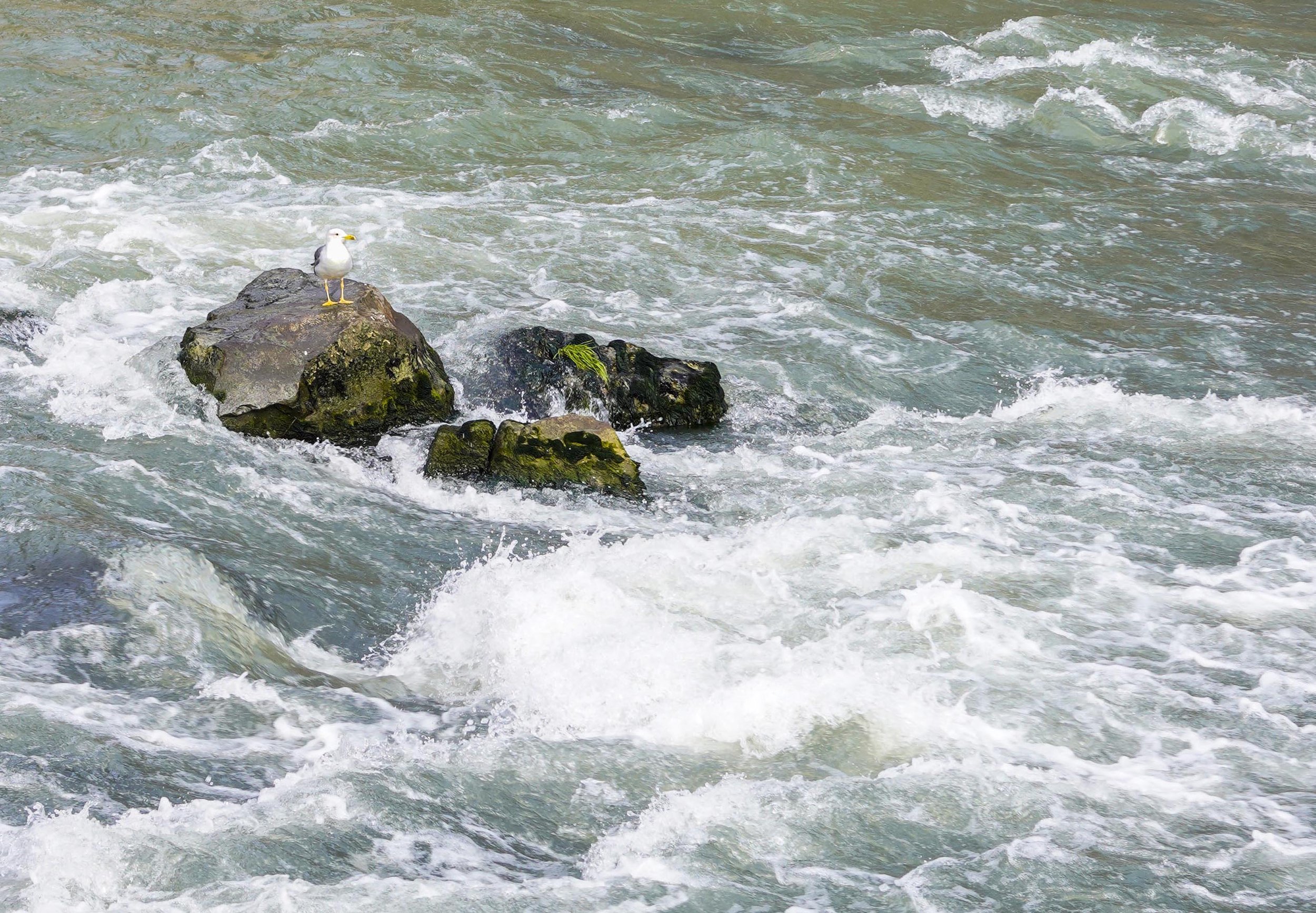
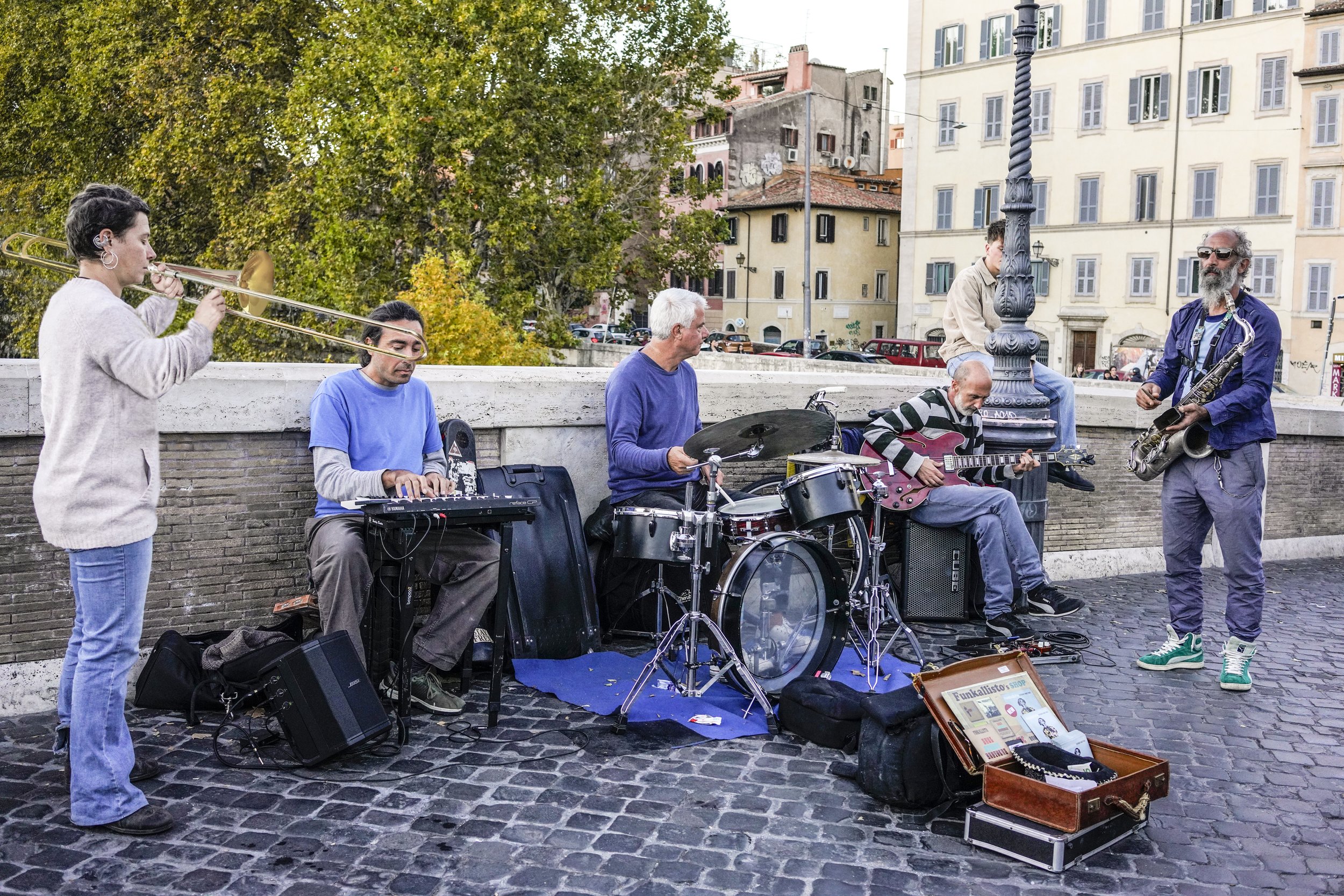
Crossing back to Trastevere, entertained by Funkallisto on the way to returning to the San Francesco Hotel, a very convenient. place to stay; and it is just down the street from the San Francesco a Ripa Church.
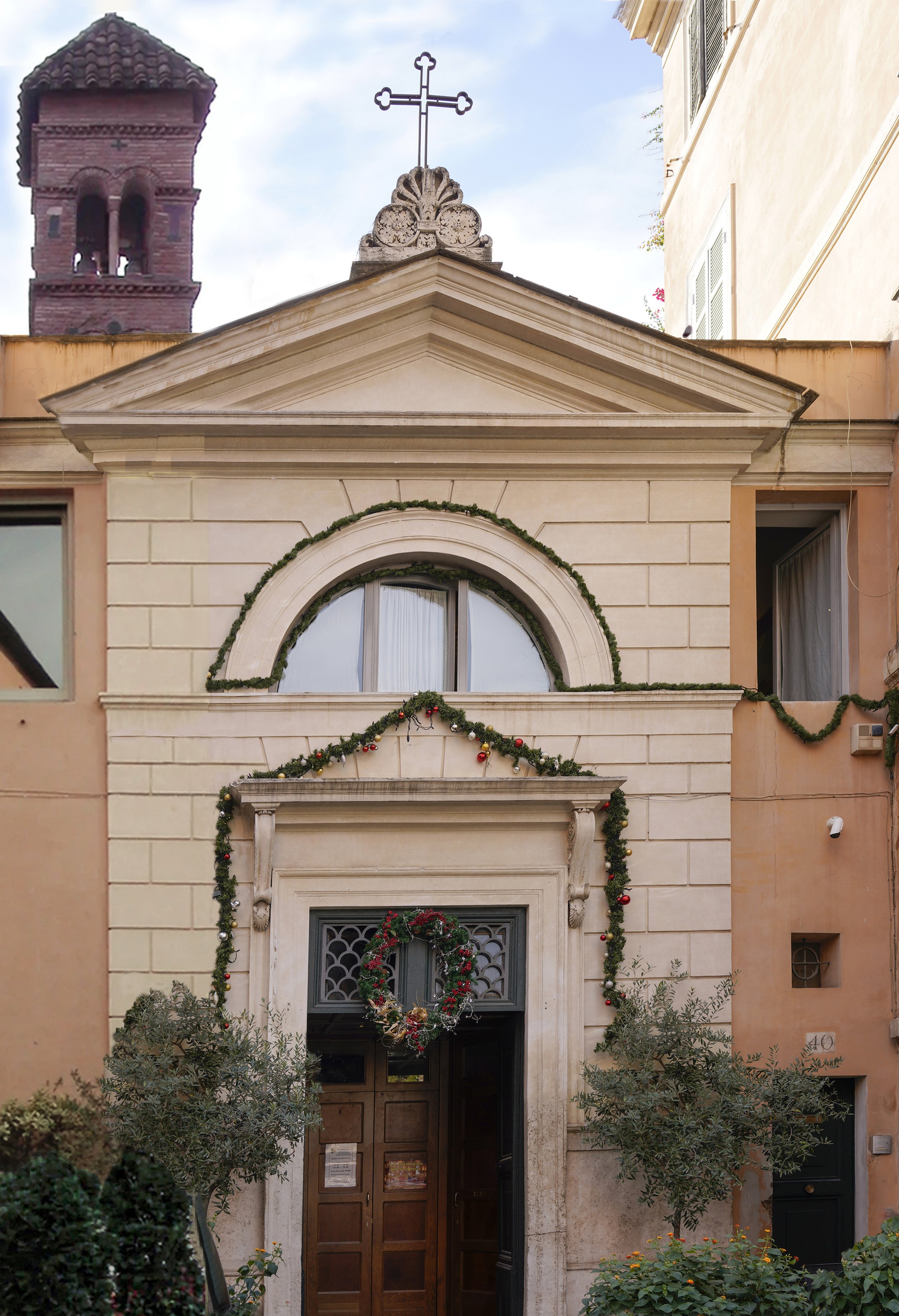
The edifice of San Bennedetto was built around the year 1100, or perhaps a little earlier. The later 12th century Romanesque brick campanile is over the bottom end of the Church’s left aisle. It is the smallest in Rome that is still in use, which also preserves the oldest bell in Rome. There are two bells. The smaller one, with a diameter of 18 inches, has the year 1069 engraved on it. It is allegedly the only one in the city that survived the Sack by the Normans in 1084.
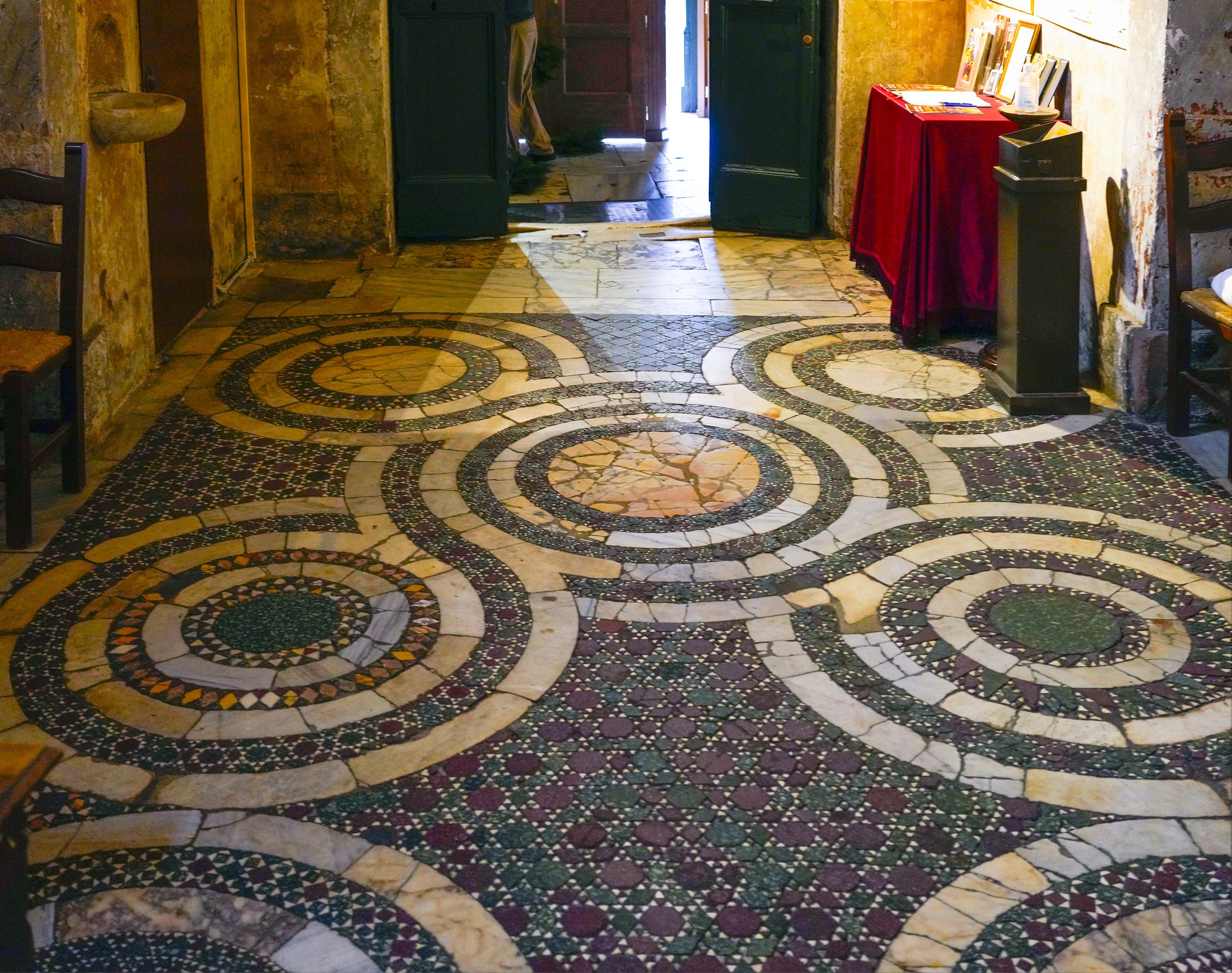
Inside Benedetto one is treated to an original Cosmatesque floor and frescoes on the nave walls that were executed in the early 12th century. Cosmateque is a style of geometric decorative inlay stonework typical of the architecture of Medieval Italy, and especially of Rome.

The church is proud of its early 12th century serpentine floor by Magister Paulus. There are many larger and grander ones in Rome, but this is the only one which has been conserved rather than restored. Although some of the marble pieces are worn and cracked with time, and many of the inlay pieces are missing and have been replaced with cement, everything that you see is original and not replacement work of later centuries as most of the other such floors in the city are.
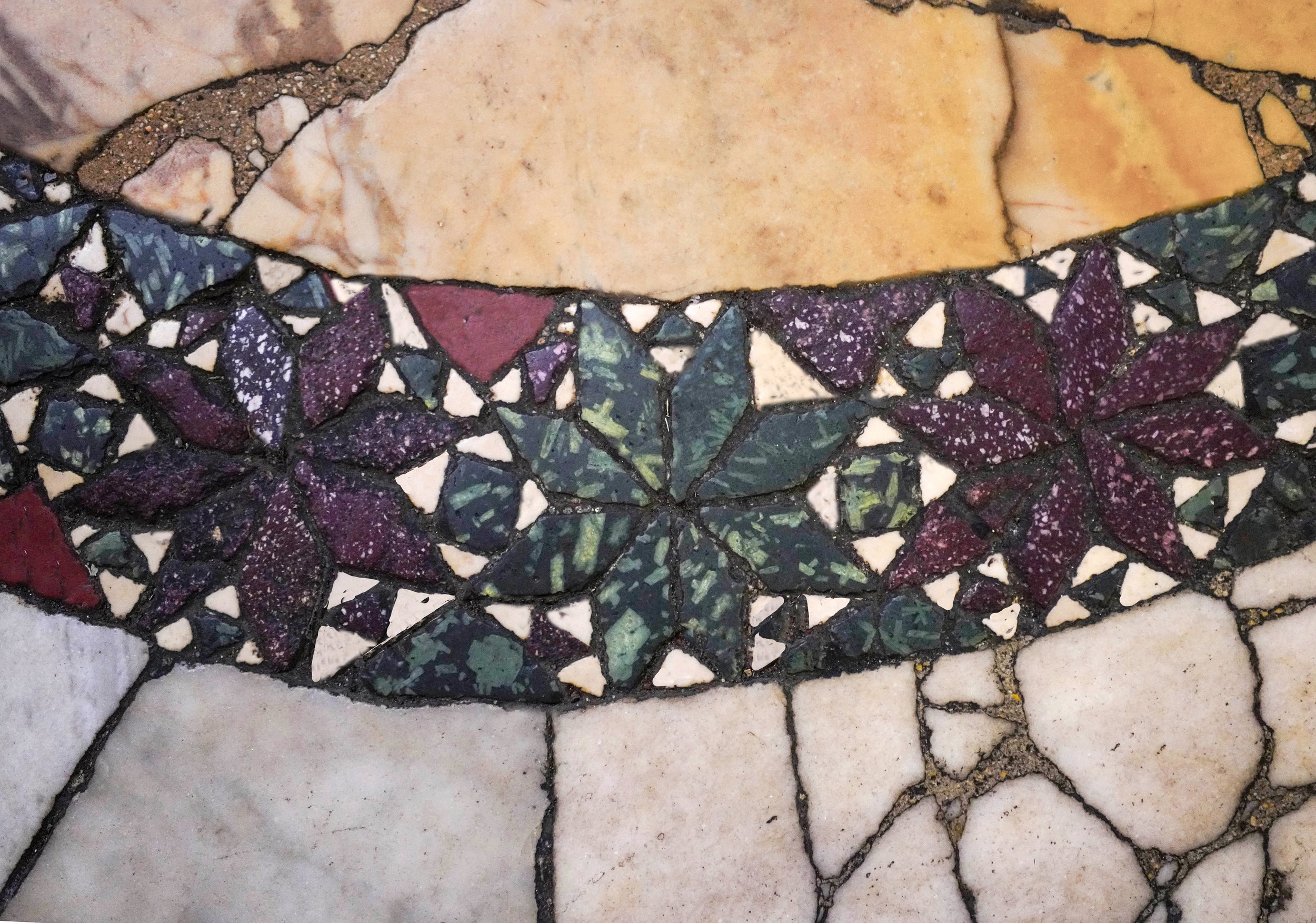
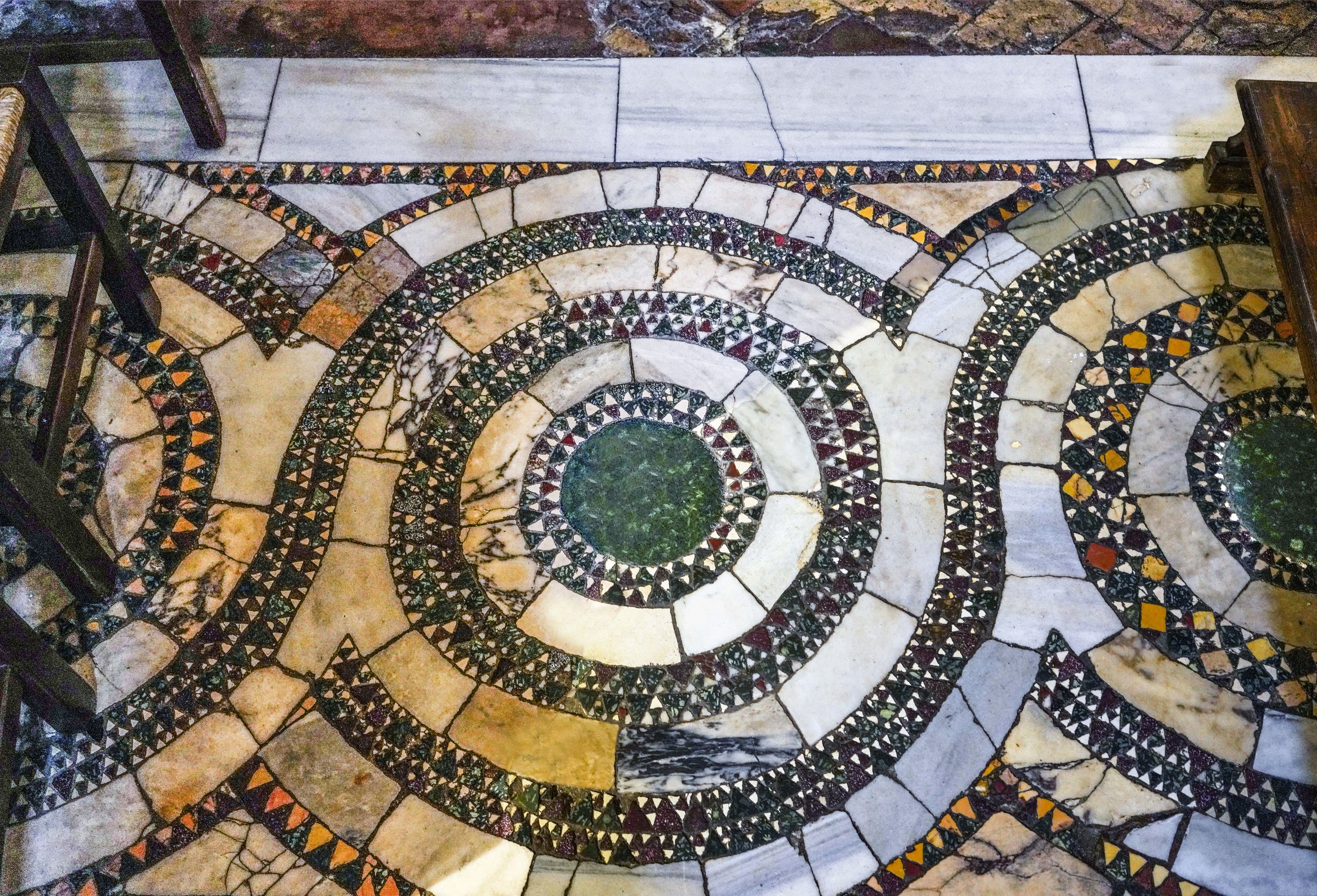
Guilloche is used generally for repetitive architectural patterns of intersecting or overlapping spirals or other shapes. Medieval Cosmatesque stone inlay designs with two ribbons winding around a series of regular central points are very often called guilloche; these central points are often blank.

The Cosmati were a Roman family, seven members of which, for four generations, were skilful architects, sculptors and workers in decorative geometric mosaic, mostly for church floors. Their name is commemorated in the genre of Cosmatesque work, often just called "Cosmati", a technique of opus sectile ("cut work") formed of elaborate inlays of small triangles and rectangles of colored stones and glass mosaics set into stone matrices or encrusted upon stone surfaces.
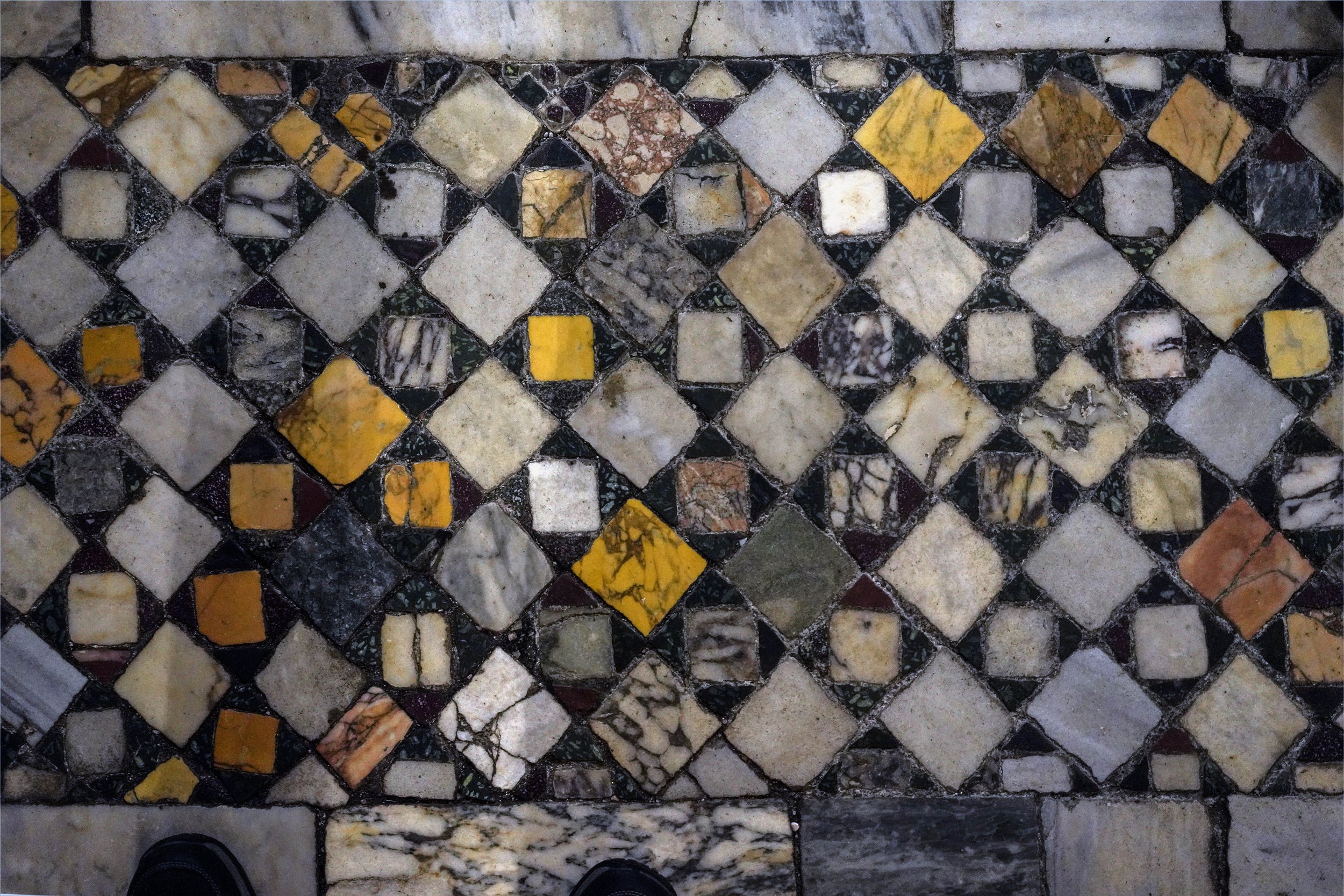
Initial inspiration for the Cosmatesque technique was Byzantine, transmitted through Ravenna and Sicily, while some of the minutely-figured tiling patterns are Islamic in origin, transmitted through Sicily.
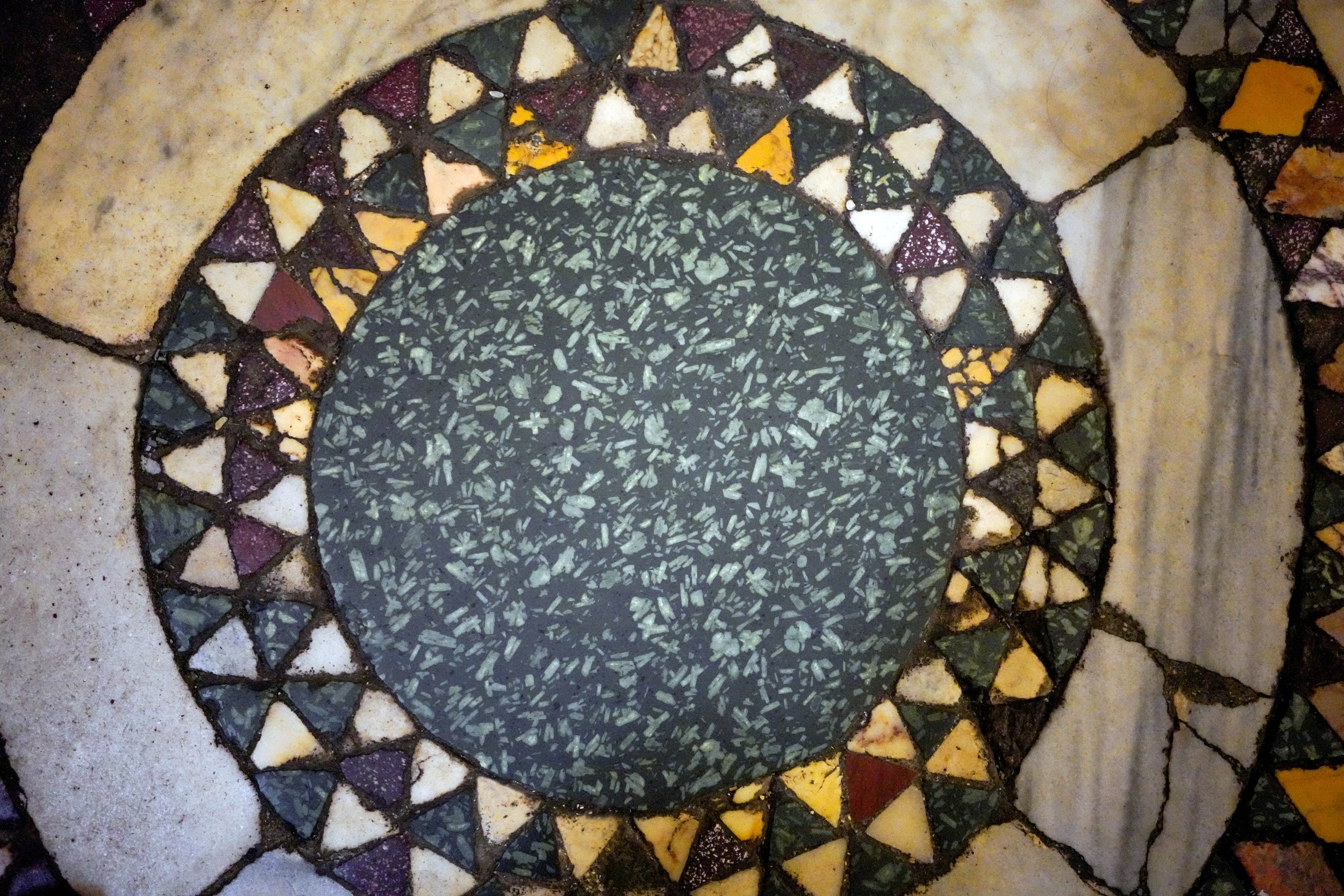
The center of this design is made of porphyry, an igneous rock with large crystals in a fine-grained matrix, often purple, and a prestigious Roman sculpture material. In its non-geologic, traditional use, the term porphyry usually refers to the purple-red form of this stone, valued for its appearance, but other colors of decorative porphyry are also used such as "green", "black" and "grey".
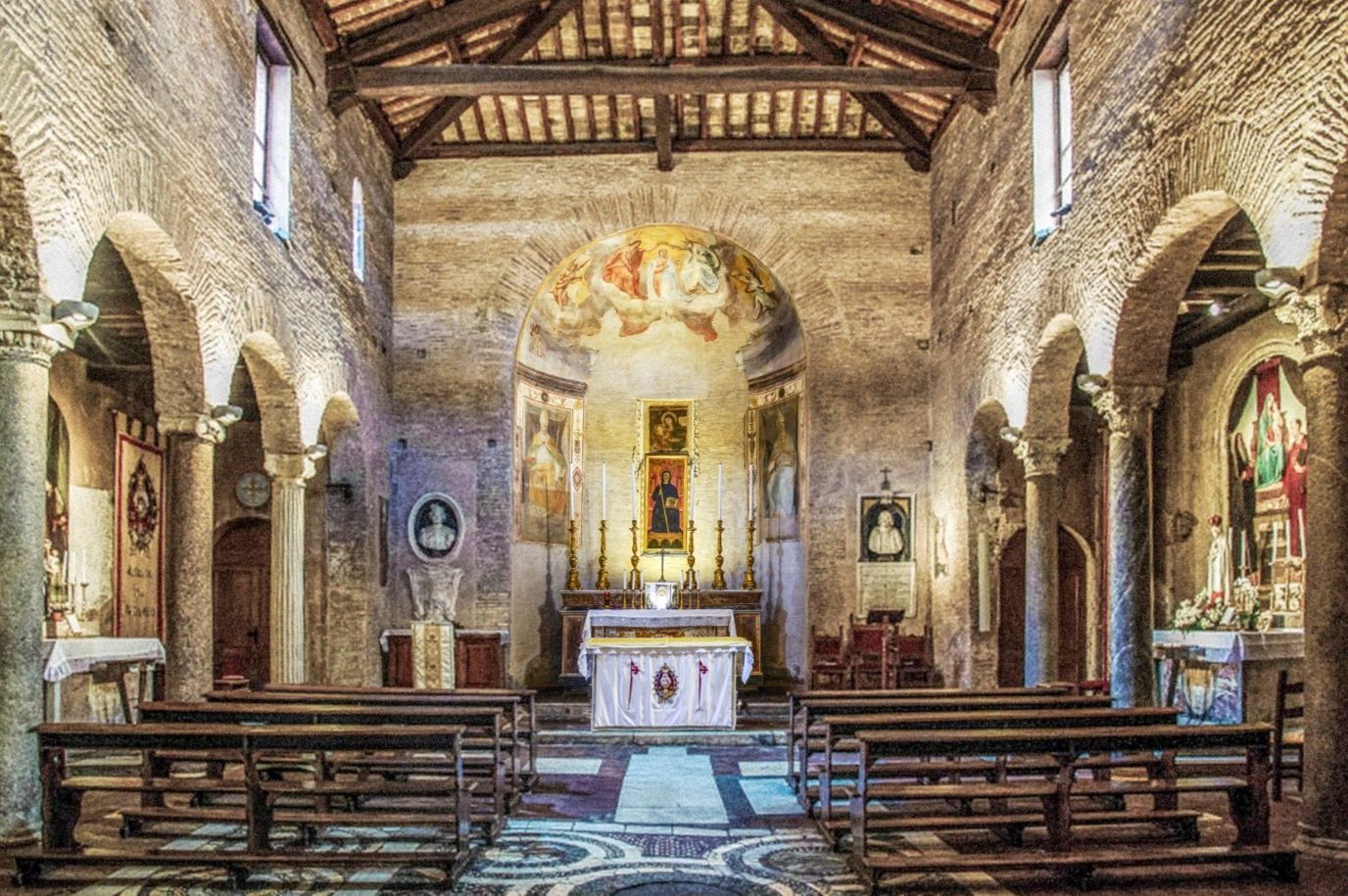
The church’s nave has four assorted columns in the arcades on each side. They are of different stones, and have assorted ancient limestone capitals of assorted orders which date from the 1st to the 5th centuries, i.e., they were taken from ancient ruins. The builders of the church had to play mix-and-match between columns and capitals in order to get the tops level, and some of the capitals had their bottoms chopped off.

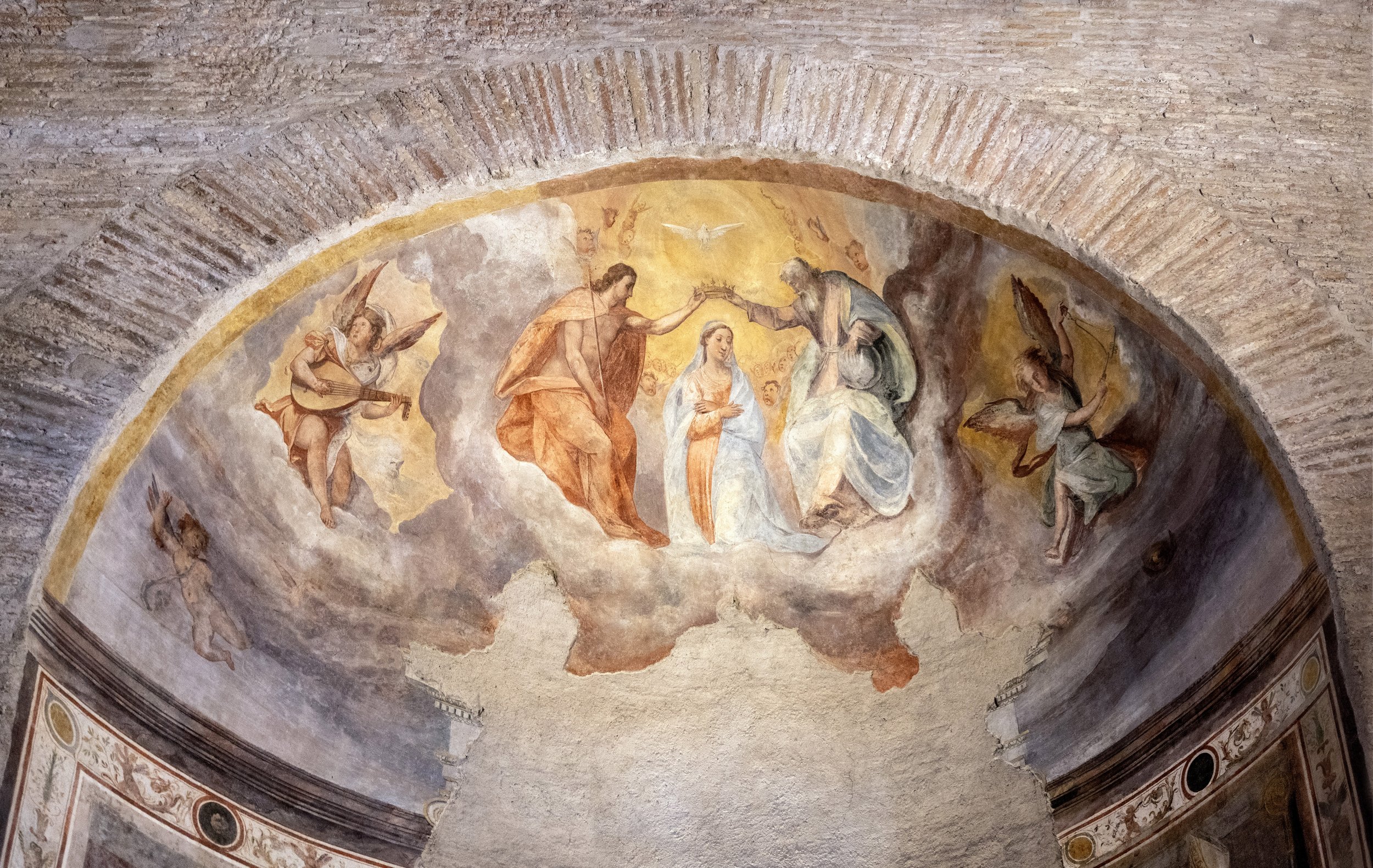
The conch of the apse contains a damaged fresco of the 16th century, in the Venetian style, that depicts Our Lady, Queen of Heaven with allegorical representations of the Trinity. The figures are flanked by a pair of angels, one with a lute and the other with a triangle (for percussion). The fresco was unknown until the restoration of 2000.
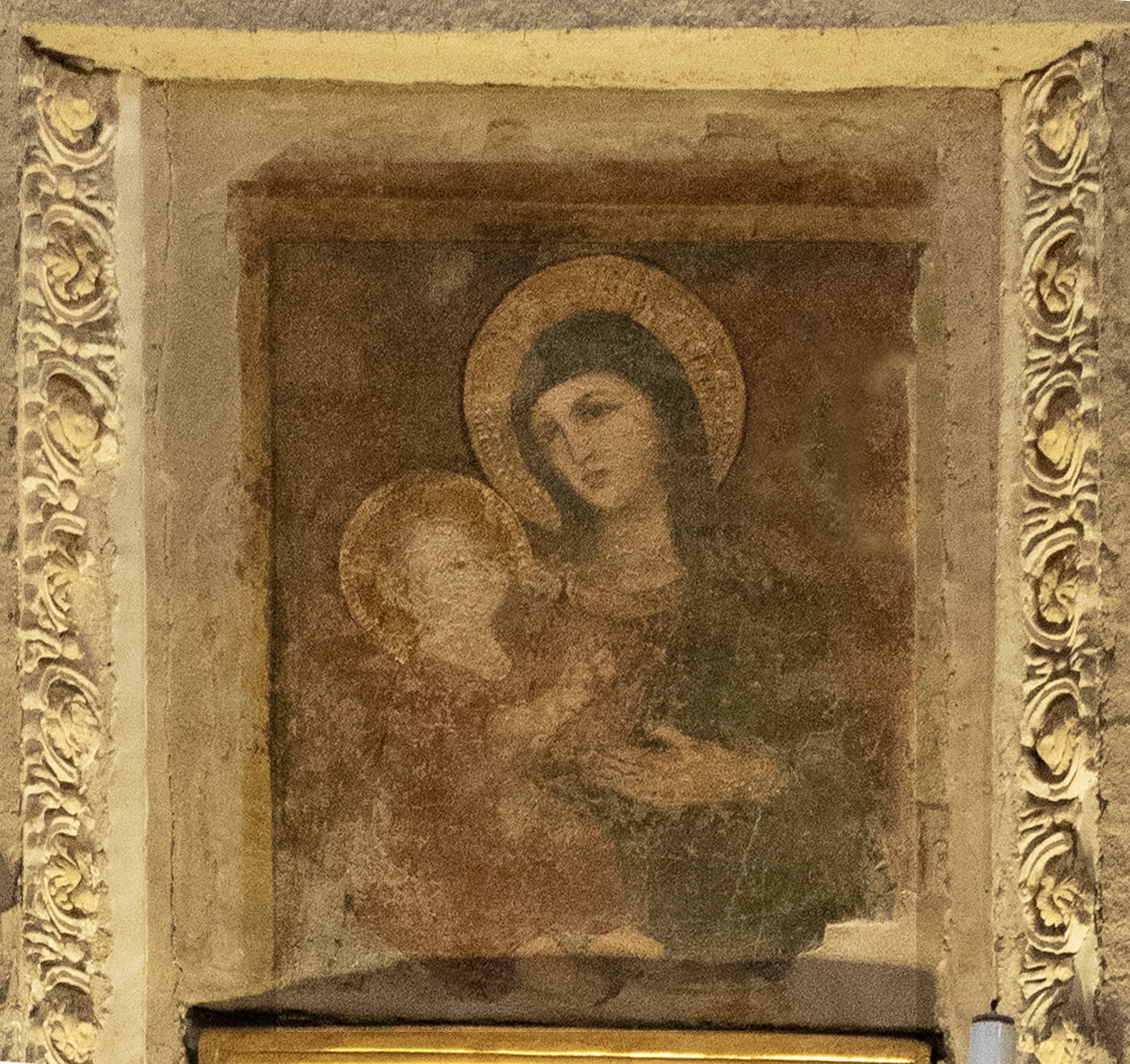

Below the Virgin with Child is St Benedict as a Young Man holding a book that reads: Ausculta, o fili, precepta magistri, inclina aurem cordis tui ("Listen, son, to the precepts of the Master, and incline the ear of your heart"). It is the first line in his famous monastic rule.
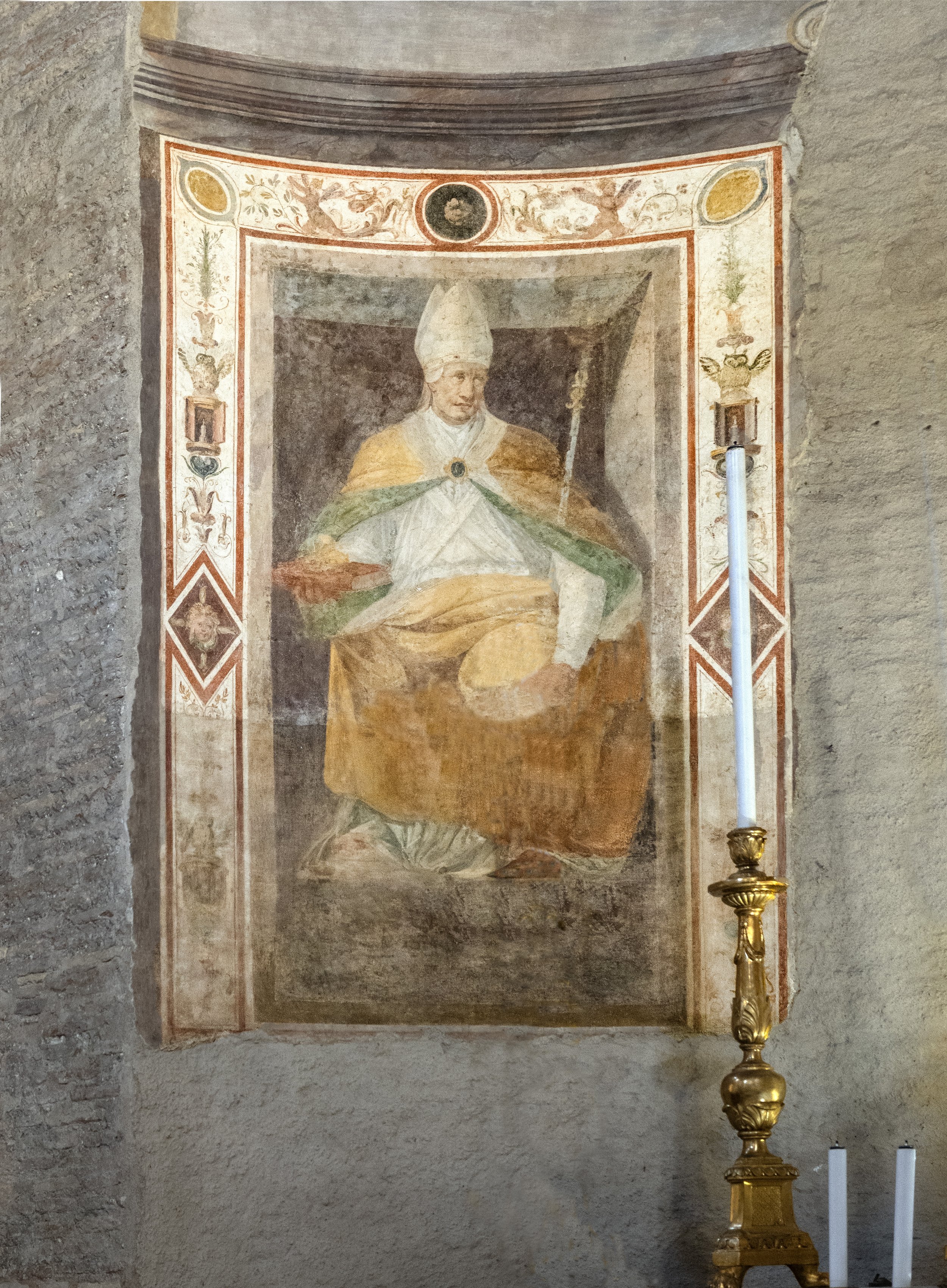
Nicholas lost both of his parents as a young man and reportedly used his inheritance to help the poor and sick. A devout Christian, he later served as bishop of Myra. After his death, the legend of his gift-giving grew. In the 1700s, Dutch immigrants brought their celebration of Sint Nikolaas, whose nickname was Sinterrklaas, to America and he was transformed into the legendary character called Santa Claus, who brings Christmas presents to children around the world.

Saint Blaise was the Bishop of Sebaste in Armenia (modern Turkey) around 1,700 years ago.vHe was persecuted and executed by the Emperor Licinius. While in hiding during his persecution, Blaise is said to have healed sick and wounded animals.

To the left of the altar is a monument to Antonio Piervenanzi, priest of the church from 1720 to 1730. To the right is another monument to Giovanni De Pretis di Taverna, of 1691. The sculptors of the busts seem to be unknown.
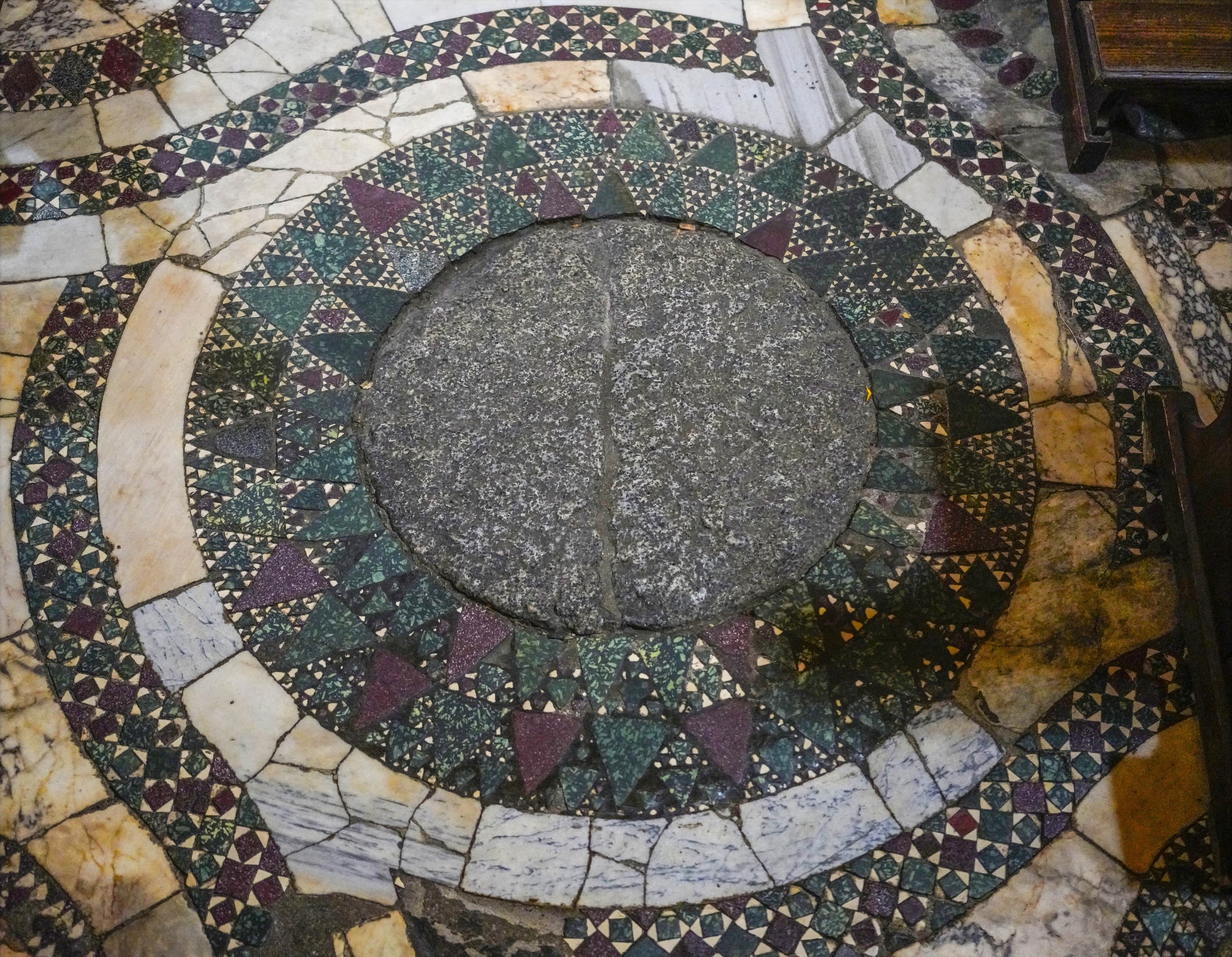

Opus alexandrinum is another form of opus sectile, where only a few colors are used, such as white and black, or dark green on a red ground, or vice versa. This term is particularly employed to designate a species of geometrical mosaic, found in combination with large slabs of marble, much used on the pavements of medieval Roman churches and even in Renaissance times.
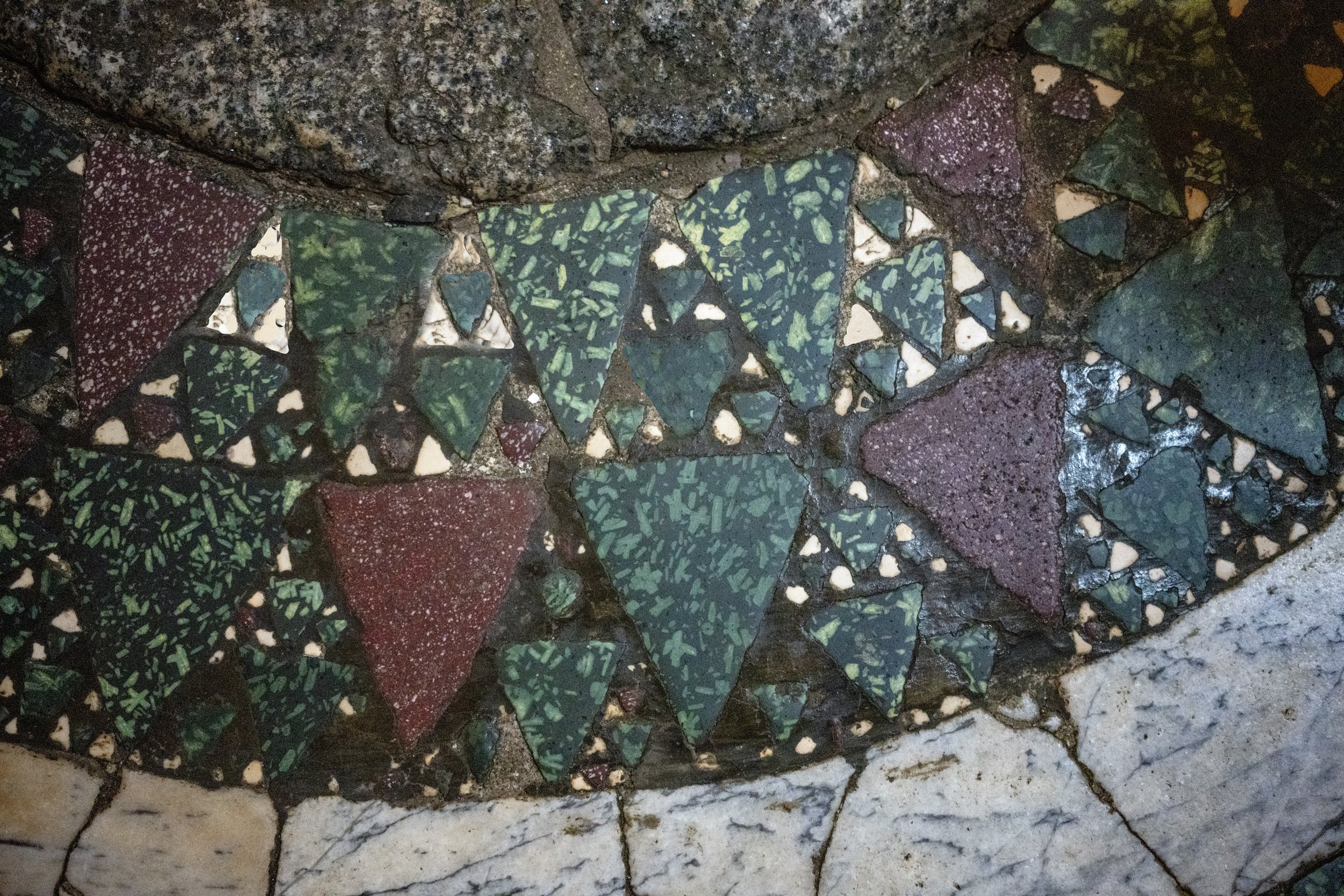
The opus alexandrinum technique was first introduced to southern Italy in 1071 at Montecassino. In the 12th century several variations of opus alexandrinum evolved at local centers in Italy, including the well-known Cosmati work of Rome.

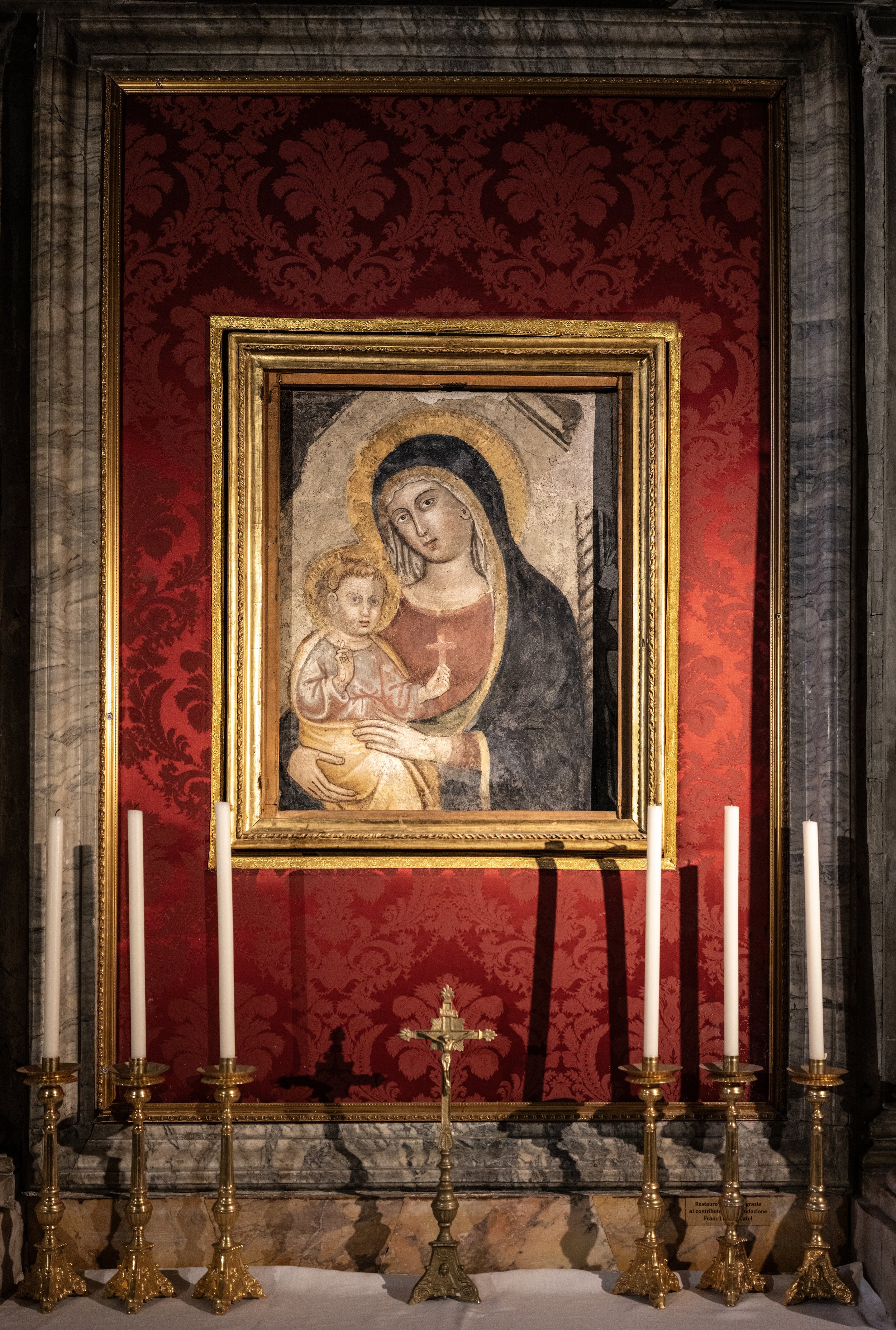
The icon itself is a detached portion of a 14th century fresco of a type known as Our Lady of Mercy (Madonna della Misericordia). Note that the Christ-Child is holding a little cross. The icon was touched up in the 18th century. The crowns that are attached to the two figures are by Domenico de Angelis (1735 – 1804).
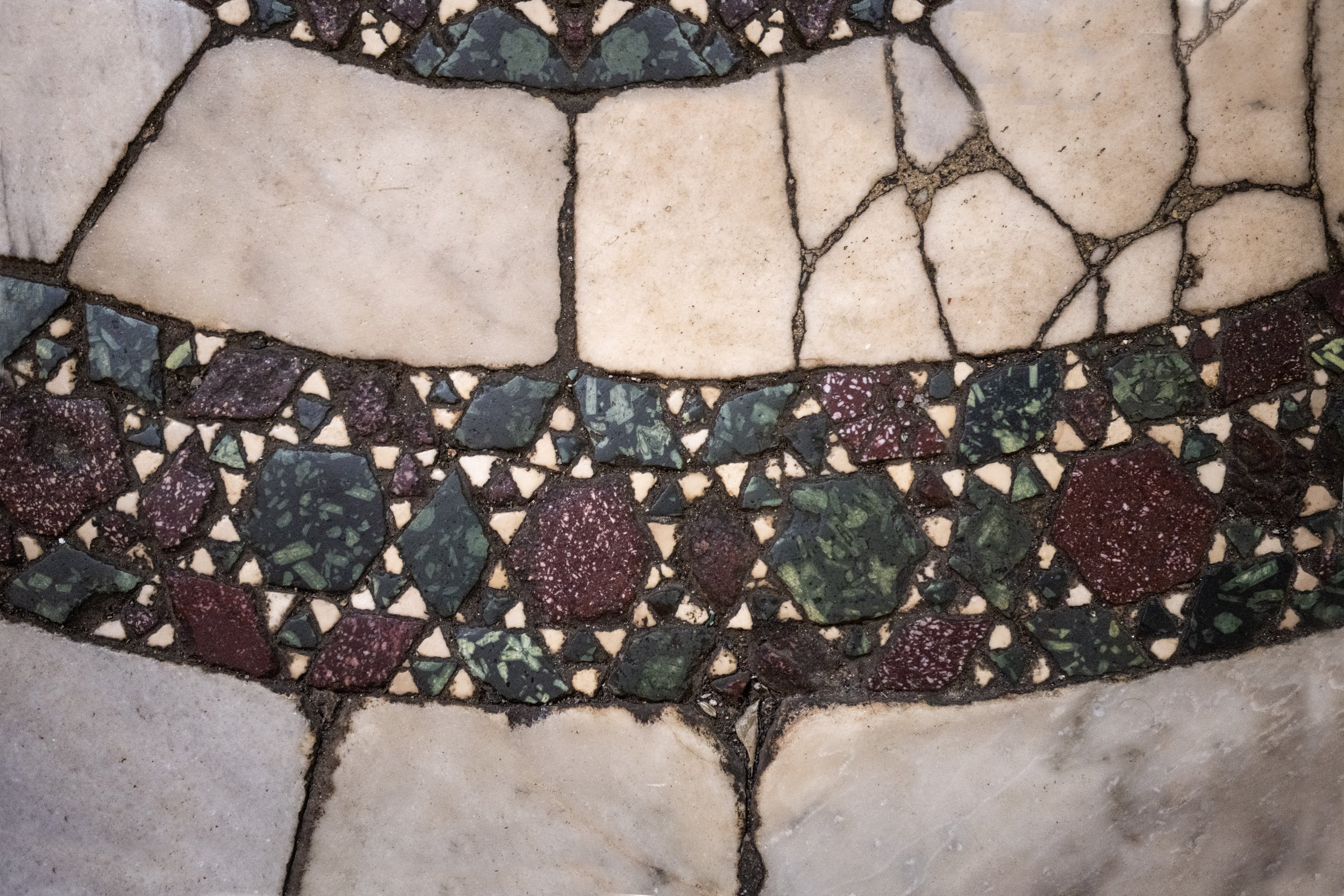

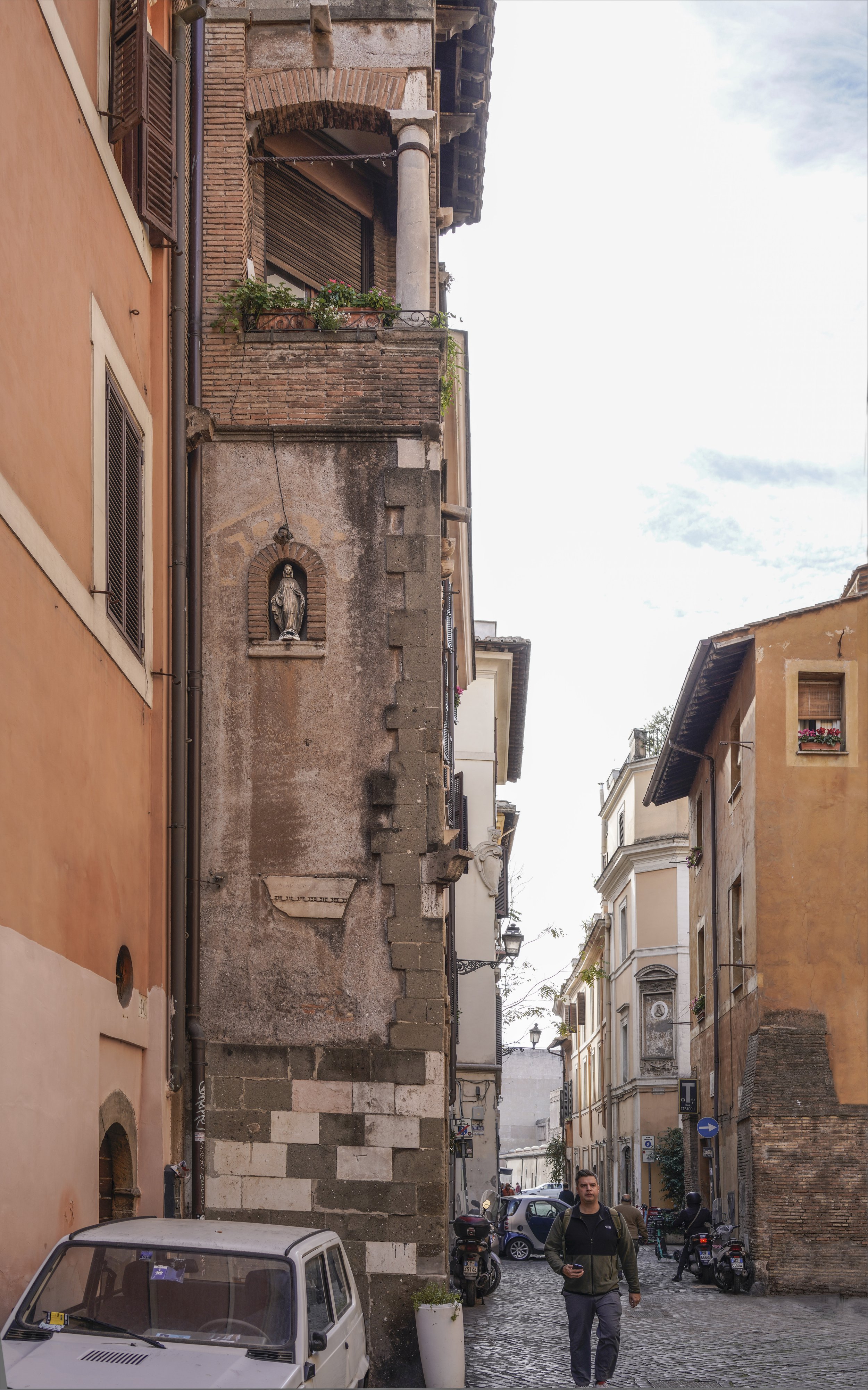
The sacred wall art, statue of the Madonna, on the left, is adjacent to the medieval Church dedicated to St. Benedict of Nursia.
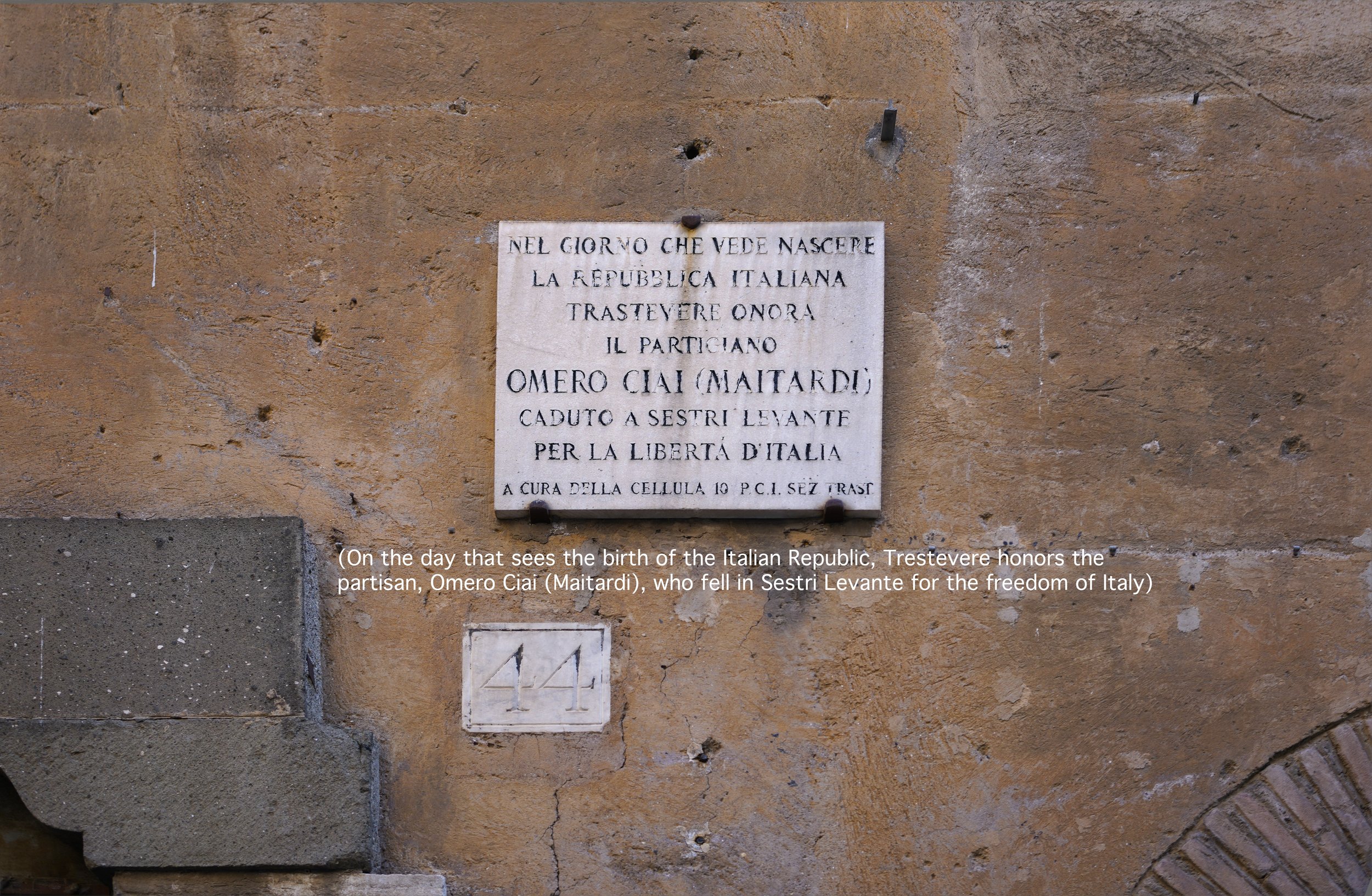
The plaque reads, “On the day that sees the birth of the Italian Republic, Trestevere honors the partisan Omero Ciai (Maitardi), who fell in Sestri Levante for the freedom o Italy.

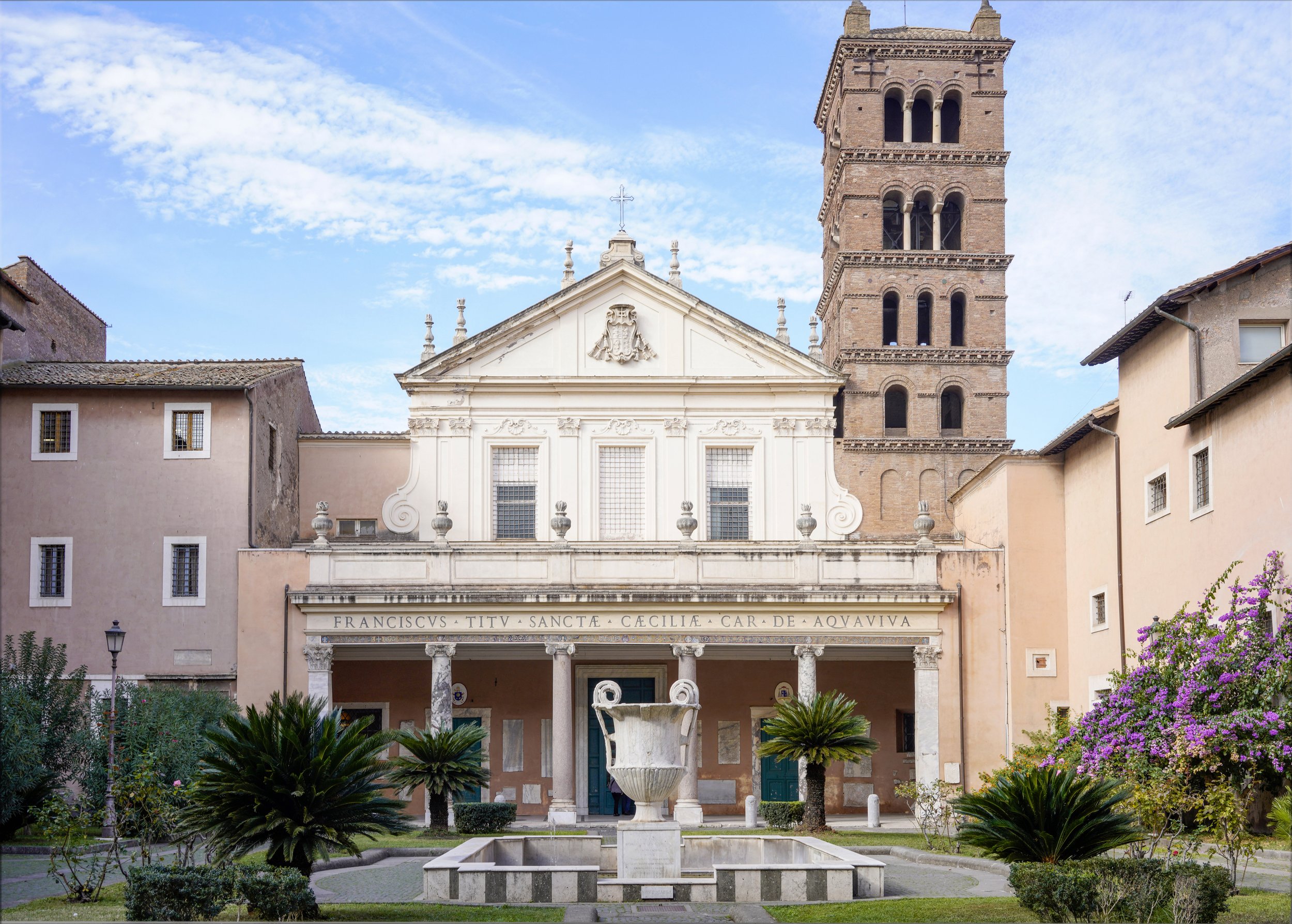
The first church on this site was founded probably in the 3rd century, by Pope Urban I; it was devoted to the young Roman woman Cecilia, martyred it is said under Marcus Aurelius Severus Alexander (A.D. 222–235). Tradition holds that the church was built over the house of the saint.

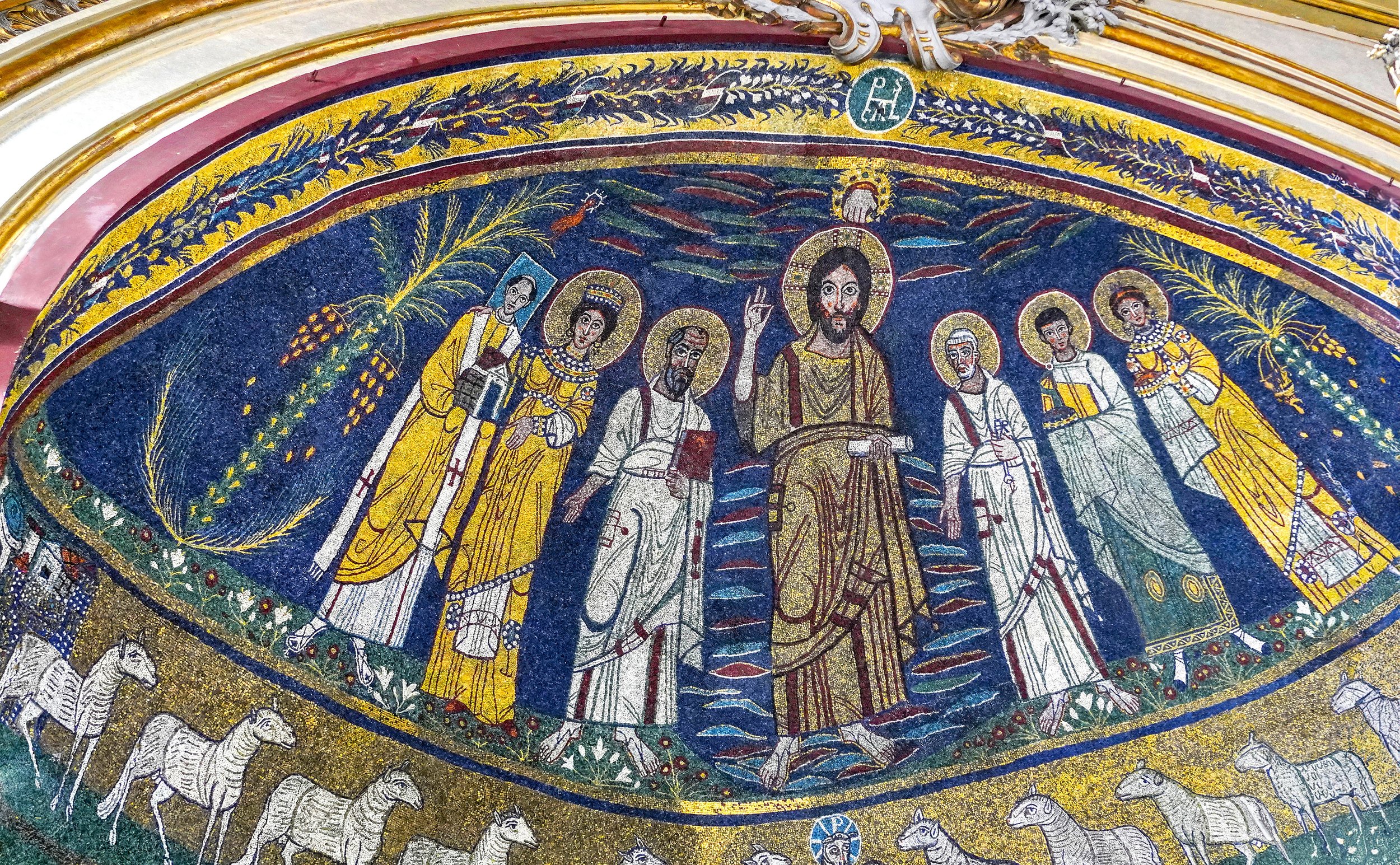
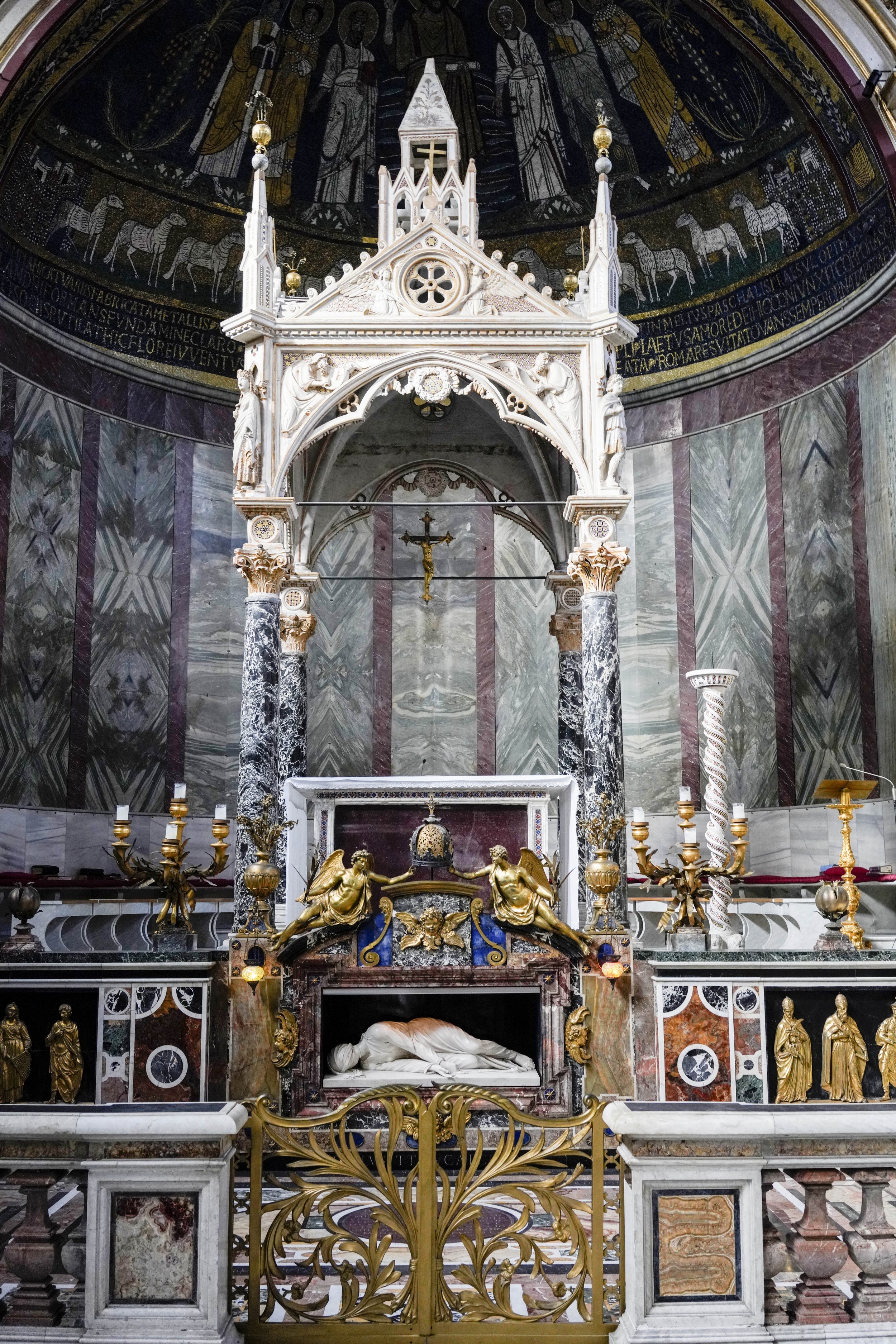
In 821 the body of St Cecilia was exhumed from the Catacombs of San Callisto by St Paschal I (d. 824) and returned to this church. Today her body rests within the crypt under the main altar. Under the ciborium, in black and white marble by Arnoldo di Cambio (1293), that shelters the main altar is a glass case enclosing the white marble sculpture of St. Cecilia (1600) by the late-Renaissance sculptor Stefano Maderno.
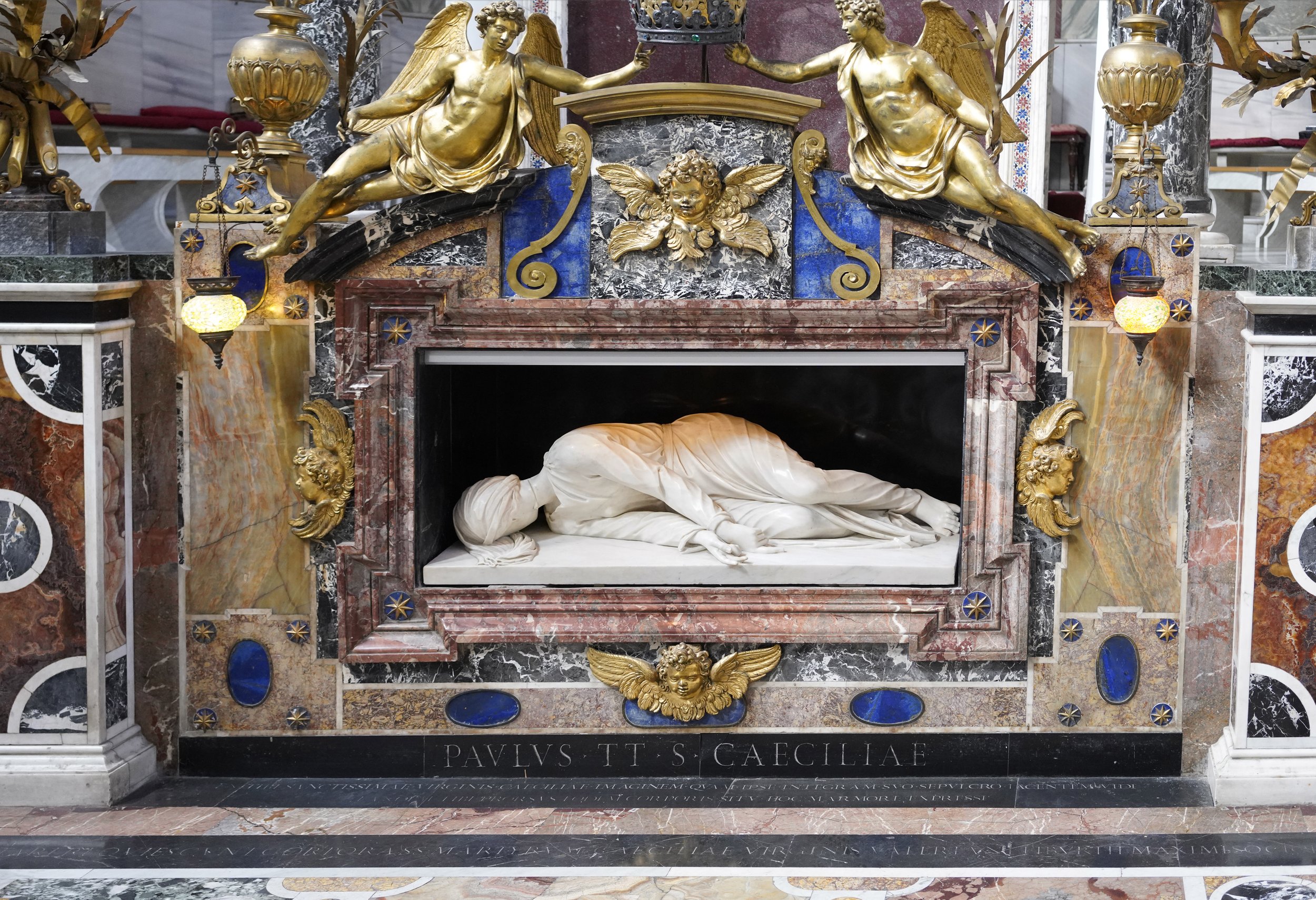
The recumbent statue of St Cecilia below the main altar is considered one of the most famous examples of Baroque sculpture. A gash on her neck recalls events surrounding her martyrdom in 230 A.D. for vowing her virginity to God. The executioner struck her neck three times with a sword but being unable to sever her head fled in fear. She survived for three days, offered all she had to the poor, and then expired.

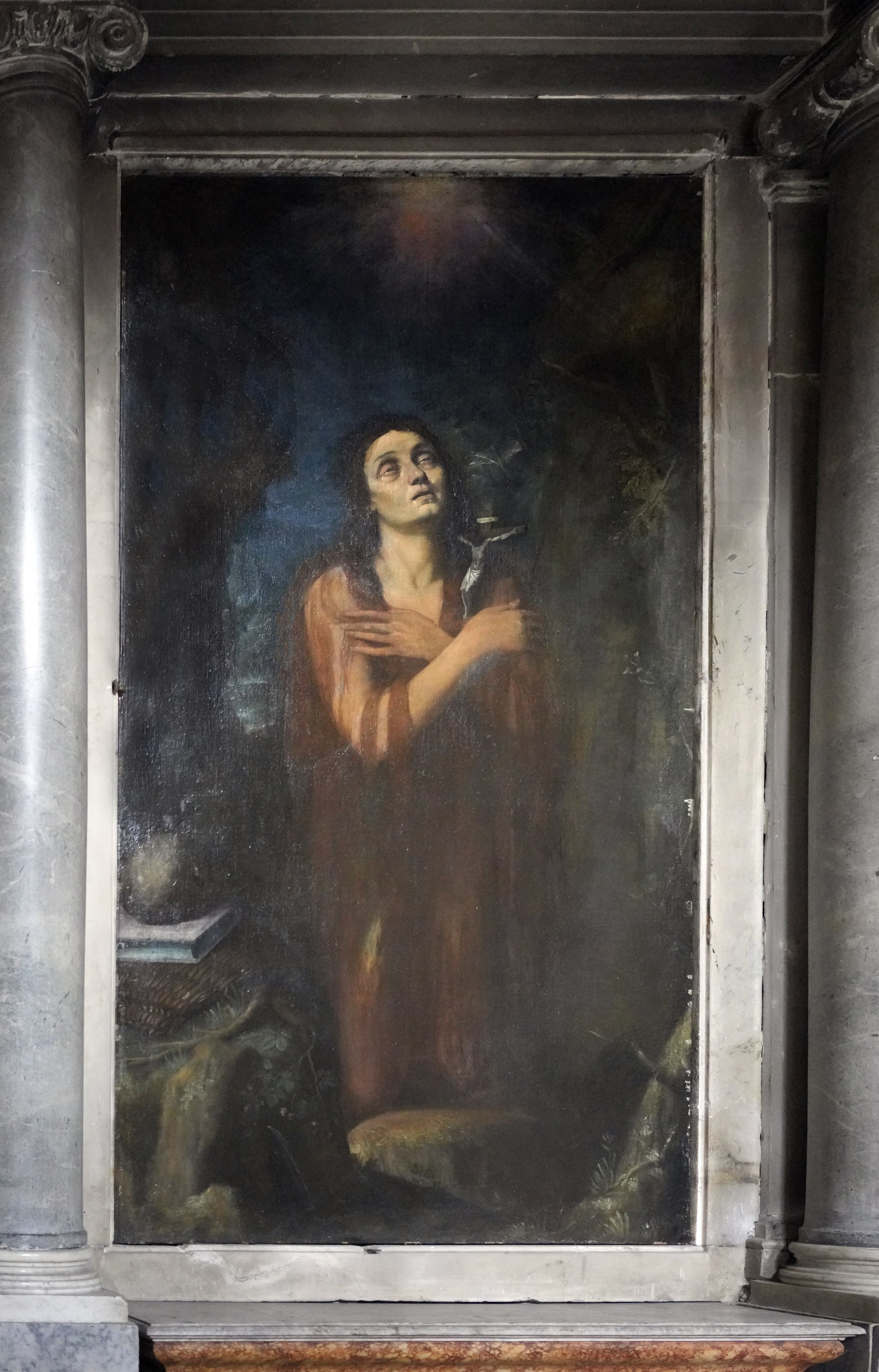

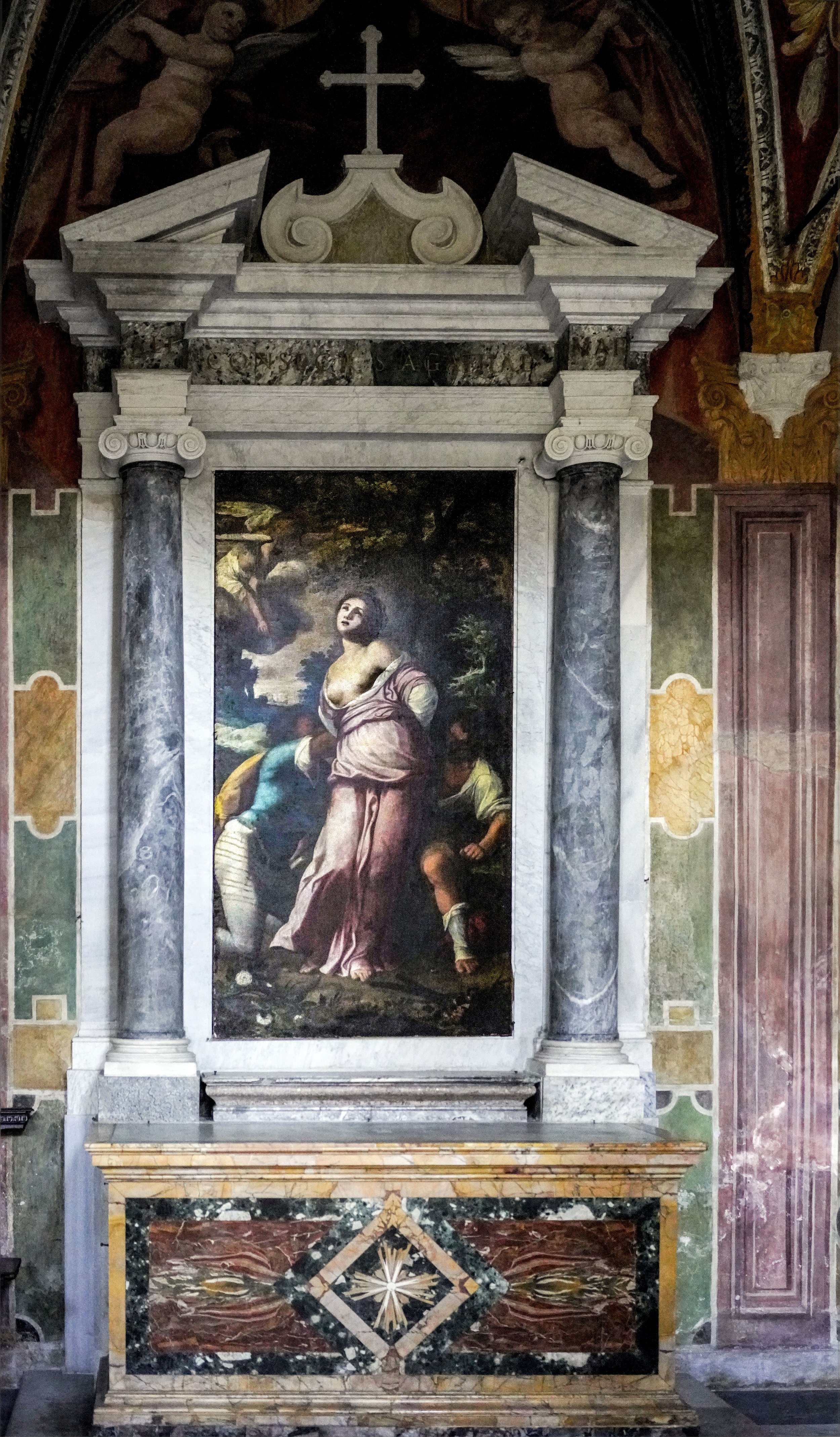
Tradition holds that Agatha, a young age, had professed her religion and consecrated her virginity to God. Thus, she resisted the advances of a Roman prefect sent by the emperor Decius to govern Sicily. This resulted in her brutal torture, during which her breasts were cut off. During her imprisonment, she had a vision of St. Peter the Apostle, who healed her wounds with his prayers. She was sent to the stake, but as soon as the fire was lighted, an earthquake occurred, causing the people to insist upon her release; she then allegedly died in prison.
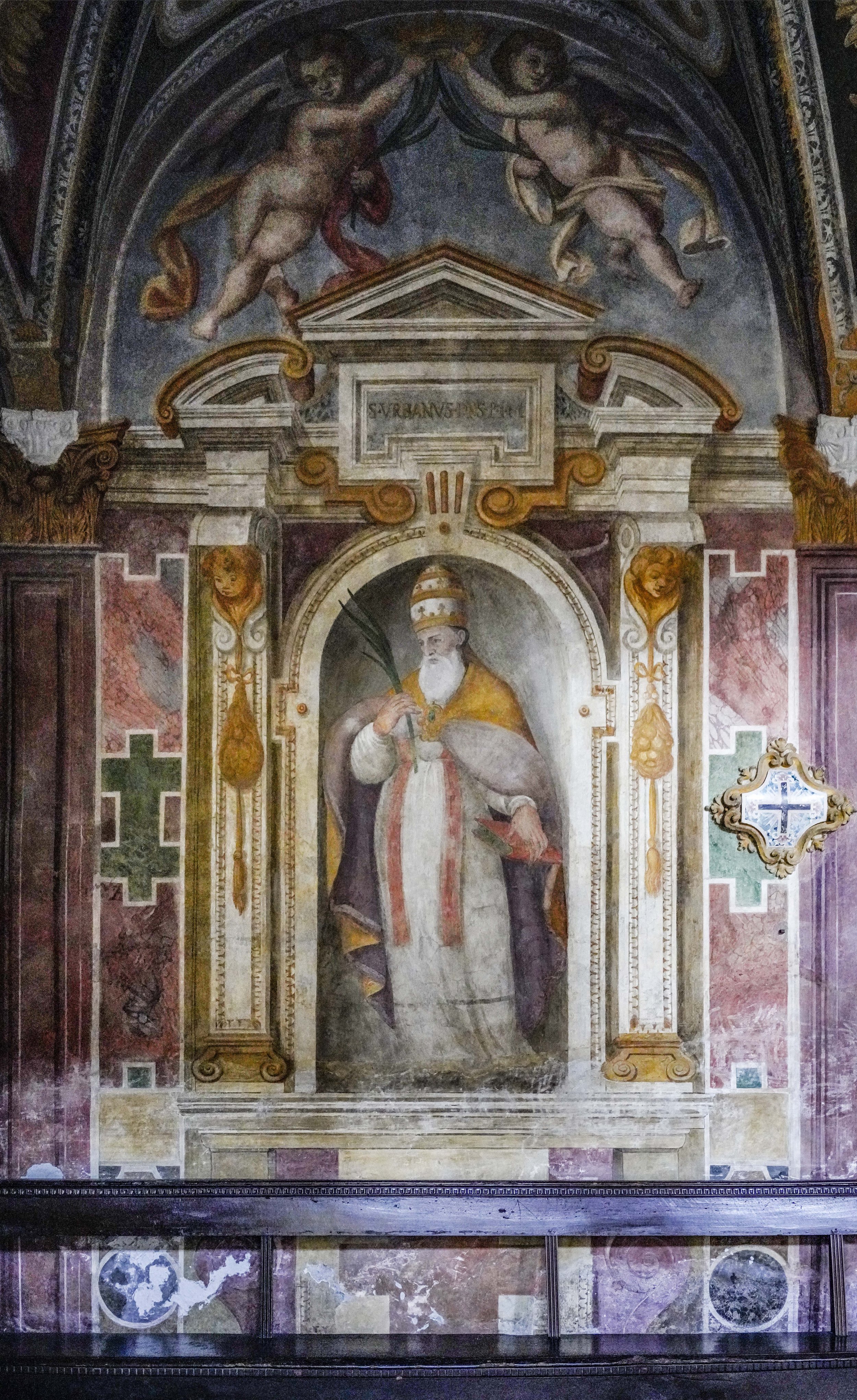
Pope Urban I, also known as Saint Urban (d. 230) (Latin: Urbanus I), was the bishop of Rome from 222 - 230. Tradition credits Urban with the miracle of toppling an idol through prayer. This event is believed to have led to Urban being beaten and tortured before being sentenced to death by beheading.


The Last Judgement fresco which remains today, covering the entire width of the west wall of the entrance, is likely part of a cycle of Old and New Testament scenes by Cavallini on the north and south nave walls, based on remaining fragments of an Annunciation scene and stories of the life of Jacob.
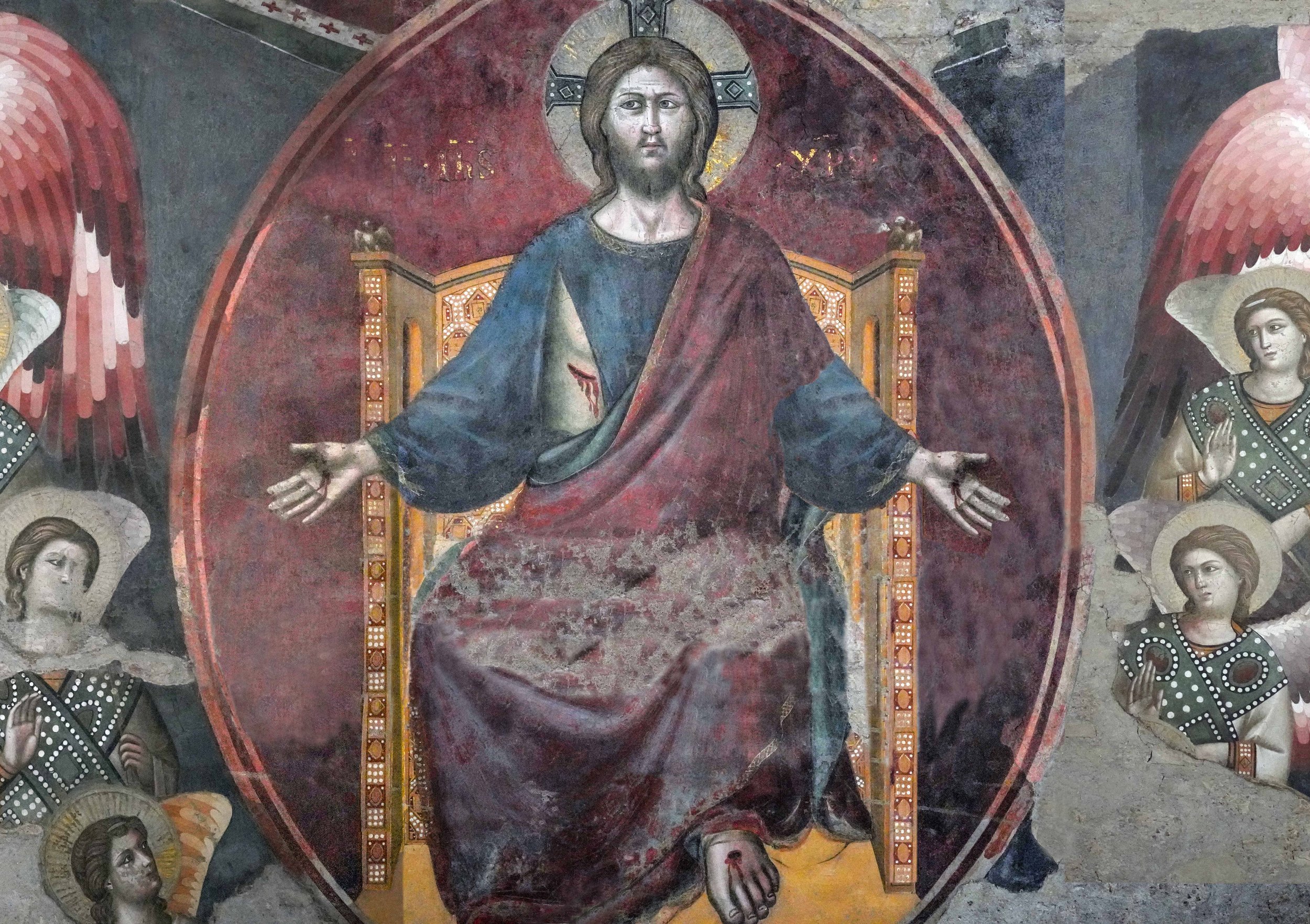
This fresco and others were plastered over in a remodeling under Cardinal Francesco Acquaviva in 1724, which included building an enclosed choir, the floor of which cuts off part of the Last Judgement. Rediscovered in 1900, the fresco can be viewed on weekday hours for a small fee paid to the Benedictine nuns of the church. Since 1527, a community of Benedictine nuns has lived in the monastery next to Santa Cecilia, and has had charge of the basilica.
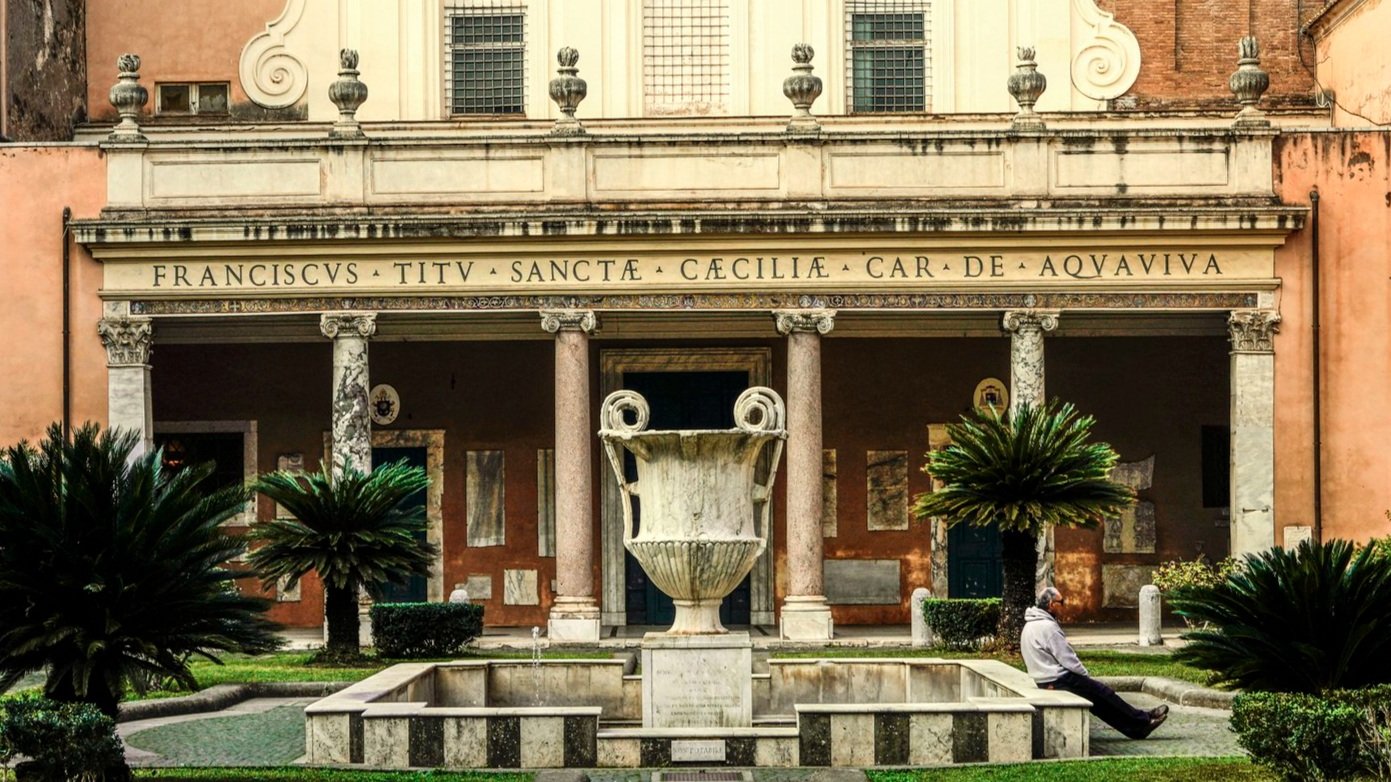
The church façade was built in 1725 by Ferdinando Fuga, which incloses a courtyard decorated with ancient mosaics, columns and a cantharus (a large Roman vase/water vessel).
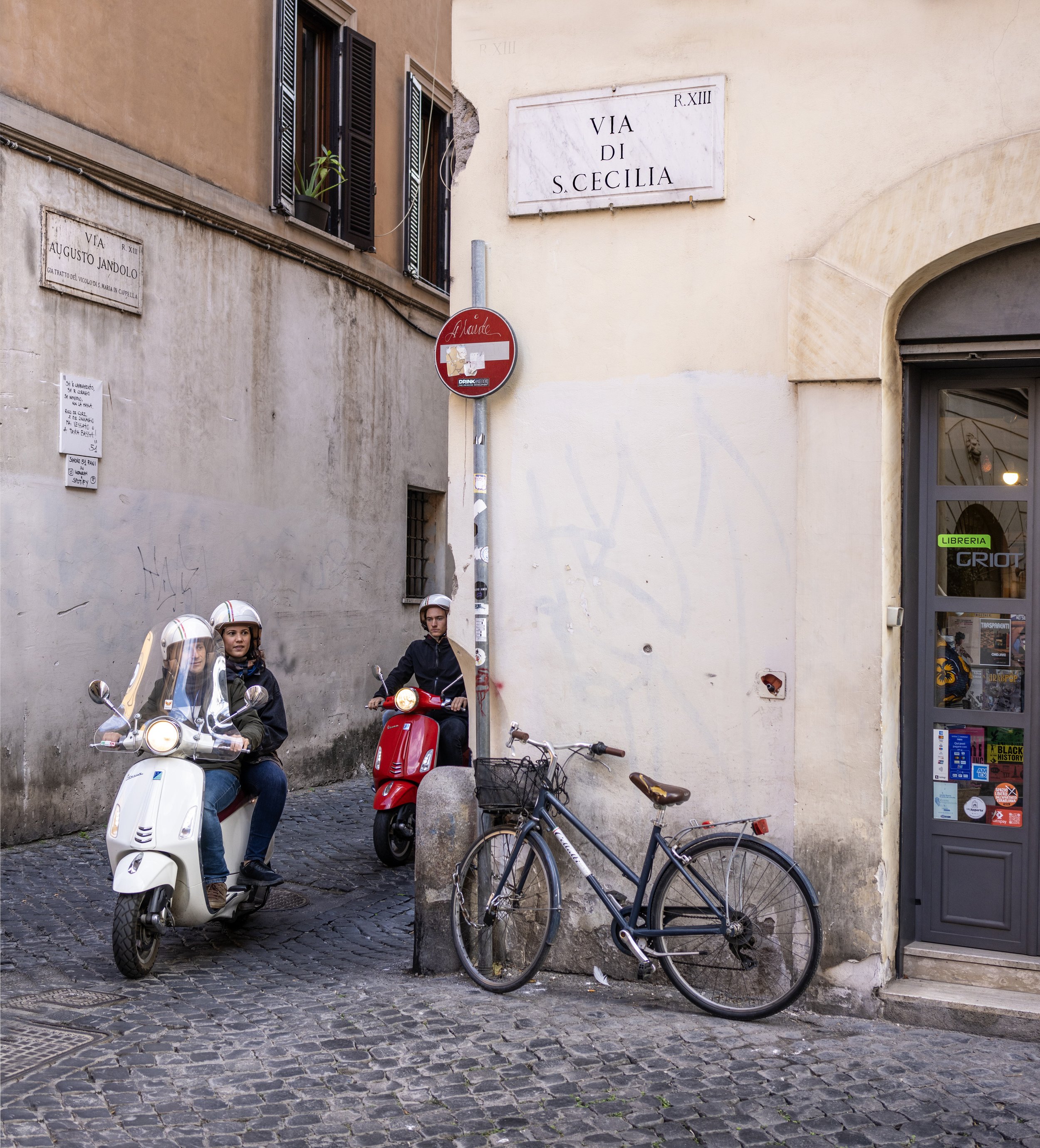
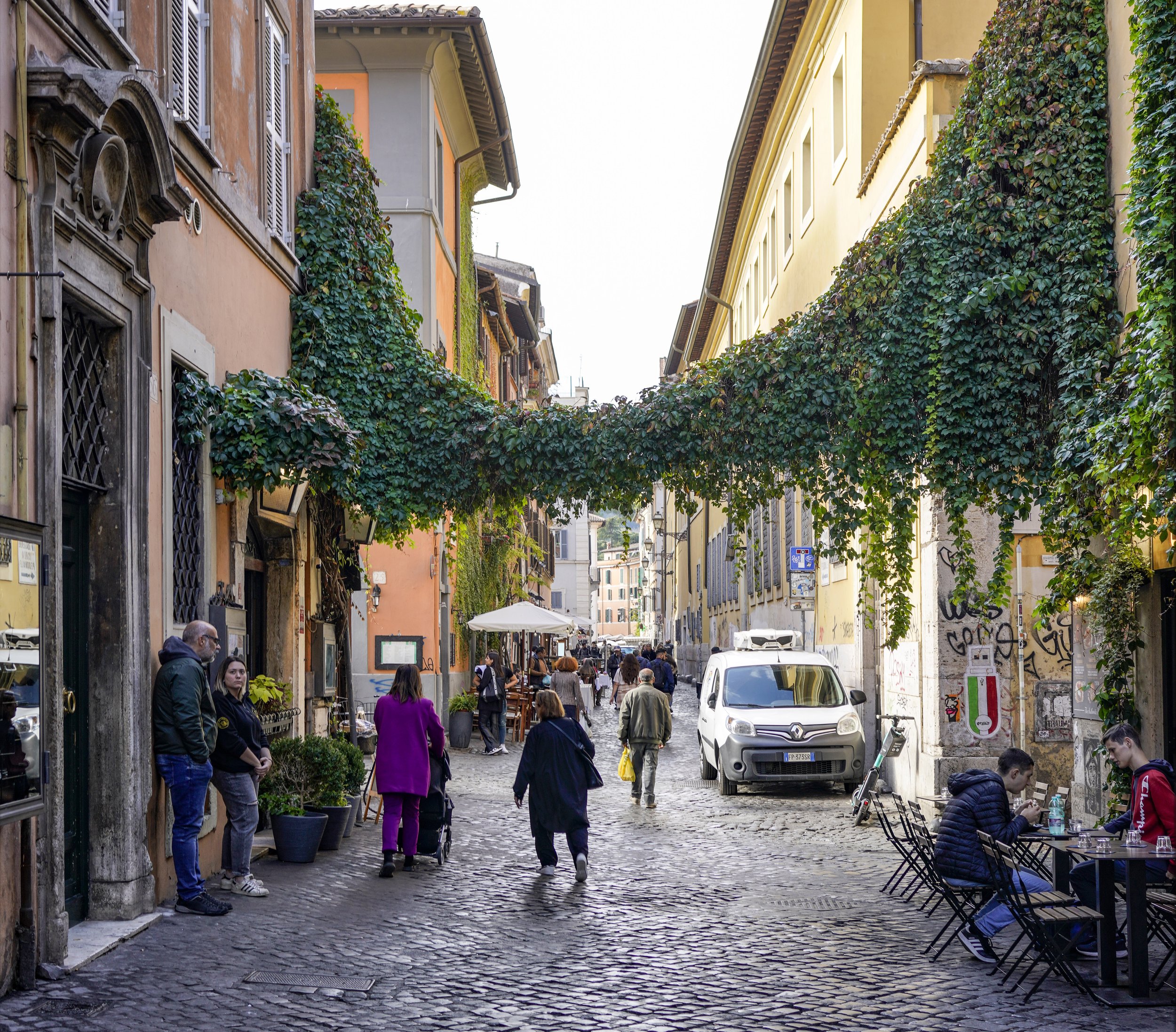
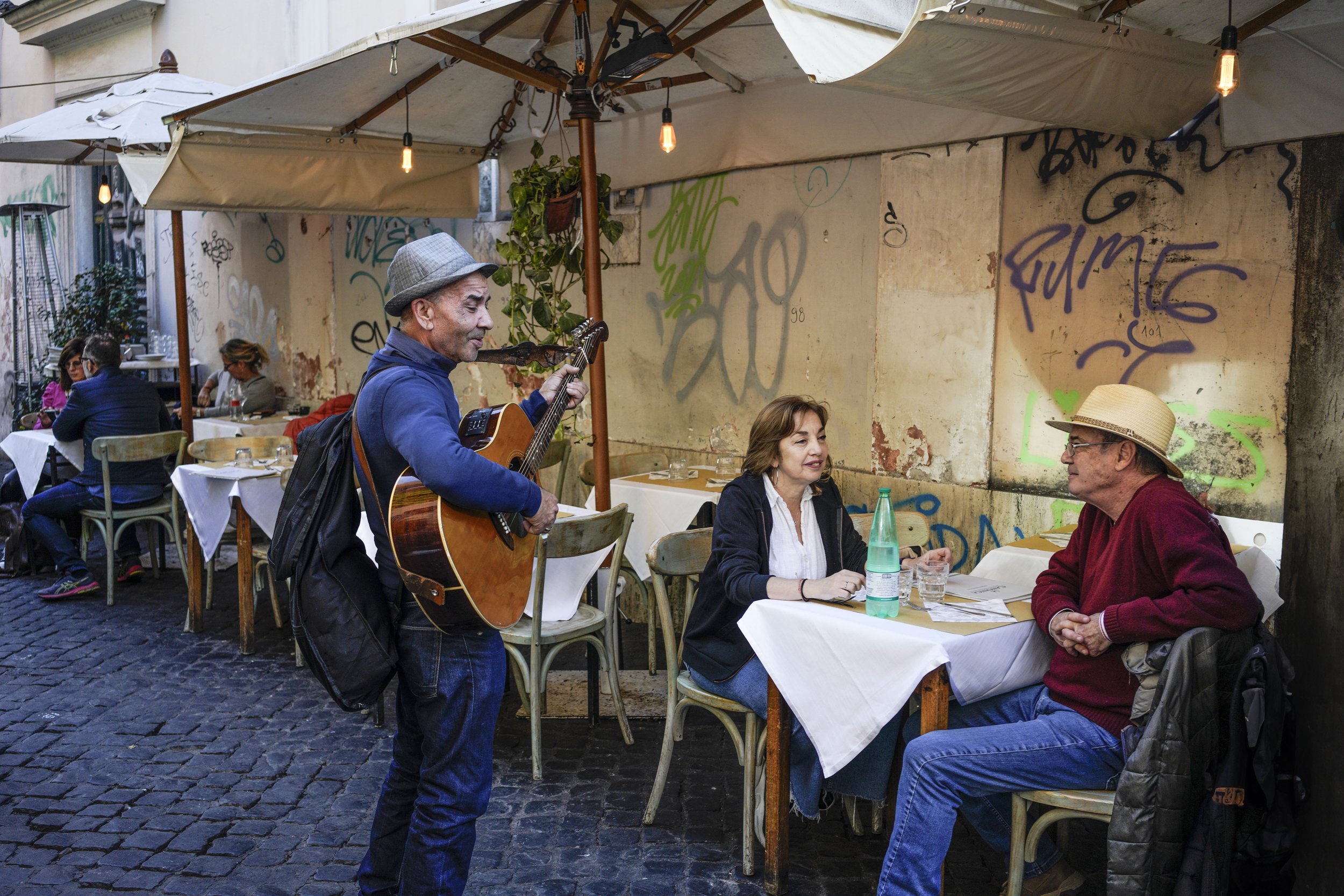

The Fontana dell'Acqua Paola was built to mark the end of the Acqua Paola aqueduct, restored by Pope Paul V Borghese, and took its name from him. Pope Paul V decided to rebuild and extend the ruined Acqua Traiana aqueduct built by the Emperor Trajan in order to create a source of clean drinking water for the residents of the Janiculum Hill, who were forced to take their water from brackish springs or from the polluted Tiber.

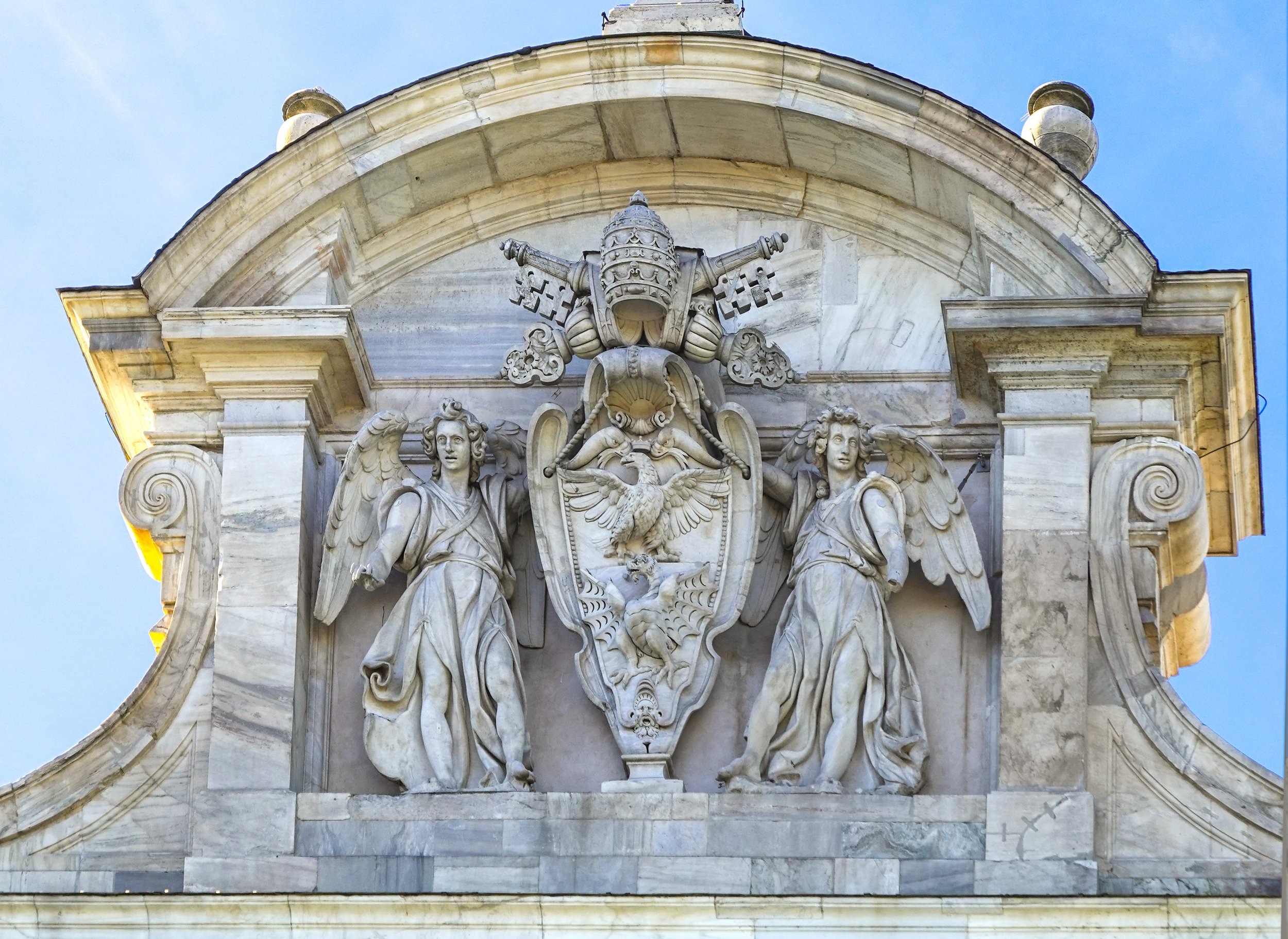
The Coat of Arms of Paul V (Camillo Borghese, 1605–1621) shows the imperial eagle of the Hohenstaufen in chief, a tradition in Italian heraldry. Pope Paul V raised money for the fountain via a (unpopular) tax on wine and purchased the rights a spring near Lake Bracciano; that source being stated on the fountain’s upper facade.

Visible are the two statues of the goddess Victoria riding on quadrigas (a chariot drawn by four horses abreast), atop the Victor Emmanuel II National Monument on the Capitoline Hill, in the symbolic centre of ancient Rome.

The Victor Emmanuel II National Monument (also known as Altare della Patria, "Altar of the Fatherland"), is a large national monument built between 1885 and 1935 to honor Victor Emmanuel II, the first king of a unified Italy. It occupies a site between the Piazza Venezia and the Capitoline Hill. The monument was realized by Giuseppe Sacconi.

The Tempietto by Bramante is a rounded structure known as one of the most definitive examples of High Renaissance architecture. “Architectural historians often argue that the Tempietto functions as a compelling geometrical metaphor for Leonardo da Vinci’s ‘Vitruvian Man’ (1490) – his study of the body’s proportions – where both of these designs exalt the human form by placing it firmly at the centre of a perfectly ordered universe.”

In the Gospel it is written that Jesus Christ would make Peter the "rock" (foundation) of the Church (Gospel of Matthew 16:18, you are Peter (rock), and upon this rock I will build my church). The Tempietto is meant to mark the traditional exact spot of St. Peter's martyrdom, which can be viewed through the circular grate in the floor in front of the statue of St. Peter.
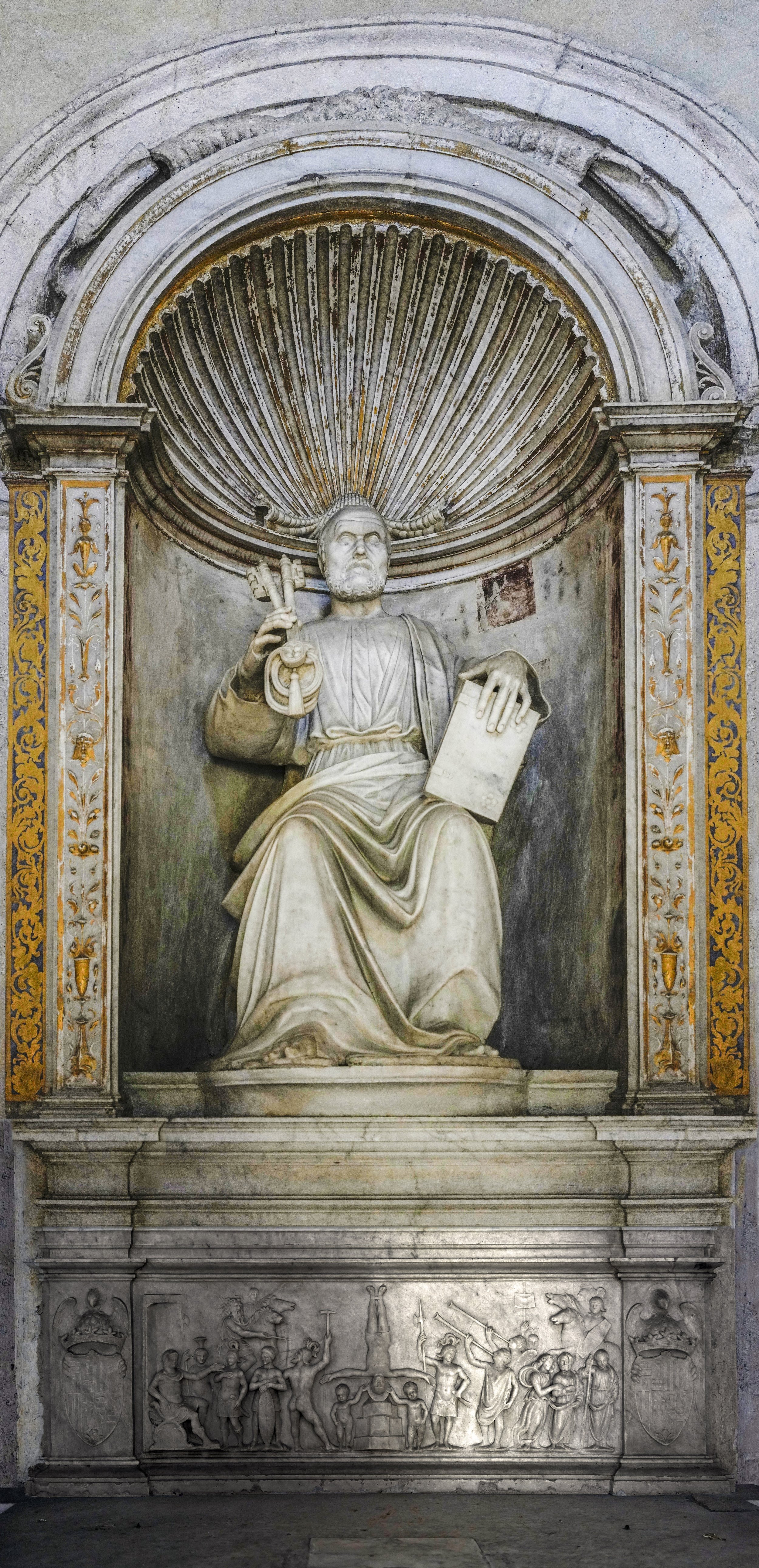
The Saint Peter statue in the center of the Tempietto opposite the entrance depicts Peter with two keys. In Matthew 16:19, Jesus says to Peter, "I will give you the keys of the kingdom of heaven, and whatever you bind on Earth shall be bound in heaven, and whatever you loose on Earth shall be loosed in heaven." Below Peter is a bas relief of his upside-down crucifixion.
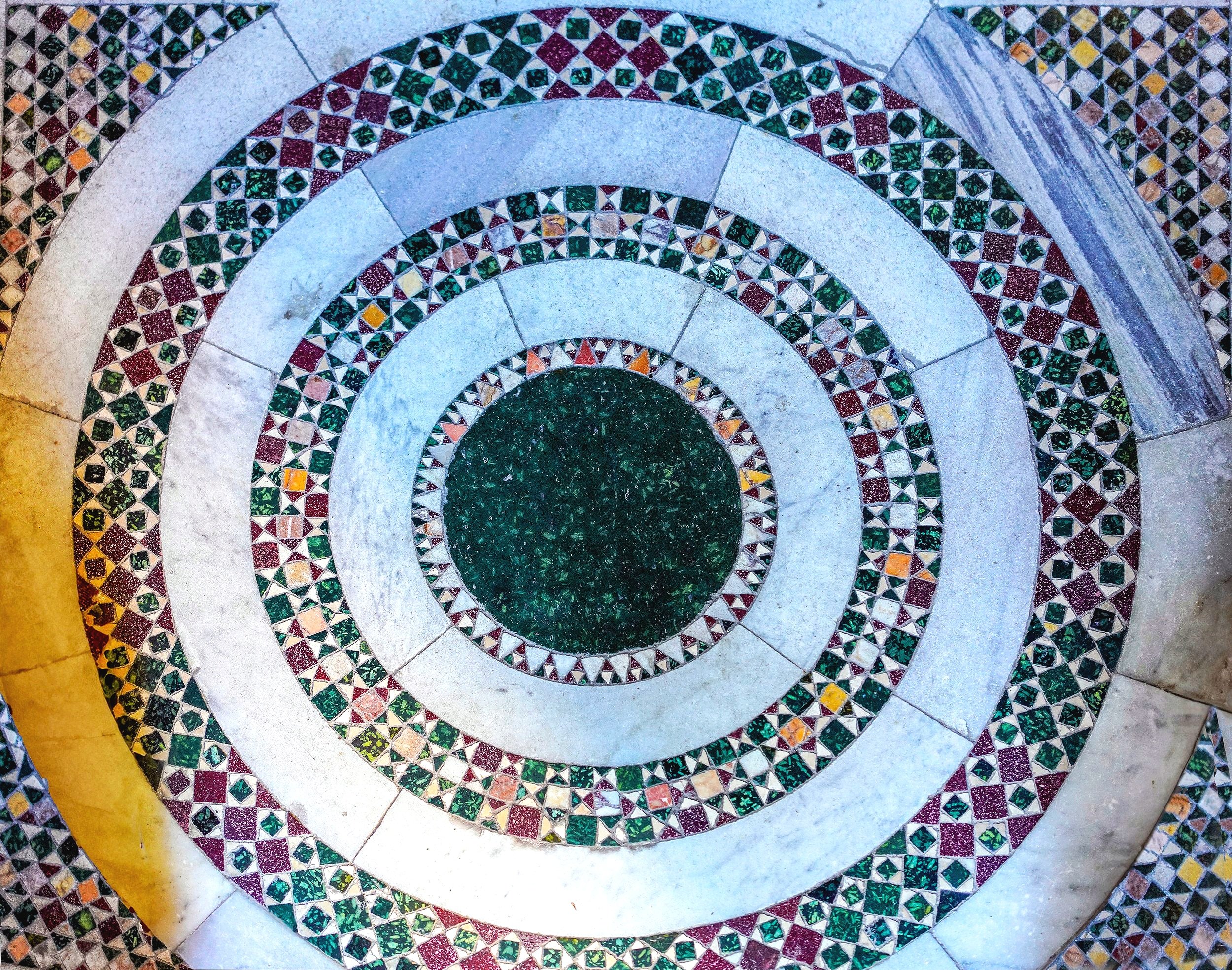
The circle, which has no beginning and no end, can symbolize the perfection and eternal nature of God. For some thinkers in Antiquity and the Renaissance, the universe itself was constructed in the form of concentric circles with the sun, moon and stars moving in circular orbits around the earth.
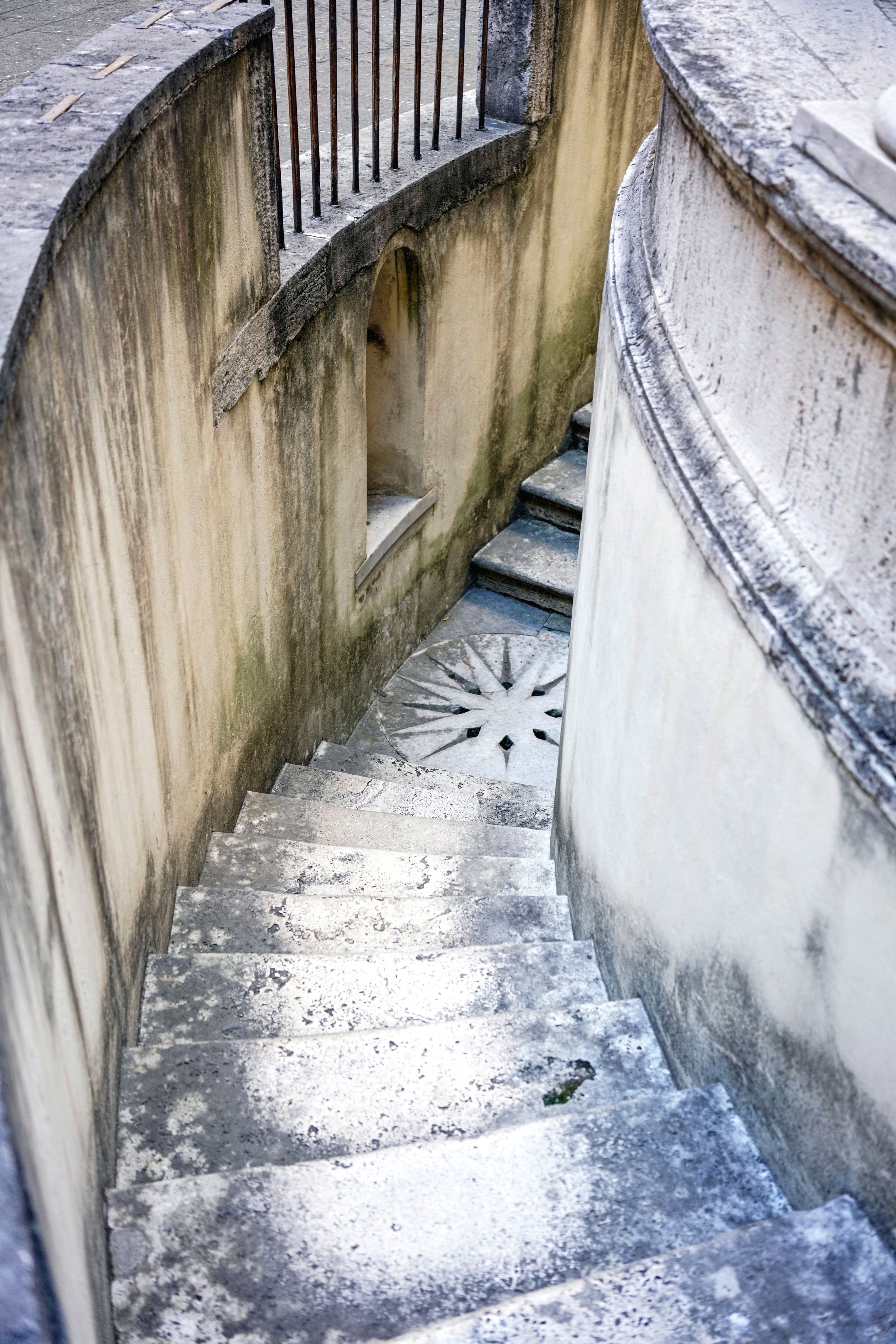
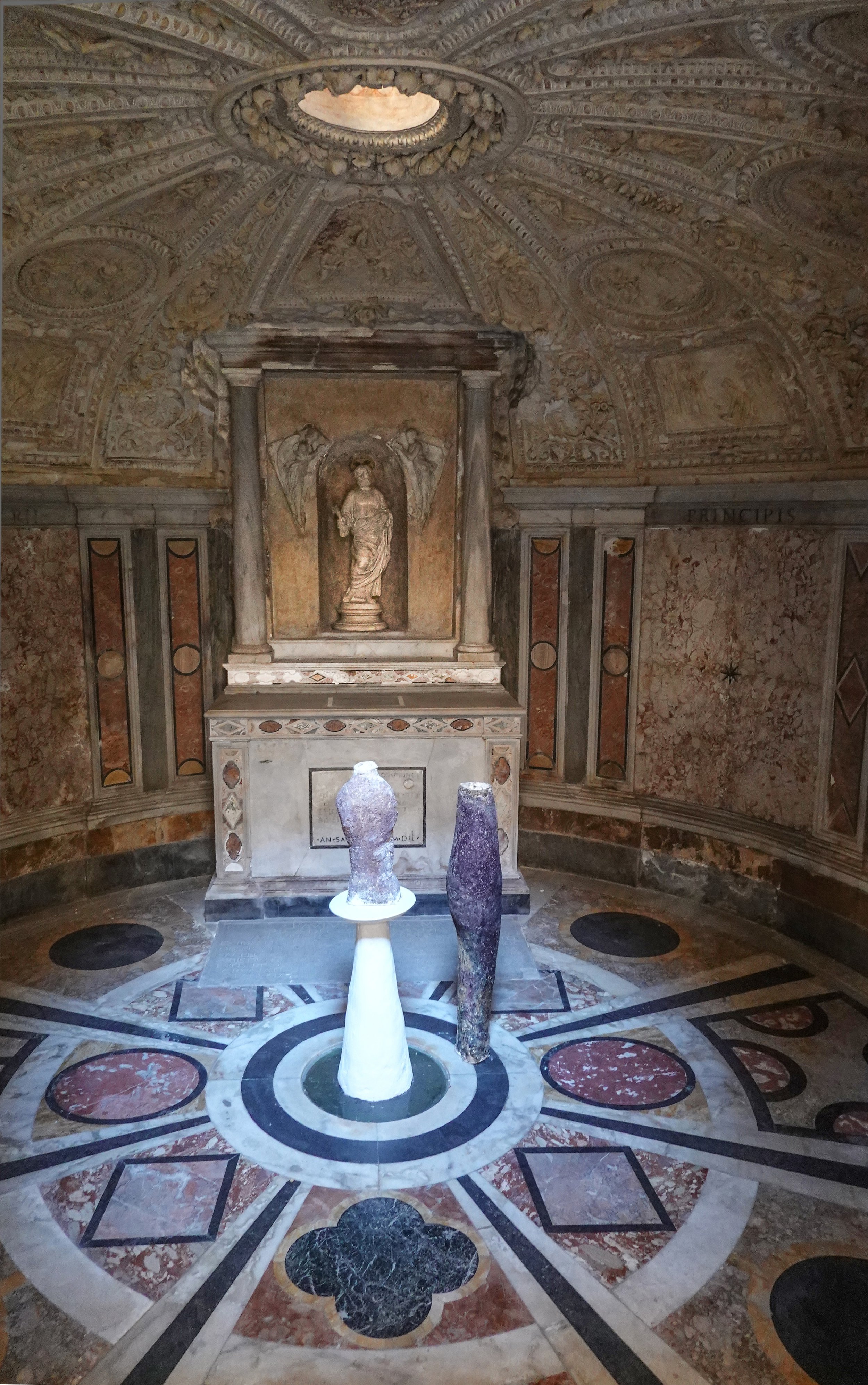
In the crypt of Saint Peter’s martyrdom, the spot of Saint Peter’s crucifixion is marked in front of the altar that contains a statue of Saint Peter holding the papal keys.

The Garibaldi Ossuary Mausoleum opened on 11/3/1941 on the Janiculum hill, where between April 30th and early July, 1849, the last courageous defense of the Roman Republic was led by Giuseppe Garibaldi. The Roman Republic was proclaimed 2/9/1849. The Mausoleum contains the remains of some 200 heroes killed in the battles for Roma Capitale from 1849 to 1870, the latter date marking the final event of the unification of Italy (Risorgimento).
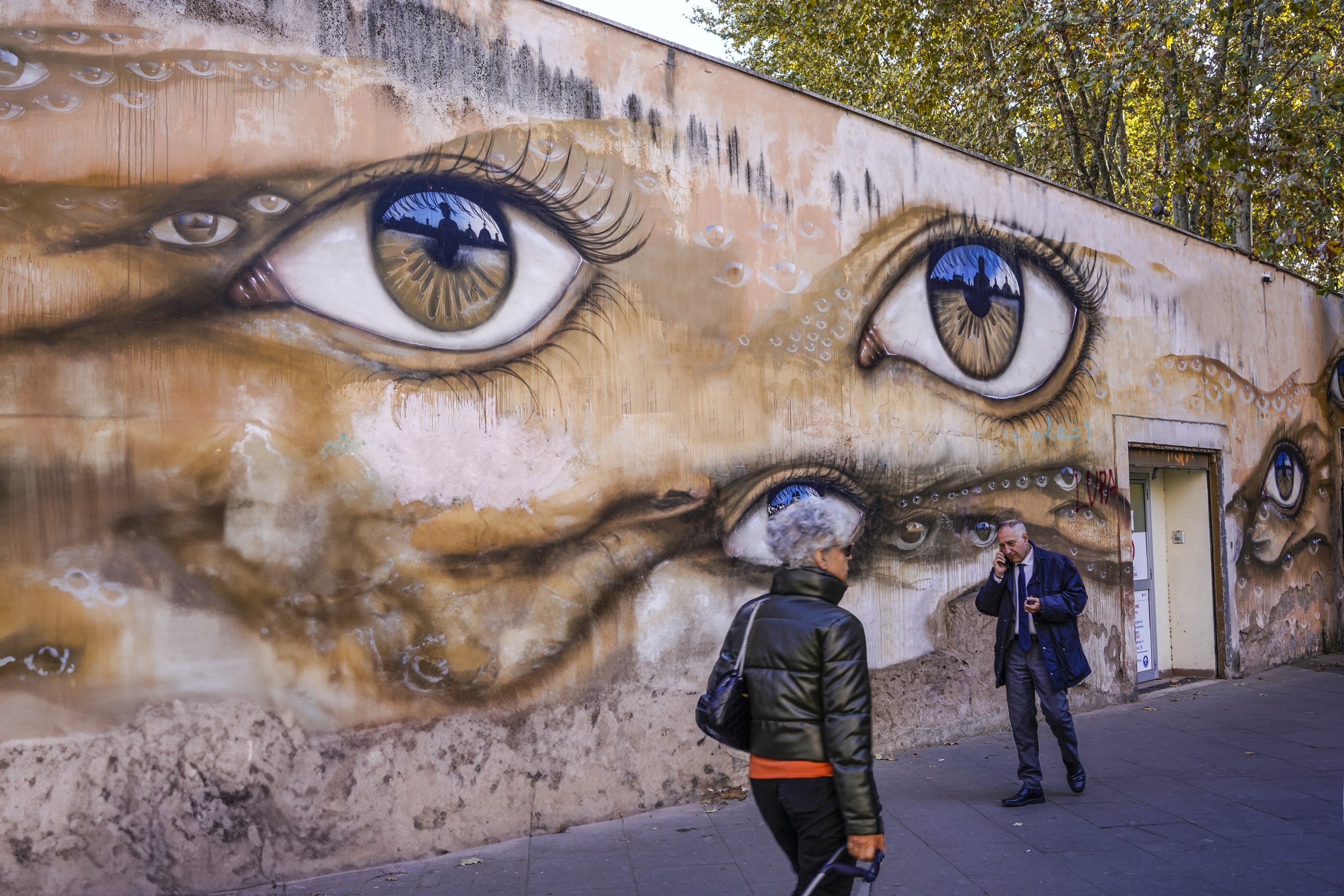
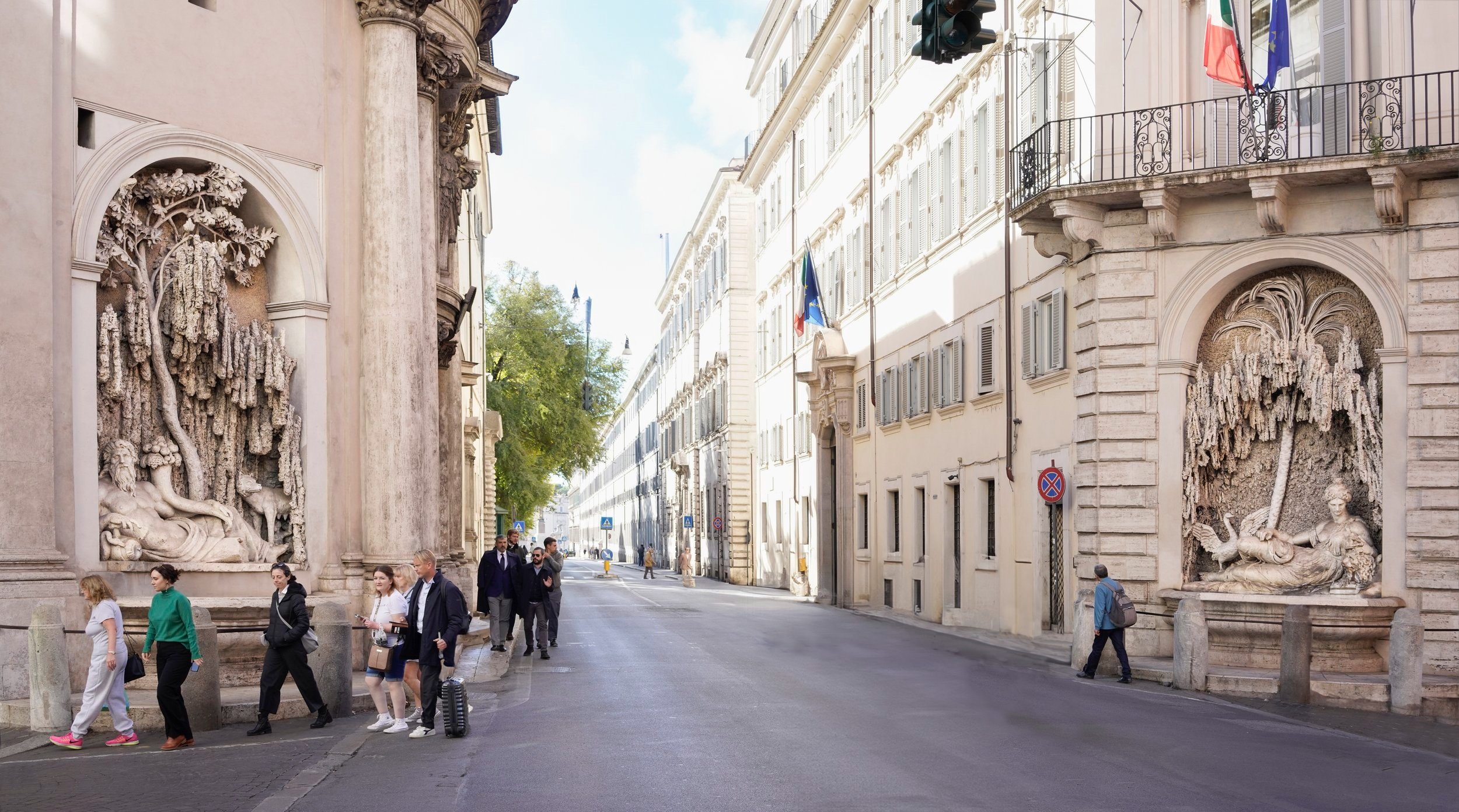
The Quattro Fontane (the Four Fountains) is an ensemble of four Late Renaissance fountains located at the intersection of Via delle Quattro Fontane and Via del Quirinale in Rome. Above, Tiber River Fountain (left) and the goddess Juno Fountain (right).
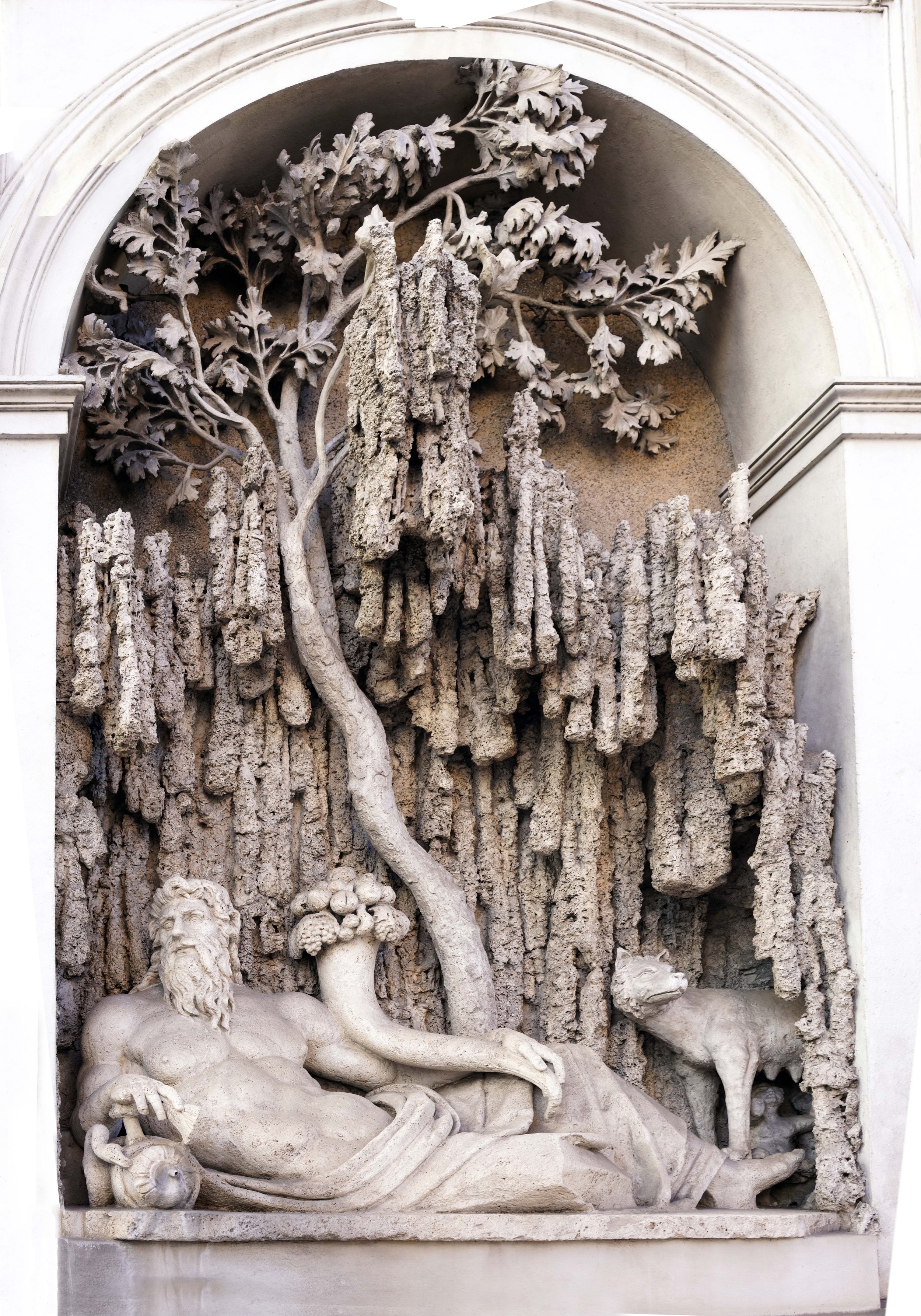
Muzio Mattei (died 1596), an Italian nobleman of the House of Mattei, helped his family rise to prominence by supporting political and cultural initiatives of the Pope and the Church in Rome.
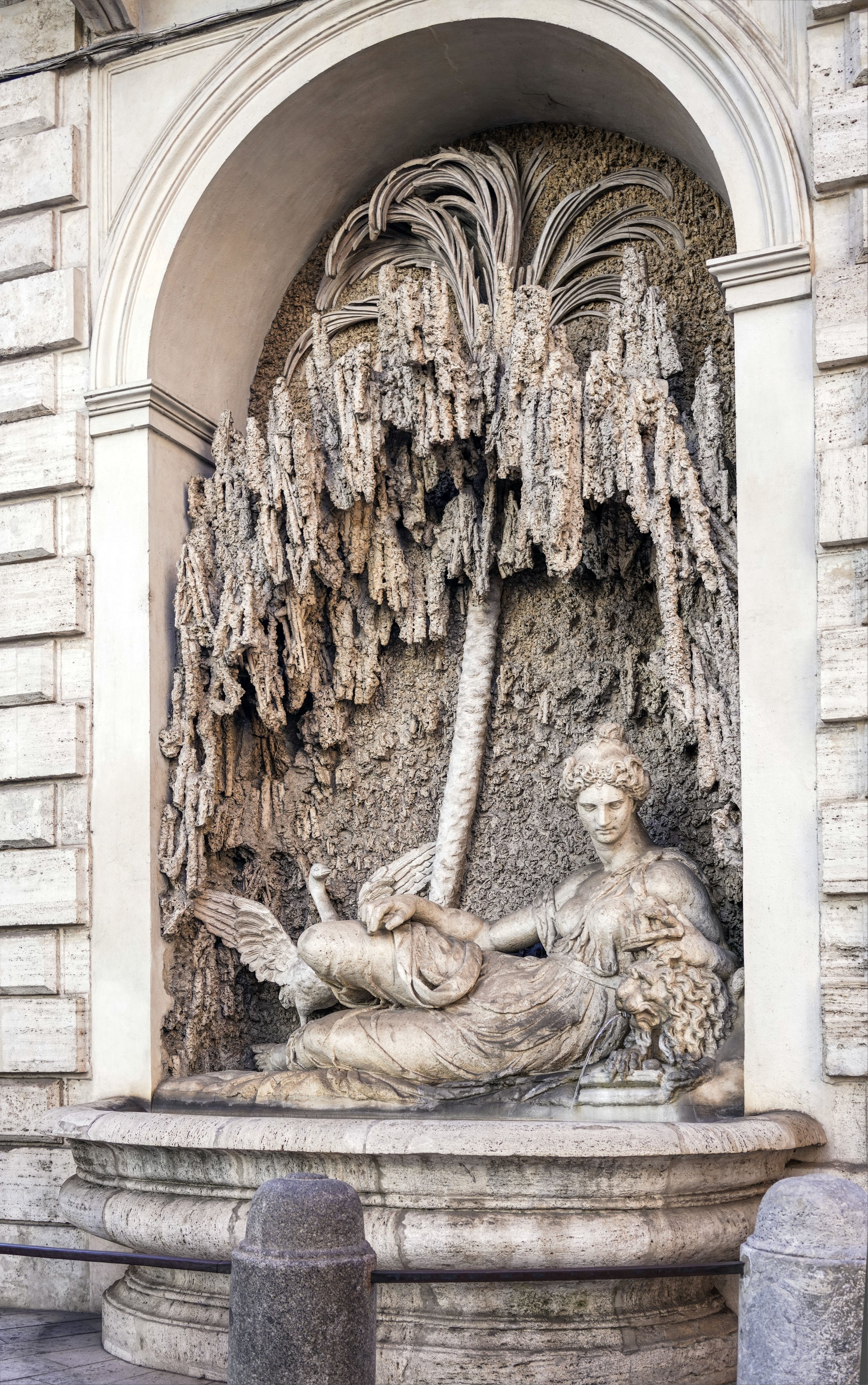
Sixtus V during his pontificate (1585-1590) created an aqueduct to improve the water supply in some areas of the city of Rome. The pope also wanted to give the city a network of public sources, some such as the Piazza dei Monti and Piazza d’Arcoeli, were built by the Vatican itself, while others, e.g., the Quattro Fontane, were built by private initiative in exchange for the supply of water for their properties.
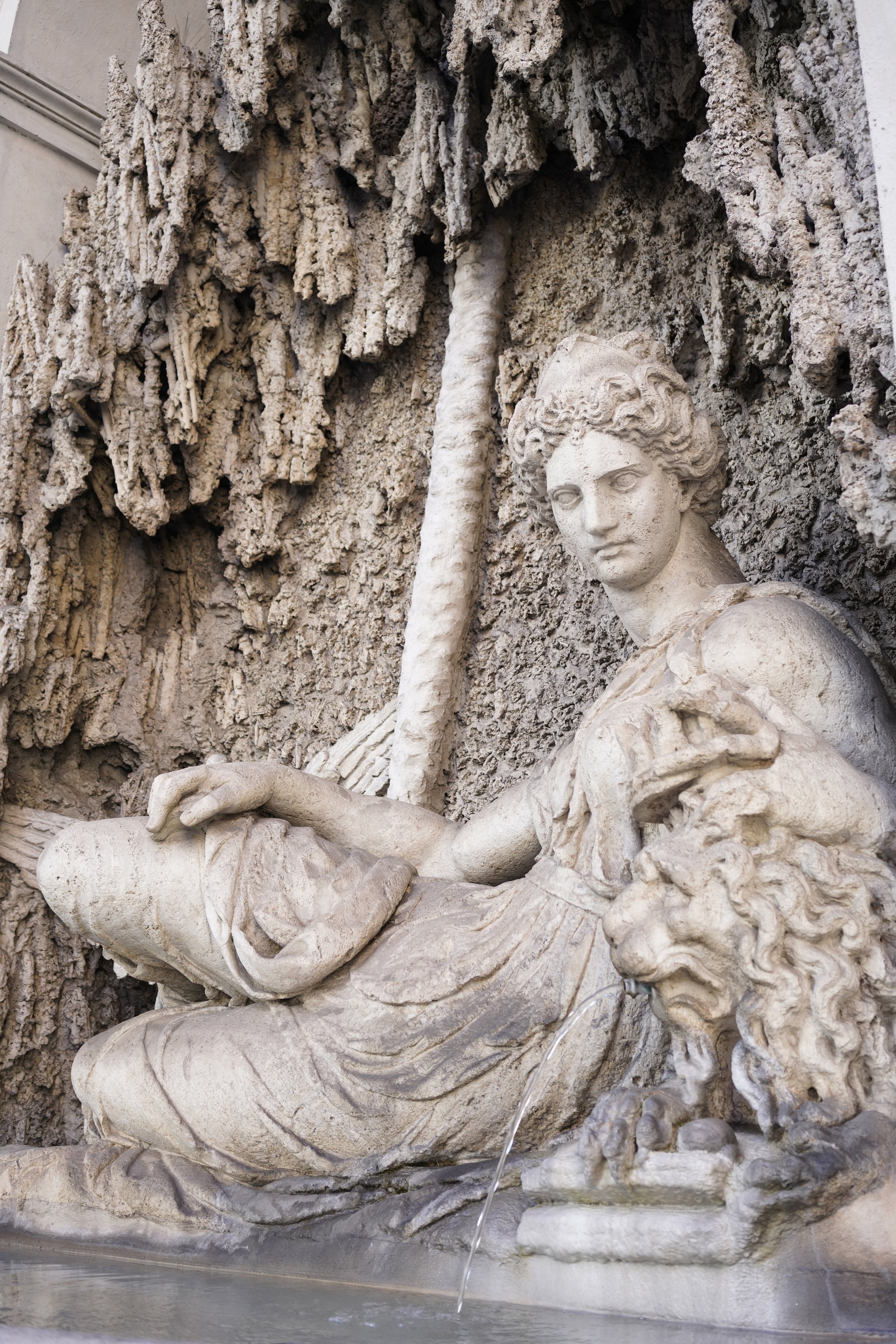
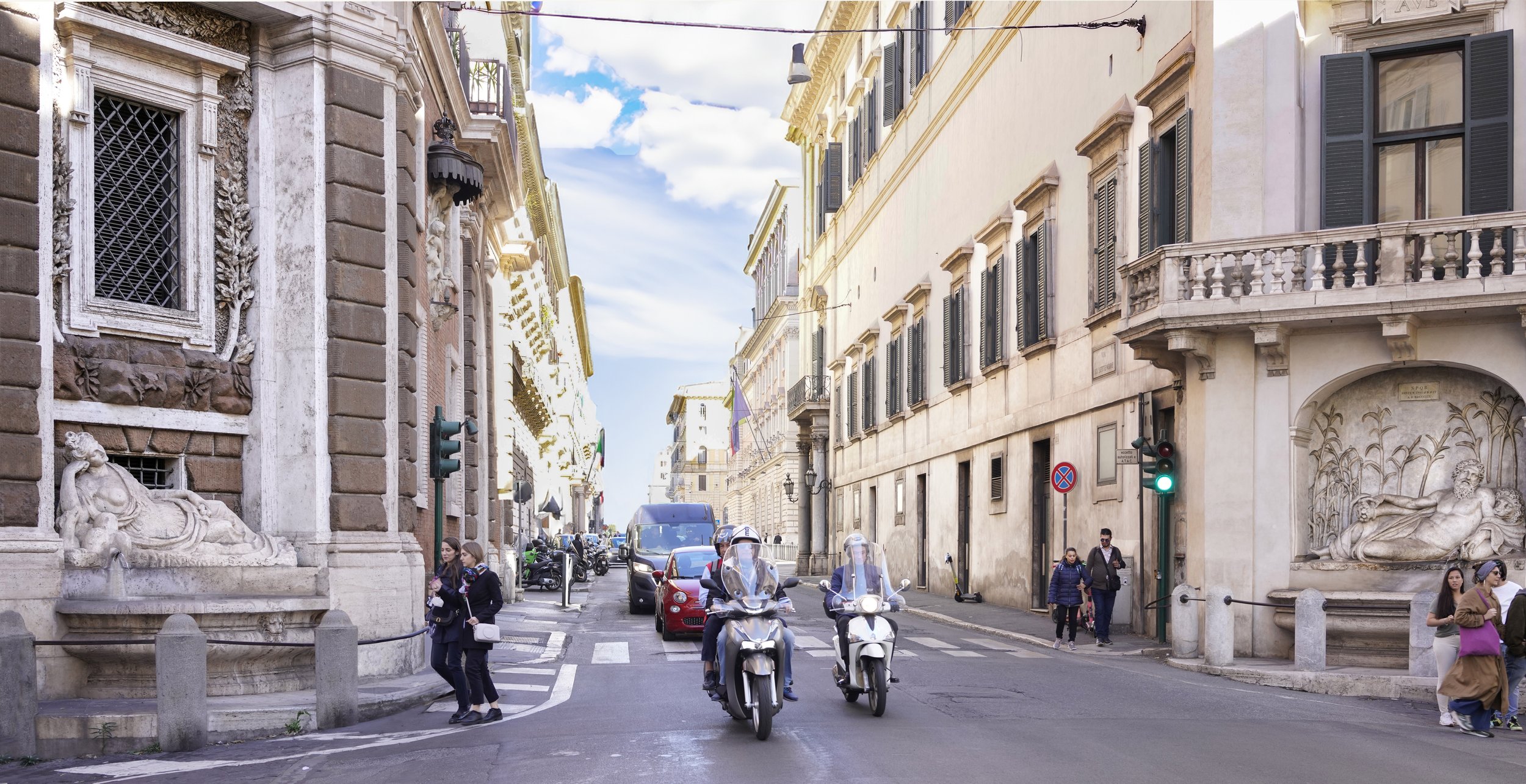
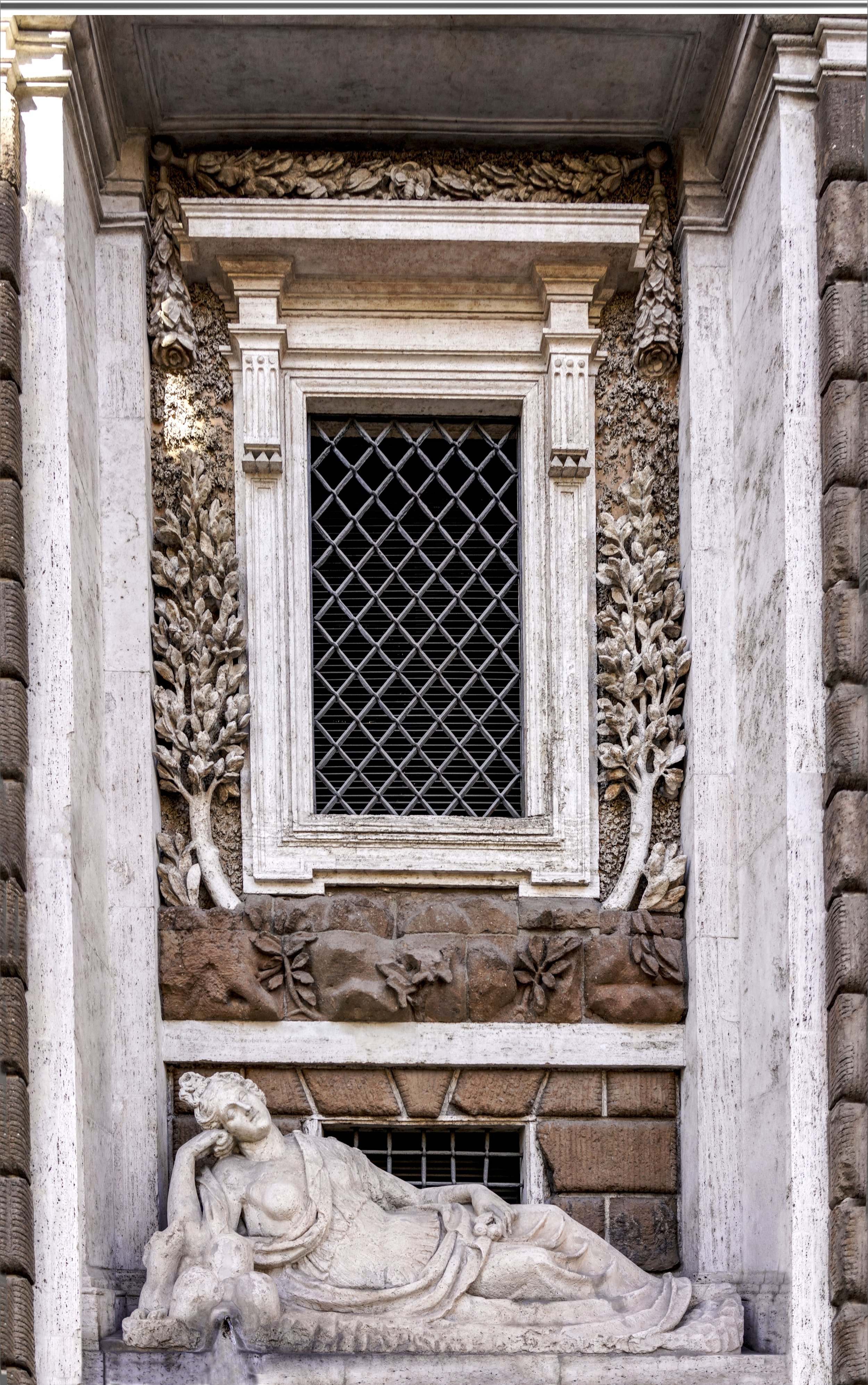
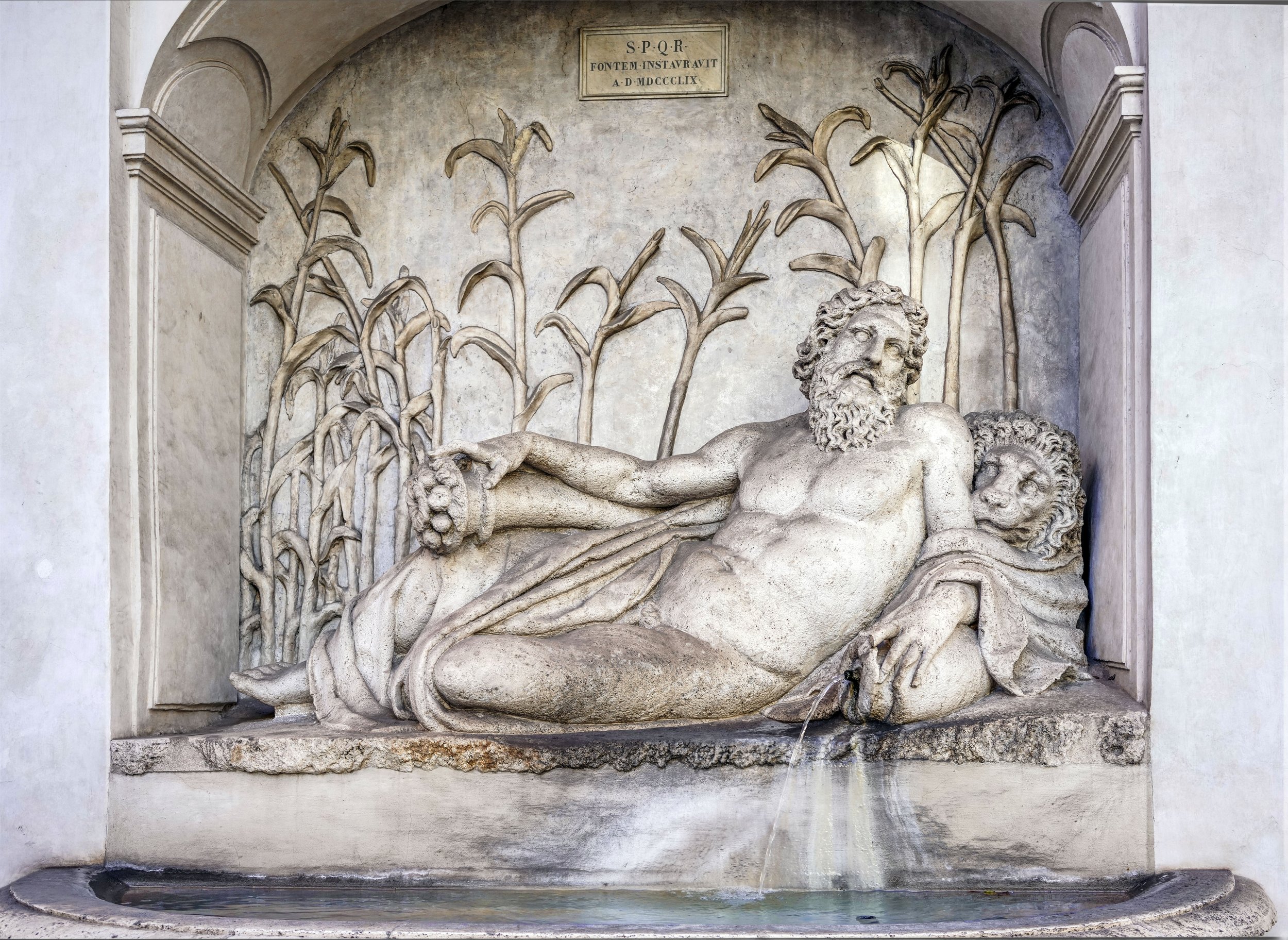


Francesco Borromini, by name of Francesco Castelli, who designed the Church of San Carlo alle Quattro Fontane, was among the key formulators of the Baroque style. The work of Francesco includes: the monastery church of San Carlo Alle Quattro Fontane (shown here) and the church of St Ivo the Wise.

San Carlo alle Quattro Fontane is an example of why Borromini’s work is considered the embodiment of the extravagant and dramatic style of Baroque architecture - his unconventional approach to building design is evident in his complex spatial compositions, featuring the use of ovals and triangles to suggest movement where surfaces were obviously static.

The Trinitarians, formally known as the Order of the Most Holy Trinity and of the Captives (Latin: Ordo Sanctissimae Trinitatis et Captivorum; abbreviated OSsT), is a mendicant order of the Catholic Church for men founded by St John of Maltha in Cerfroid, outside Paris, in the late 12th century. The founding-intention for the order was the ransom of Christians held captive by Muslims, a consequence of crusading and of piracy along the Mediterranean coast of Europe.

Charles Borromeo (1538 – 1584) was the Archbishop of Milan from 1564 to 1584 and a cardinal of the Catholic Church. His mother Margaret was a member of the Milan branch of the House of Medici; his uncle, Pope Paul IV, made him a Cardinal. Carlos was a leading figure of the Counter-Reformation combat against the Protestant Reformation. In that role he was responsible for significant reforms in the Catholic Church, including the founding of seminaries for the education of priests. Below the statue of St Carlos is the emblem of the Vatican.

Felix of Valois, OSST was a co-founder (with John of Matha) of the Trinitarian Order. Between the 8th and the 15th centuries medieval Europe was in a state of intermittent warfare between the Christian kingdoms of southern Europe and the Muslim polities of North Africa, Southern France, Sicily and portions of Spain. As the threat of capture was a continuous threat to Christian coastal provinces, the redemption of captives was listed among the corporal works of mercy.

The emblem of the Trinitarians takes the form of a Greek cross which is set against a white background. The vertical bar of the cross is red, while the horizontal bar is blue. The three colours symbolise God the Father (white), God the Son (blue) and God the Holy Spirit (red).
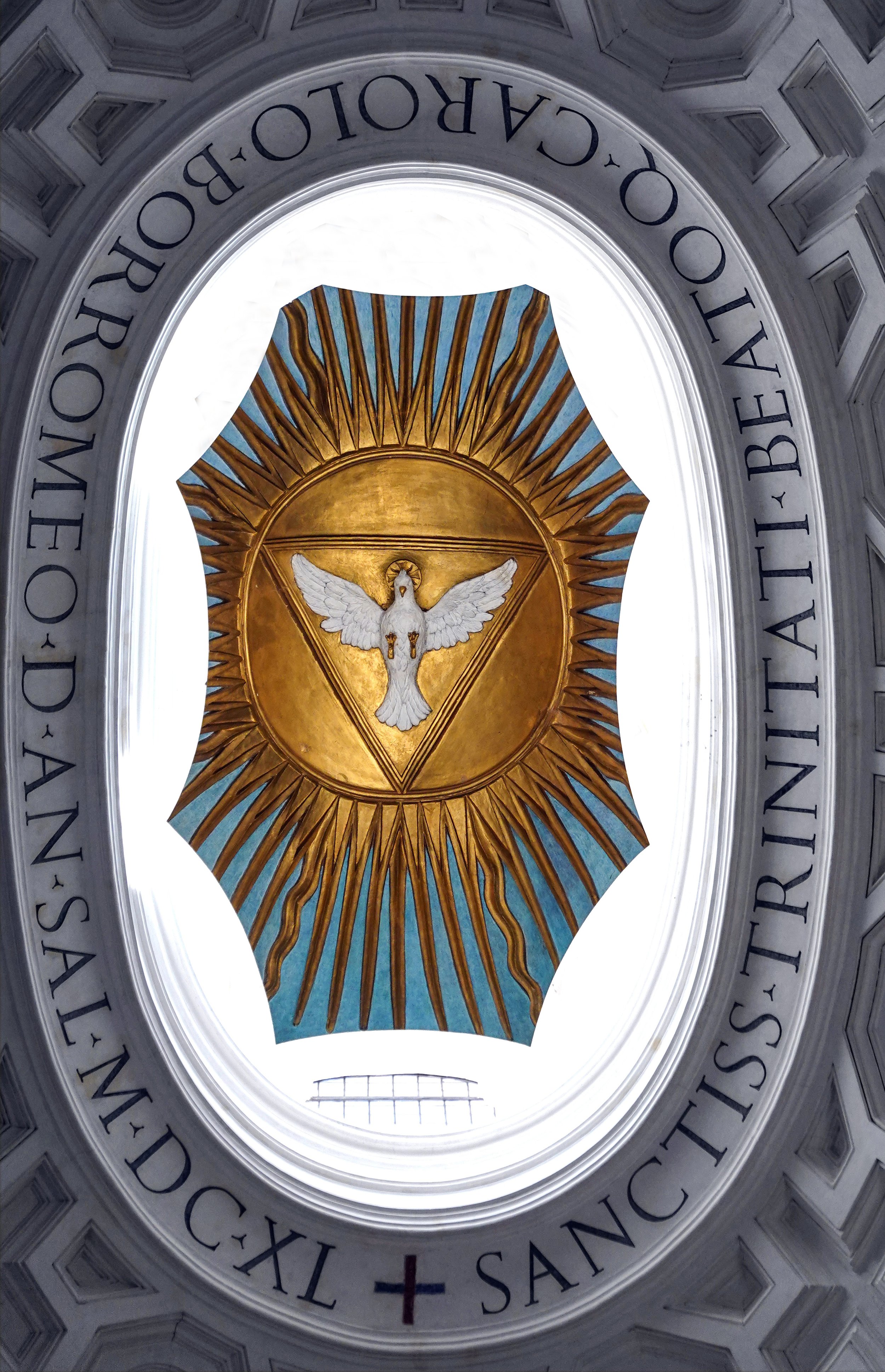
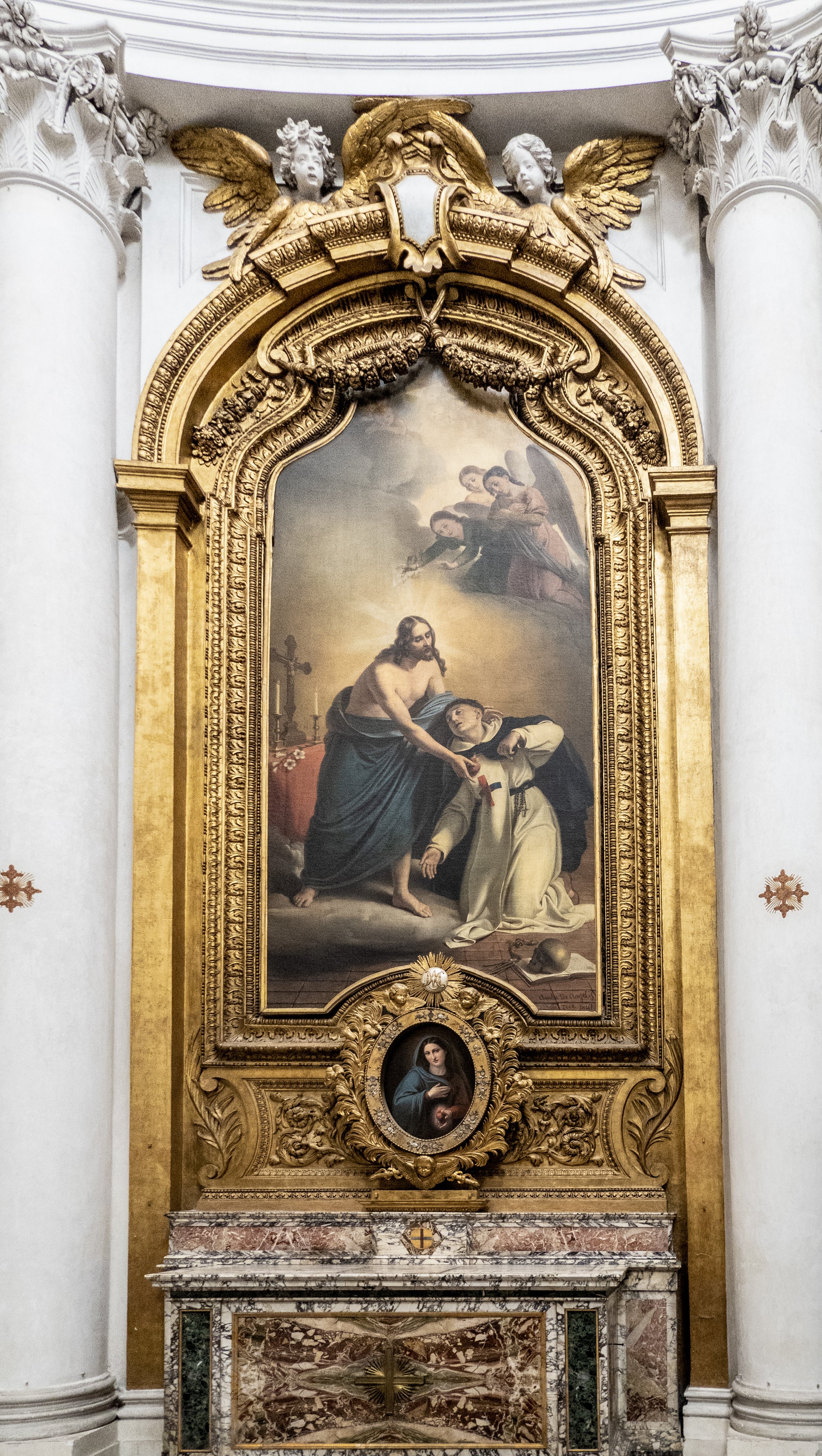
Michael de Sanctis, sometimes called Michael of the Saints, was a Discalced Trinitarian born in Vic, a city of Catalonia, Spain. St. Michael de Sanctis is known as the patron saint of those struggling with temptation, mental illness, and mental disorders. Above Michael is depicted wearing a the green and red Greek Orthodox cross. By 4th century AD, this cross was commonly used throughout Greece and the Byzantine Empire.
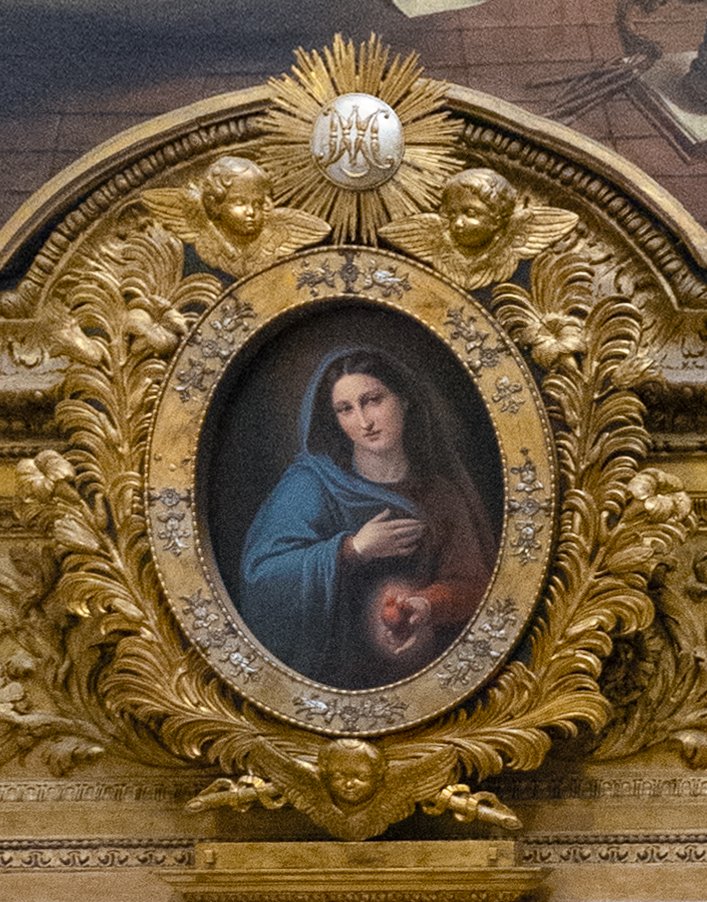
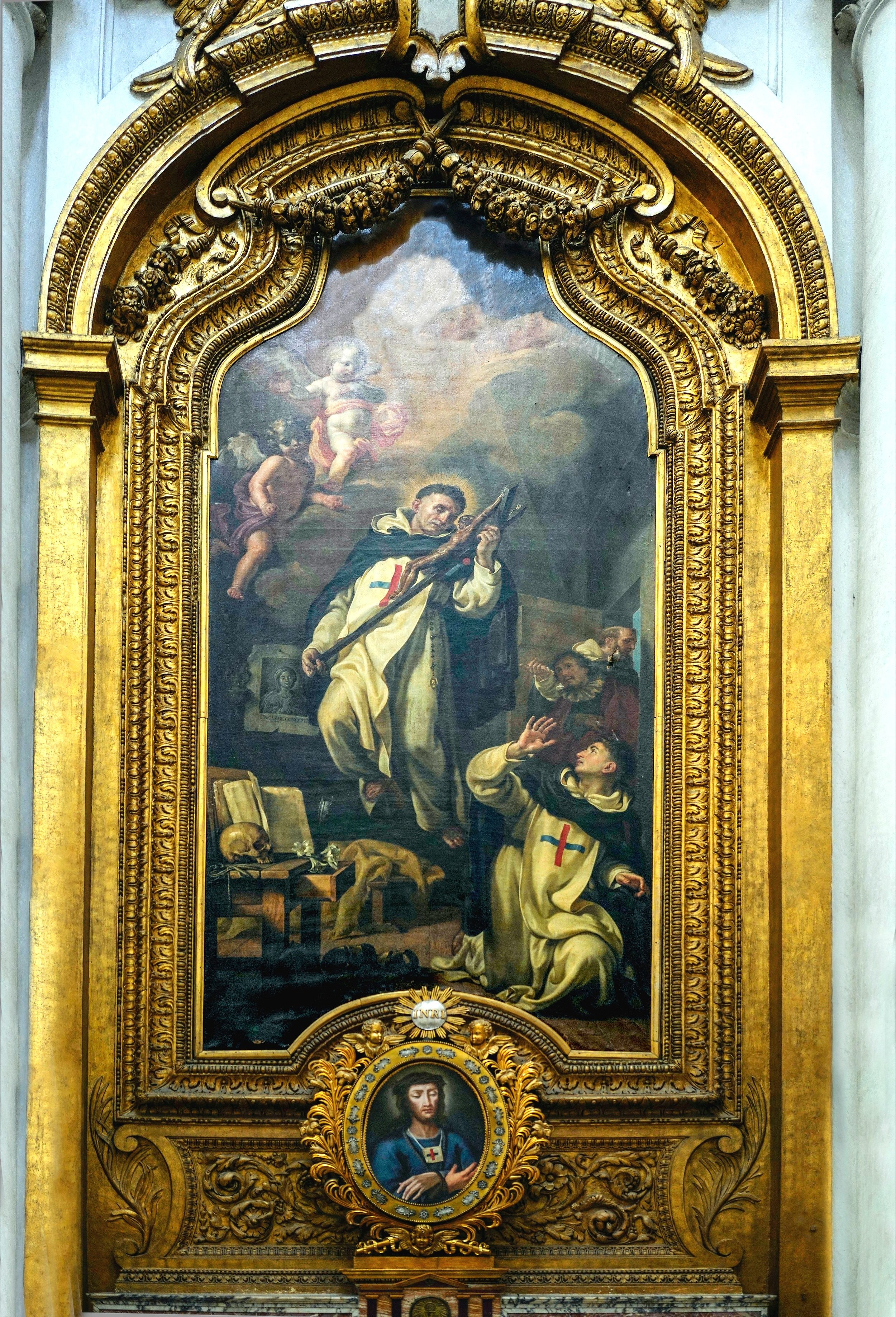
The Trinitarian order, promoter of the Church of San Carlo, originated in 1198. Its main objective was to rescue the Christians who had fallen into the hands of Muslims. Following the reorganization of the order in the sixteenth century, it was divided into two branches, Spanish and French. The two Trinitarians in the painting and Christ with a crown of thorns in the small tondo underneath are depicted wearing the green and red Greek Orthodox cross.
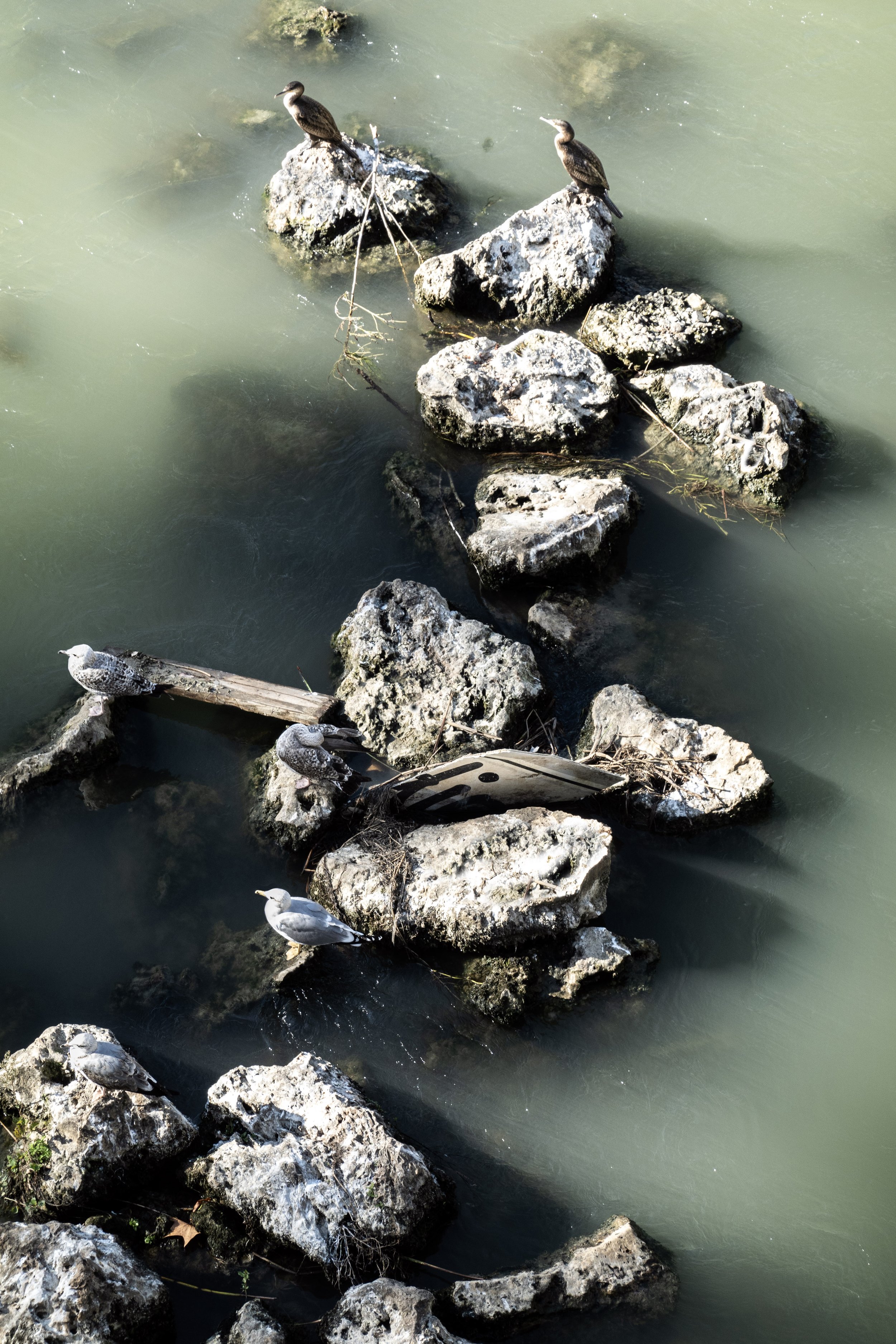
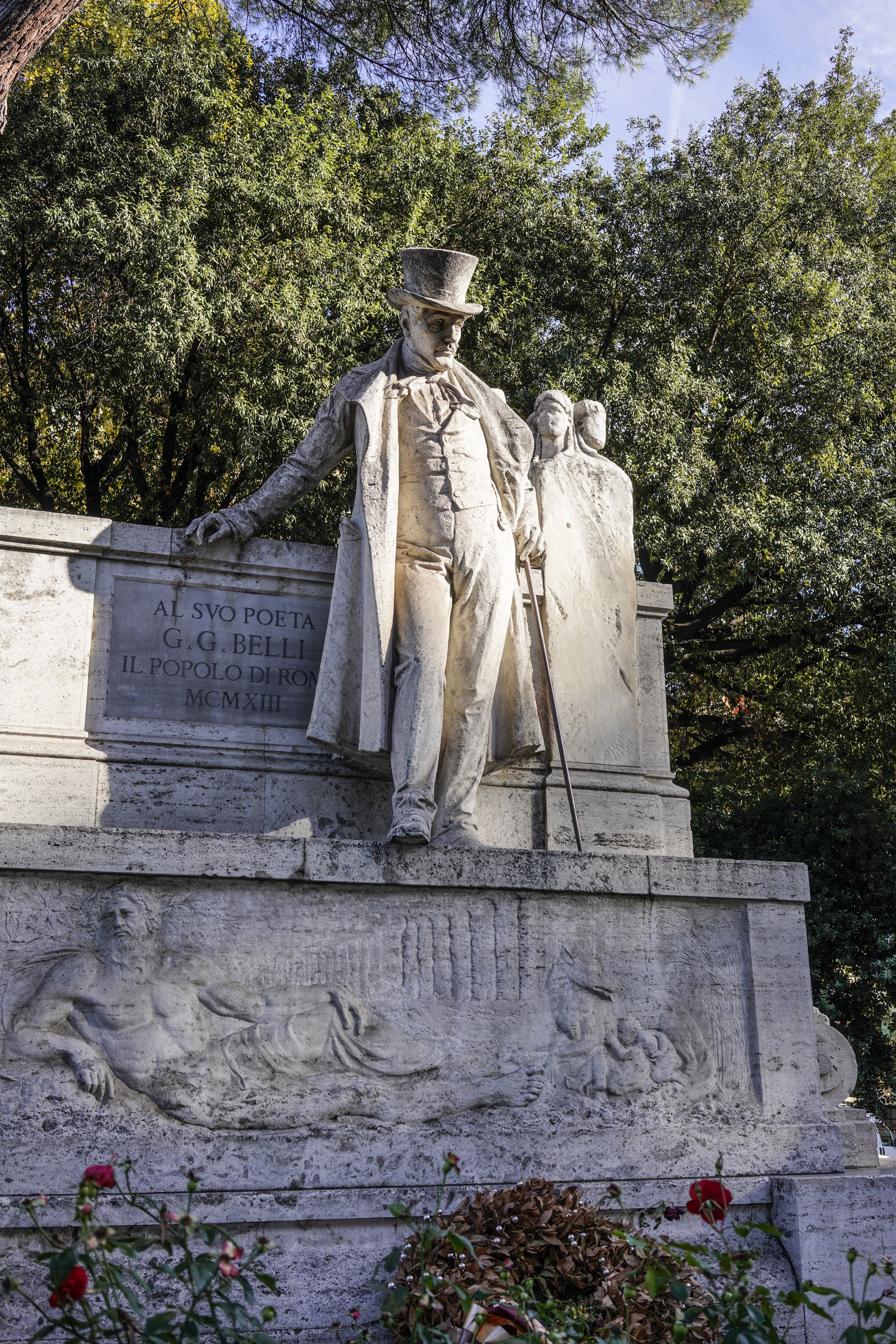
Belli’s originality lies in his sonnets, which express his revolt against literary tradition, the academic mentality, and the social injustices of the papal system. The 19th-century poet wrote mainly in Romanesco, the Roman dialect. On the monument, below Belli, is a low square plinth, with a relief with symbols of Rome: an allegorical figure of the river Tiber lying and the Capitoline Wolf, a she-wolf suckling the mythical twin founders of Rome, Romulus and Remus.
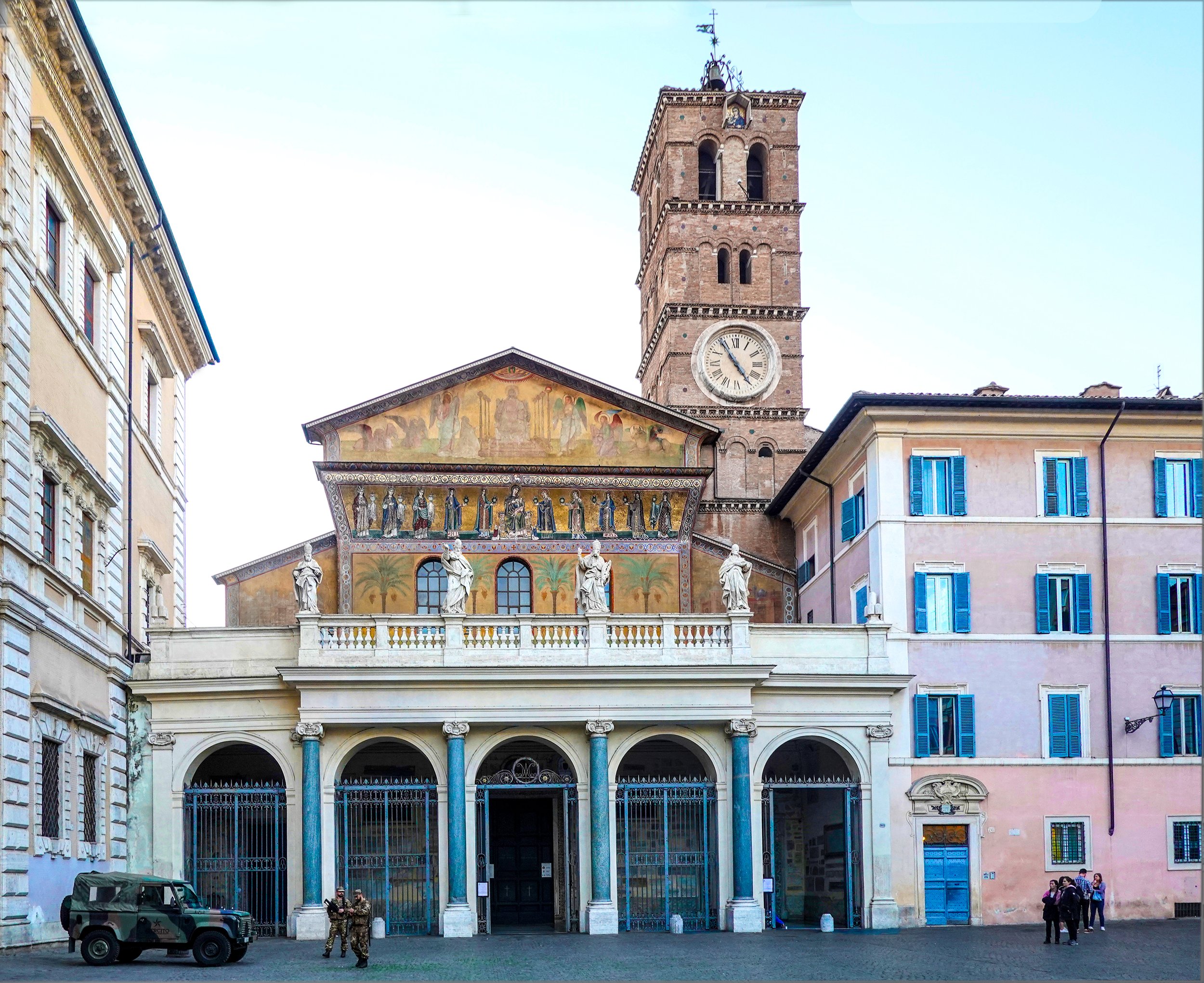
Basilica of Santa Maria in Trastevere is one of the oldest churches of Rome. The basic floor plan and wall structure of the church date back to the 340s, and much of the structure to 1140–43. The first sanctuary was built in 221 and 227 by Pope Callixtus I and later completed by Pope Julius I. The façade of the church was restored in 1702 by Carlo Fontana. It is surmounted by a balustrade decorated with the statues of four popes
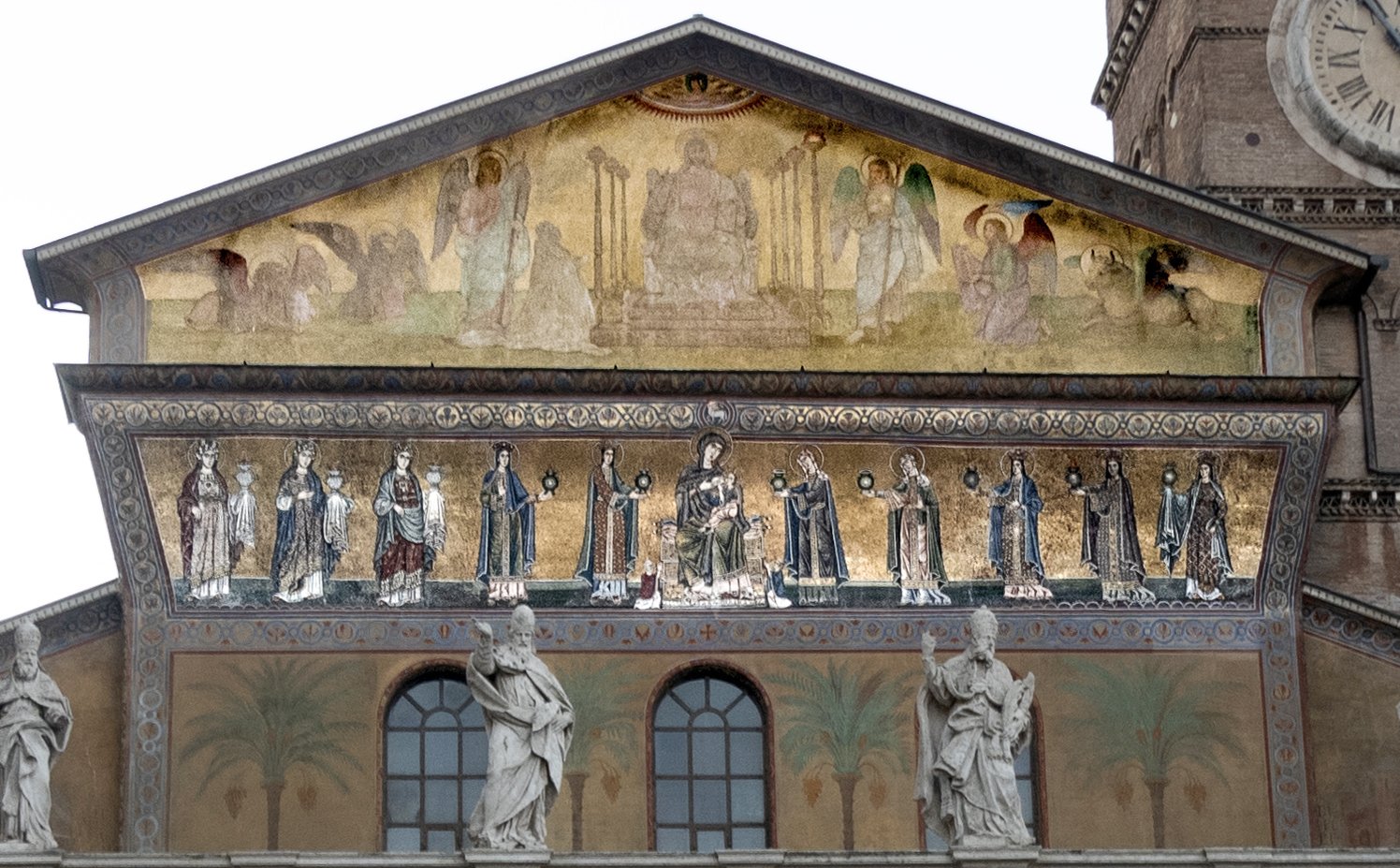
The mosaic depicts the Madonna enthroned and suckling the Child, flanked by 10 women holding lamps. This image on the façade showing Mary nursing Jesus is an early example of a popular late-medieval and renaissance type of image of the Virgin.

The present nave preserves its original (pre-12th c.) basilica plan and stands on the earlier foundations. In the apse basin and in the apsidal arch, in addition to the mosaics with stories of the Virgin by Pietro Cavallini (1291), are the mosaics made around 1140 after the death of Pope Innocent II, represented there with the model of the church.
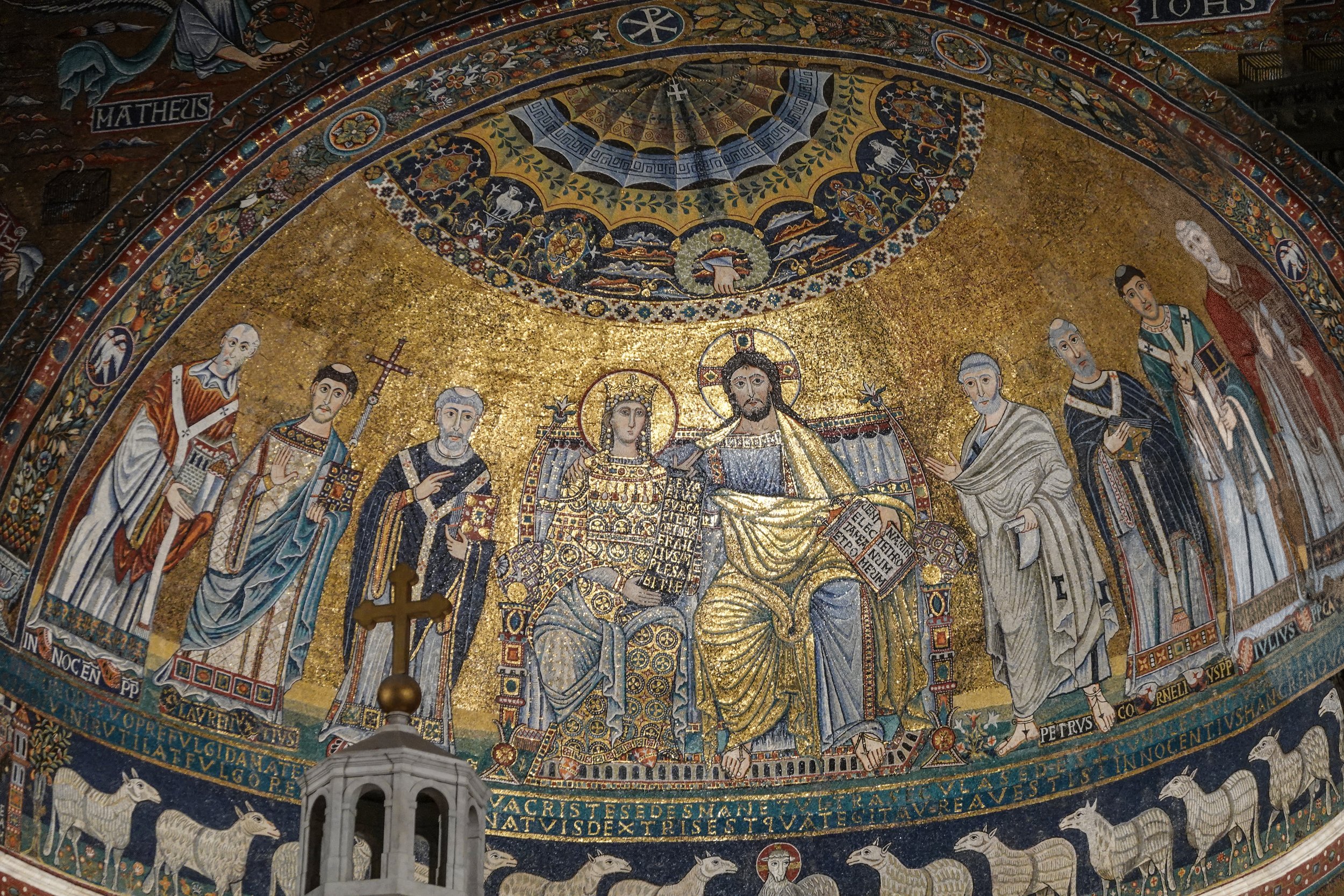
Six saints have gathered around the throne along with the donor. At the right side Peter is followed by the popes Cornelius, Julius I, and Calepodius. At the left Pope Calixtus stands next to Mary followed by St Lawrence. At the far left Pope Innocent II appears as the donor, holding a model of the church. At the bottom appears a frieze of lambs, with the Lamb of God in the centre.
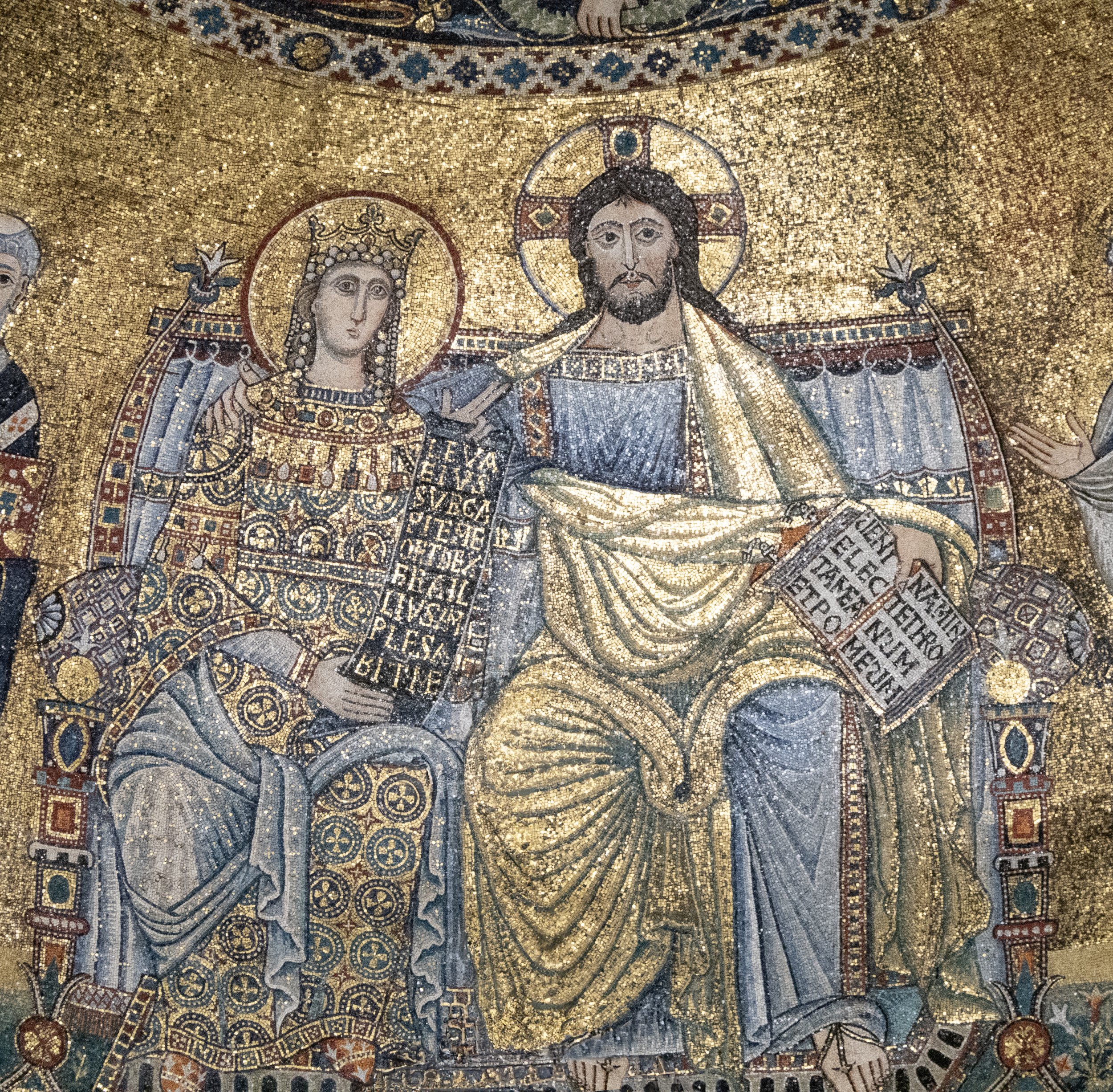
The centre of the apse composition in Santa Maria in Trastevere features a subject previously unknown in Roman monumental art. Here, for the first time, Mary is pictured seated next to Christ on a richly ornamented heavenly throne. Both are dressed in precious garments and Mary is further adorned with a gold crown. Christ’s right hand is on Mary's shoulder, and with his left presents an open book inscribed with a portion of the liturgy for the feast of Assumption.
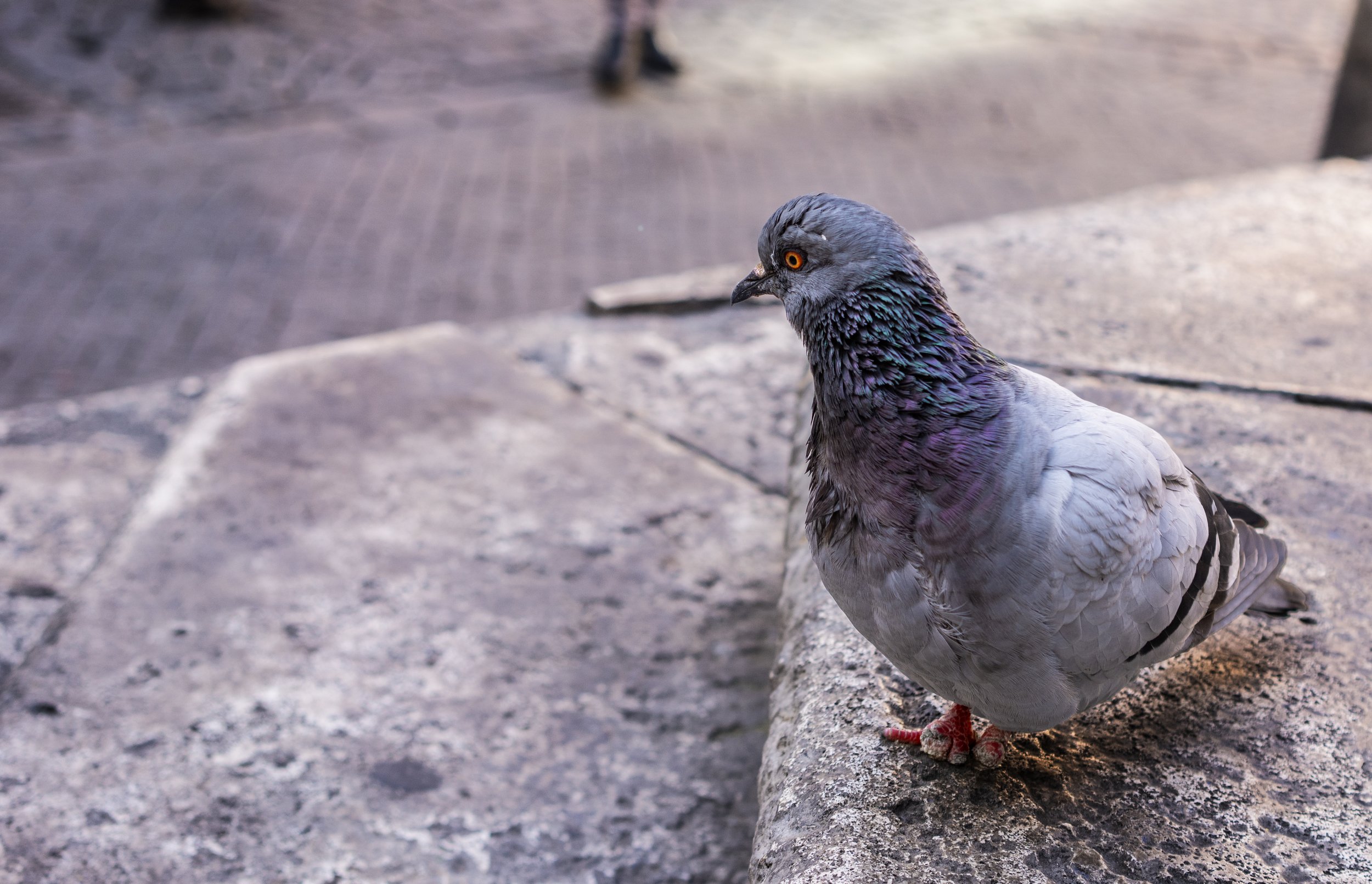
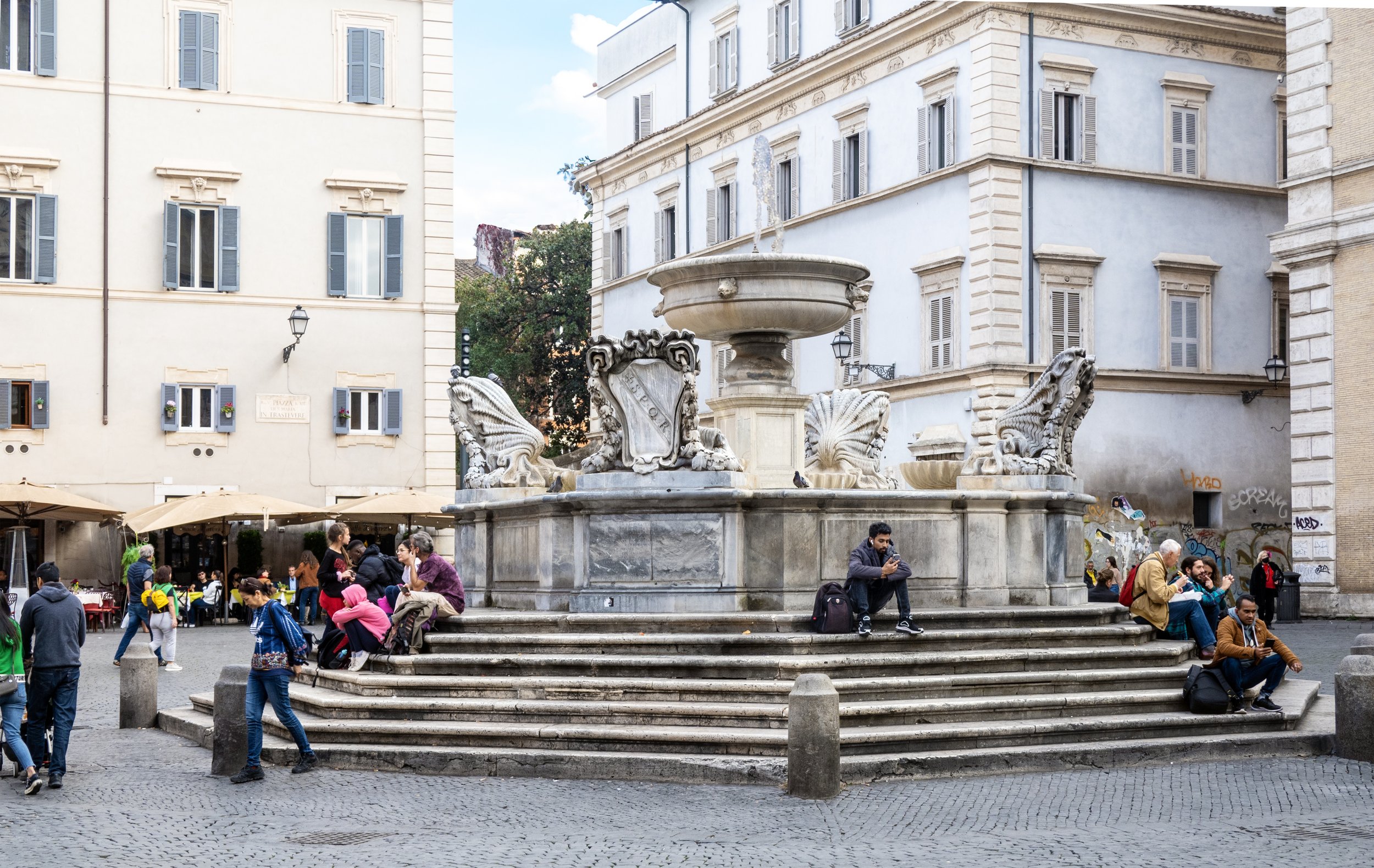
The Fountain in Piazza Santa Maria in Trastevere is believed to be the oldest fountain in Rome, dating back to the 8th century. The present fountain is the work of Donato Bramante, with later additions by Gian Lorenzo Bernini and Carlo Fontana. The S.P.Q.R. sign is an abbreviation for Senatus Populusque Romanus (“The Senate and People of Rome"), referring to the government of the Roman Republic.
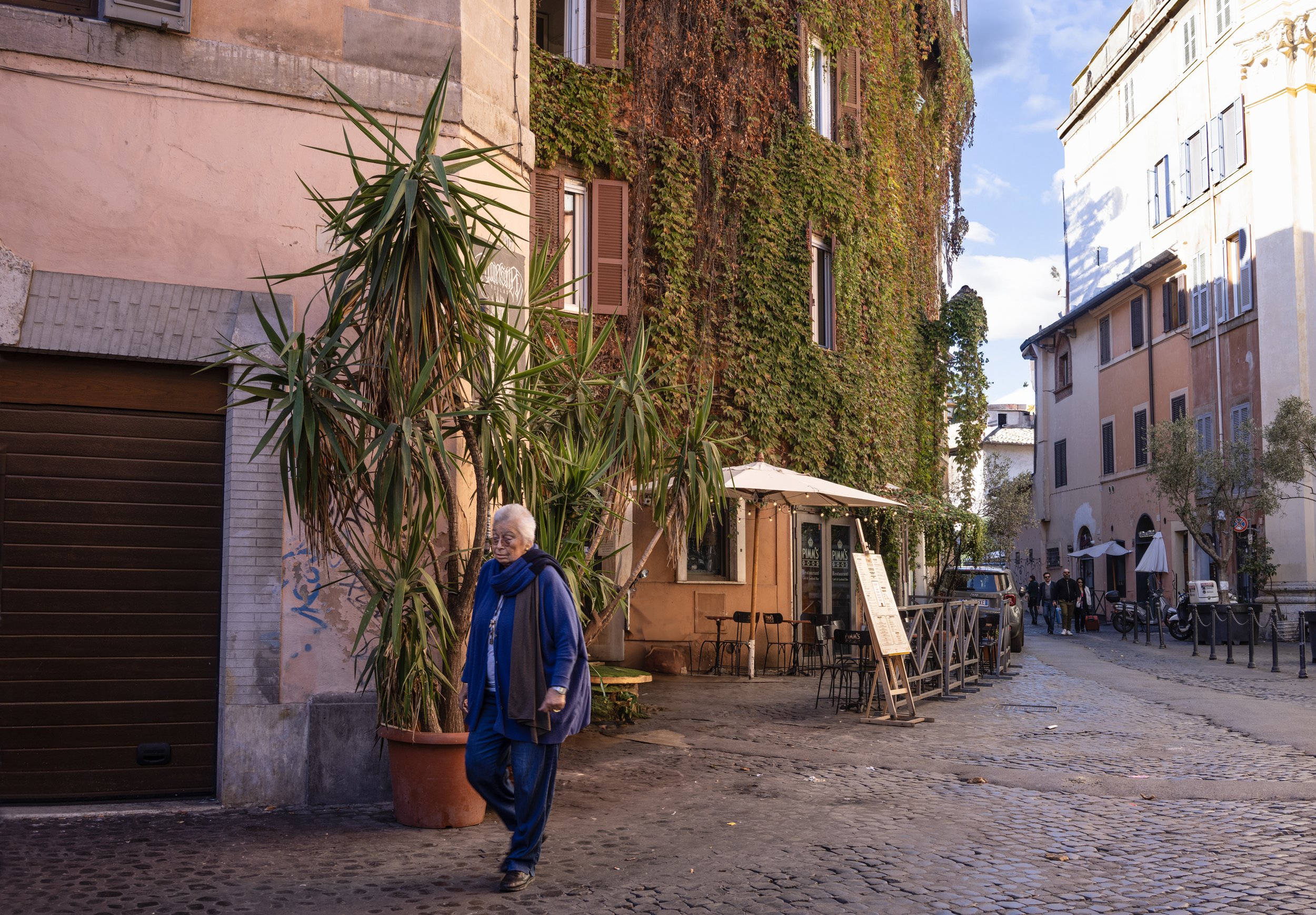

The church of San Luigi dei Francesi is the national church in Rome of France. It is most famous for its Contarelli Chapel, which contains a cycle of 3 paintings by the Baroque master Caravaggio in 1599–1600 about the life of St. Matthew: The Calling of St Matthew, The Inspiration of Saint Matthew, and The Martyrdom of Saint Matthew .
